THE LEGENDS

Issue 5 2023 THE AMERICAS ISSUE
LEARNING FROM
Bechtel’s Stephen “Spo” Spoljaric on His Two-Decade Career in Project Logistics

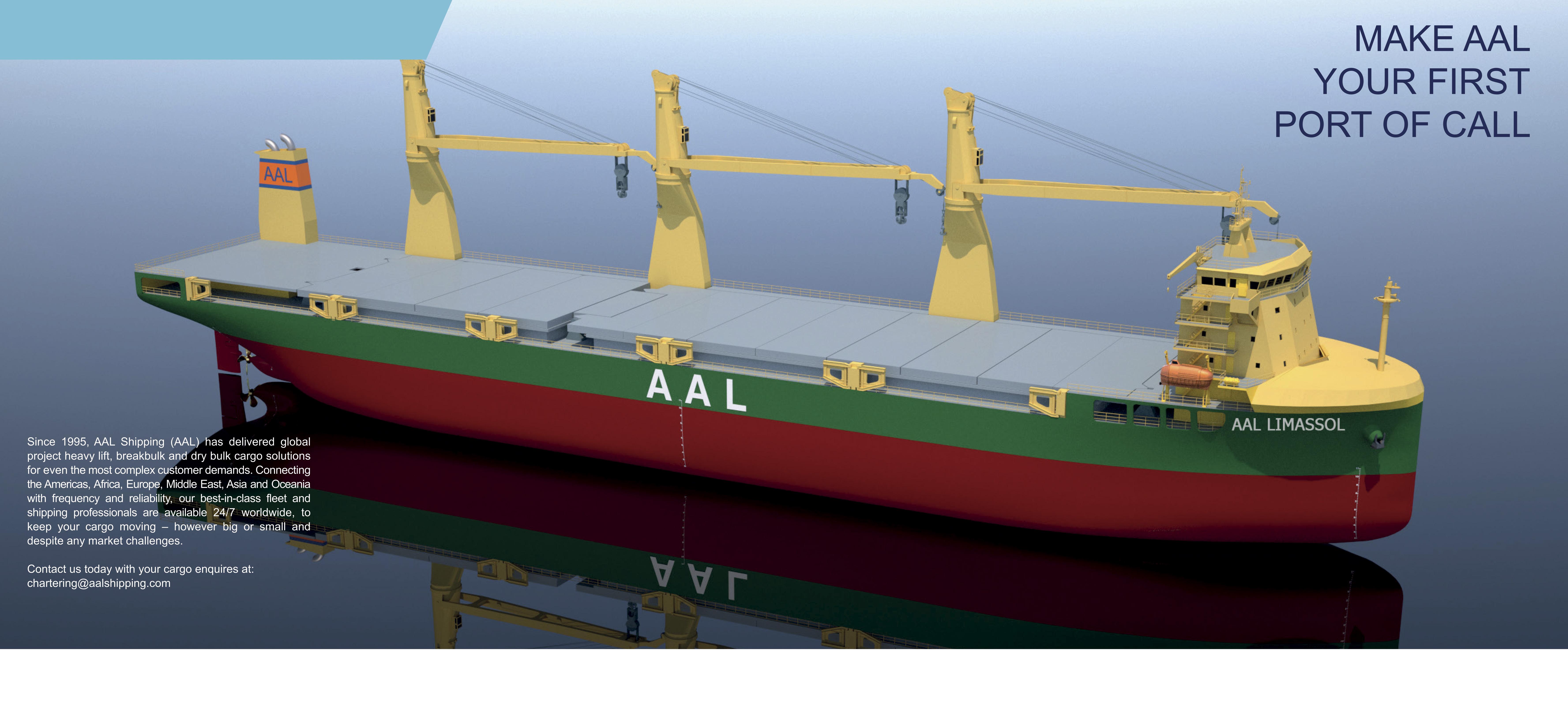
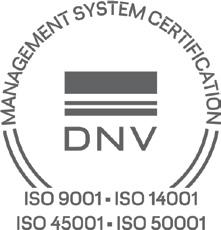
Cover Story
Learning From the Legends
Bechtel’s Stephen “Spo” Spoljaric on His Two-Decade Career in Project Logistics
Mark Your Calendars for Upcoming Breakbulk Events
Breakbulk Americas
26-28 September 2023
George R. Brown Convention Center, USA
Breakbulk Middle East
12-13 February 2024
Dubai World Trade Centre, UAE
Breakbulk Europe

21-23 May 2024
Rotterdam Ahoy, Netherlands
Breakbulk Americas 2024
15-17 October 2024
George R. Brown Convention Center, USA
40
32 Americas Heavy Mettle in the USA Breakbulk Cargo Holds Considerable Potential for Mid-size U.S. Ports
36 Americas Caribbean Project Market Heats Up But Guyana Continues to Lure Lion’s Share of Investment
40 Americas Keeping Up With the Jones’ Jones Act Challenges to US Offshore Wind Development
44 Profile “Grand Plans” for Americas Roll Group USA’s Edward Talbot Extols the Allure of Projects
48 Americas Problems and Pitfalls of Incoterms Need for Training on Trade Terms Evident
50 Thought Leader All-electric Haulage Realities Decarbonization Challenges and Opportunities in the Trucking Industry

52 Americas Climate War on Waterways Movement of Heavy-lift Cargo Could Be Curtailed
57 Thought Leader Rise and Rise of US Gas Navigating Opportunities in a Rapidly Evolving Landscape
59 Americas Latin America’s Natural Gas Challenge Region Needs More Development to Offset Production Declines
63 Global Powering Up Port Calls MPVs Ready to Take the Next Electric Step
68 Global Green Corridors, MPV Opportunities Green Corridors Provide Breakbulk Shipping a Route to Decarbonization
73 Thought Leader Dichotomies of the Multipurpose Fleet No Fleet Renewal in Sight Despite Solid Earnings
4 Breakbulk Magazine Issue 5 2023 breakbulk.com Inside this Issue
28
Credit: Schulte & Bruns
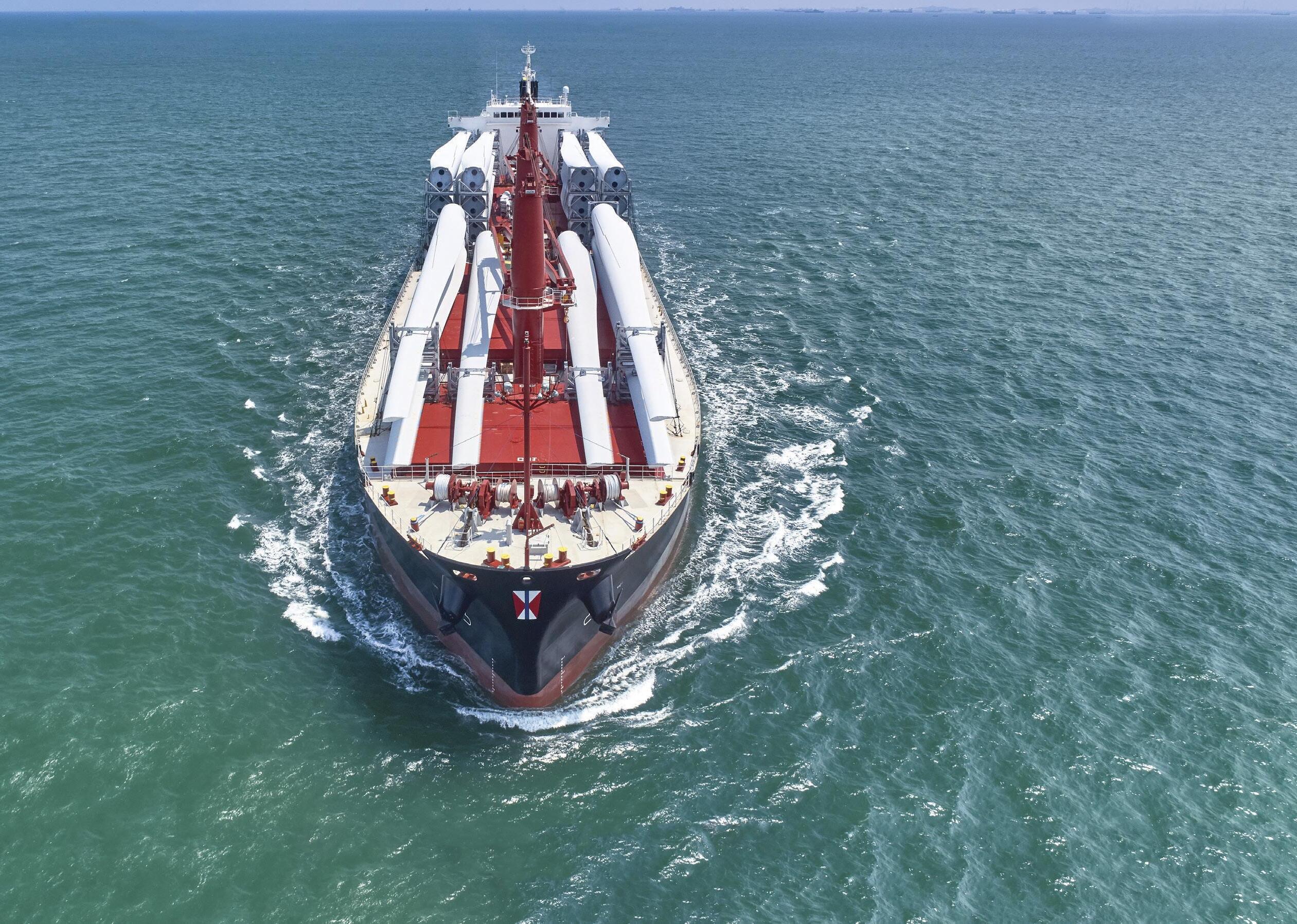
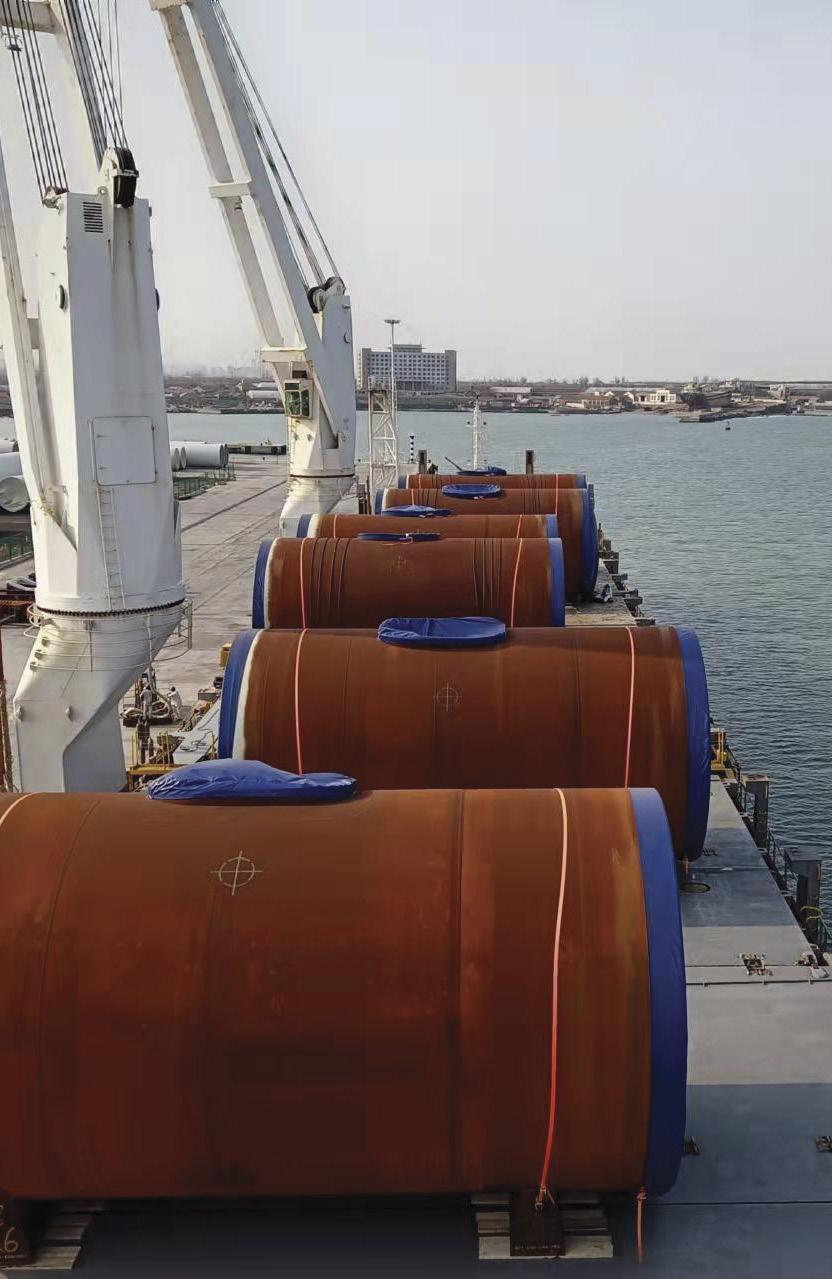

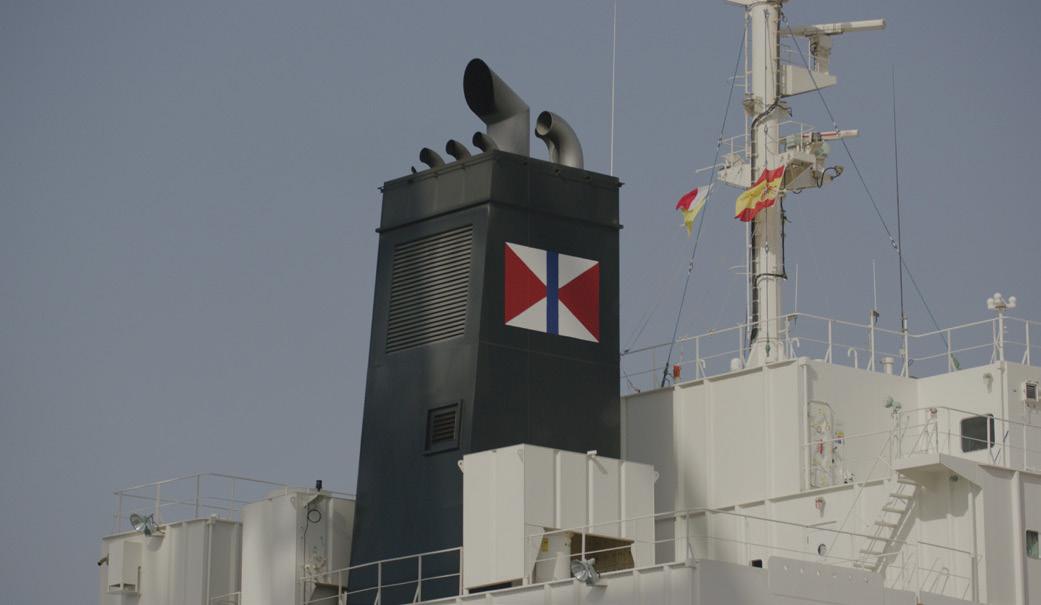

www.swireprojects.com chartering@swireprojects.com A division of Swire Shipping, a private and wholly owned company of John Swire & Sons. MOVING THE FUTURE Efficient, trusted and flexible shipping solutions for global industrial projects.
76 Global Calling on the Cargo Connectors Forwarders Back in Favor After Pandemic Blip
80 Global Clampdown on Corruption Project Cargo Not Immune to Bribery, Exploitation
84 Middle East & Africa Mozambique Returns to World Stage Resilient Investment Powerhouse Worth Over $100 billion
88 Middle East Gas Takes Gold in Qatar LNG Expansion to Provide Steady Flow of Work
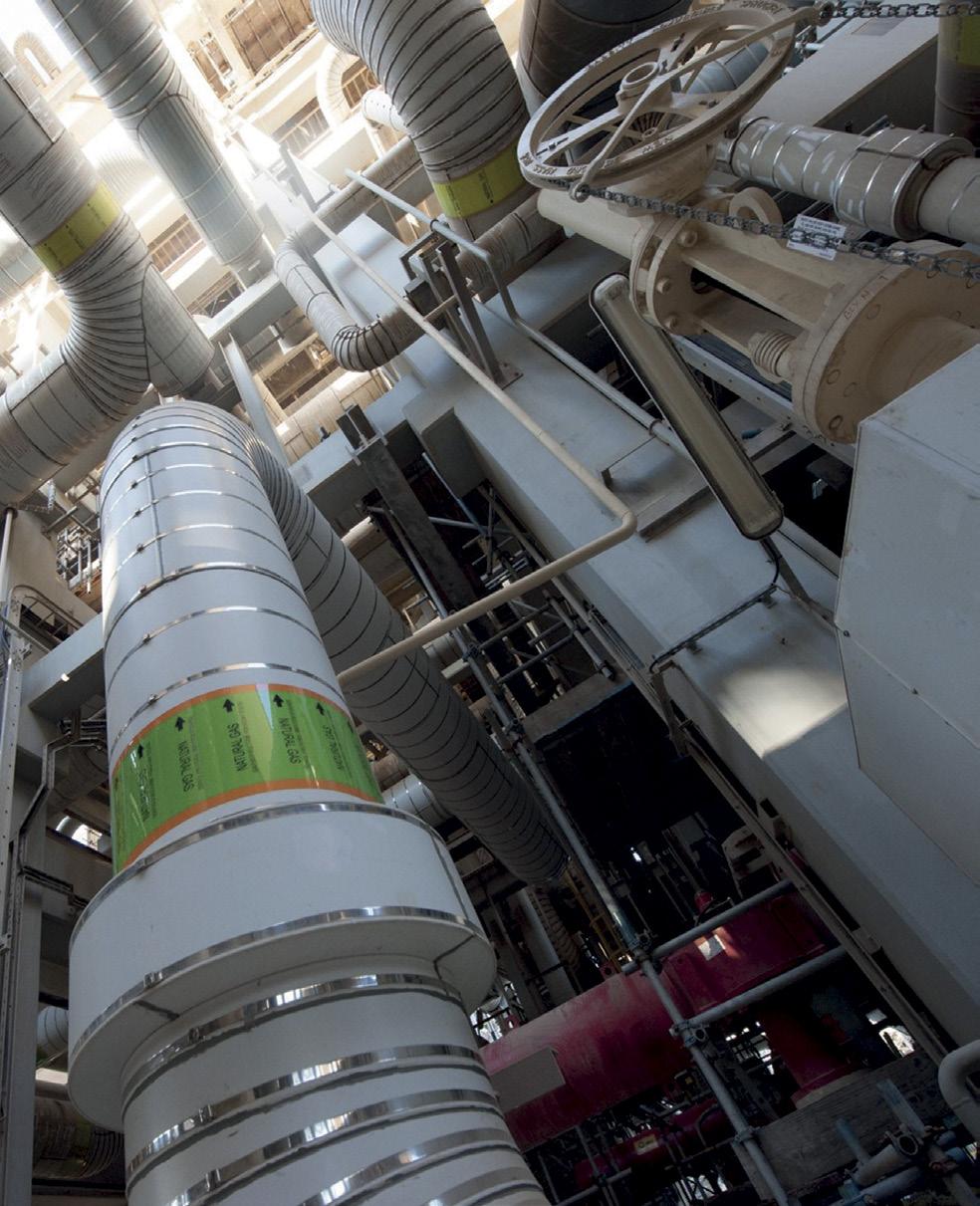
91 Europe Navigating the Project Logistics Landscape
GEODIS’ Luke Mace Talks Talent and Sustainability
92 Europe Throwback: When Basic Logistics Discovered Brilliance
The Da Vinci Crane Case Study
94 Europe
“A Multitude of Opportunities Ahead” Daan Koornneef, CEO of Jumbo Maritime, on the Future for Jumbo and the Heavy-Lift Sector
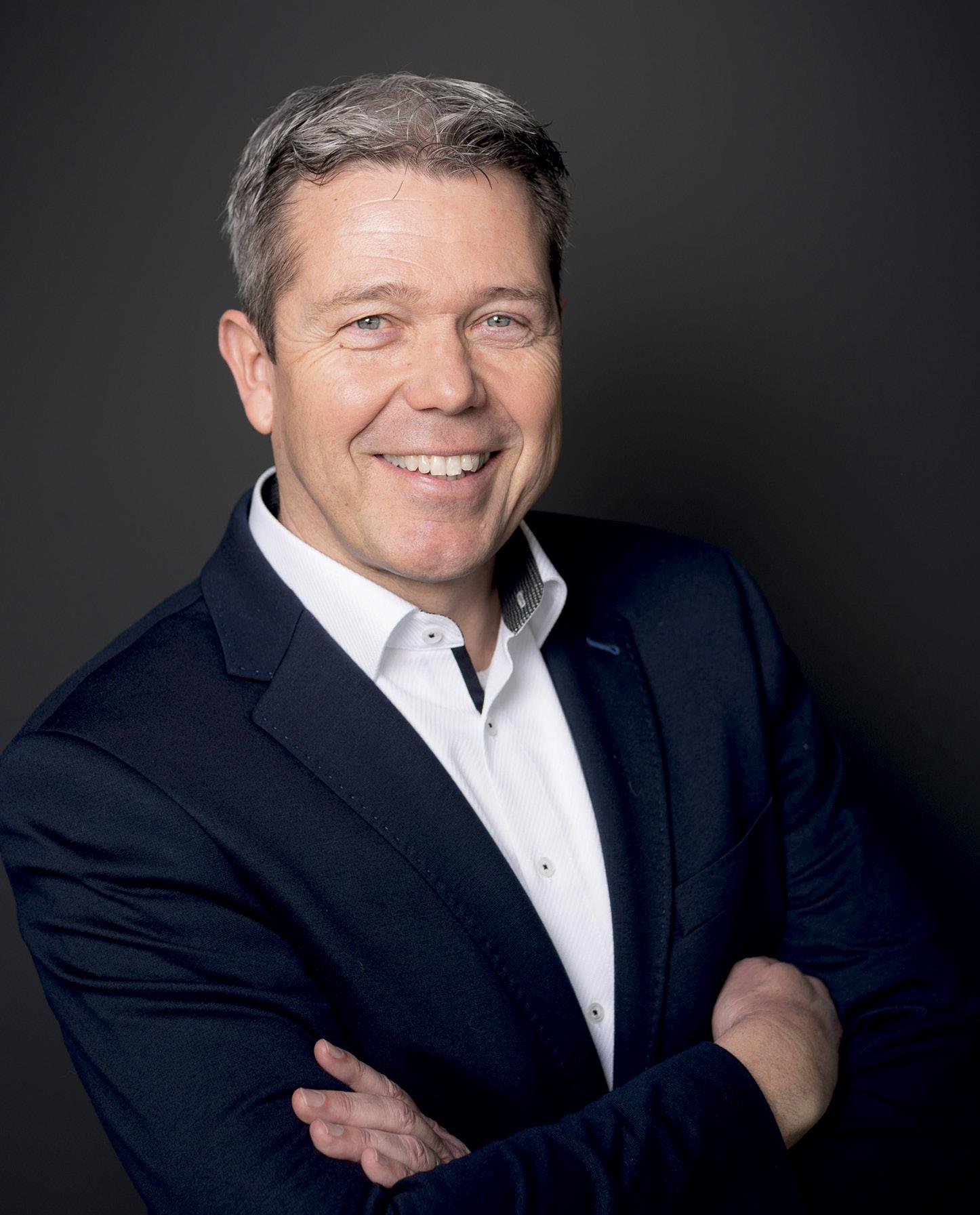
97 Europe Path to Sustainable Project Logistics
Insights from deugro Leaders on Balanced Sustainability
6 Breakbulk Magazine Issue 5 2023 breakbulk.com Inside this Issue
Also in this Issue 07 Foreword 11 UpFront 99 Best of BreakbulkONE 102 Projects in This Issue 88 94 Credit: Qatar Gas
DECARBONIZATION - AN ENDURING TOPIC
This year will mark the 34th anniversary of Breakbulk Americas, where Breakbulk Events and Media began. And this issue –focused on the Americas – is especially eye-opening. Packed with project opportunities from the Americas region and in other parts of the world, it also offers insight into the impact of decarbonization across our entire industry that includes shaping the project mix that creates jobs for project cargo and breakbulk specialists.
As I was looking back through our 25th anniversary special, not quite a decade ago, it struck me that many of the topics we discuss here in the magazine and onstage at the events haven’t changed all that much. Industrial components keep getting bigger and require bigger equipment for transport, economic downturns both large and small impede project financing decisions, natural disasters strike, geopolitical events close markets, and the list goes on.
Yet, even with the occasional ‘black swan,’ the people of this industry persevere, innovate and move forward. And these are the stories we want to tell. We’ve highlighted the main challenge and solution in each story to convey the ‘lessons learned’ with the hope that the lessons can be applied to your own project challenges.
Inside the Americas section, you’ll find a rundown on a mix of project opportunities in the Caribbean and South America (both written
by our senior reporter Simon West who works in Colombia), as well as a proven growth strategy for midsized U.S. ports. In a similar vein, DHL’s Andy Tite challenges the notion of a forwarder as a middleman and lays out a blueprint for raising the role of project forwarder in “Calling on the Cargo Connectors.”
One thing we did not face a decade or so ago was decarbonization and its many facets. Decarbonization is not just about vessel fuels and emissions but touches every sector of logistics and transportation. To get an idea of the sweeping impact of these initiatives, read Carly Fields’ piece on shore power, “Powering up Port Calls,” Jeremy Bowden’s global look at “Green Corridors, MPV Opportunities,” Felicity Landon’s “Climate War on Waterways,” and a thought leader piece “All-Electric Haulage Realities” from Jeffrey Short of the American Transportation Research Institute (ATRI) who will continue the conversation on the main stage at Breakbulk Americas’ Journey Towards Decarbonization session.
The challenges to reach a zero-carbon future are many and each sector has its own set of variables. However, it is only through collaboration that this can be achieved – shippers, forwarders, carriers, barge operators, equipment manufacturers, heavy haulers, ports, as well as technology experts working together, sharing ideas and finding consensus. Think of this magazine as the vehicle for ideas and information, and the Breakbulk events as the places to come together and plan the route to the future.
Best,
Leslie Meredith Marketing and Editorial Director Breakbulk Events & Media

Marketing and Editorial Director
Leslie Meredith / +1 (801) 201-5971
Leslie.Meredith@breakbulk.com
News Editor
Carly Fields carly.fields@breakbulk.com
Senior Reporter
Simon West
simon.west@breakbulk.com
Designer Mark Clubb
Reporters
John Bensalhia
Jeremy Bowden
Felicity Landon
Iain MacIntyre
Liesl Venter
Breakbulk Editorial Advisory Board
John Amos, emeritus
Amos Logistics
Dennis Devlin
Maersk Project Logistics
Dharmendra Gangrade
Larsen & Toubro Limited
Margaret Kidd University of Houston
Anders Maul
Blue Water Shipping
Dennis Mottola, emeritus
Global Logistics Consultant
Sarah Schlüter
Hapag-Lloyd
Stephen “Spo” Spoljaric Bechtel Corporation
Roger Strevens Wallenius Wilhelmsen
Jake Swanson DHL Global Forwarding
Ulrich Ulrichs
BBC Chartering
Johan-Paul Verschuure
Rebel Group
Grant Wattman Combi Lift Americas
Portfolio Director
Jessica Dawnay
Jessica.Dawnay@breakbulk.com
To advertise in Breakbulk Media products, visit: http://breakbulk.com/page/advertise
Subscriptions
To subscribe, go to https://breakbulk.com/page/ breakbulk-magazine
A publication of Hyve Group plc. The Studios, 2 Kingdom Street
Paddington, London W2 6JG, UK
7 Breakbulk Magazine Issue 5 2023 breakbulk.com Foreword
Leslie Meredith
American Transportation Research Institute: “All-Electric Haulage Realities” (page 50)
Baker Hughes: “Rise and Rise of US Gas” (pages 57-58)
Balena Projects: “Climate War on Waterways” (pages 52-56)
Bechtel: “Learning from the Legends” (pages 28-30); “Rise and Rise of U.S. Gas” (pages 57-58)
Bertling Logistics: “Bertling, Clemenger Form Joint Venture in Australia” (page 100)
Blue Water Shipping: “Caribbean Project Market Heats Up” (pages 36-38)
deugro: “Climate War on Waterways” (pages 52-56); “Clampdown on Corruption” (pages 80-82); “Path to Sustainable Logistics” (pages 97-98); “deugro Moves 263,000 FRT for Uruguay Pulp Project” (page 99)
DHL Global Forwarding: “Latin America’s Natural Gas Challenge” (pages 59-62); “Calling on the Cargo Connections” (pages 76-78)
DSV: “Mozambique Returns to World Stage” (pages 84-87)
dteq Transport Engineering Solutions: “deugro Moves 263,000 FRT for Uruguay Pulp Project” (page 99)
GAC: “Gas Takes Gold in Qatar” (pages 88-90)
Halliburton: “Problems and Pitfalls of Incoterms” (pages 48-49)
Jumbo Maritime: “A Multitude of Opportunities” (pages 94-96)
“K” Line: “Latin America’s Natural Gas Challenge” (pages 59-62)
Maersk Project Logistics: “Caribbean Project Market Heats Up” (pages 36-38)
North Carolina Ports: “Heavy Mettle in the USA” (pages 32-35)
Port of Corpus Christi: “Latin America’s Natural Gas Challenge” (pages 59-62)
Port of Everett: “Heavy Mettle in the USA” (pages 32-35)
Port of San Diego: “Heavy Mettle in the USA” (pages 32-35)
Ports America: “Heavy Mettle in the USA” (pages 32-35)
Qatar Energy: “Gas Takes Gold in Qatar” (pages 88-90)
Roll Group: “Grand Plans for Americas” (pages 44-46)
Royal Roos: “Powering Up Port Calls” (pages 63-65)
SAL Heavy Lift: “Powering Up Port Calls” (pages 63-65)
Schulte & Bruns: “Keeping up with the Jones’” (pages 40-42)
Siemens Games Renewable Energy: “Powering Up Port Calls” (pages 63-65)
South Jersey Ports: “Heavy Mettle in the USA” (pages 32-35); “Paulsboro Terminal Handles Giant Monopiles” (page 101)
Swire: “Green Corridors, MPV Opportunities” (pages 68-72)
Technip Energies: “Gas Takes Gold in Qatar” (pages 88-90)
Técnicas Reunidas: “Gas Takes Gold in Qatar” (pages 88-90)
TotalEnergies: “Mozambique Returns to World Stage” (pages 84-87)
UTC Overseas: “Caribbean Project Market Heats Up” (pages 36-38)
Wallenius Wilhelmsen: “Green Corridors, MPV Opportunities” (pages 68-72)
8 Breakbulk Magazine Issue 5 2023 breakbulk.com Inside this Issue
Featured in this issue are the following Breakbulk exhibitors, sponsors and members of the Breakbulk Global Shipper Network:
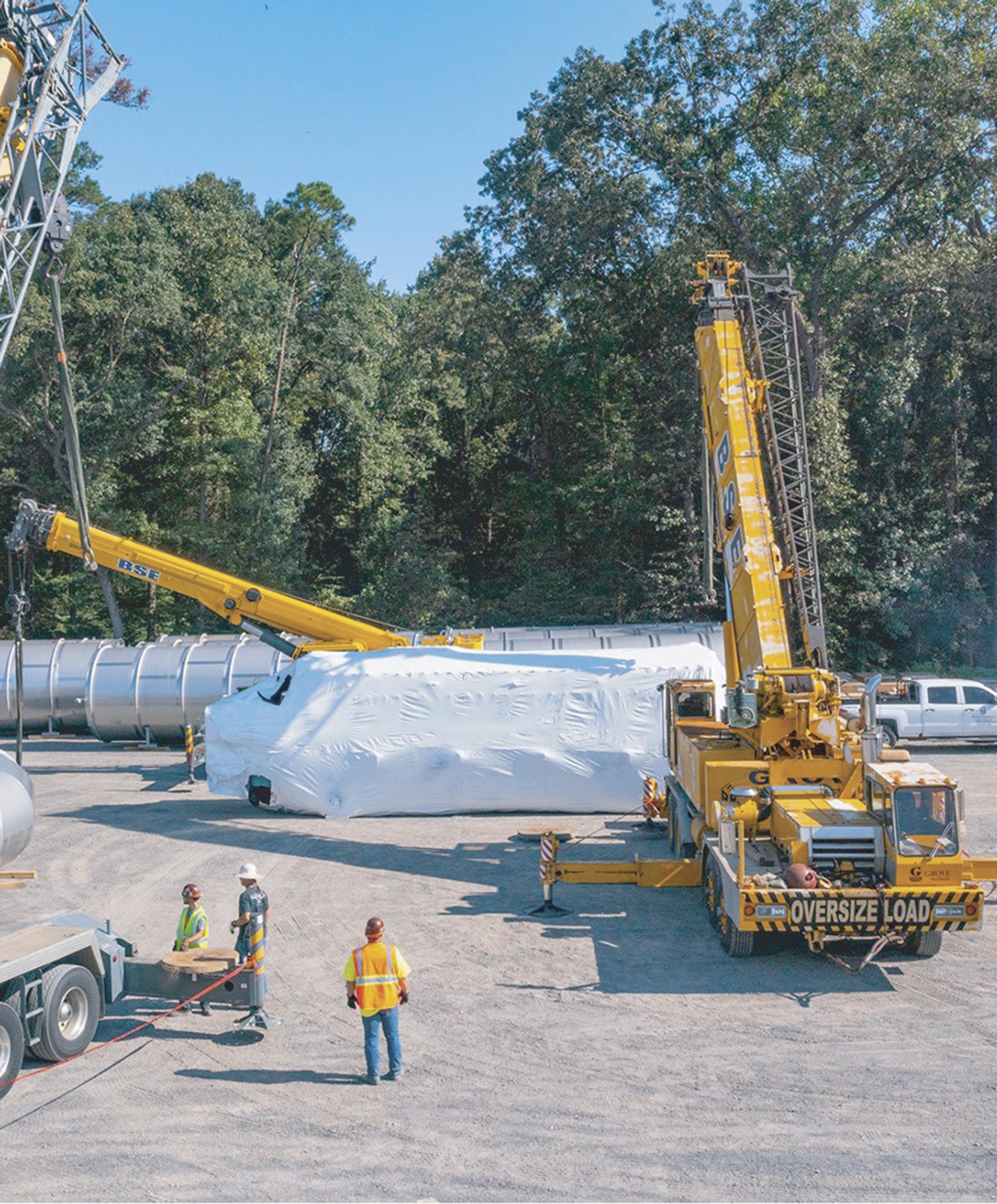


Your Indispensable Partner


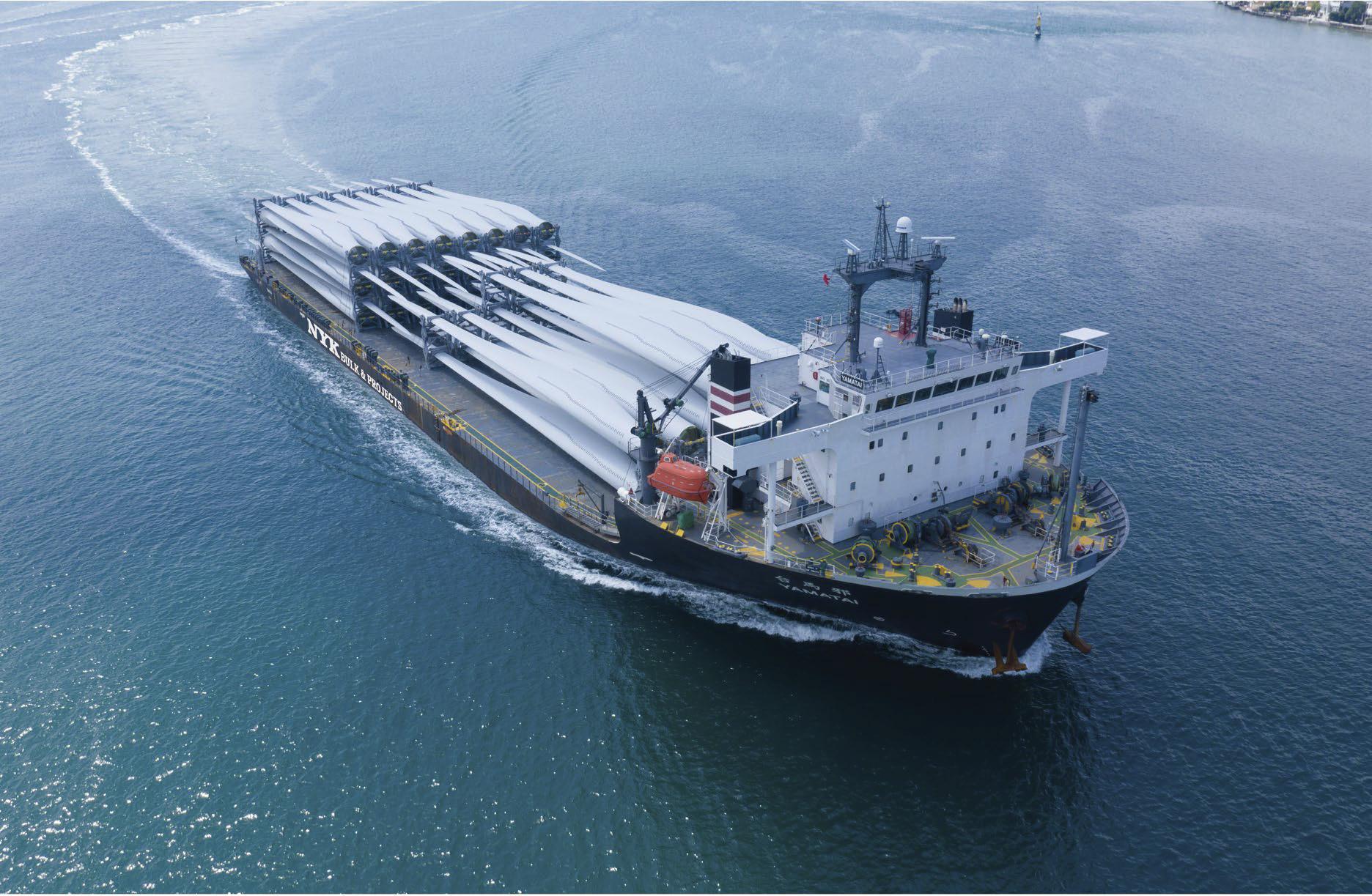
https://nbpc.co.jp
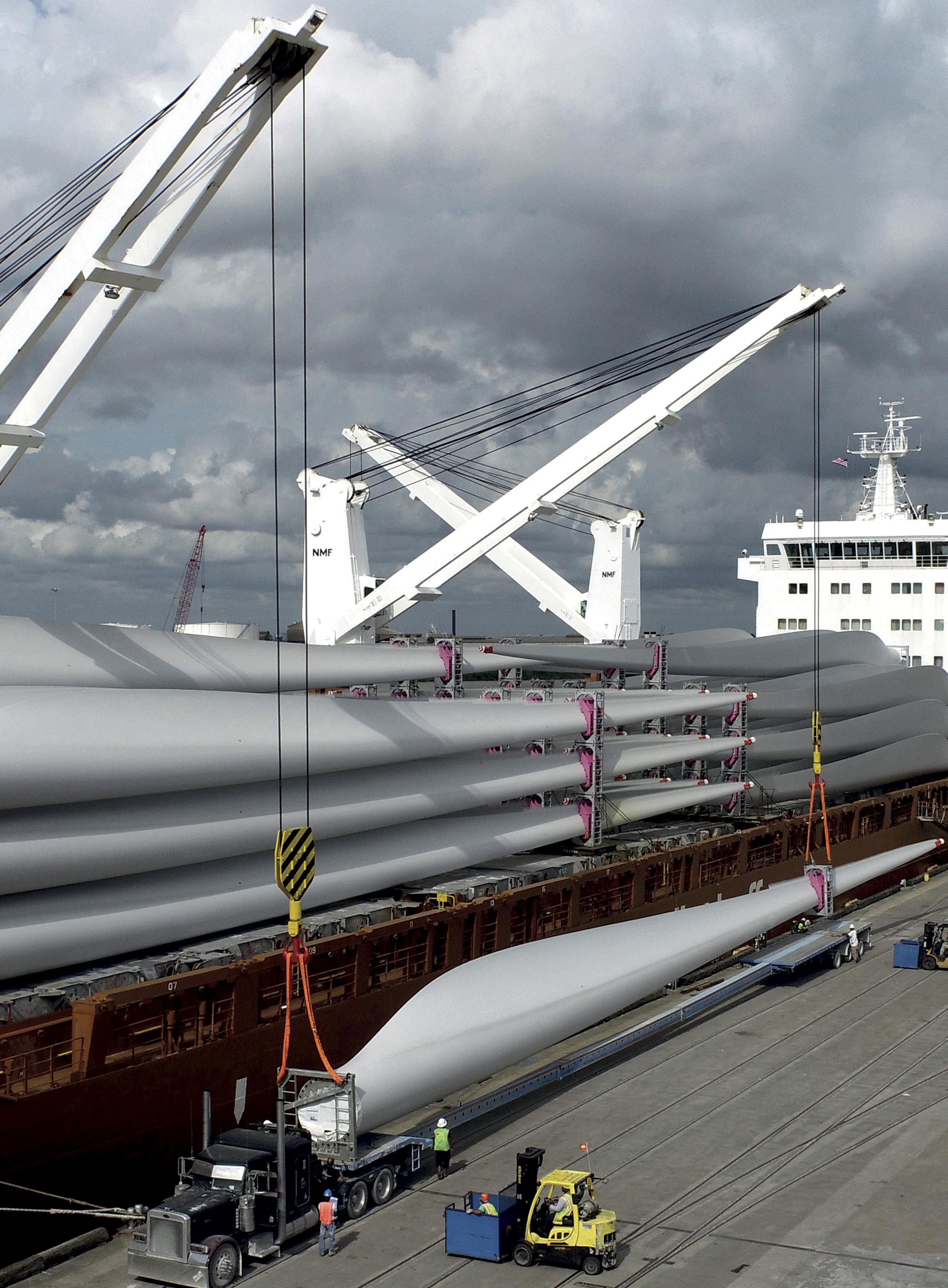
Credit: Port of Beaumont New Faces at Breakbulk Americas Networking Tips Movers & Shakers DP World Q&A Gulf of Mexico Ports Student Research Poster Competition Waves of Cargo Photo & Video Winners Tailgating Gift Guide INSIDE
NEW FACES AT BREAKBULK AMERICAS
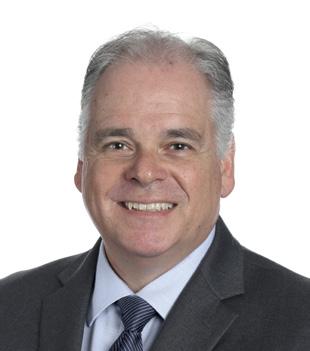
Get to know some new exhibitors at Breakbulk Americas 2023
Gebrüder Weiss
Michael Ruediger, Director of Industrial Projects & Energy Transport Solutions
– North America
United States
Freight Forwarder
Booth Q22
What is the most interesting thing about your business?
There are two answers:
As a company, Gebrüder Weiss is well over 500 years old. We are the oldest and still privately held logistics and transportation company. That history is well documented and we take a lot of pride being part of a company with such a great heritage. As an industry, the most interesting thing is the people and the friendships that I have made over the last 30 years.
What made your company want to exhibit at Breakbulk Americas?
Gebrüder Weiss has made a multi-million dollar investment in the United States and we have grown very quickly in the last five years. We want to be part of the Breakbulk community and exhibiting at Breakbulk Americas (and Europe) is important for us.
What is your company’s outlook on project opportunities in the Americas at the moment?
There are tremendous opportunities in the Americas. We have customers who are developing large alternative / green energy projects and it is exciting to be part of the green economy. One in particular is building a plant to recycle electric car batteries. We are very diversified as a company and also in the project space so we are tracking traditional oil and gas projects as well. It is a great time to be in the project business!
ARL Logistics

Kegan Nelmapius, Regional Manager
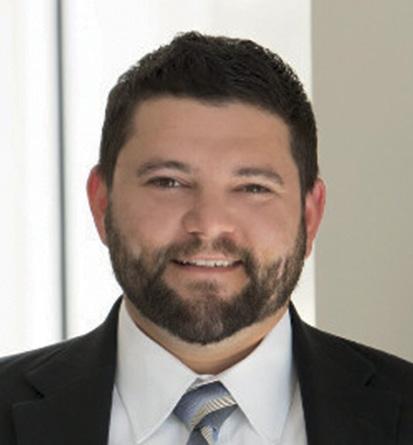
Freight Forwarder

United States
Booth Q15
What is the most interesting thing about your business?
40 years, family owned and operated, drayage and breakbulk expertise.
What made your company want to exhibit at Breakbulk Americas?
We had a great experience visiting last year while a hurricane was looming back home. We saw how the global exposure was unmatched at Breakbulk Americas, so we decided to exhibit this year.
What is your company’s outlook on project opportunities in the Americas at the moment?
It is great to see demand spread across the country and new shipping lanes get established outside of the traditional ports. We are excited for conditions to stabilize, and we are positioned nicely to grow new relationships on top of our longstanding partnerships.
DP World FZE
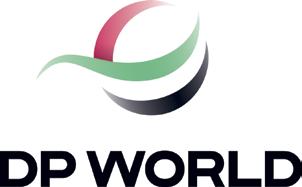
Jemima Summers, Senior Account Executive, Edelman (representing DP World FZE) Ports & Terminals
United Arab Emirates
Booth R28
What is the most interesting thing about your business? What distinguishes DP World is our innovative approach, which seamlessly integrates every aspect of the supply chain. DP World Americas is investing in automation and robotics to help our customers prepare for the shifting supply chain demands of the future. We are building new processes and digital products to enhance the flow of trade around the world. For example, we synchronize the flow of goods across the globe through centralized platforms, meaning cargo is always trackable via the fastest, greenest, and most costeffective route possible.
What’s more, we embrace sustainability and strive to make a meaningful impact on the economies, societies, and communities in which we operate to ensure a brighter future for generations to come. The agility and flexibility that we bring to the supply journey helps reduce costs and improve access for consumers and businesses alike. And this way of working is more sustainable – not only minimizing impact by getting goods onto smaller vessels or lower carbon modes, but creating more resilient trade that makes sure people get access to the goods they want.
12 Breakbulk Magazine Issue 5 2023 breakbulk.com
What made your company want to exhibit at Breakbulk Americas?
As Lead Global Port Partner, our partnership with Breakbulk allows us to connect with key industry players to showcase the ways in which DP World Americas is delivering new and better supply chain solutions through constant innovations in technology, modes of transport and processes.
At Breakbulk Americas, we will showcase our industryleading end-to-end capabilities and cutting-edge innovations. For example, we are expanding our port terminal plan at DP World Caucedo with the objective of directly contributing to the transformation of the Dominican Republic into the principal logistics hub of the Americas.
We are excited to connect with our industry peers at Breakbulk Americas to discuss in detail how we can work together to make the movement of goods more sustainable and efficient, and work together to help deliver economic prosperity and opportunity to the communities we serve.
What is your company’s outlook on project opportunities in the Americas at the moment?
We are highly optimistic when it comes to project opportunities in the Americas, where the economic significance and growth potential continue to make it an attractive region for investment.
For example, in Brazil, a key market, we recently signed a term sheet for the construction of a new terminal for the export of grains and the import of fertilizers at the Port of Santos. In Peru, the Bicentario Berth Project expansion continues to progress; the first part of the project will be ready by the end of the year, with full project completion by April 2024. Meanwhile, the Dominican Republic’s strategic location and economic prospects continue to make it a promising destination for project opportunities in the Americas. In recent years, we have seen how inefficiencies and disruptions to global supply chains affect us all, increasing the price of goods and destabilizing society. As such, our outlook is forward-facing and long-term – we are investing in smart technology to lead the future of world trade. At the same time, we believe in protecting our people and our planet through world-class safety and environmental standards and measures.
OpenTug
Jason Aristides, CEO

IT
United States
Booth N46
What is the most interesting thing about your business?
OpenTug offers the first integrated digital barge and terminal booking
platform to make it easier to ship breakbulk cargo affordably and sustainably. We enable breakbulk shippers to move freight faster by searching, quoting and booking barge, trans load, and industrial storage service in one click.
What made your company want to exhibit at Breakbulk Americas?
OpenTug is exhibiting at Breakbulk Americas because it’s the number one show to connect with freight forwarders, heavy haulers, shippers, barge carriers, terminals, and ports. Every shipment usually requires a wide array of stakeholders, and Breakbulk Americas enables us to connect with all of them under one roof.
What is your company’s outlook on project opportunities in the Americas at the moment?
Our company is extremely optimistic about project opportunities in the Americas. Every day multiple shippers and forwarders find our platform and request project freight moves - we have had over 2 million tons requested within OpenTug in the first two quarters of 2023 alone.
Jillamy
Jeannine Judge, Senior
Marketing Coordinator
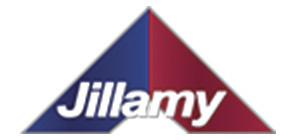
Freight Forwarder
United States
Booth L42
What is the most interesting thing about your business?
The most interesting part of our business is that we have started in-house segments that cover all aspects of freight movement, both international and domestic, We are an NVOCC, an IATA carrier, licensed customs broker, assetbased truck owner including high and heavy, as well as warehousing and fulfilment so any project that is given to us we can handle every aspect in-house.
What made your company want to exhibit at Breakbulk Americas?
As we have poised ourselves to be able to handle all parts of any project or freight movement, we feel it’s time to make ourselves known in this unique business.
What is your company’s outlook on project opportunities in the Americas at the moment?
We think now that freight has normalized somewhat post pandemic that there is nothing that can’t be done.

13 Breakbulk Magazine Issue 5 2023 breakbulk.com
NEW EXHIBITORS AT BREAKBULK AMERICAS 2023
Aerodyne C40 United States Air Transport Aeros R06 United States IT AGT Global Logistics N26 United States Freight Forwarder ARL Logistics Q15 United States Freight Forwarder Atlantic Logistics N45 United States Freight Forwarder Bollore Logistics S16 United States Freight Forwarder Boxxport GmbH P26 Germany Industry-related Services BR PARTNERS R12 Brazil Freight Forwarder C.H.I. Overhead Doors R13 United States Equipment Combilift USA LLC P47 United States Equipment Cornerstone Logistics Q11 Canada Freight Forwarder Dagen Trucking Q18 United States Road Transport Dawn Services LLC S15 United States Maritime Transport DP World FZE R28 United Arab Emirates Ports & Terminals Encompass Logistics LLC B09 United States Freight Forwarder ERHARDT PROJECTS M24 Spain Freight Forwarder Duma Trans C49 United States Freight Forwarder Freight North Group S41 Canada Road Transport Gebrüder Weiss Q22 United States Freight Forwarder Greystone Construction Company S21 United States Industry-related Services Gulf States Trucking S01 United States Road Transport Heavy Haul Solutions K48 United States Road Transport HLI RAIL & RIGGING F52 United States Freight Forwarder Hotel Engine E51 United States Road Transport Jillamy L42 United States Freight Forwarder Kawasaki Kisen Kaisha, Ltd P08 United States Maritime Transport Lee-Exco S19 United States Road Transport Little John Transportation Services J08 United States Road Transport Mallory Alexander International Logistics P20 United States Freight Forwarder Momentum Solutions S17 Canada Freight Forwarder Multiboxx Energy J50 Hong Kong Equipment Nippon Express Q01 United States Freight Forwarder NXGEN G51 United States Industry-related Services OIA GLOBAL L41 United States Freight Forwarder OpenTug N46 United States IT OTH Pioneer Rigging P46 Canada Equipment The Pacific Companies K42 United States Equipment Pacific Harbor Express, LLC L40 United States Industry-related Services Palco Transportation B49 United States Road Transport PCC LOGISTICS J42 United States Freight Forwarder PGT Services N22 United States Road Transport ProStack P17 United Kingdom Equipment Puerto Ventanas S.A. S02 Chile Ports & Terminals Seahorse Express P14 United States Road Transport Silk Way West Airlines D48 United States Air Transport Smart Tec U.S H51 United States IT STX LOGISTICS Inc L09 United States Freight Forwarder Summit Logistics Inc. M46 Canada Road Transport Swire Projects R43 Singapore Industry-related Services The GTI Group J09 United States Freight Forwarder TICO TERMINAL TRACTORS Q08 United States Equipment Toll Global Forwarding K46 United States Freight Forwarder Tranix Technologies R15 United States IT TRT International Q13 United States Freight Forwarder
Company name Booth number Country Sector 14 Breakbulk Magazine Issue 5 2023 breakbulk.com
NETWORKING AT BREAKBULK AMERICAS 2023
Take a look at the list of networking activities at Breakbulk Americas this year
“My favorite part of Breakbulk Americas is the networking. Go to the booths that interest you the most and introduce yourself to someone that is there and ask them about what their company does. I also recommend attending the main stage presentations and speaking to people before and after those sessions.”
Jake Swanson, Regional Vice President- Americas Operations, Industrial Projects, DHL Global Forwarding

Visit Main Stage Sponsor DHL Industrial Projects at Booth S36

Maritime Workers Emergency Medical Fund Golf Tournament
Tuesday, September 26, 6:30 AM – 12:30 PM
Relax while you play golf under the majestic emerald canopy of stately old oak trees, unwind on the airy veranda of the modern clubhouse and satisfy your appetite with delicious food.
Welcome Reception
Tuesday, September 26, 5:00 PM – 8:00 PM
Join the project cargo industry on the first night of Breakbulk Americas to kick off the event with an evening of networking.
After Party at The Rustic (Sponsored

by Port Houston)
Tuesday, September 26, 8:00 PM – 11:00 PM
Keep the party going! Walk over to The Rustic just steps away from the George R. Brown. (Entry is FREE, but you must register beforehand)
55th BUSINESSrun (Sponsored by UHL and ITJ International Transport Journal)
Wednesday, September 27, 7:30 AM
Participate in a unique event that combines running, networking, and giving back to the community.

Women in Breakbulk Breakfast (Sponsored by dship Carriers)
Wednesday, September 27, 9:00 AM – 11:00 AM
Latin America Happy Hour
Wednesday, September 27, 2:15 PM – 3:15 PM
Keep the party going! Walk over to The Rustic just steps away from the George R. Brown.
Following the session on the Main Stage, Latin America Spotlight: Outlook, Projects, and Opportunities, the panel will host a happy hour open to all.
“No matter the reason you are attending Breakbulk Americas, talk to everyone! Pass out business cards, make every connection that you can. Knowing the most people in this industry, no matter what they handle or what they do, can be beneficial to you in the long run.”
Alyssa Dye, Director of Sales, Swan Transportation Services
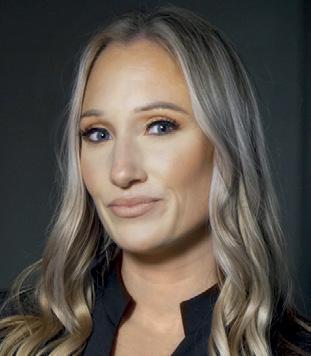
For even more networking, join Swan Transportation Services at the Swan Freight Station at Booth B22
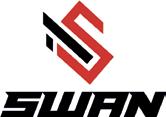 Breakbulk Americas
Event Director
Breakbulk Americas
Event Director
15 Breakbulk Magazine Issue 5 2023 breakbulk.com
Evan Carthey and Leslie Meredith at The Rustic
DP WORLD’S GRAND PLANS FOR THE AMERICAS
Breakbulk caught up with Morten Johansen, COO of DP World Americas, for an update on the Dubaibased company’s extensive operations in the Americas region.
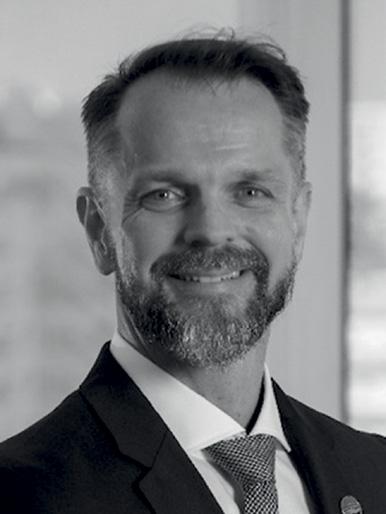
Q: DP World already has strong presence in South America, with port, terminal and logistics operations in Brazil (Santos), Argentina (Rio de la Plata), Chile (San Antonio and Lirquén), Suriname (Paramaribo), Peru (Callao and Paita) and Ecuador (Posorja). What plans does the company have to expand further on the continent, either at its existing facilities or new ones?
South America continues to play a key role in our mission to become a leading provider of end-to-end supply chain solutions. Recognizing its potential, we are opening new freight forwarding offices in strategic locations such as Panama and Mexico; this not only amplifies our logistics business but illustrates our commitment to broadening our freight forwarding operations throughout the region.
In Peru, DP World Callao is set to undergo a significant expansion with the Muelle Bicentenario Project. This endeavor aims to enhance the terminal capacity by 80 percent, elevating its ability to handle up to 2.7 million twenty-equivalent-units annually, a substantial increase from its present 500,000 twentyequivalent-units. Completion is slated for April 2024.
Over in Brazil, we’re channeling a US$35 million investment towards the enhancement and modernization of our infrastructures at the Port of Santos. In Ecuador, our collaboration with Emergent Cold Latin America at DP World Posorja is poised to pioneer refrigerated warehouse solutions, broadening our scope of temperature-regulated integrated logistics services throughout the region.
Q: Could you give more details on DP World’s overhaul of its facilities at the port of Santos, one of Brazil’s largest private port terminals? How will this investment benefit breakbulk and project cargo throughput?
The Port of Santos is a pivotal hub for transportation and logistics in the area. We recently celebrated 10 years in Brazil, having begun operations at the Santos terminal in 2013 with containers and general cargo on a 653-meter quay with a capacity of 1.2 million twenty-equivalent-units. In 2020, we inaugurated the largest and most modern pulp handling complex in the country, expanding the quay to 1,100 meters, and building a 35,000-square-meter warehouse. A multiyear partnership with Suzano, the second largest global producer of eucalyptus pulp, will see us continuing to grow our cellulose pulp operations.
We are currently expanding our terminal to boost capacity from 1.2 million twenty-equivalent-units to 1.4 million twentyequivalent-units annually, extending the quay to 1,290 meters and expanding the warehouse to 50,000 square meters to help increase annual capacity of the cellulose export complex from 3.6 tons to 5.4 million tons. The project will be completed in 2024. In August, we also discharged a nine-rail grinding train, marking the first time this equipment was imported to Brazil. This was a huge breakbulk operation.
Q: Could you outline some of the key gains for the Port of Vancouver following the completion of the US$260 million Centerm Expansion Project? How important is the Port of Vancouver for international trade and project cargo movements?
The Centerm Expansion Project marked a significant milestone for Canada’s growing trade network. The award-winning project expanded the terminal’s footprint by 15 percent, increasing container capacity 60 percent from 900,000 twenty-equivalentunits to a remarkable 1.5 million twenty-equivalent-units. The project also helps reduce the terminal’s environmental impact by adding capacity for container ships to connect to electrical shore power; converting diesel yard cranes to electric; eliminating wait times for vehicles at train crossings, helping to reduce emissions; and building to LEED and Envision certification sustainability standards.
16 Breakbulk Magazine Issue 5 2023 breakbulk.com
The Port of Vancouver, Canada’s largest port, plays a vital role in the nation’s supply chain and economic trade by providing a crucial link between Canadian businesses, consumers, and products. The port is a significant source of tax revenue and employment for surrounding communities, facilitating US$240 billion in trade, supporting over 115,000 jobs (equating to US$7 billion in wages), and contributing nearly US$12 billion to the national GDP. The port is also the primary hub for breakbulk cargo like forest products, steel, and machinery in the Pacific Northwest. The port provides flexible cargo handling, efficient vessel services, and connects to extensive road networks and established corridors for overweight and over-dimensional project cargo. Serving as Canada’s entrance to over 170 global trading economies, it accounts for $1 of every $3 in Canada’s non-North American trade.

Q: DP World’s 2021 acquisition of syncreon, a contract logistics provider based in the U.S., hints at new investment in the region. How does the company see the U.S. playing into its Americas strategy?
The U.S. is central to DP World’s growth strategy. The Americas represent one of the largest combined markets in the world, housing three of the top 10 largest economies, with strong production of consumer, industrial and agricultural products across the region. In fact, DP World’s Americas regional headquarters are in Charlotte, North Carolina, where we are currently expanding our facilities and opening a brand-new building in early 2024.
In 2021, we acquired a company called syncreon that is based in Auburn Hills, Michigan. A leading provider of supply chain solutions, syncreon provides services to customers in auto, tech, consumer goods, industrial, and healthcare companies.
We currently have dozens of legacy syncreon sites across the U.S.
Going forward, the U.S. will be key to our freight forwarding expansion plans. As we continue to grow this business, we plan to open nearly a dozen new offices in key locations across the U.S. These new locations will complement our existing portfolio in Latin America and Vancouver and help expand our U.S. contract logistics capabilities across the region.
Q: How important is DP World’s port facility at the Punta Caucedo peninsula in the Dominican Republic for the redistribution of cargo to the Caribbean, the U.S., Central America and South America? Could you provide an update on the company’s new air cargo logistics center with Punta Cana Free Trade Zone? When is it likely to come online?
A: Leveraging its advantageous geographical position, DP World commenced operations in the Dominican Republic in 2003. This strategic foothold acts as a critical juncture for cargo redistribution across the Caribbean, the U.S., Central America, and South America. Today, the Dominican Republic has emerged as the Caribbean’s premier trade and logistics hub. The added advantage of the nearby Punta Cana International Airport allows the center to provide a wide array of cargo management services to address global logistics needs.
We are thrilled to unveil the forthcoming inauguration of our air cargo logistics hub within the Punta Cana Free Trade Zone, slated for the end of this year. This partnership seeks to further amplify the Dominican Republic’s role as a central freight and logistics hub for international markets. The expansion includes a state-of-the-art logistics center and modern infrastructure platforms to facilitate the seamless integration of air, land, and sea cargo. Moreover, this alliance will propel a dynamic regional commerce strategy, aiming to draw increased re-export and import cargo volumes from global commercial, tech, industrial, and agricultural sectors.
Q: DP World has expanded its support of Breakbulk events from host port at Breakbulk Middle East to Global Port Partner. How has this partnership benefited the company?
A: We are looking forward to serving as a Global Port Partner at Breakbulk Americas. This partnership underlines our commitment to enhancing our presence and influence in the cargo and logistics sector. Breakbulk events are recognized worldwide for offering unique interactions with industry trailblazers and thought leaders, and for providing an invaluable stage to showcase DP World’s expertise in global logistics. We believe that our partnership with Breakbulk and our sponsorship of this conference is not just an investment in an event but an investment in the future of logistics in the Americas.
Evening aerial view of Prince Rupert port in province of British Columbia.
17 Breakbulk Magazine Issue 5 2023 breakbulk.com
Credit: DP World
MOVERS AND SHAKERS
Highlighting Recent Industry Hires, Promotions and
deugro
deugro has further strengthened its position in the wind energy sector after appointing Stefanie SchöttleChristiansen as head of its wind renewable energy Germany division. In her new role, the executive, who boasts more than 23 years of experience in logistics, will ensure deugro continues to meet the rising demands of the wind energy sector, the company said. Previously Schöttle-Christiansen worked for Siemens Gamesa as team lead – logistics project management for Northern Europe and the Middle East, overseeing the transport and handling of wind turbine components for onshore and offshore projects.

“The wind energy sector is rapidly growing, and I am eager to contribute to deugro’s success by delivering exceptional service to our clients. Together with a talented team, I am confident that we will continue to set new standards in the industry,” Schöttle-Christiansen said.
Clemenger Bertling Projects
Chris Nicholson has been chosen to head up a new joint venture in Australia between Bertling Logistics and Clemenger International Freight. The Perth-headquartered venture, Clemenger Bertling Projects, will target new and existing business opportunities in Australia’s flourishing energy, mining and construction sectors.
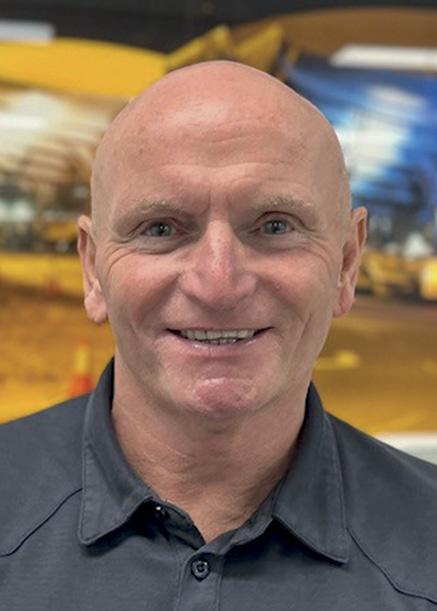
Nicholson, who boasts more than 35 years of experience in freight
forwarding and project logistics, had been working for Clemenger since 2015; prior to that, the executive was Bertling’s commercial manager in Australia.
“Absolutely delighted to be leading our new joint venture in Australia and really looking forward to introducing the business to current and prospective clients across the country,” Nicholson said. “Knowing the strengths of each company, I am positive that Clemenger Bertling Projects represents a whole host of knowledge, resources, and innovative ideas from both partners, each bringing their unique strengths to the industry.”
DHL Global Forwarding
DHL Global Forwarding has named Max Sauberschwarz as the new head of Global Air Freight, effective October 1. Sauberschwarz will replace industry veteran Thomas Mack, who is stepping down after five years at the helm. Mack, who has worked in the air freight sector for more than four decades, will continue with the company as a senior adviser until his planned retirement in October 2024.
Sauberschwarz, currently DHL Global Forwarding’s senior vice president for its air charter division, Global StarBroker, has held several senior management roles in the air freight sector on a global level as well as in Europe and Asia. Prior to joining DHL Global Forwarding in 2019, the executive spent nearly eight years with Kuehne+Nagel and four with DB Schenker.
“We are delighted to have found a worthy successor to Thomas Mack in Max Sauberschwarz. In his previous role, he demonstrated not only his deep industry knowledge, but also his leadership skills and we look forward to driving the business forward together in the years ahead,” said Tim Scharwath, CEO of DHL Global Forwarding.
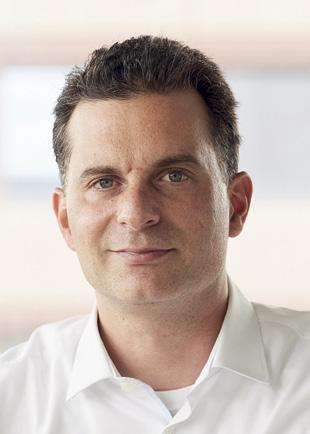
The Heavy Lift Group
Elisabeth Cosmatos has been elected the first female president of The Heavy Lift Group, taking over from FOX Brasil’s Murilo Caldana, who steps down after serving two consecutive, two-year terms. Cosmatos, general manager of Greek transport and logistics firm Cosmatos Group, has been part of the THLG executive committee for more than six years, previously overseeing the group’s marketing and corporate image.
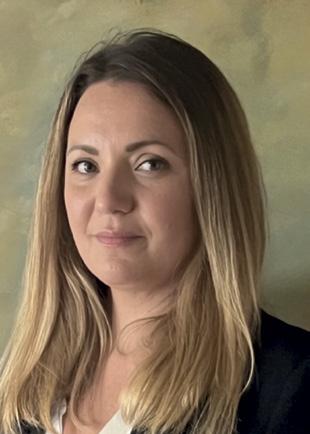 Departures
Chris Nicholson
Stefanie SchöttleChristiansen
Max Sauberschwarz
Departures
Chris Nicholson
Stefanie SchöttleChristiansen
Max Sauberschwarz
18 Breakbulk Magazine Issue 5 2023 breakbulk.com
Elisabeth Cosmatos
Founded in 1987, the THLG is a worldwide network of companies involved in large-scale industrial project forwarding, oversized road transport, crane operations, machinery installation and rigging, vessel chartering, port operations, engineering and barge operations.
“THLG’s decision to appoint a female president as part of a majority-female executive committee demonstrates the group’s commitment to gender equality and women’s empowerment in the heavy-lift industry,” Cosmatos said. “Together, we will continue to lead THLG along the successful and innovative path that has made it a pioneer in project cargo networking.”
Rhenus Group
Global logistics provider Rhenus Group has appointed Bruna Ventura as managing director of Rhenus Brazil, succeeding Paul Schabbel, who has taken on a new role at the company. Ventura, who boasts more than 16 years of leadership and management experience in logistics, has been with Rhenus for eight years, most recently as chief operating officer, air and ocean. The executive has also worked for Plus Cargo do Brasil, Costa Porto and CMA CGM.
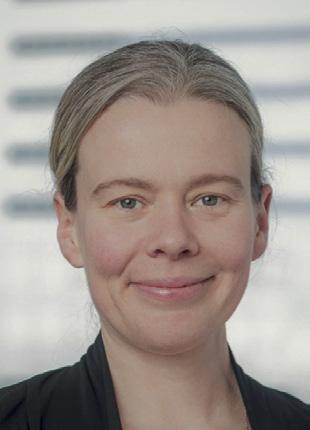

“Our goal remains on growth and expansion through a customer-focused and engaged team, always seeking solutions for our clients and connecting them with Rhenus capabilities in this country of great dimensions and opportunities,” Ventura said.
Rhenus Brazil is headquartered in Sao Paulo and provides logistics solutions for imports and exports via air and ocean, road transportation, and oversize loads for all types of goods. The company is launching two new offices in the cities of Belo Horizonte in central Minas Gerais state and in Itajaí in southern Santa Catarina state.
Logistics Plus
Andriy Blagovisniy has begun a new position as global director of air chartering at U.S.-headquartered Logistics Plus. As part of his remit, the executive has been selected to head up LP Aero, a new London-based entity launched by Logistics Plus to enhance the company’s air charter services.
Blagovisniy has worked in the aviation and air charter business for more than 24 years – nearly
16 years of those with Ukraine’s Antonov Airlines. Most recently, the executive served as project cargo sales manager at Diplomat Freight Services UK.
“Andriy brings an impeccable record in chartering, DOD, aerospace, and all types of heavy-lift projects,” said Yuriy Ostapyak, COO for Logistics Plus. “LP Aero will become our platform to increase our service offerings, to optimize carrier relations and rates, and to support the development of charter projects worldwide.”
Bertling Logistics
Bertling Logistics has named Gerd Illing as its new managing director in Germany. Founded in 1865, Hamburg-headquartered Bertling specializes in project logistics and heavy cargo transport. Its 700-strong workforce is based in 50 offices in 30 countries all over the world.
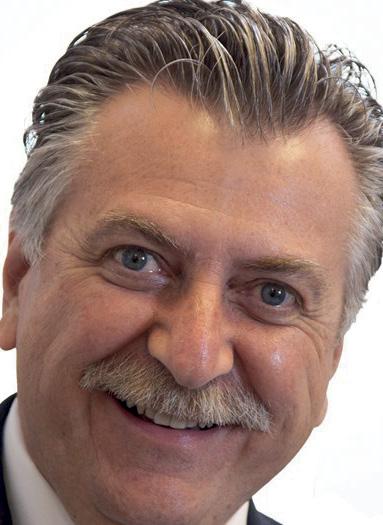
“Gerd has vast experience in logistics and forwarding overall and knows the project business from top to bottom. We look forward to him contributing his commercial skill set and drive to our offices in Hamburg, Bremen, and Neuss,” Bertling said.
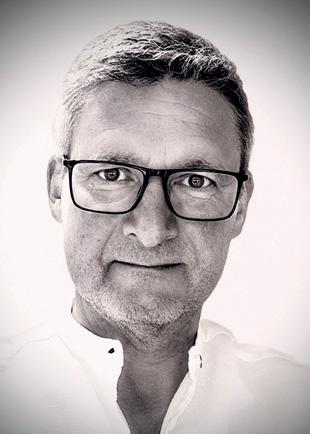
SLSMC
The St. Lawrence Seaway Management Corporation in Canada has announced the appointment of Tony Valeri and Julie Lambert to its Board of Directors. A former Canadian transport minister, Valeri is managing director of Ridge Strategy Group. Lambert, who has a legal and business background, is president of Petro-Nav, a subsidiary of Quebec City-based marine transport specialist Desgagnés.

The SLSMC is a private, not-for-profit corporation, created in 1998 to operate and maintain the Canadian locks and channels of the St. Lawrence Seaway. More than 3 billion tons of cargo have been transported via the waterway since the Seaway’s inception in 1959.
“We welcome Mr. Valeri and Ms. Lambert to the Board and look forward to benefiting from the knowledge and experience they bring to the table,” said Terence Bowles, president and CEO of the SLSMC.
Bruna Ventura
Andriy Blagovisniy
Tony Valeri
Julie Lambert
19 Breakbulk Magazine Issue 5 2023 breakbulk.com
Gerd Illing
GET TO KNOW THE PORTS IN THE GULF OF MEXICO
Breakbulk Events & Media reached out to several ports within the Gulf to gain insight into what makes their port special and how they see the ports in the Gulf changing in the coming years.

Ernest Bezdek, Director of Trade Development
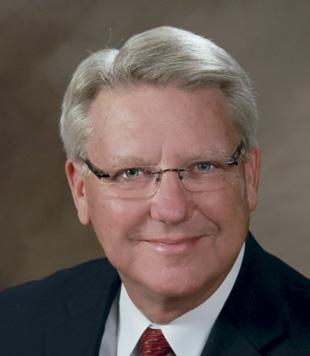
Texas
Booth Q14
What is the most interesting thing about your business?
I think the most interesting thing about the Port of Beaumont is our versatility and ability to adjust to different types of cargoes. We are a niche port that is expanding and growing yearly.


What made your company want to exhibit at Breakbulk Americas?
We wanted to exhibit because the conference attracts a diverse cross-section of shippers, forwarders and 3PLs (3rd party logistics) companies.
How does your company see ports in the Gulf of Mexico changing over the next 10 years?
Dramatic growth! All ports (including the Port of Beaumont) are undergoing needed infrastructure updates to handle the larger, heavier project cargoes now moving. It is an exciting time to be in the port business.
Therrance Chretien, Director of Cargo and Trade Development
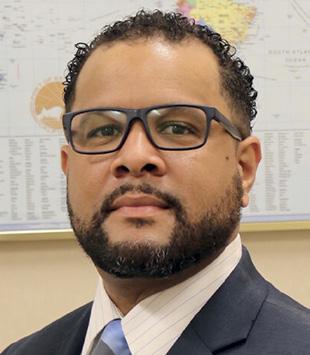
Louisiana
Booth D10
What is the most interesting thing about your business?
Our economic diversity. Our port district is home to the nation’s No. 1 center for liquefied natural gas exports — a multi-corporation sector that continues to grow. Also, we serve a world-class petrochemical complex in our region. Further, our extensive waterside property holdings are host to a pair of casino resorts! That’s in addition to our own work at the port of handling breakbulk, bulk, specialty, and project cargo — from lumber to barite, to oversized components for industrial construction projects.
What made your company want to exhibit at Breakbulk Americas?
Breakbulk cargo has been the port’s niche since its inception in 1926. We’ve handled, warehoused, trucked and railed cargoes of all volumes, shapes and sizes for nearly a century.
We’re looking for more opportunities for breakbulk cargo on a domestic and international level. That’s because our ongoing efforts to improve and strengthen our infrastructure mean we will have even more capability and capacity to offer.
How does your company see ports in the Gulf of Mexico changing over the next 10 years?
Evolving shipper and market-based demands and preferences can’t help but drive smart ports to make smart strategic choices in the time ahead.
Port of Beaumont
Port of Lake Charles
20 Breakbulk Magazine Issue 5 2023 breakbulk.com
A personal example from our port: We’re the nation’s 13thbusiest, based on tonnage, but we are also exploring the region’s newly designated potential for offshore wind power. Our Gulf Coast proximity, deep-dredged ship channel and available inland properties make us an ideal site for the assembly, placement and maintenance of offshore wind turbines.
Port of Pascagoula

Rafael Quesada, Director Trade Development

Florida
Booth H13
What is the most interesting thing about your business?
Our business is very dynamic in an environment where market forces,
weather, and world events have a direct impact on our performance as a logistics organization.
What made your company want to exhibit at Breakbulk Americas?
We have been participants of Breakbulk Americas since the beginning. This conference is one of the most important venues where we can be exposed to shipping companies, exporters, and importers from around the world over the course of 3 days.
How does your company see ports in the Gulf of Mexico changing over the next 10 years?
The ports of the Gulf of Mexico will play an important role in the years to come due to the increasing congestion of the ports in the Northeast and West Coast with the increase of international trading.

21 Breakbulk Magazine Issue 5 2023 breakbulk.com
Credit: Port of Pascagoula
BREAKBULK AMERICAS STUDENT RESEARCH POSTER COMPETITION 2023
The authors of the top 3 submissions will receive a cash prize during an awards ceremony on the main stage at Breakbulk Americas on Thursday, Sept. 28.
Competition Industry Advisory Committee
Beth Heyn Kennedy - Supply Chain Client Executive, Gartner
Bill Keyes - Director of Logistics, Fluor
Dennis Devlin - Head of Growth, North America, Maersk Project Logistics
Esmeralda Smith-Garcia - Business Development for Global Projects Industry Solutions, DB Schenker
Breakbulk Events & Media is thrilled to announce the launch of its Student Research Poster Competition at Breakbulk Americas 2023.
The competition, sponsored by Bechtel, UTC Overseas, 4D Supply Chain Consulting and Cullen College of Engineering-University of Houston, is built around three main themes: global capital projects, sustainability/energy transition, and port infrastructure. Student research may include interviews, literature reviews, an explanation of emerging technology, policy analysis, case studies or other relevant topics presented in a visual and creative way. Through this program, students can make valuable connections with a wide variety of industry executives, receive practical feedback and open the door to new career opportunities.
The competition is chaired by Margaret Kidd, program director, Supply Chain & Logistics Technology at Cullen College of Engineering’s Technology Division and supported by a group of project cargo professionals.
“The student research component of Breakbulk Americas is a great opportunity for undergraduate and graduate students to showcase their talent and network with industry leaders,” Kidd said.
“As Houston is the ‘Global Capital Projects and Energy Transition Capital’ for the Americas this is a win-win to bring students from regional universities together with leaders in the sector to talk about the world of opportunities along with sharing best practices related to capital projects, sustainability, energy transition and port infrastructure.”

Breakbulk Events & Media has been a passionate supporter of students and young professionals through its Education Day, an initiative to fill the industry’s talent gap.

Jake Swanson - Regional Vice President - Americas Operations, Industrial Projects, DHL Global Forwarding
John Hark - Head of Growth, North America, Maersk Project Logistics
José Manuel Velarde – Senior Manager, Indirect ProcurementCAPEX, MRO, Maintenance, Tars, Staffing - N. America & Latam, Huntsman Corporation
Kattya Di Stefano - Business Development Manager - Industrial Projects, DHL Global Forwarding
Leandro Brusque - Supply Chain Manager, Subsea Construction, Ocyan Oil & Gas
Marco Poisler - COO – Global Energy & Capital Projects, UTC Overseas

Noureen Faizee - Director, Inside Sales, Worley
Payne Fischer - Regional Manager – Project Logistics North America, Kuehne + Nagel
Peter Dill - Senior Purchasing Manager - Indirect, Huntsman Corporation
Peter Jessup - Supply Chain Consultant, Proactive Change LLC

Sandra Guadarrama - Senior Project Logistics Manager, Linde Engineering
Stephen Spoljaric - Corporate Manager of Global Logistics, Bechtel Corporation

Thomas Skellingsted - President, 4D Supply Chain Consulting
Toni Harrison - Business Development for U.S. Projects, Geodis
Session Information
Student Research Poster Awards
Thursday, Sept. 28
11:45 AM - 12:00 PM
Sponsors
22 Breakbulk Magazine Issue 5 2023 breakbulk.com
Margaret Kidd and Leslie Meredith at Breakbulk Americas https://americas.breakbulk.com/page/student-research-poster-competition-2023
Sponsored by

In the annual Americas photo contest, close to 30 companies shared their photos and videos of their awe-inspiring journeys of massive cargoes, from across the oceans, through the gulfs, and up and down the world’s coasts and inland waterways. By popular vote, here are the top five photo winners and the three most popular videos.
Unloading wind blades from a ship in Romania to be delivered by barge to Serbia. Visit them at Breakbulk Americas, Booth L05
 Photo Contest WINNER Contractors Cargo Company (CCC)
Photo Contest WINNER Contractors Cargo Company (CCC)
23 Breakbulk Magazine Issue 5 2023 breakbulk.com
Fourth Place
dship Carriers
Keith navigating the icy wonderland of Antarctica. Women in Breakbulk Breakfast sponsor at Breakbulk Americas
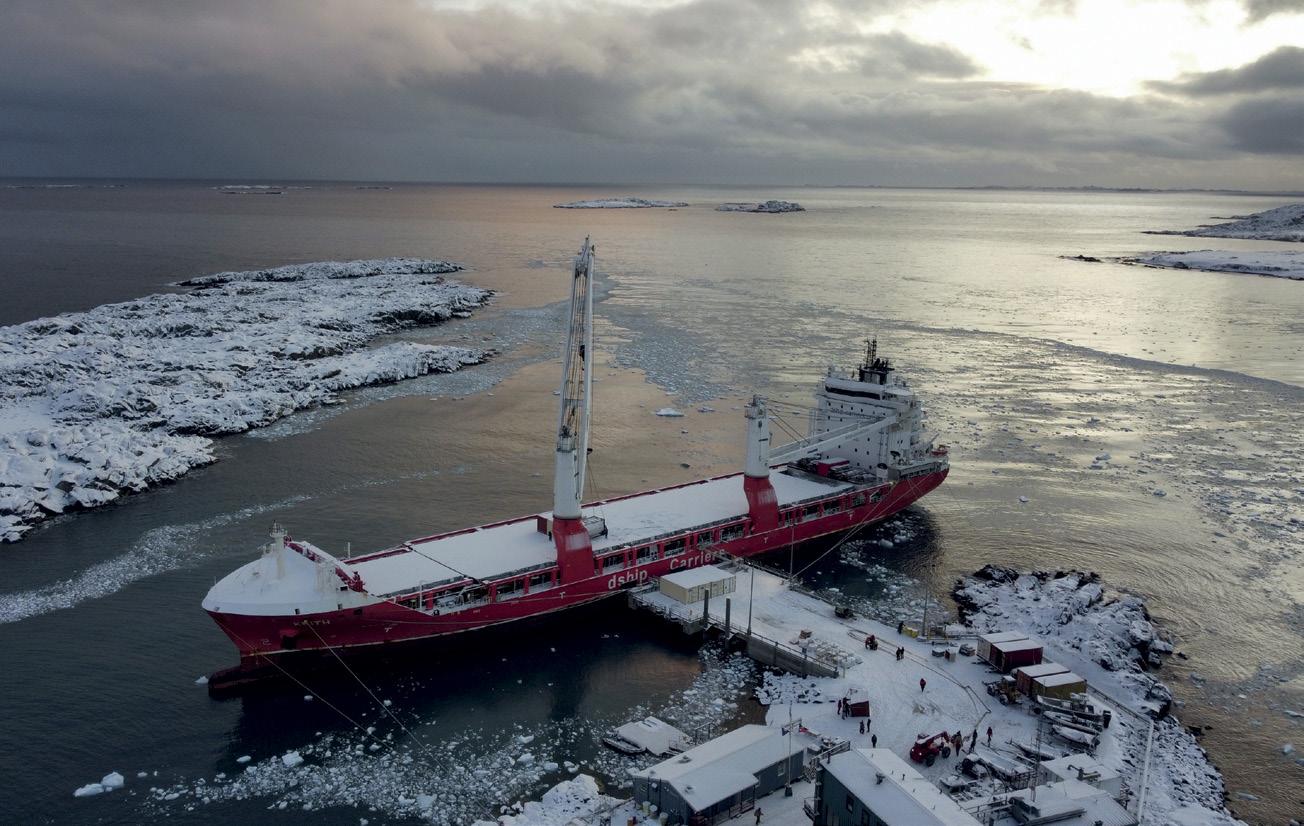
Second Place
Encompass Logistics
LLC
Green Energy Storage. A 78,000-pound lithium-ion battery container being transported in the U.S. Visit them at Breakbulk Americas, Booth B09
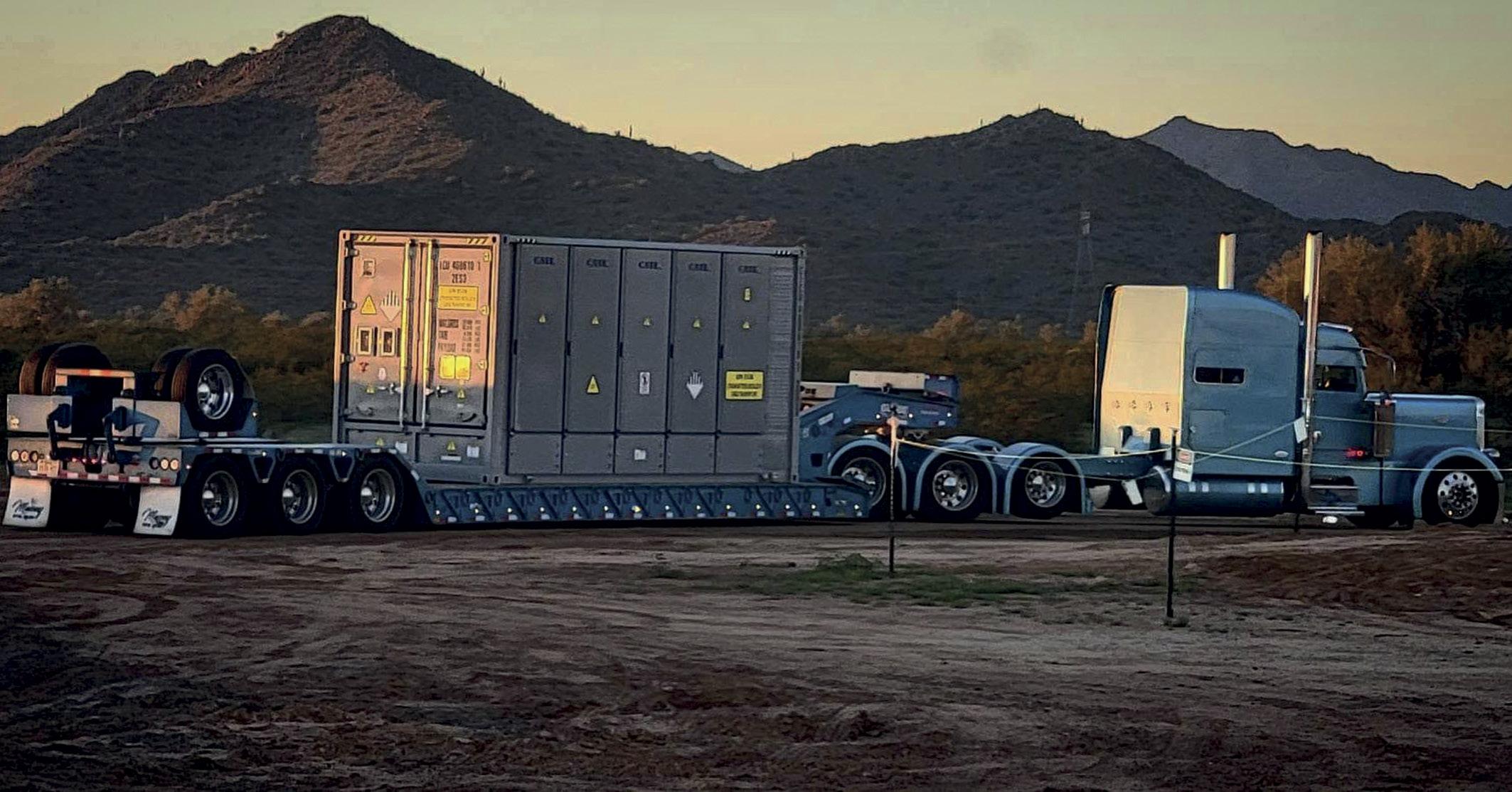
Third Place
AsstrA-Associated Traffic AG
Out-of-gauge heavy-lift transport of a wash tower from Spain to Poland.
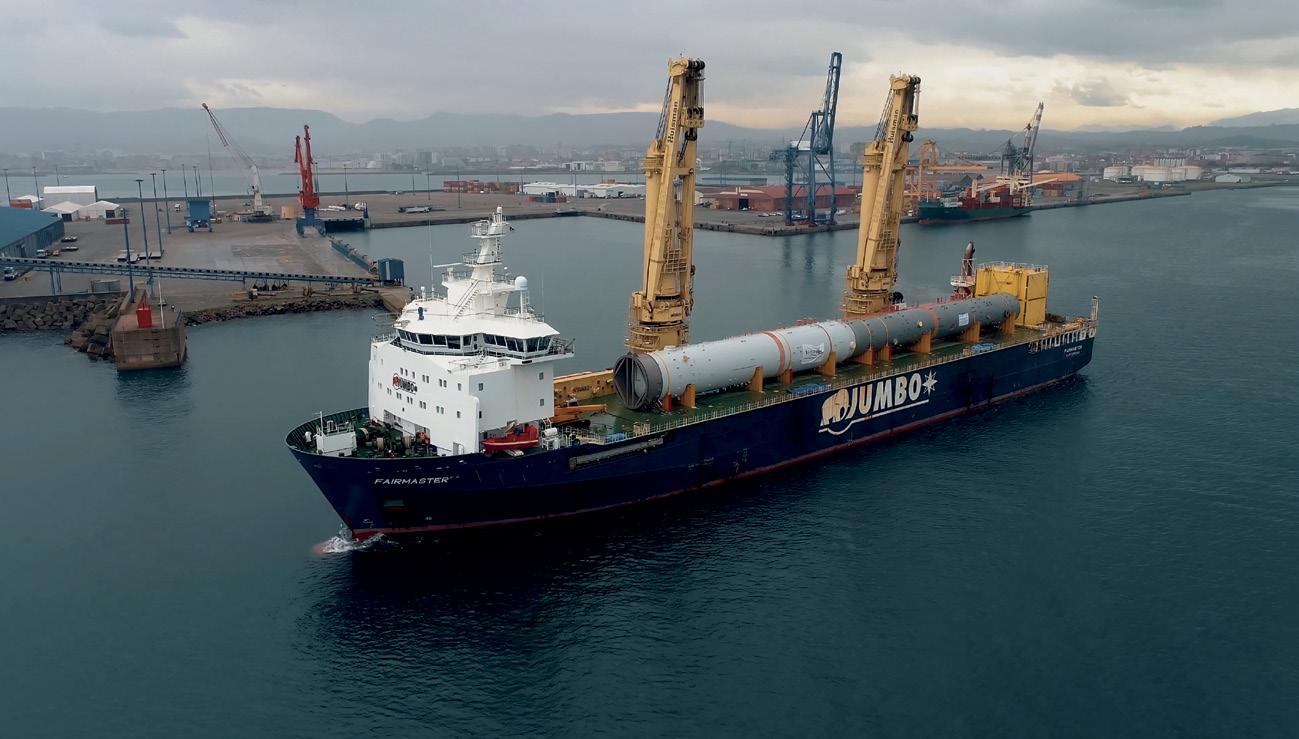
Fifth Place
Mercer Transportation
By air or sea, Mercer Transportation is your open deck carrier!
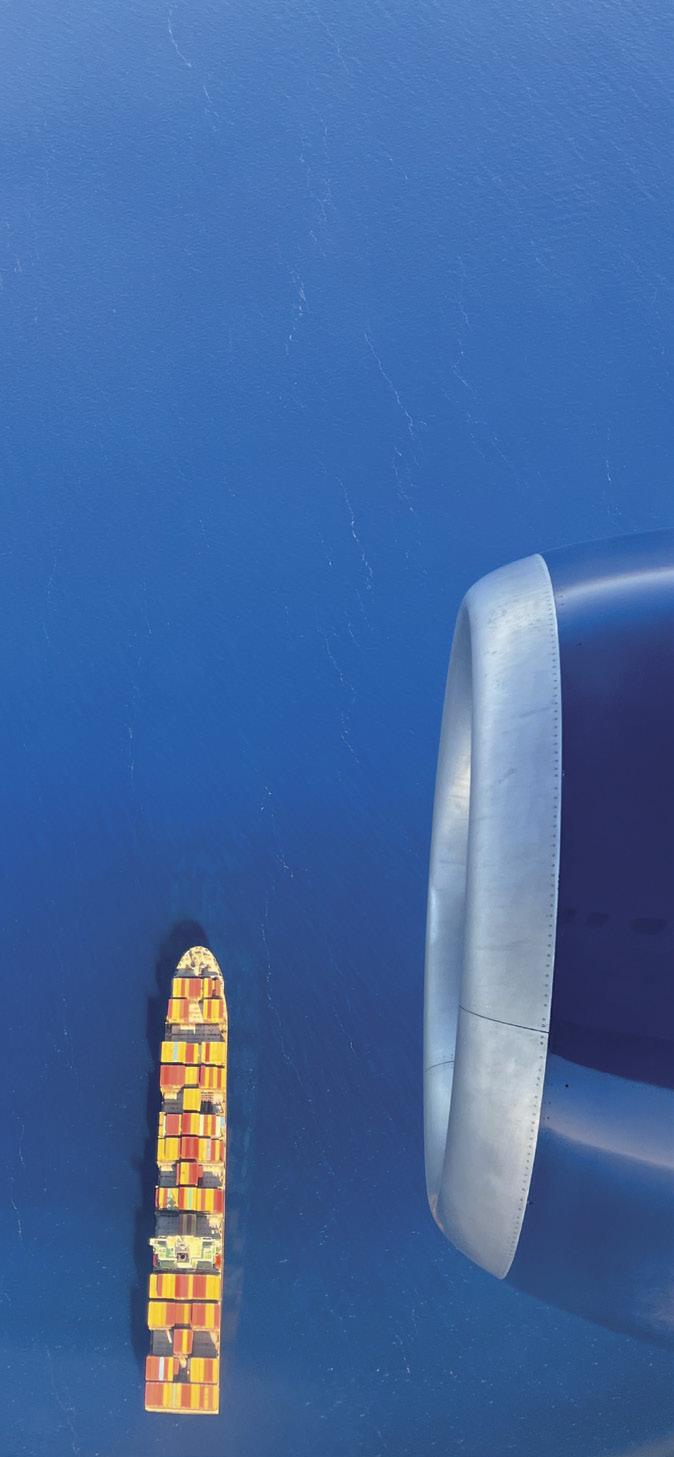
24 Breakbulk Magazine Issue 5 2023 breakbulk.com
Video Contest - WINNER
AsstrA-Associated Traffic AG
https://youtu.be/Wm5dr620A40?si=YZJYe-CMGko7icO_
Out-of-gauge heavy-lift transport of a wash tower from Spain to Poland.
Third Place
Port of San Diego
https://youtu.be/
km9ACBI6kNY?si=_saziy7uqcjrTzOZ
There’s no better way to welcome North America’s first all-electric mobile harbor cranes. Check out this time-lapse of their arrival at the Port of San Diego. Not only will these cranes transform cargo handling with their battery-powered build, highperformance, and 400-tonne lift capacity, but they’ll also allow the U.S. West Coast to handle cargo previously only handled by Gulf ports. Visit them at Breakbulk Americas, Booth G46
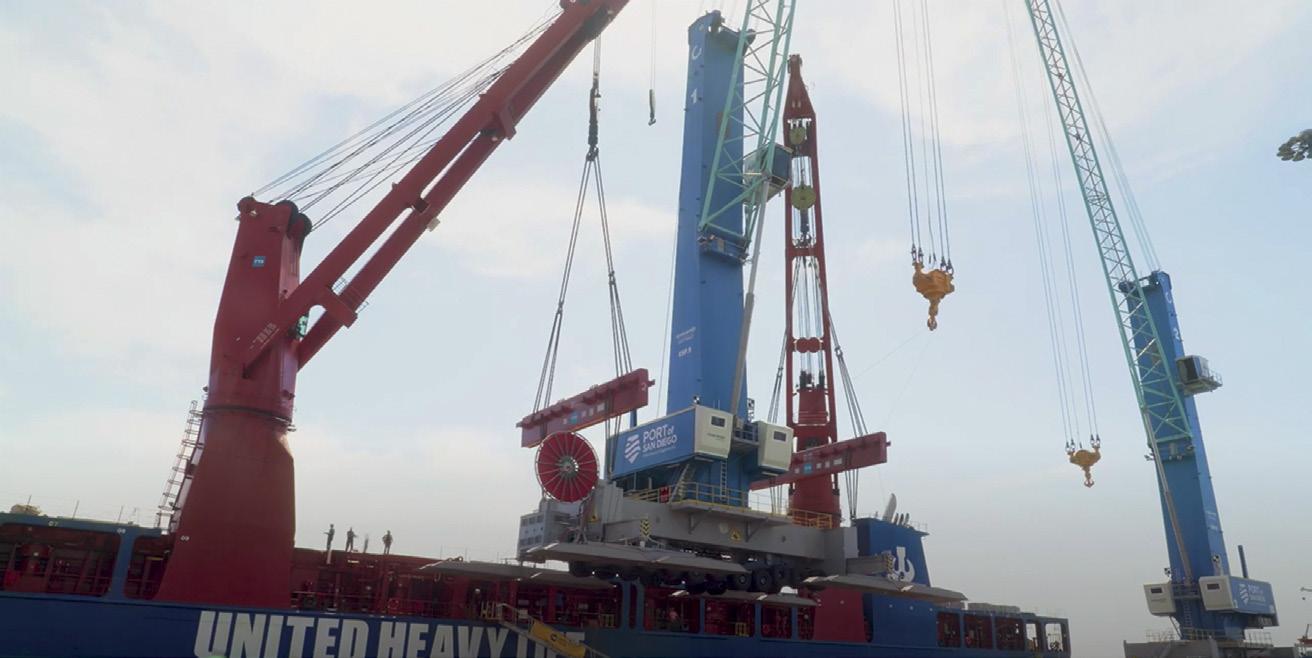
Second Place
Contractors Cargo Company (CCC)
https://youtu.be/
K8KFBKoZ0wM?si=BwY0uCnS9sCSSbTu Transport near the Gulf of Mexico, U.S. Visit them at Breakbulk Americas, Booth L05
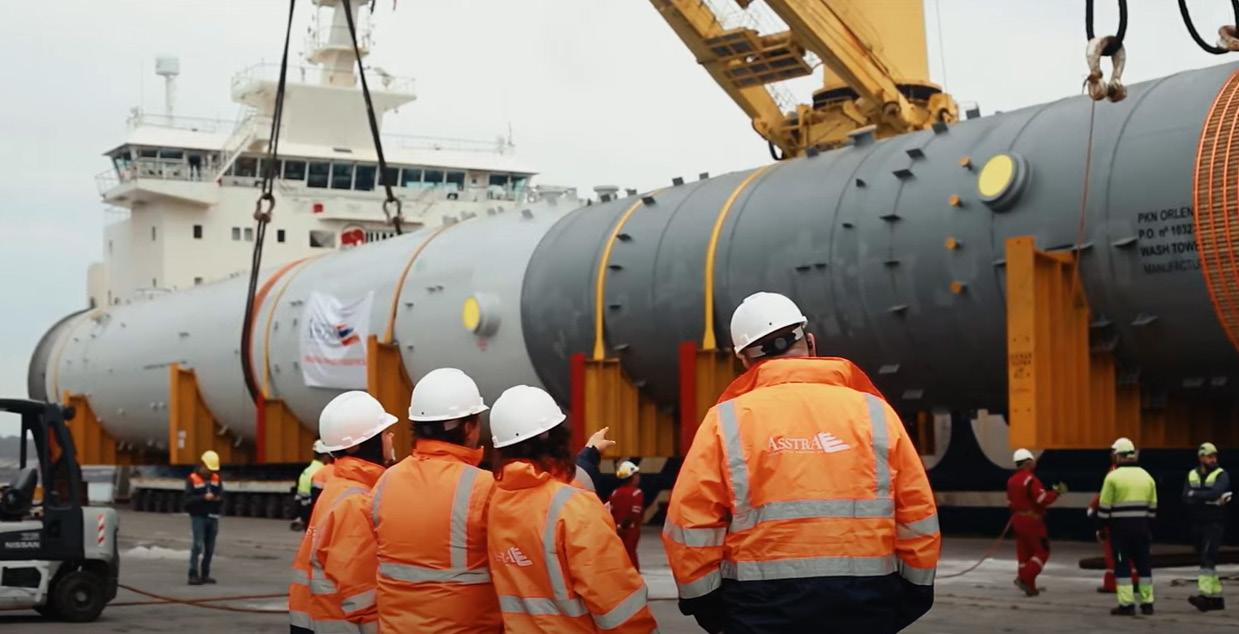

25 Breakbulk Magazine Issue 5 2023 breakbulk.com
TAILGATING GIFT GUIDE
Get ready for a season full of football and fun!
GCI Outdoor Kickback Rocker Chair
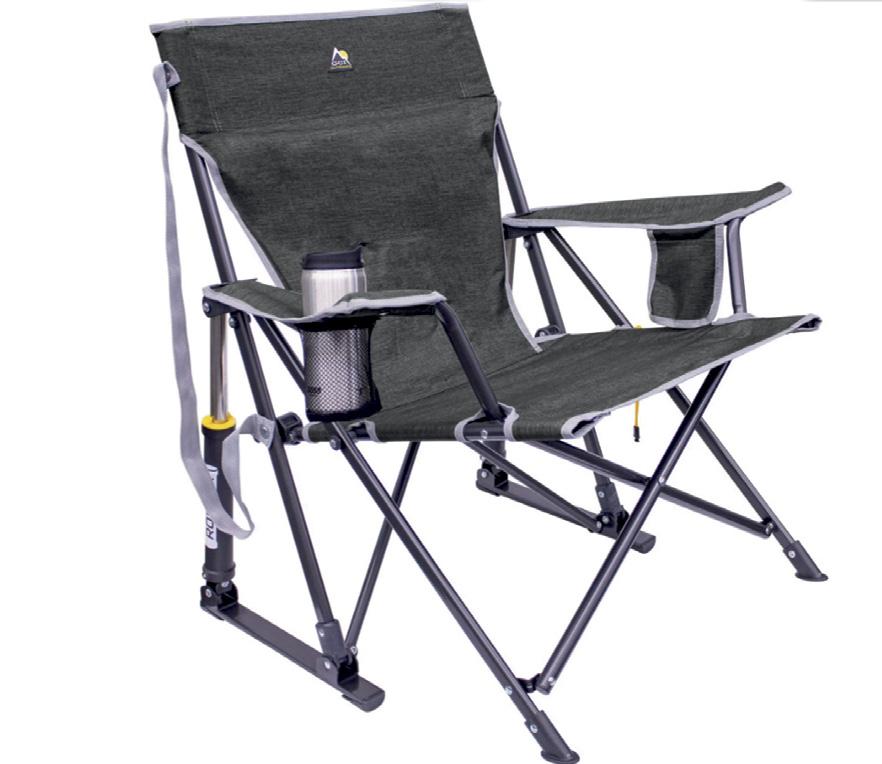
$67
Kick back and relax wherever you are. www.rei.com
Giant Jenga
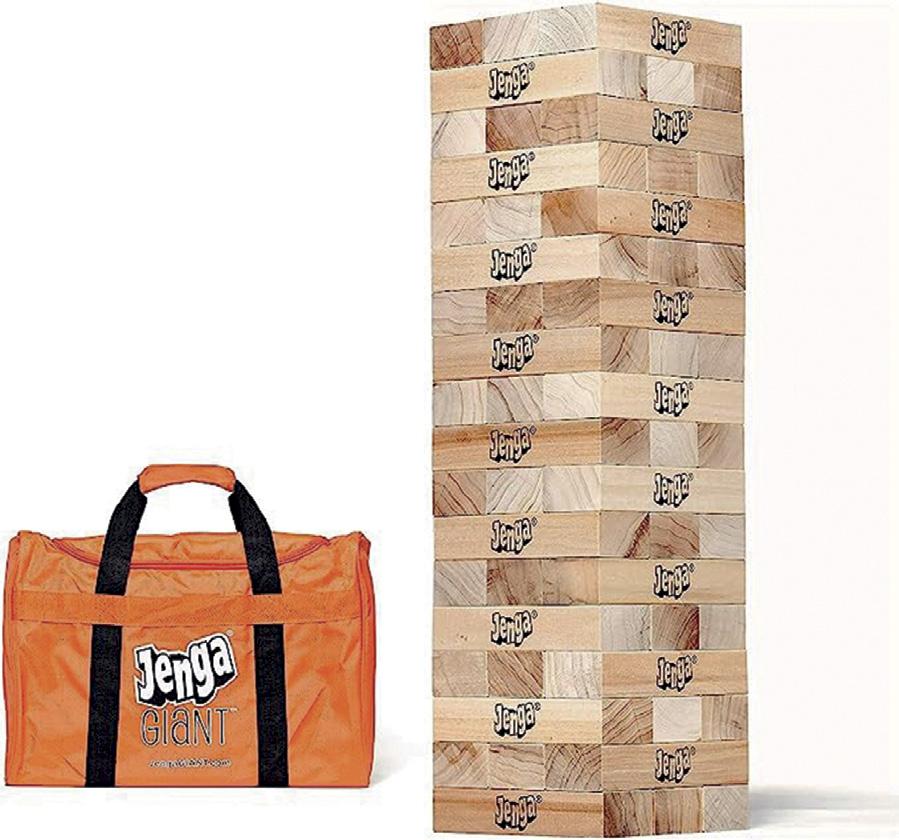
$118
Two games – great for groups to play in-between quarters. www.amazon.com
Growlerwerks Ukeg With Tap Handle
$165
Make warm and flat drinks a thing of the past. Store and share carbonated beverages with this beautifully designed growler. Keep beer, champagne, carbonated cocktails and other sparkling beverages carbonated and fresh the whole day. www.markandgraham.com

Bean Bag Toss Set 10pc - Hearth & Hand

$79.99
www.target.com
26 Breakbulk Magazine Issue 5 2023 breakbulk.com
Mastercanopy Durable Ez Pop-Up Canopy Tent

$126
All the fun outside, without all the sun. www.amazon.com
Portable Gas Grill - $89.99
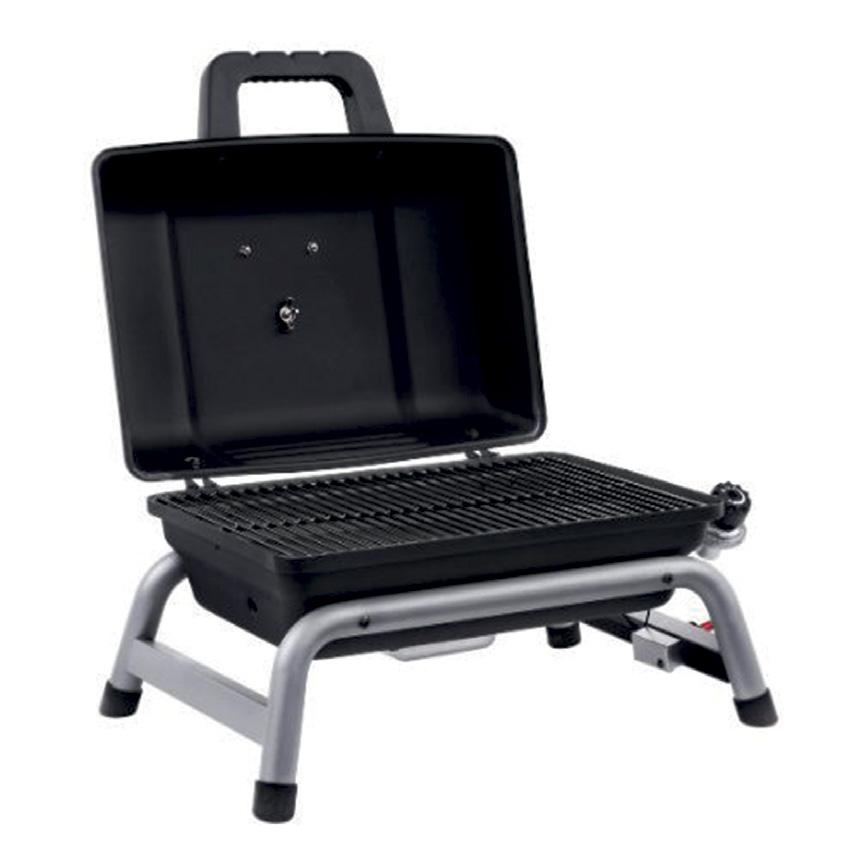
Perfect for tailgating, this lightweight, portable grill can be easily packed into your car and set up on the spot. All you’ll need is the propane! www.amazon.com
BrüMate Hopsulator Trio in Azure | 12/16oz Standard Cans
$29.99
With patented 3-in-1 technology: fitting 16oz cans, with a freezable adapter for 12oz cans and includes a locking lid to convert it into a 100% leakproof tumbler. www.brumate.com
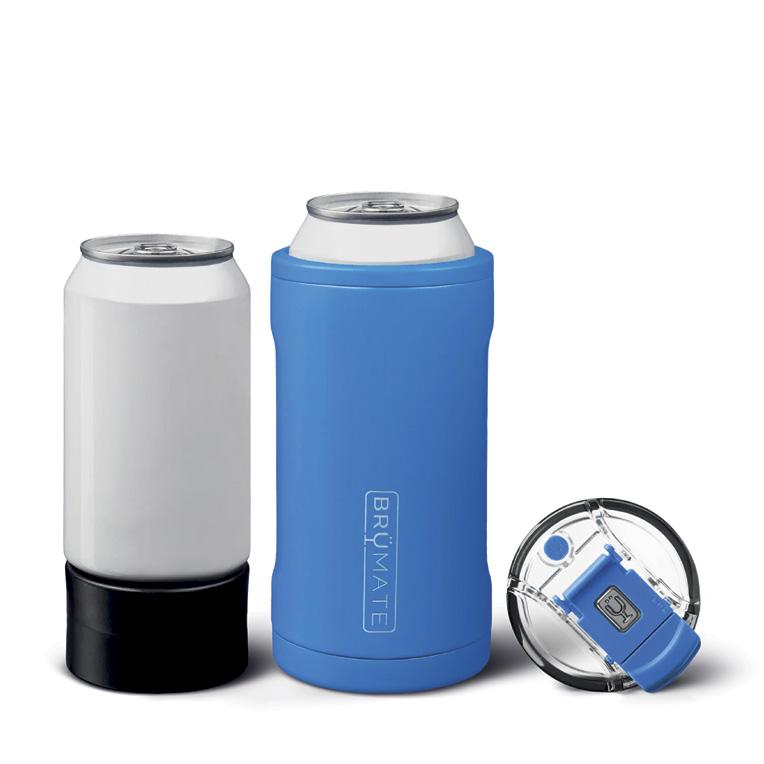
Chef’n S’mores Roaster - $49.95

A fun and portable way of making s’mores with friends and family after a day of tailgating www.crateandbarrel.com
Yeti Tundra® 35 Hard Cooler

$275.00
Holds enough for a small crew for the day. Up to 29 lbs of ice or close to 40 cans. www.yeti.com
27 Breakbulk Magazine Issue 5 2023 breakbulk.com
By Simon West
LEARNING FROM THE LEGENDS
Bechtel’s Stephen “Spo” Spoljaric on His Two-Decade Career in Project Logistics

28 Breakbulk Magazine Issue 5 2023 breakbulk.com
Profile
Stephen “Spo” Spoljaric’s introduction to logistics was, he said, “a bit of a curveball.”
Still in his first semester at New York City’s Fordham University, the freshman was leaving football practice one August morning when he bumped into a retired priest at his college who offered to help him get a summer job at a trucking firm back in his hometown of Harrisburg.
“As an economics major in the capital of the world, that wasn’t quite what I imagined,” Spoljaric said. “But I went to work for that company in Pennsylvania and fell in love with it the first year I was there.”
Since that chance meeting with the minister from the Bronx more than two decades ago, Spoljaric has carved out for himself a hugely successful career in project logistics, with early managerial stints at GE/Allyn and Alstom Power.
After joining Bechtel in 2012, the executive rose through the ranks quickly, culminating in his appointment four years ago as the engineering, construction and project management firm’s corporate manager of global logistics. Based at Bechtel’s offices in Houston, he oversees a 100-strong team of logistics professionals tasked with masterminding cargo movements for some of the world’s largest and most ambitious construction projects.
Spoljaric, who holds the position of Bechtel Distinguished Technical Specialist, the first for logistics in Bechtel’s 125-year history, is quick to acknowledge the grounding his old summer job in Harrisburg gave him.
“It really taught me the ropes,” he said. “My boss wouldn’t let me use the computer for the first two years. Everything had to be out in the yard, hands-on, assisting drivers to secure loads, figuring out how many straps they need. And then in the office, auditing freight invoices manually, learning how to look up in the old freight books what the rates should be, ordering
permits by hand – it was all about understanding how things worked.
“Learning the basics from the ground up has really allowed me to bring practical engagement to more complex problems and gain appreciation for the details.”
The “Legends” of Logistics
Spoljaric, who last year was among 25 new members appointed by U.S. Transport Secretary Pete Buttigieg to the Maritime Transportation System National Advisory Committee, is keen to point out others who, through their leadership style and groundbreaking approach to logistics, have influenced his career – “legends,” as he dubs them.
Among those he namechecks are Greg Gowans, Sandro Lepori and Phil Glatfelter at Alstom Power, David Hammerle and Dennis Mottola at Bechtel, Mike Izdebski at GE/Plug Power, Tony Vasil at the Port of Albany and Carl DeSisto at Stone & Webster.
“I feel quite lucky with some of the people I’ve had a chance to interact with. And a lot of these connections came via Breakbulk conferences,” Spoljaric said.
“Having close working relationships with these people, I think it made a difference for me and I know for a lot of others in our careers. Even now – although some are gone – if I have an opportunity, I try to pick their brains because we see cycles in our industry. Some of them have been through these cycles before and they recall how they dealt with them.”
Just as he has learned – and continues to learn – from others, Spoljaric is always ready to share his knowledge and experience with the newer generations coming through the ranks at Bechtel.

The executive stresses the “Holy Trinity” of skills new recruits should be looking to develop.
“Firstly, are they commercially aware – do they understand supply and demand? Secondly, are they technically capable – can they do
29 Breakbulk Magazine Issue 5 2023 breakbulk.com
Profile
“I FEEL QUITE LUCKY WITH SOME OF THE PEOPLE I’VE HAD A CHANCE TO INTERACT WITH. AND A LOT OF THESE CONNECTIONS CAME VIA BREAKBULK CONFERENCES”
the math? And finally, can they communicate and explain these things in a simple, easy-to-understand way? If you can do those three things, you’ll probably have a really good career in logistics and the potential to work in my role at some point.”
More than a third of his team have been with Bechtel for less than a year, meaning a good chunk of Spoljaric’s work focuses on training, tutoring and introducing his team members to the carriers and forwarders with whom the company enjoys close working relationships.
“We have won a lot of work lately, and as that work starts to pick up over the next year or two, we need to make sure those people are ready,” he said.
Bechtel’s Milestone Year
Since its inception in 1898, Bechtel has worked on more than 25,000 projects in 160 countries worldwide. The Hoover Dam in the U.S., the Channel Tunnel linking the UK and France and the Jubail Industrial City in Saudi Arabia –the world’s largest industrial city – are some of its towering achievements.
Just this year, the constructor was selected to work alongside U.S. firm Westinghouse on the design, engineering and construction of Poland’s first large-scale nuclear power plant, while in the U.S., a Bechtel-led team destroyed the last munition in the country’s chemical weapons stockpile at the Blue Grass Chemical AgentDestruction Pilot Plant in Kentucky.
The symbolic disposal of the final projectile marks the end of the US’ commitment to eradicate all its chemical weapons before Sept. 30 this year, in line with the Chemical Weapons Convention pact ratified in 1997.
“At almost every major global turn in our history, as industry has evolved, our company has been there driving those changes,” Spoljaric said.
“Now we have energy transition, and that’s going to be major – new infrastructure, new pipelines, new
storage, new ships, new everything. From the business side of it, we want to be out front as we have been at every other major industrial revolution.”
As projects become bigger and the critical equipment used to build them more complex, the work of those charged with managing logistics becomes ever more challenging. In a bid to stay ahead of the curve, Bechtel has launched an “engineered logistics” concept designed to boost predictability in project execution and transportation planning.
The concept – which Spoljaric, who has a master’s degree in industrial engineering from Clemson University, cited as one of his proudest achievements at Bechtel – aims to deploy on a much wider scale advanced technologies such as 4D/5D simulation, virtual reality visualization tools, logistics concepts using magnet technology and drones to spot potential project pitfalls and prevent downtime.
The approach also gives weight to project safety and environmental footprint.
As Spoljaric puts it, “we’re not staying on the docks yelling, ‘where’s my truck!’ We live for a challenge –always looking for a better way. We’re much more sophisticated in how we engage with our suppliers, partners and our customers, and we really look to bring a more well-rounded approach to finding efficiency and optimization, and how we manage that.”
Spoljaric has also been at the forefront of an ongoing industry initiative to standardize the way that carbon
emissions are recorded and reported. The success of a similar guideline developed for the container sector has prompted EPCs, forwarders and carriers – in collaboration with nonprofit group Smart Freight Centre – to work together to devise a set of standards that will help breakbulk achieve its sustainability goals.
Several round table meetings and panel sessions at Breakbulk events – often headed by Spoljaric – have provided the industry with regular updates on the initiative.
Thinking back to his football-playing days, the executive recalled his old coach urging him and his teammates to play on the front foot rather than react to their opponents’ plays.
Such lessons could also be applied to business, the executive said.
“Our coach basically told us, ‘listen, we’re going to control the game – we are not going to react to how the other team wants us to react‘,” he said.
“Sustainability is a hot topic right now. We strive to be thought leaders and, in line with our enterprise priorities and our vision, values, and commitments, we are helping to guide the industry in the right direction.”
Spoljaric is a member of the Breakbulk Americas Advisory Board, a group of industry professionals brought together to help shape the program for this year’s Breakbulk event in Houston. Bechtel is a member of the Breakbulk Global Shipper Network.

30 Breakbulk Magazine Issue 5 2023 breakbulk.com Profile
Colombia-based Simon West is senior reporter for Breakbulk.
Spo, his wife Dawn and their children Lucianella, Serafina, Santino and Vincenzo enjoy some vacation time.
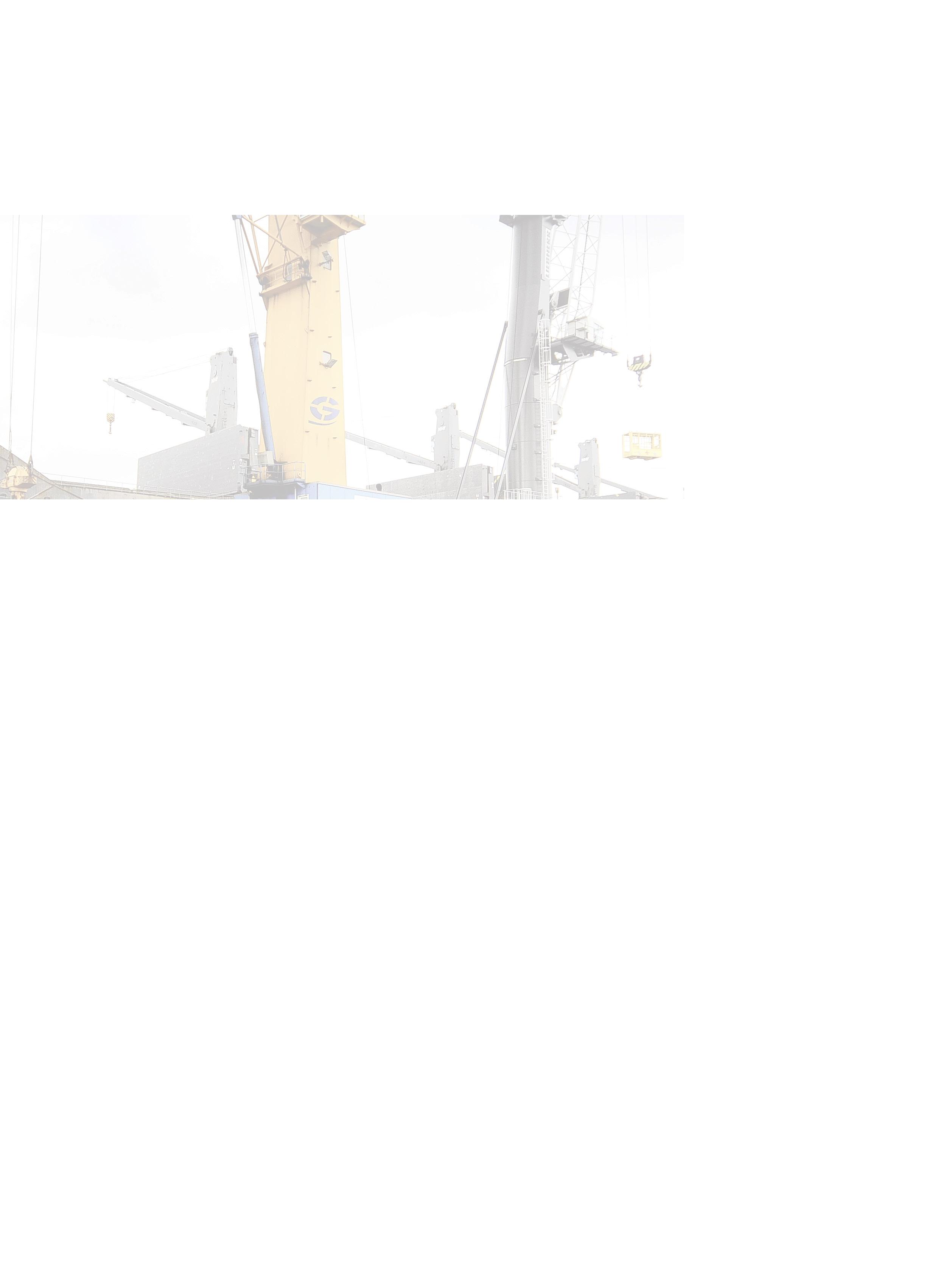

 The State of New Jersey is building a Wind Port near to Paulsboro Marine Terminal.
Credit: South Jersey Ports
The State of New Jersey is building a Wind Port near to Paulsboro Marine Terminal.
Credit: South Jersey Ports
Poised to take advantage of the heavy-lift market, American ports are investing in both equipment and expertise to ensure that they deliver at the highest level.
“South Jersey Ports is positioned to be at the epicenter of the heavylift industry,” said Dennis Culnan Jr, marketing consultant for South Jersey Ports. “Our Paulsboro Marine Terminal is the only location in the U.S. where monopiles are being manufactured and as such, we have ‘first mover’ advantage in being a key hub for manufacturing and supplying monopiles to the offshore wind industry in North America.
“Additionally, the State of New Jersey is building a Wind Port nearby which will serve as a marshalling site for the component pieces. They have already received their first tenant.”
Heavy-lift is proving to be a viable alternative to other more competitive sectors.
Greg Borossay, principal for maritime business development at the Port of San Diego, cites the example of the container space. With volatilities

and the sheer investment involved in the container market, he said it is hardly worth the effort to compete.
“Take a port like ourselves,” Borossay said. “We’re in the shadow of Los Angeles/Long Beach. From a container standpoint, it makes very little sense to try to go in and cherry-pick much of their business and compete directly with that. You can look around the world and there are any number of medium-sized ports such as San Diego that again, stand in the shadow of large, established container ports.
“So, we ask ourselves: ‘How do we build our portfolio so that it’s a mixed, healthy portfolio?’ We have done so with automobiles, military, bulks, cruise... and we are now putting the press on the breakbulk space. We have the cranes now, which will be a huge difference maker, and we have the expertise.”
Borossay explained that the reason for ports looking to enter the heavy-lift sector is twofold. “The competitive factor is Number One. Number Two: it allows a mediumsized port to play in that space and there’s a myriad of things that they can become involved in.”
Reaping the Rewards
The rewards for entering the heavy-lift market are encouraging, as the sector is helping U.S. ports to boost their year-on-year growth. North Carolina Ports reported 12 percent year-on-year growth for general cargo volume. The port’s annual report spotlighted the Ports of Wilmington and Morehead City, which in FY23, moved nearly 4.6 million short tons of bulk and breakbulk cargo.
Region: Americas
Problem: Sitting in the shadow of huge container ports makes it difficult for medium sized ports to compete for cargo
Solution: Regular breakbulk and heavy-lift business offers a steady revenue stream for U.S. ports ready to take the risk
Industry Sector Review: Mining, Oil and Gas, Renewables and Manufacturing
Wednesday, Sept. 27
12:00pm - 12:20pm
benefits with respect to heavy-lift cargo. “You have the revenue aspect, where if you don’t have a huge amount of layout space or massive terminals as we don’t – we are in San Diego and San Diego is known well for the Navy, tourism, and ‘oh by the way, we have a couple of cargo terminals.’
“We do really well with them, but we have a 97-acre facility on Tenth Avenue, which is where we focus on breakbulk, and then we have another automotive terminal, which is about 130 acres. You compare that to a terminal elsewhere in Long Beach – one terminal is 400 acres, and they have 13 of them (between LA and Long Beach). The same goes for other ports on the east coast – ports like Baltimore that do some containers... you have ports that are focused on this breakbulk space because of the revenue and because of the lack of land.”
The Port of Everett’s chief operating officer Carl Wollebek explained that the port has reaped the benefits of heavy-lift for many years. “We identified several years ago that project business was the best and highest use for our facilities given our geography, rail and road connections, labor, and equipment availability. We also pride ourselves in supporting this industry.”
Borossay said that there are other
The other factor for a port like San Diego is that it is a regional port, serving the Baja California area. The region includes San Diego county, Imperial Valley and the border of Mexico. “So, for projects that are coming up in the breakbulk space, the Port of San Diego can be a good solution for many of the shippers. We don’t have the supply chain issues and again, when you focus on containers, there’s so much infrastructure investment required there, so that breakbulk for those ports becomes a case of ‘oh, by the way, we can do breakbulk, but we really don’t do it so well.’”
33 Breakbulk Magazine Issue 5 2023 breakbulk.com
Americas
Greg Borossay
AT BREAKBULK AMERICAS…
Americas Safety Strategies
Despite the promise of heavy-lift cargoes, there are still challenges to be managed, an important one being safety.
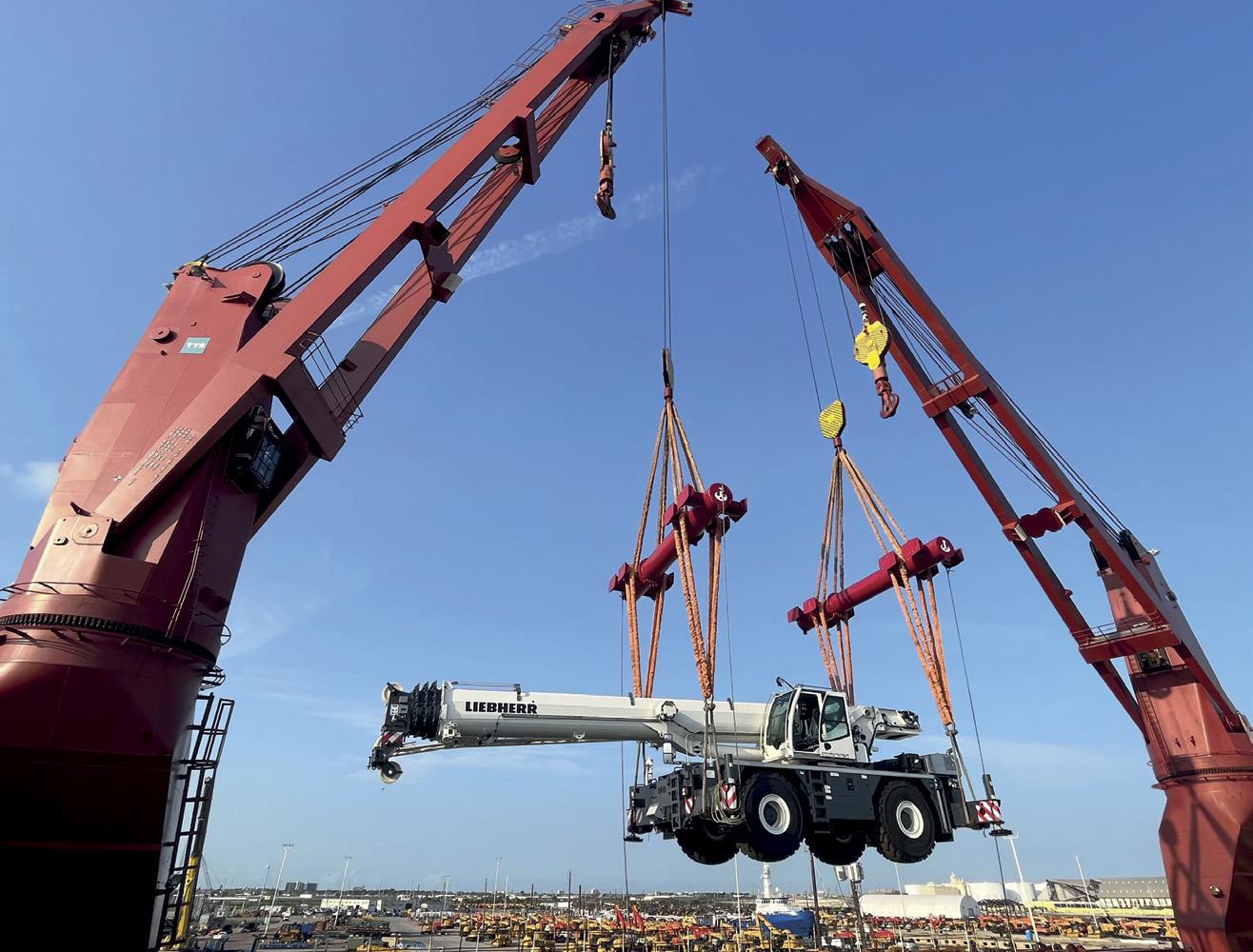

Keith Palmisano, general manager of Ports America Louisiana, said that the biggest safety challenge is working aloft when rigging gear. However, he added that planning is key to safe and successful operation: “Having a good strategy plan prior to the vessel’s arrival is critical for providing a safe working environment.”
Borossay outlined a general problem that some ports face. “If you have a port that’s not accustomed to working with multiple breakbulk pieces, and you’re doing this with a labor group that’s not really trained or geared towards that, then it could be a safety issue for the workers and staff and maybe even issues with damage for the vessels and so forth.
“We have the required expertise to handle breakbulk safely and efficiently. We feel really good about the fact that our labor group here have really good expertise. They are people who have been doing this work for decades and know how to handle this kind of piece.”
Safety issues outside the gate again relate to how cargo is run through an urban area. “You need to get the permitting,” Borossay said. “We get our permits all the way up to the California border. We have to take great pains to ensure that the drayage companies are well equipped for that. Also, clearances for railroads have to be calculated before the cargo can leave the dock.”
Another consideration is cost. While as Borossay explained “cost is everybody’s biggest challenge and it’s certainly ours,” in order to effectively compete in the heavy-lift world, U.S. ports still need to splash the cash to get a good return on investment.
“The U.S. west coast is not inexpensive,” Borossay said. “We are challenged in that sense because labor costs are high. We’re working really hard to electrify every aspect of our supply chain and to set an example in California to be on the leading edge
of electrification. The downside of that – at least for now – is that this is more costly, the same sort of paradigm that we all know – electric cars are expensive now, but maybe in a decade they won’t be so expensive, they’ll be the norm. So, to be on the leading edge, means a little bit higher expense.”
In the short term, he said the port has to “muddle through” until everybody else catches up. He gives the example of Texas, which is known for being a state that focuses heavily on fossil fuels. “They are not leading the way with environmental issues and many shippers just look at cost. We really have to sharpen our pencil on that
and sometimes, it makes no sense at all. We’re not going to compete for certain cargoes if the end points don’t make sense. But we do think in particular that for cargo coming out of Japan, Korea, North China and South East Asia – because of the deviation of the Panama Canal and because there’s this significant back-bulk cost from Texas to the south western states, that we do have a benefit.”
Palpable Payback
The Port of Everett continues to prioritize infrastructure investments that support growth in the breakbulk/ project sector. “Over the past decade,
34 Breakbulk Magazine Issue 5 2023 breakbulk.com
Galveston handles a Liebherr crane.
Credit: Ports America
South Jersey Ports’ Paulsboro Marine Terminal is the only location in the U.S. where monopiles are being manufactured.
Credit: South Jersey Ports
the port has invested more than US$150 million to modernize its seaport facilities and expand cargo handling capabilities,” Wollebek said. “From adding terminal capacity, modernizing facilities, adding on dock rail capacity, procuring additional cargo handling equipment, and implementing sustainability features to help ‘green’ the supply chain.”
Two game changing upgrades have also been recently completed by the Port of Everett. These have increased the port’s capacity and provided the ability to support more breakbulk and project cargoes. “In 2021, the port opened its modernized South Terminal,” Wollebek explained. “The US$57 million upgrade added another full-service berth in Everett with two post-panamax container cranes to support larger ships and heavier cargo.”
In December 2022, the port opened
the first all-new cargo terminal on the U.S. West Coast in over a decade, adding critical cargo capacity to the global supply chain. The new US$40 million Norton Terminal project nearly doubled the port’s upland capacity to support even more breakbulk and project cargo. It features 40-acres of paved, lit and secure cargo yard, with future opportunity for adaptive reuse of an existing 396,000 square foot warehouse. Looking at the future, Ports Americas Louisiana’s Palmisano expected there would continue to be support for multipurpose vessels carrying breakbulk, bulk, project cargo, and heavy-lifts. “By working in the heavy-lift sector, ports can support growth and improvement in our country’s infrastructure.”
South Jersey Ports’ Culnan Jr added: “We are certainly seeing more
ports position themselves for heavylift business along the Atlantic Coast in order to support the growth and to capture the economic benefits of the burgeoning offshore wind industry.”

Wollebek said that government and private infrastructure investments should make this a viable industry for years to come, while Borossay concluded that the breakbulk industry is a stable, regular business and one that will always remain. “It makes a lot of sense to build breakbulk into the portfolio because it’s the kind of cargo that keeps coming on a regular or semi-regular basis and it also has the capability of adding quite a lot of revenue as compared to the amount of volume that you’re handling. The payback there is palpable.”
FLORIDA’S
BREAKBULK DISTRIBUTION HUB
•
•
• New and expanded container services with Central America, Mexico and Asia
35 Breakbulk Magazine Issue 5 2023 breakbulk.com Americas
John Bensalhia is a freelance writer and author with 25 years’ experience of writing for a wide range of publications and websites.
Florida’s largest and fastest growing market
• Closest port to
500,000 SF of on-dock warehouse
and 7,000 linear feet of berth
Nearly
space
largest steel port
• Florida’s
Expanding lumber, perishable, container, project cargo, and heavy-lift business
PORT TAMPA
WWW.PORTTB.COM
BAY
CARIBBEAN PROJECT MARKET HEATS UP
But Guyana Continues to Lure Lion’s Share of Investment
Speak to project professionals about opportunities around the Caribbean and talk quickly turns to Guyana, the former British colony perched on the northern tip of South America that in less than a decade has become the world’s most exciting hotspot for offshore oil and gas - and a mine of wealth for companies involved in handling breakbulk and project cargo.
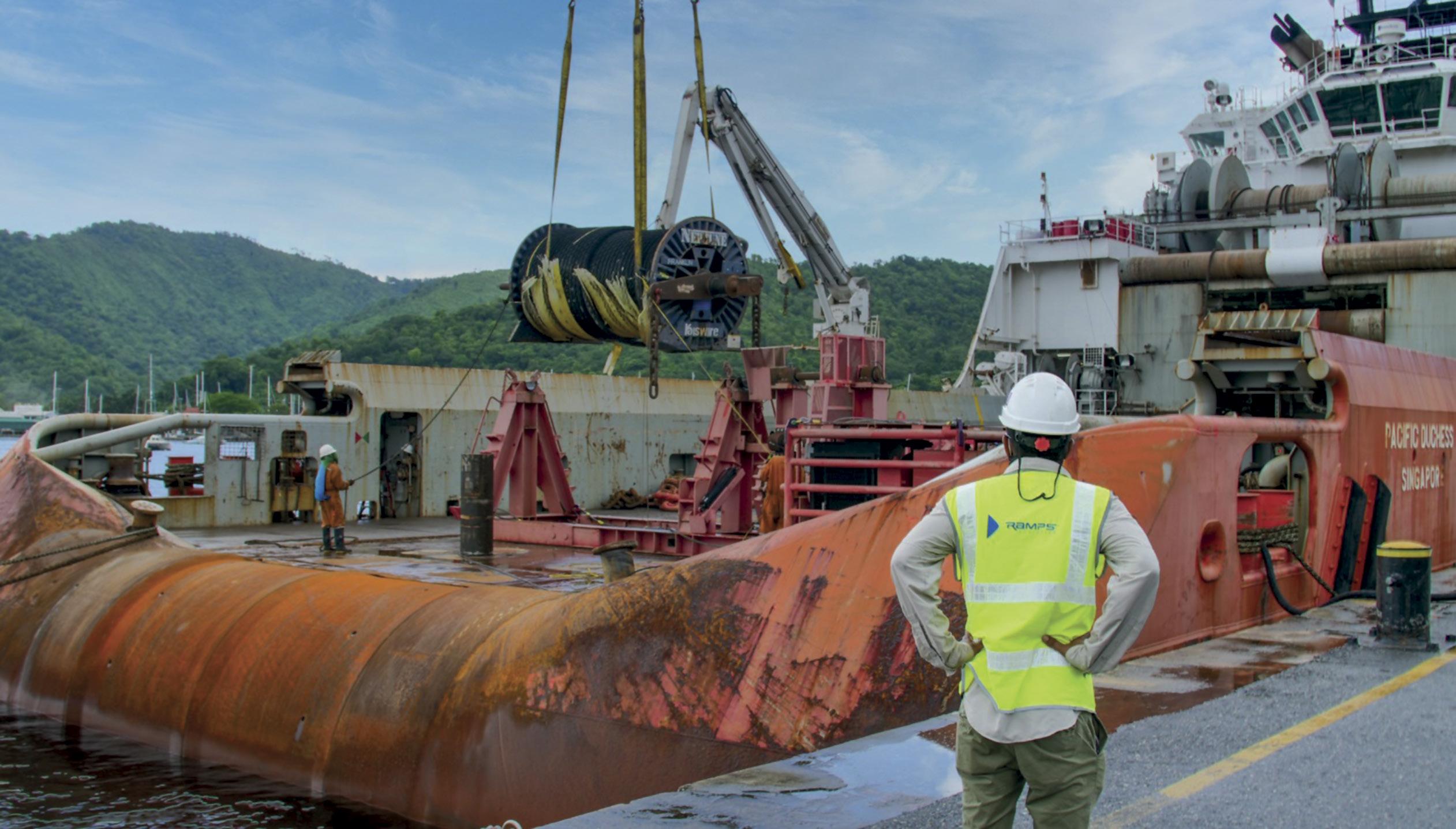
On the back of a string of discoveries, ExxonMobil and its partners are looking to deploy six floating production, storage and offloading, or FPSO, vessels by the end of 2027, which would lift Guyana’s
production capacity to more than 1.2 million barrels per day, or bpd.
A sense of excitement surrounding Guyana’s neighbor Suriname is also palpable, with the former Dutch colony
Region: Americas
Problem: Lack of coordination and standardization across the Caribbean makes planning for project handling difficult
Solution: Pioneering countries are setting their own parameters to propel project development
By Simon West
on the verge of its own offshore boom. Production sharing contracts have already been inked between state-run energy company Staatsolie and several oil majors, including TotalEnergies, Chevron, Shell and QatarEnergy. But move north from mainland South America to the Caribbean islands and territories, and the discussion becomes a little more circumspect.
Roberto Fernaine, regional head of Latin America & the Caribbean at Maersk Project Logistics, or MPL, said project opportunities in much of the archipelago – which comprises
36 Breakbulk Magazine Issue 5 2023 breakbulk.com
Americas
Trinidad’s ports and infrastructure have been used to handle most of the heavy and oversized cargo destined for Guyana’s offshore oil and gas projects.
Credit: Ramps Logistics
13 sovereign states, 12 dependent territories and thousands of smaller islands and cays stretching from the Bahamas off the coast of Miami down to Trinidad and Tobago off the northern shores of Venezuela – were “in a smaller number.”
“That doesn’t mean that they don’t have potential, but it’s just small in comparison to everywhere else in the region. The businesses in those islands are not necessarily related to a particular project logistics volume, but you do have specific projects that sometimes arise,” said Fernaine, who has worked on projects in the Dominican Republic, Guatemala, El Salvador, Nicaragua, Suriname, and Trinidad and Tobago.
“If you go to the smaller islands – to Aruba or Saint Martin, or to Bonaire or Curaçao – you may have an expansion of a refinery or a processing plant here and there. But these are very small capex approvals with a very limited amount of resources that sometimes take too much time for a company like ours to be dedicated to. Those projects are usually awarded to smaller service companies dealing in the project logistics business.”
Building Up Expertise
One project professional, who asked not to be named, has worked on projects throughout the Caribbean – mostly on a spot basis.
“I’ve managed operations for multiple companies, and in my time in the Americas, there’s always been a project that we’ve had to execute in the Caribbean. But we’d always parachute our team in, they’d execute the job, we’d bring some equipment from elsewhere, and as soon as our job was done, everybody scatters,” the executive said.
“There’s not the same level of investment and focus in these countries because the activity just isn’t there. So we ask ourselves, how do we justify involvement, or how do we start to strategize and put someone in position?”
The executive pinpointed some of the challenges facing logistics
firms in the Caribbean, where many of the dependent territories have their own laws and regulations that can complicate the movement of breakbulk and project cargo. Shipments to Puerto Rico, for example, are still bound by the requirements of the Jones Act – the century-old law that says goods and equipment can only be transported between U.S. ports by vessels that are built, owned and manned by U.S. citizens.
“When we get into discussions for any type of project activities, supporting operations, transport – it’s critical that we understand what the requirements are in each country.”
“A case in point – there was no streamline of protocols regarding how Covid vaccines were going to be received from island to island. It was completely different everywhere. Aruba had one set, Puerto Rico had a set, St. Thomas had a set, Dominican Republic had their rules and quarantine. Everything was completely different. It never got standardized.”
One solution could be the expansion of regional trading blocs such as the Caribbean Community, or Caricom, which comprises 15 members and five associate members of mostly English-speaking nations plus Suriname and Haiti, or the creation of new alliances to harmonize policies and boost economic growth.
“I like to think of those GCC countries in the Middle East, where you have a more standardized approach as far as doing business,” the executive said. “I think it would be great for the Caribbean and it would help alleviate a lot of those – I guess – “confusions”. It could possibly be a solution, and if it’s not a solution, then it could be an avenue toward one.
“It’s a forever evolving lifecycle down in the Caribbean. And I think that’s starting to make it very attractive for a lot of people. But we need to make sure we spend time looking at it, understanding the culture, the dynamics, the politics, because
Latin America Spotlight: Outlook, Projects and Opportunities
Wednesday, Sept. 27
1:20 pm - 2:10 pm
every single country is different. How we do something in Puerto Rico for example is different to how we do it in St. Thomas, and the islands are neighbors in the same territory.”
Bright Dominican Republic Prospects
Still, some exciting opportunities for breakbulk and project cargo are starting to emerge in one or two of the bigger islands. Fernaine singled out the Dominican Republic – which shares the Caribbean island of Hispaniola with Haiti – and the U.S. territory of Puerto Rico.
The Dominican Republic – a country whose prospects are bright enough for Fernaine to consider deploying a full-time presence in the country – has embarked on a clean energy drive in a bid to generate 25 percent of its power from renewables by 2025. Some 14 world-scale solar photovoltaic, or PV, plants and three wind energy projects currently being built are expected to add about 800 megawatts, or MW, of energy by the end of the year.
Puerto Rico, meanwhile, still recovering from the impact of Hurricane Maria in 2018, remains focused on rebuilding key infrastructure, the MPL executive said.
“Dom Rep is the most exciting island to be in based on its economic drive and size – you have a number of sectors there that continue to grow in comparison with other islands in the region,” he said. “Then you have Puerto Rico, which is also a growing island, especially with the large financing it receives from the U.S.”
37 Breakbulk Magazine Issue 5 2023 breakbulk.com
Americas
AT BREAKBULK AMERICAS…
Ramps Logistics also pointed to the growing project market in the Dominican Republic. The Trinidad and Tobago-headquartered forwarder has an agency agreement in place that “works well,” according to Dale Lutchman, vice president of customer experience.
“We have a really good agent –they’re responsive on time. They also help us with a few other things we do on our charter desk, so we don’t see that need just yet for our own office,” Lutchman said.
The executive picked out some exciting project developments in Trinidad and Tobago itself, whose well-equipped ports and infrastructure have been used to handle most of the heavy and oversized cargo destined for Guyana’s offshore oil and gas projects.
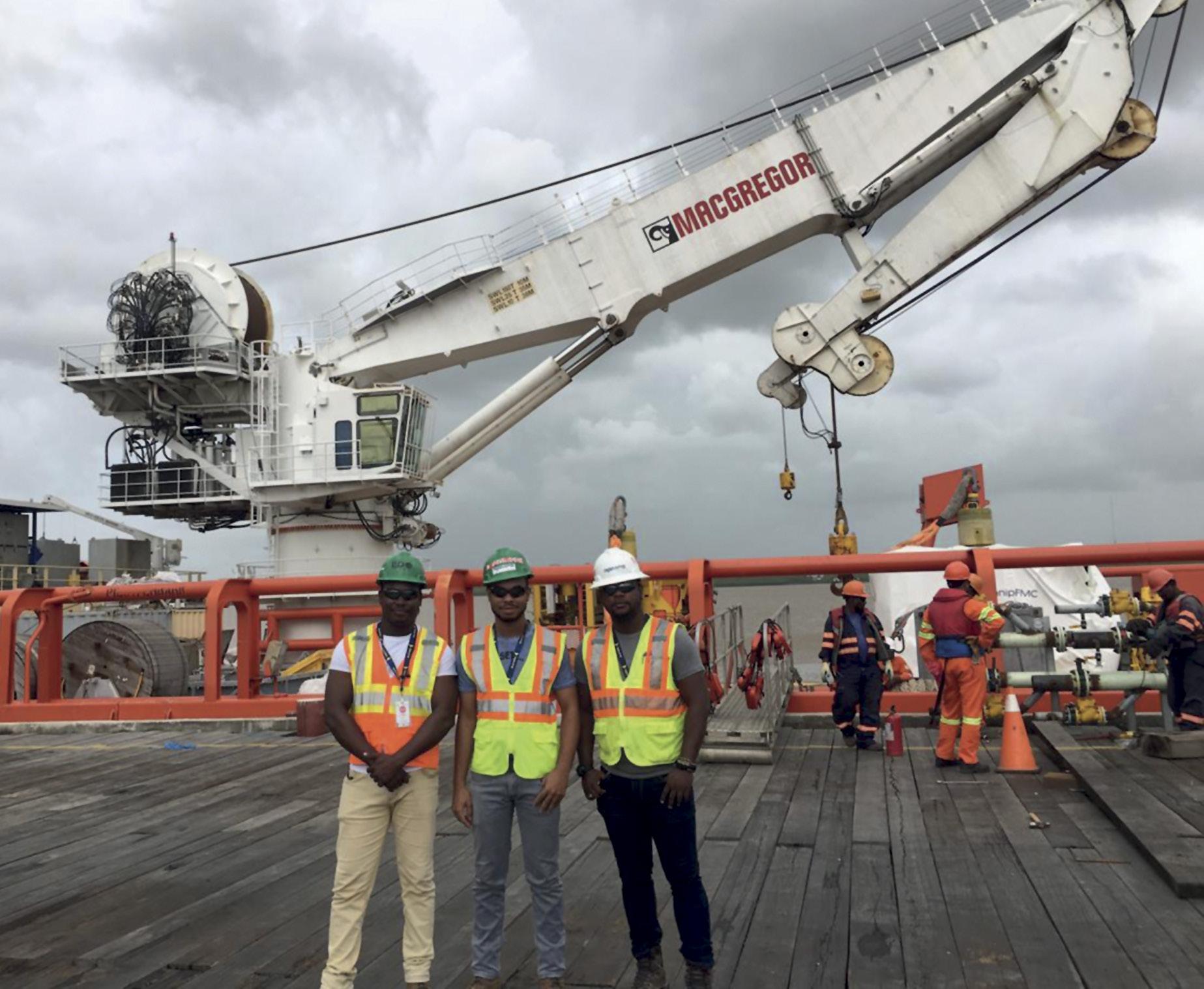
In April, a consortium of bp, Shell and green energy developer Lightsource bp began construction work on Trinidad’s first utility-scale solar PV project – a 112-MW plant located across two sites at Brechin Castle and Orange Grove. A new substation close to Trinidad’s airport will also be installed.
“We expect to see a lot of moving parts and large solar panels, generators and everything coming in from Europe, (as well as) Mexico and other parts of South America,” Lutchman said.
In the upstream sector, the island’s offshore Manatee gas development project, operated by Shell, is slated to start production in 2025. A frontend engineering design, or FEED, contract was awarded to Houstonheadquartered McDermott in April.
Guyana Steals the Show
For all the talk of prospects elsewhere, it is Guyana that continues to grab the lion’s share of investment – and will likely do so for years to come.
ExxonMobil reaffirmed its commitment to Guyana’s offshore sector after announcing in August plans to spend another US$13 billion, this time to develop the Whiptail field, its sixth offshore oil project in the country. For breakbulk movers wanting to
get a slice of the action, the country’s strict local content laws mean seeking out Guyanese partners.
Blue Water Shipping has already acquired Guyana-owned and operated Falcon Logistics, while UTC Overseas has joined forces with Guyana Shore Base Inc. to offer operators project forwarding, warehousing, distribution and shore-based services, along with air, ocean and land transportation and customs clearance.
CET Logistics is another company looking to set up business in Guyana.
The Rio de Janeiro-headquartered forwarder, which specializes in transport, logistics, supply chain and storage for the global oil and gas industry, has already conducted fact-finding missions to both Guyana and Suriname.
“You will need a local reliable partner in order to comply with the local content policy,” said Marcelo Franceschetti, chief commercial officer at CET Logistics.
“It is imperative to establish a trustful local partnership agreement that is good for both parties the moment it’s signed but also later in the years to come. This is key for success – as is the case in other regions of the globe – which prevents any future pitfalls.
“But it’s worth it. The booming country, when you look at the region – it’s really Guyana.”
Ramps, one of the leading logistics providers for Guyana’s offshore sector,
has teamed up with several companies in the country. Earlier this year, the forwarder solidified a contractual partnership with N&S Algoo, Guyana’s largest commercial broker, to provide local customs brokerage services.
“We approached them as one of our local content efforts, and we were able to come to a mutual agreement,” Lutchman said. “They don’t have the experience of the energy industry, but they’re a family-owned company and they share a lot of cultural similarities to Ramps. They’re getting their feet wet bit by bit, understanding the sector, understanding its needs, its timelines. And we’re working with their staff to train them up to make us all stronger.”
Meanwhile, the development of onshore infrastructure to support oil and gas operations – such as the nation’s first deepwater port on the Berbice River and the US$300 million Vreeden-Hoop shore base in capital city Georgetown – continues to ramp up.
“You’re seeing that investment both by the private sector and the government to develop the growing industry, both technically and professionally in terms of infrastructure and personnel,” said Rudy Rampersad, operations director at Ramps. “So we are seeing that improvement – some major, major improvements coming on board. Lots of positive signs.”
38 Breakbulk Magazine Issue 5 2023 breakbulk.com Americas
Simon West is senior reporter for Breakbulk.
Ramps has partnered with several companies in Guyana.
Credit: Ramps Logistics
BUILDING LOGISTICS SOLUTIONS EMPOWERING YOUR GROWTH

TRUCKLOAD OVERSIZED
HEAVY HAUL
REFRIGERATED TRANSLOADING
PROJECTS
DRAYAGE EXPEDITED HAZMAT
WAREHOUSING
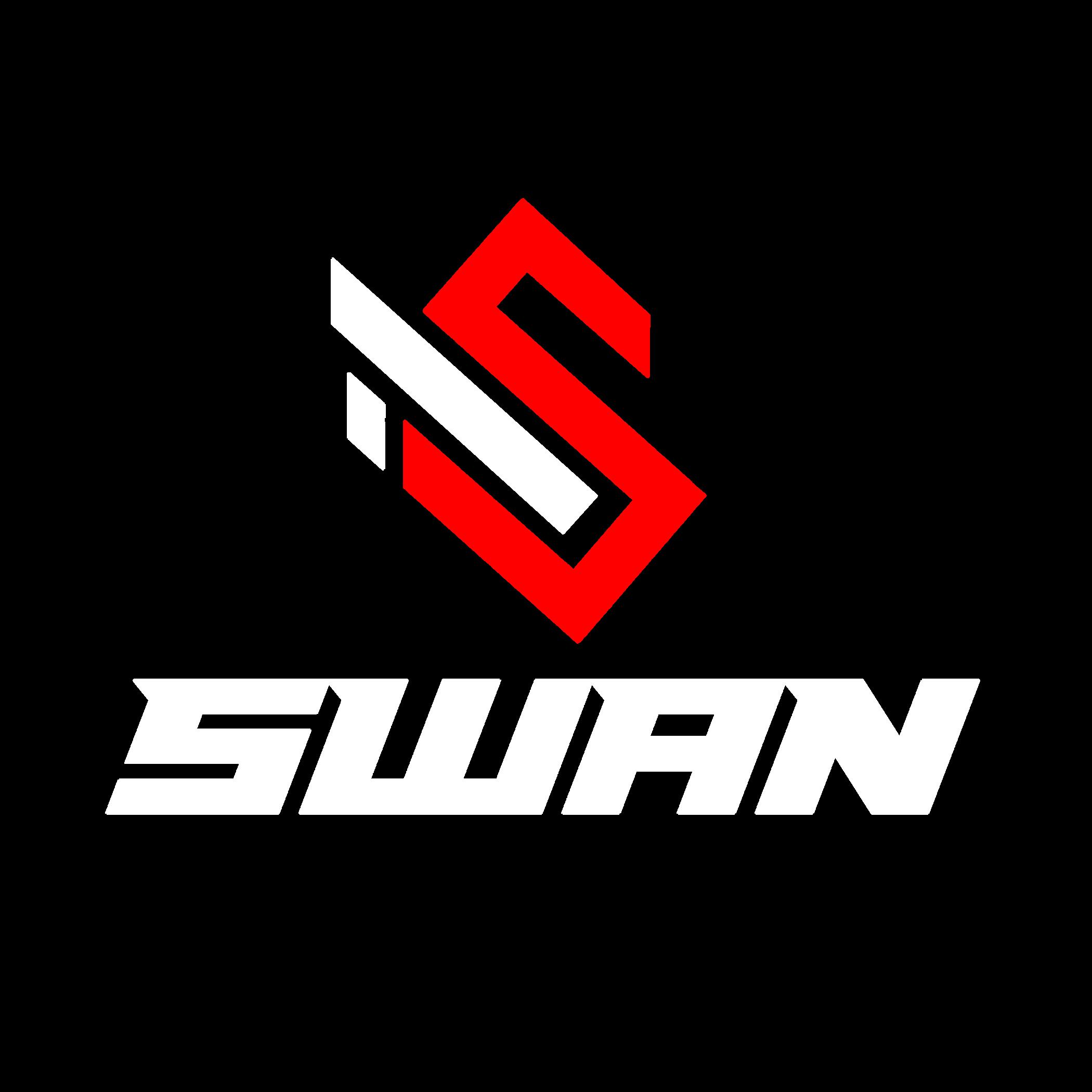
 By Iain MacIntyre
By Iain MacIntyre
KEEPING UP WITH THE JONES’
Jones Act Challenges to US Offshore Wind Development
Stakeholders have expressed mixed views to Breakbulk as to how efficiently the U.S. offshore wind industry can develop given the current shortage of Jones Act-compliant supporting vessel capacity.
Expressing confidence that the maritime industry can collaboratively rally and adapt to current challenges is 3D Marine USA (Brookes Bell) head Martin Twomey, whose Houston-based

Region: Americas
Problem: A lack of Jones Act compliant vessels threatens to hold back the development of U.S. offshore wind
Solution: Workarounds and government subsidies to help boost building could fast-track ship supply
firm provides marine surveying and insurance services to the sector.
“We see the U.S. offshore wind industry providing growth opportunities for our operations,” he told Breakbulk. “There are various hurdles to overcome, but I see an overall progression in the development
of the U.S. offshore market. As more projects come online, the supporting infrastructure will develop.”
However, in contrast, Heiko Hinrichs from the chartering department of Schulte & Bruns does not see the sector advancing efficiently given the current legislative impositions. “The U.S. does not have the capacity to build the ships in time needed for their offshore projects,” he said. “Given the high demand for wind turbine installation vessels, or WTIVs, elsewhere in the world there will be a shortage of ships which consequently will delay their green energy developments.
“There is one under construction in Houston currently which will be the first to be Jones Act-compliant. But that vessel won’t be able to meet the high demand – more will have
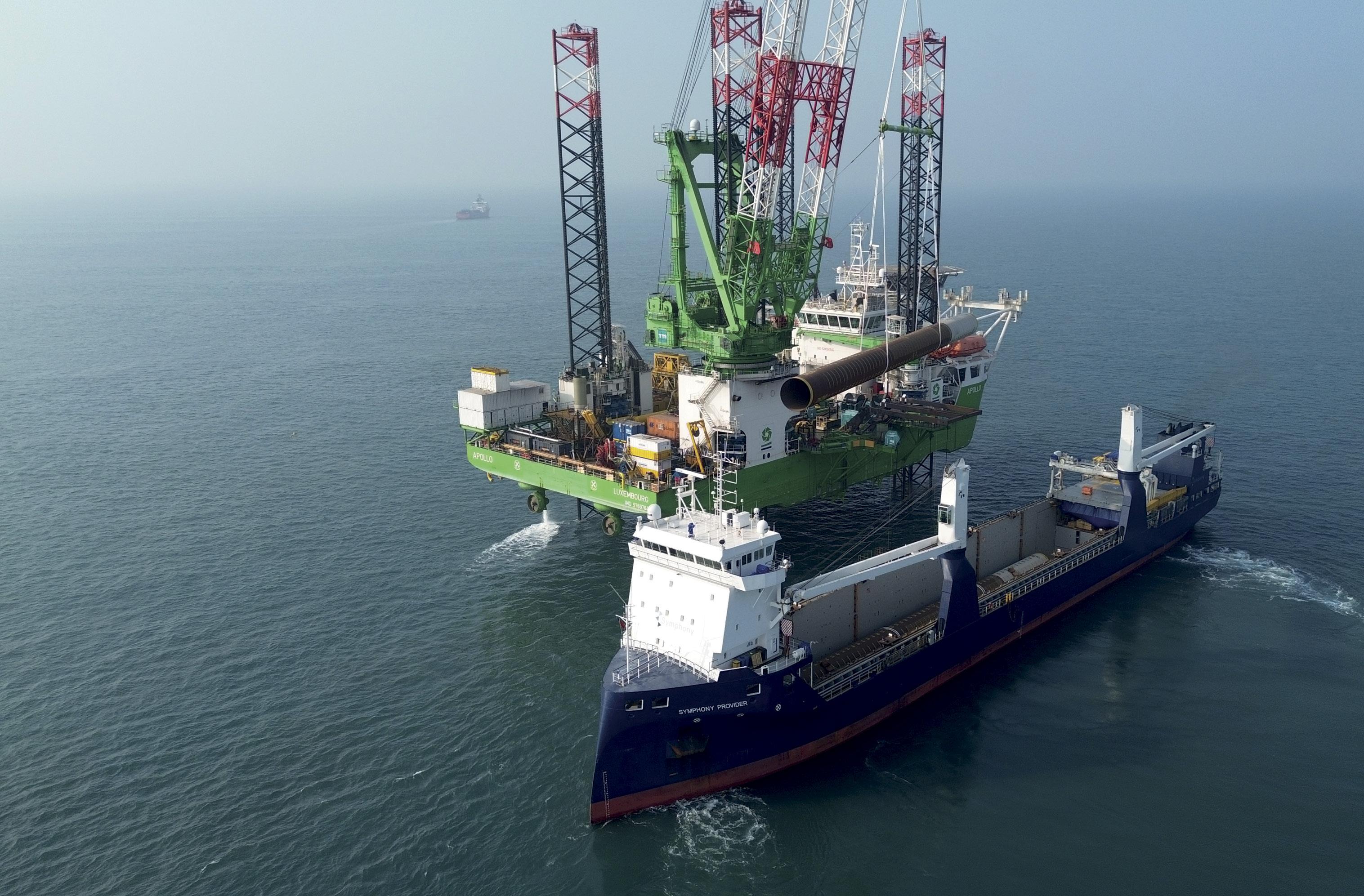
40 Breakbulk Magazine Issue 5 2023 breakbulk.com
Martin Twomey
Schulte & Bruns’ Symphony Provider feedering pin piles offshore to the Zhong Neng offshore wind farm Project in Taiwan.
Americas
Credit: Schulte & Bruns
to be built – and meanwhile, more feeder solutions will be necessary.”
Hinrichs said that as it is “way too expensive” to build tonnage in the U.S., as required to comply with the Jones Act, his Groningen, Holland-headquartered fleetoperating and chartering firm has no plans to enter this market.
“Because of the Jones Act, the number of carriers allowed in that industry is limited. We don’t have any vessels that comply with these regulations, we can therefore only engage in projects that involve transporting components from overseas ports – primarily Canada and Europe – to American ports.”
Exploring Workarounds
While acknowledging the current tonnage situation, Twomey countered that U.S. operators are actively gearing up to address the capacity shortage. “Demand for offshore wind vessels will ultimately depend on how many of the U.S. projects get final approval and progress to the development phase. Growth plans are ambitious but not all projects may come to fruition.”
He also observed that “workarounds” are being explored, such as local operators contracting in foreign-flagged WTIVs and using feeder vessels or tug-and-barge applications to transport the various components of the wind turbines to installation sites.
“Several U.S. operators are already working in this area and are in the process of building or modifying existing tonnage to service the U.S. offshore wind market.
“The above particularly applies to East Coast projects where turbine installations are mounted on fixed foundations in relatively shallow waters. Whereas floating offshore wind turbine installations are being proposed for the U.S. West Coast projects. The advantage of floating offshore turbines is that
they can be constructed near shore and towed to the installation site, allowing existing U.S. tonnage to service the industry with offshore construction and tug solutions.”
Twomey also remained optimistic that other obstacles – such as labor issues and a lack of shorebased infrastructure to function as staging grounds – will equally be proactively navigated.
“U.S. operators and service providers are gearing up to deliver various projects that will assist growth, but it will require significant investment to achieve these ambitions.
“The U.S. Department of Energy is focused to develop this industry and reduce the costs of these projects. So perhaps government support and subsidies may need to be provided to scale up the U.S. offshore wind industry to the required levels to progress with these projects.”
In this vein, he noted a further round of offshore wind lease auctions are planned this year, including one in the Gulf of Mexico in August.
“The present administration aims to deploy 30GW of offshore wind energy by 2030. The rapid growth in the U.S. offshore wind pipeline reflects strong federal and state government commitment to clean energy expansion and the industry’s response to those goals.”
Despite the encouraging progress to date, some challenges and barriers do remain, he added, including rising project costs, lengthy and unclear permitting processes, and regulatory restrictions. “A strong, collaborative approach between industry stakeholders and government bodies will help tackle these obstacles.”
Positives and Negatives
Highlighting the Jones Act itself, Twomey sees more positives than negatives.
“Jones Act-compliant vessels are generally more expensive to construct and operate, which adds to
AT BREAKBULK AMERICAS…
Project Outlook –Are We Ready?
Wednesday, Sept. 27 12:20pm - 1:10pm
the overall cost of a project. However, the Jones Act benefits and supports U.S. jobs and U.S. companies.”
He noted that there are currently over 30 new or retrofit vessels ordered or under construction at U.S. shipyards.
“The majority of these are crew transfer vessels, however, there are also three service operation vessels ordered or under construction and one WTIV. Several other vessels at the conception design phase are likely to advance to confirmed U.S. Jones Act-compliant orders.” It’s not just U.S. shipyards that benefit from the growth in offshore wind developments, but so too does the wider supply chain and economy, he added.
Hinrichs, however, described the legislation as an “obstacle” to efficient development of the country’s offshore wind sector. “The basic idea of the Jones Act is to ensure that maritime commerce between U.S. ports is conducted using vessels that are built in the U.S., owned by U.S. citizens and crewed by U.S. citizens or permanent residents.
“But given the fact the U.S. does not have any suitable vessels to deliver and install their offshore windfarms they should either scrap the Jones Act or at least lift it for offshore wind projects in order to save U.S. taxpayers’ money.”
41 Breakbulk Magazine Issue 5 2023 breakbulk.com
Americas
Iain MacIntyre is a New Zealand-based, awardwinning journalist, with lengthy experience writing about the global shipping scene.
FLYING SOLUTION FOR BLADE DELIVERY
Suresnes, France-based Flying Whales is eyeing the U.S. offshore wind sector as a prime market opportunity for its Large Capacity Airship 60 Tons (LCA60T).

“For small wind parks, with a few wind turbine generators in total, justifying the mobilization of Wind Turbine Installation Vessels (WTIVs) – which will be lacking on the market in the next years – can simply not be cost-effective anymore,” said business development and strategy manager Antonio Fois. “In this sense, heavy cargo airships might compensate a portion of the shortage of WTIVs by injecting additional supply in the market.”
He added that there are few ports today that can handle the heavy loads and height requirements for bridge clearance associated with offshore wind development and this will introduce a certain degree of uncertainty even if WTIVs are available, unless major infrastructure investments are made inside and outside ports.
With its point-to-point
transportation, the LCA60T has no need for bridge clearances, or exceptional convoy. “The airship can transport the blades directly from the manufacturing facility to the offshore wind farm location,” Fois said.
Over the next ten years Flying Whales expects its American deployment to reach 15 LCA60Ts – which as classed as aircraft and not maritime vessels are exempt from the Jones Act – with Fois suggesting the market has ultimate potential for over 50 of the airships.
“[Although] production will be done in Canada, the operation of these aircraft in the U.S. will mean developing and acquiring significant facilities as well as hiring and forming manpower [in that country].”
Fois said the LCA60Ts – which have a 60-tonne capacity, an almost 100-meter long cargo hold, and have the capability of loading and unloading in hovering flight – have already proven an ideal option for the onshore wind market.
“We are able to deliver multiple
blades to landlocked and hardto-access areas that would otherwise need major infrastructure developments to reach.”
If they do not embrace such solutions, Fois said developers of the U.S. offshore wind industry will face “great uncertainty regarding timeline and costs of delivery.”
“This is mostly due to the transportation and installation availability. On top of that, topics such as decarbonization are already echoing in the market and they will become more and more hot themes which cannot be avoided anymore.
“The LCA60T is a real solution for helping de-risk wind farm project construction, assuring on-time delivery at cheaper costs, and additionally reducing environmental footprints associated with WTGs component transportation.
“For small wind parks, operating from the sky can be a great solution to the lack of suitable vessels for doing the same job and still fall within the regulations imposed by the Jones Act.”
42 Breakbulk Magazine Issue 5 2023 breakbulk.com Americas
Coke drum hangs on a crane ship. Credit: DHL
LCA60T in operation.
Credit: Flying Whales
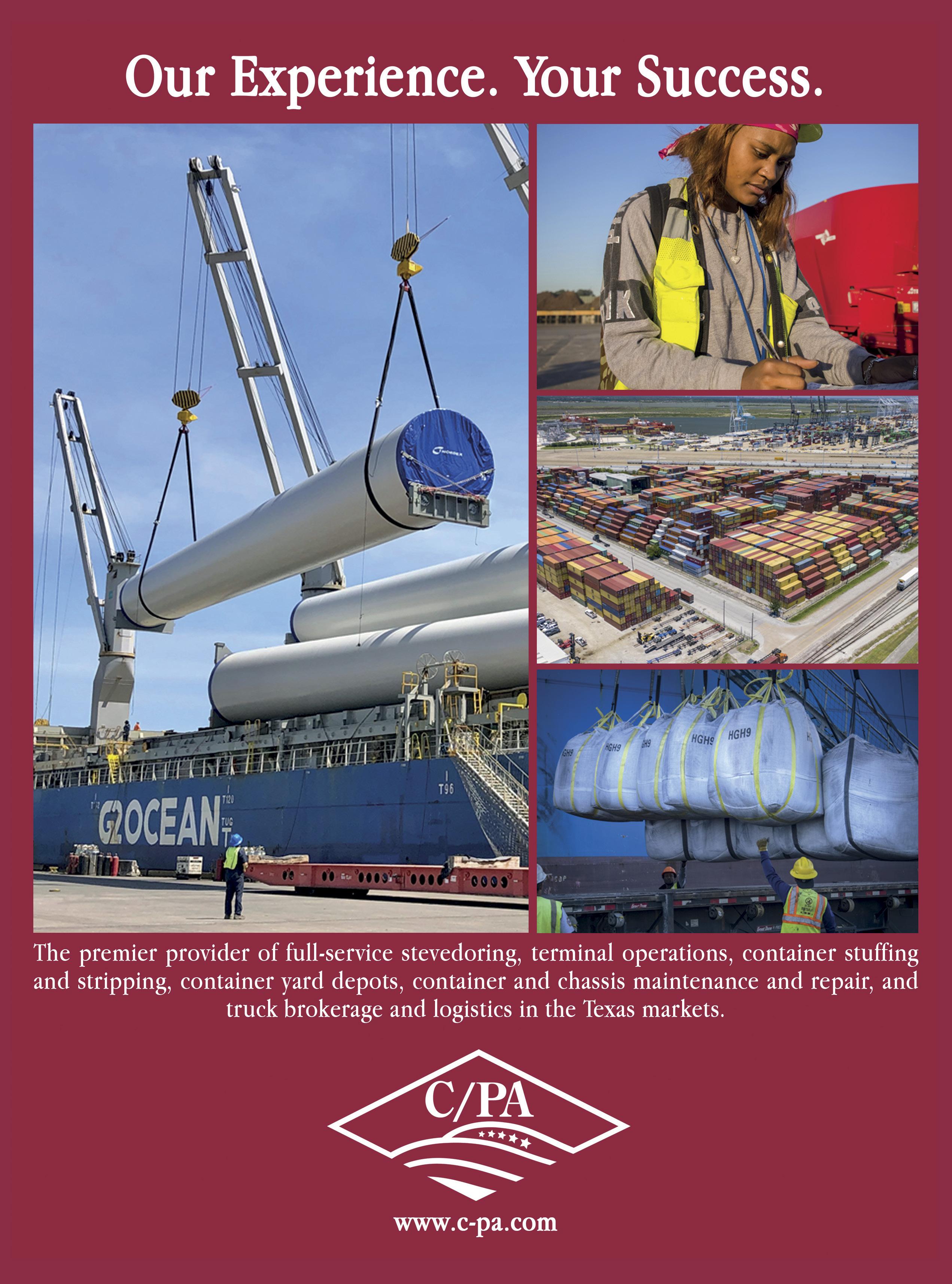
“GRAND PLANS” FOR AMERICAS
Roll Group USA’s Edward Talbot Extols the Allure of Projects
By Liesl Venter
There was nothing fancy or extraordinary about the advertisement that changed the course of Edward Talbot’s life. As an engineer working in his hometown of Burton-on-Trent in the UK, he had never considered delving into the intricate world of project cargo. “It was an opportunity for a job at ALE at their UK office. I had randomly come across it and, spur of the moment, decided to contact them to interview for the role,” he told Breakbulk
That marked a turning point in the career of the now managing director of Roll Group USA, propelling him towards an entirely new trajectory. Coincidentally, ALE’s Middle East office was also actively seeking a candidate. In a peculiar twist, the Middle East team presented him with an unexpected opportunity even before the UK counterparts could contact him.
In 2007, Talbot relocated to Abu Dhabi with his mechanical engineering and business management degree from the University of Liverpool and a couple of years of experience as a project manager in the food and pharmaceutical sectors. “Within
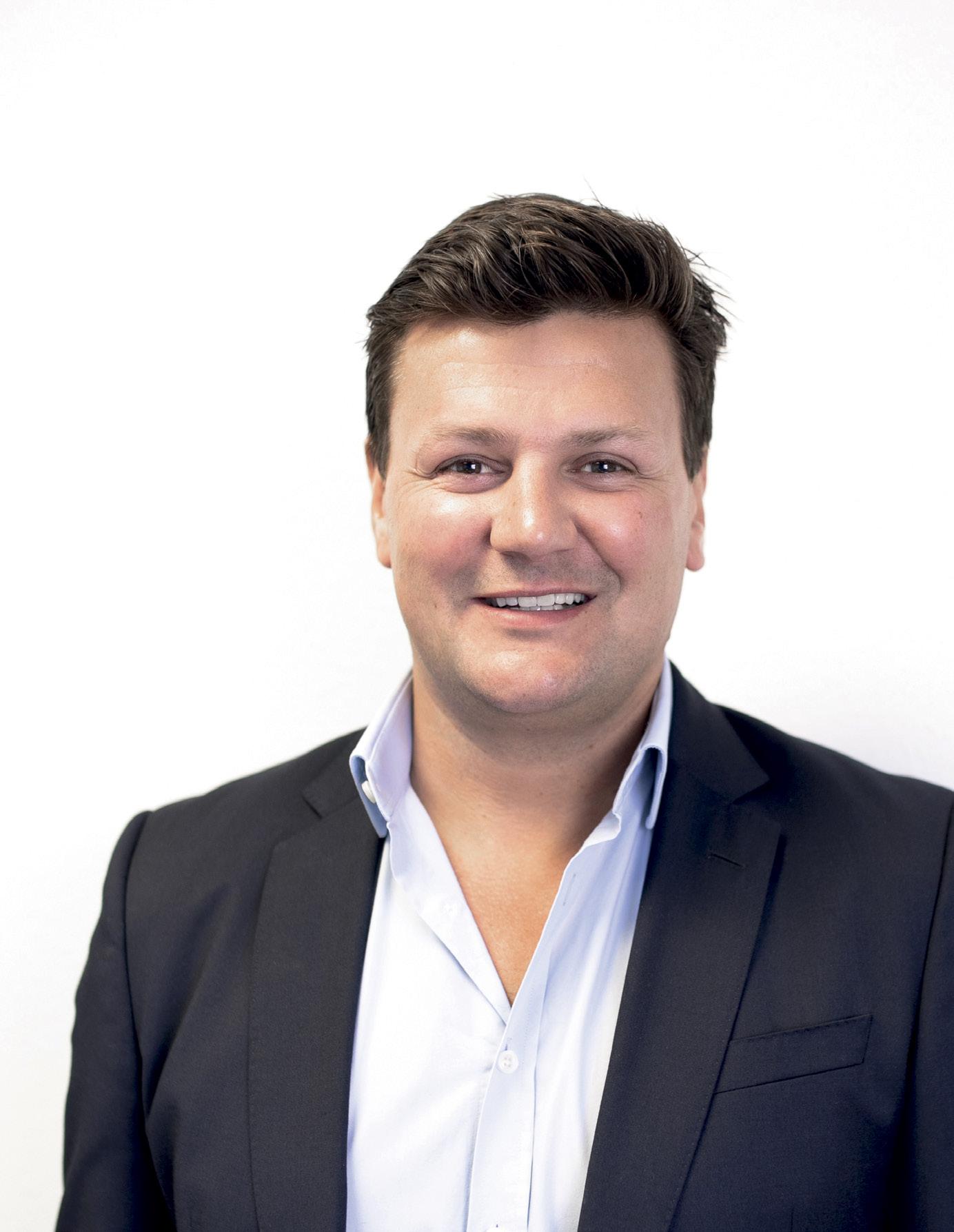
six months, I lived in a camp in Qatar, working on this massive gas-to-liquids (GTL) project. Looking back, we were on the limit of our capability, yet we pulled it off and did an excellent job.”
Shell Pearl GTL stands out as one of the pinnacle points in Talbot’s career. “The main reason is that it set a path for operational and safety excellence which I have carried throughout my career. Pivot projects can shape an organization and raise the bar operationally for how contracts should manage their operations.”
As his first endeavor, Pearl GLT was laden with numerous invaluable lessons. “We were part of an expanding team, myself included, performing a larger project with a permanent set-up. We did not have the latest equipment available. We performed more than 1,000 heavy-lifts using what we had available,” he said.
A Calling
Even though every day on that project personified everything that was challenging about project cargo, Talbot had found his calling.
“It was a difficult but rewarding experience,” he said. “The project was just huge from a size and scale perspective. We were building the world’s largest GTL plant. It was a learning experience in heavy-lift, breakbulk and freight forwarding. It was baptism by fire. I managed this project, and failure was not an option. Through sheer determination and commitment, we ended up doing an incredible job.”
It set the tone for the next 13 years that he would spend in the Middle East. The proverbial project bug had bitten. “I was truly taken with the project work. At the time, we had no real way of managing costs and scopes or
44 Breakbulk Magazine Issue 5 2023 breakbulk.com
Profile
controlling schedules, so I developed a project management framework that ALE could use and apply to our business. Subsequently, I moved over to working solely on projects. Heading up a project management and cost control team, my role ensured that our projects ran correctly, and I would take the lead on the most challenging and complex projects. I was involved and ran several large and difficult projects in the region.”
In 2014, Talbot was appointed as a general manager of ALE’s head office in the Middle East, leading a team of more than 300 people out of its regional head office in Abu Dhabi, a role he fulfilled until late 2019.
“To a certain extent, my time in the Middle East had come to a natural end, and it was time to move on.”
He moved back into the engineering and manufacturing world, working as operations director for a process design and EPC company, running two manufacturing divisions in the UK. Working on continuous improvement, establishing robust procurement and QA/QC processes, and delivering some exciting energy transition projects was an excellent opportunity and a steppingstone to learn further and develop. However, with the world grappling with a global pandemic, his trajectory was set to shift yet again. “With traveling curbed and so much happening worldwide, I opted to set up a project management and business development consultancy primarily working with clients in the offshore renewable and subsea cabling space assisting with operational issues.”
Embracing New Horizons
Fast forward a year, and Talbot confronted another crossroads that would shape his career. “My affinity lies with projects—especially those with associated challenges requiring innovation and problem-solving to provide solution-driven engineering. I feel I am best placed to assist the U.S. market in the race to deliver
the large capital projects across the oil and gas and energy transition space that are on the table.”
Transitioning to Roll Group became an inevitable step. “The allure of the project sphere, in an exciting time where we can build a highly competent team to deliver large and complex projects on land and sea, was an opportunity I could not walk away from.”
As the newly appointed managing director of Roll Group USA, he is securely back in the project seat. “We have grand plans for our business here. We see the Americas as a key driver for the success and growth of the Group as a whole.”
Talbot described working with projects as “highly charged and pressurized environments with little room for error.”
Credit: Roll Group
His first order of business is growing the U.S. office, establishing it as a solution-driven logistics provider specializing in heavy-lift and transportation projects. “Over the next period, we will increase our capacity, capability and asset base in the U.S., driving projects across the group. We

45 Breakbulk Magazine Issue 5 2023 breakbulk.com Profile Project Outlook –Are We Ready? Wednesday, Sept. 27 12:20pm - 1:10pm AT BREAKBULK AMERICAS…
are focused on creating a combined land and sea solution for our clients and servicing the localized needs.”
Talbot emphasized the advantages of engaging a single contractor from both logistical and installation standpoints, particularly in larger undertakings. “I’ve consistently upheld the value of partnerships. Nurturing connections with our clientele remains my paramount objective within the U.S. market. I actively engage with our clients; we seek to understand project challenges and obstacles and to problem-solve their requirements to foster meaningful relationships and deliver optimum solutions.”
Houston: Hotbed for Projects
Having relocated to Houston, Talbot said Roll Group USA was ideally placed to grow its footprint in the project sector. “Drawing a parallel between the scale of projects seen in other parts of the world, we see a healthy project market. Today, numerous undertakings are worth billions of
dollars, spanning different stages of design, procurement, and construction across the U.S. Our aspiration revolves around active participation in a multitude of these endeavors. Few places offer more promising prospects in project development than here.”
The lessons he has learned will serve him well in the booming U.S. project space. “In the U.S., time to market is important. There is a general demand to build a lot of projects in a relatively short space of time. Delivering to these timelines will require experience and knowledge. Every project and customer is different. Being successful in this business is about knowing how to plan and organize yourself. It is about getting the right information as early as possible to mitigate the numerous risks of large-scale projects,” he said. “Our role is to understand our customer requirements early to assist and support in the engineering phase to carry through to execution to maintain schedule and manage costs.”
According to Talbot, clients already see the value of having Roll Group
on board. “Our bookings are already extending into 2025 and beyond as customers realize it will be a race to deliver the numerous planned projects. Our customers also want to understand what options are available to them and how we can offer innovative solutions. One aspect is having the right assets on the ground to meet project needs. Being available to deliver and move the cargo in the specific windows of time it must be done in is also important.”

He sees planning as one of the most crucial elements for success in the project sector. “We operate in highly charged and pressurized environments with little room for error. There are many variables with breakbulk away from the modular cargo, as every piece differs. It is extremely challenging and, therefore, critical to plan ahead. You will always need to problem solve on the ground, but if you plan properly, you can mitigate enough of the risk so that when you get on-site, you can deal with just about anything that comes your way.”
Looking at sectors, Talbot said oil and gas remain two areas they will target in the U.S, alongside projects in the renewable and offshore wind space as part of the energy transition. “It is an interesting and exciting time to be operating in the project cargo sector. There is so much happening, not only in the U.S. but around the world.”
For Talbot, there is nowhere he would rather be right now. He has come a long way since that initial move into the project sector. “I’ve been fortunate enough to contribute to projects and implement solutions that were once beyond my wildest imagination. Along this path, I’ve encountered setbacks that have yielded invaluable lessons. This is part of the allure – the opportunity to dive into projects, extract knowledge, and ascend towards more ambitious horizons. Through this incremental progression, we elevate our industry, one project at a time.”
46 Breakbulk Magazine Issue 5 2023 breakbulk.com
“IT IS AN INTERESTING AND EXCITING TIME TO BE OPERATING IN THE PROJECT CARGO SECTOR. THERE IS SO MUCH HAPPENING AROUND THE WORLD.”
Liesl Venter is a transportation journalist based in South Africa.
Roll Group wants to increase its focus on U.S. projects.
Credit: Roll Group
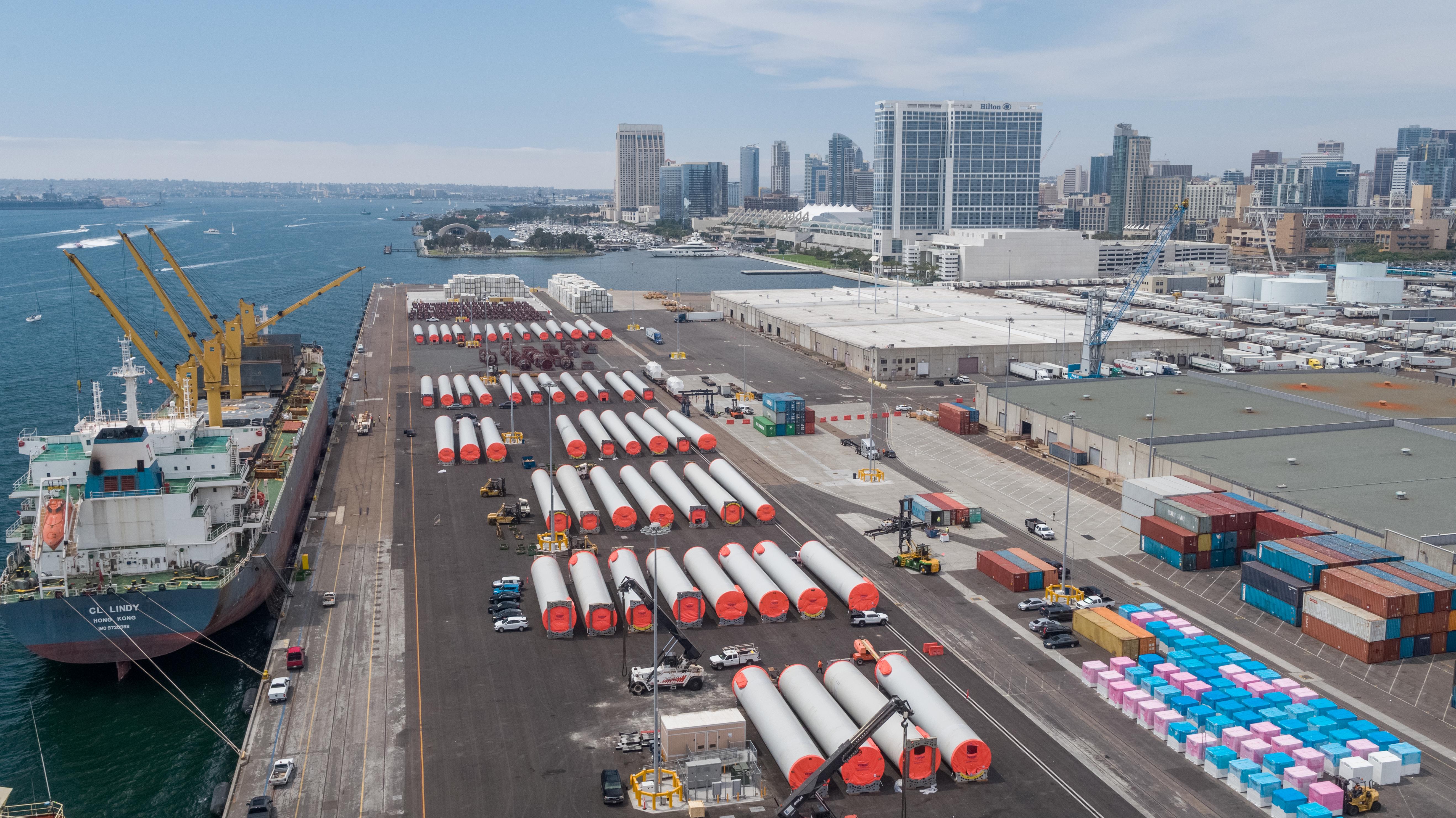
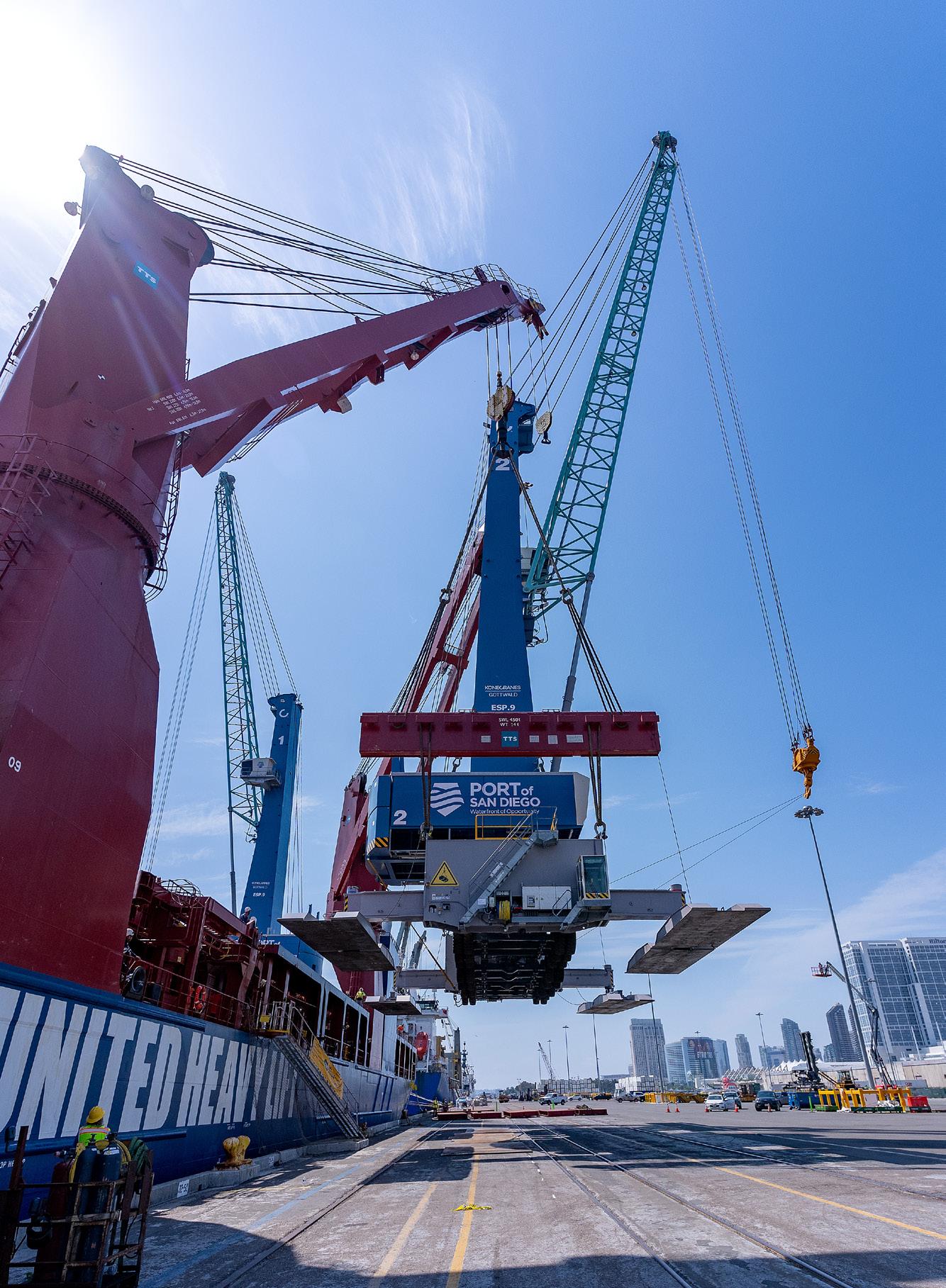

PROBLEMS AND PITFALLS OF INCOTERMS

Need for Training on Trade Terms Evident
Incoterms rules define the obligations of the logistics organizations of the buyer and seller to move goods from the seller to the end customer. These rules were created in 1923 by the International Chamber of Commerce, or ICC, and have been regularly updated to match changes in trade. Much has changed over the years in the way trade is carried out, and this has been reflected in the periodic updates to the rules. The rules have catered for changes in modes – if one thinks back there were no freight aircraft in those days – and in business, such as the introduction of containerization. These Incoterms rules are today the de facto way to convey obligations by means of defining the roles, responsibilities, risks and costs for the logistics organizations involved in the moves. No other commercial terms have kept up with the times and offer the credibility of the ICC Incoterms rules for both domestic and international movements.
Region: Americas
Problem: Vague and incorrect use of Incoterms has the risk of adding unnecessary costs and litigation
Solution: Understanding the allocation of risks and responsibilities under the ICC trade terms will pay dividends in the long term
With all this background and history, one would expect Incoterms rules to be simple, easy to understand and utilized correctly around the world. But that ignores the issue that trade itself is complex and becoming more so, and that to keep up with everything that one needs from contract to final delivery of the goods is not simple. Added to that is the issue that the Incoterms rules have gotten more complex and detailed to cater for all these changes. Notwithstanding this, there is a pervasive lack of detailed knowledge of the Incoterms rules and when and where each rule should be applied to deliver the most value to the buyer and seller in delivering goods to the end customer. I know many people understand the aim of delivering to the end customer, but few companies consider this when choosing the Incoterms rule for a trade.
By John Vogt
Complete Package
The Incoterms rules cover all the logistics aspects of a move – including which of the logistics organizations of the buyer or seller is responsible for what, when and how – and provide the information to enable movement and payment for the services. It does not cover all the commercial aspects needed and these must be addressed in the contract. Incoterms rules do not cover commercial aspects such as title transfer nor payment terms. For a complete contract there are at least three aspects that must be precisely addressed: Incoterms rule agreed, where title is transferred, and when the payment for the goods takes place.
Today, Incoterms rules are in two groups: One for sea and inland waterways only, and one for all modes (Table 1). Within each rule there are 10 sections that specify the details of the rule. These are known as articles and broken into “A” for the seller and “B” for the buyer (Table 2).
The correct style of the Incoterms rule chosen is very precise. The rule is the three-character designation followed by the precise location the handover is effected and the year of the rule; thus Rule (Handover location) Incoterms 2020. The handover location does need to be carefully specified. For example, the rule for breakbulk cargo being exported from Houston could be written as FOB (Houston). That is not a great option as the port of Houston
48 Breakbulk Magazine Issue 5 2023 breakbulk.com
Americas
John Vogt
is 52 miles long. As written, delivery to anywhere in the port area would be acceptable to the transporter, but not the ship or the customer. Equally the Incoterms and rule year are missing, and some changes exist in this rule over the years as to where the risk transfers – on lifting, at the ship’s rail or stowed. Without the year, the risk could be interpreted differently, and, in the case of damage, this ambiguity would create value for lawyers, not for the buyer or seller. Thus, precision is important, and the rule should be FOB (Berth X, Terminal Y, Port of Houston, U.S.) Incoterms 2020.
Training Urgently Needed
There is a lack of detailed knowledge and training in the Incoterms rules within the shipping community. Consider a few of the following research outcomes. The latest version of the rules was published as Incoterms rules 2020 but was known and available from late 2019. Of the people surveyed in early 2021 who were involved in specifying the chosen rule, or organizing the logistics that is required from the rule, only about 30 percent had purchased the Incoterms rules book. In fact, only 60 percent had the previous version from 2010 in their possession, which begs the question – where do supply chain people gain their knowledge if they do not own the book? It appears that they often rely on service providers to offer knowledge, which at best will be biased, limited and incomplete. One of the most significant issues is that many of the personnel who believed they were really good with Incoterms rules – some 40 percent of the respondents of a survey – got a low percentage of correct answers when faced with a series of scenarios. Many of these respondents were very good with their industry needs for their company in using Incoterms rules, but were not generally experts, and this illustrates the issues of relying on third parties for information and assistance in choosing a rule. The Incoterms rules are precise and spell out the obligations, roles
and responsibilities of the logistics organizations of the buyer and seller to move the goods without delay. The logistics organizations have a vested interest in the term chosen, as they have to perform the movement. The specification of the correct rule for the trade should be decided by the persons with the greatest Incoterms rule and logistics knowledge, and hence detailed training is absolutely necessary to supplement the logistics knowledge.
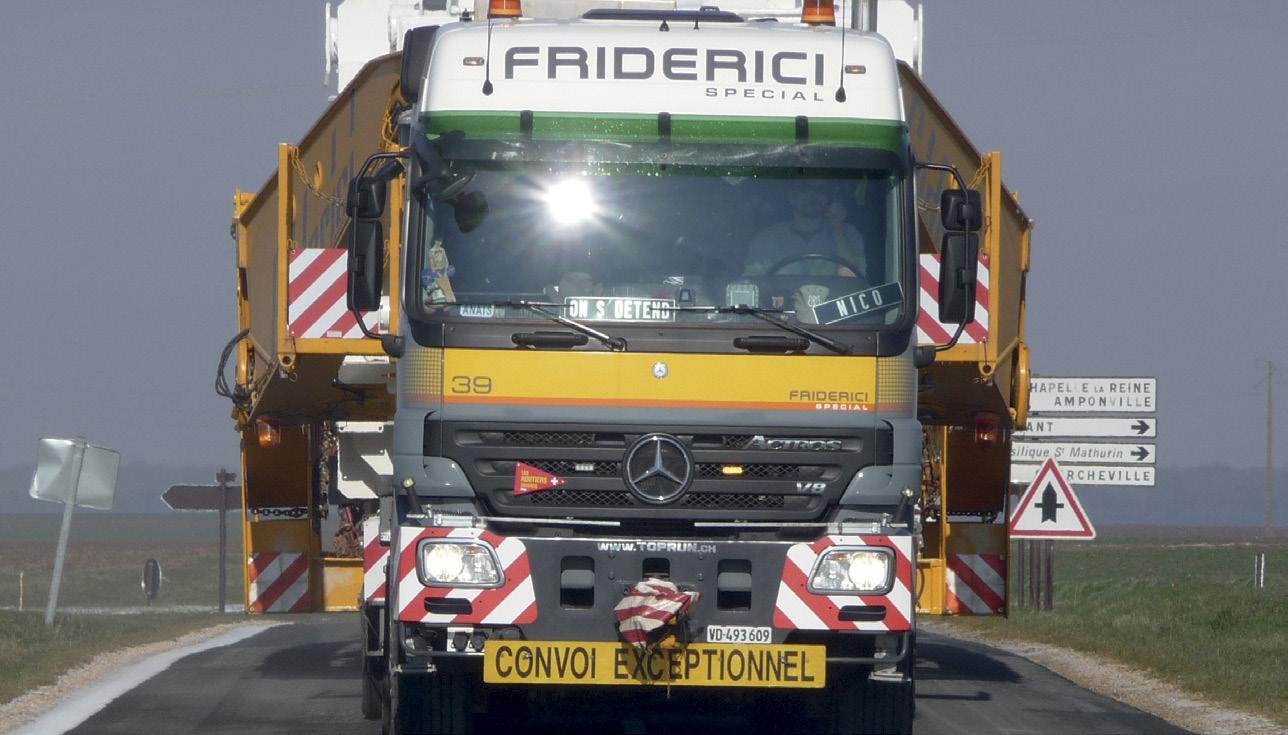
John Vogt has his own consulting company and, at the end of his 42 years in industry around the world, was the vice president of global logistics for Halliburton. Thereafter he spent five years as a Professor of Record for the University of Houston-Downtown MBA for International and Supply Chain courses. He has experience as a board director and has traveled the world to improve trade.
AT BREAKBULK AMERICAS…
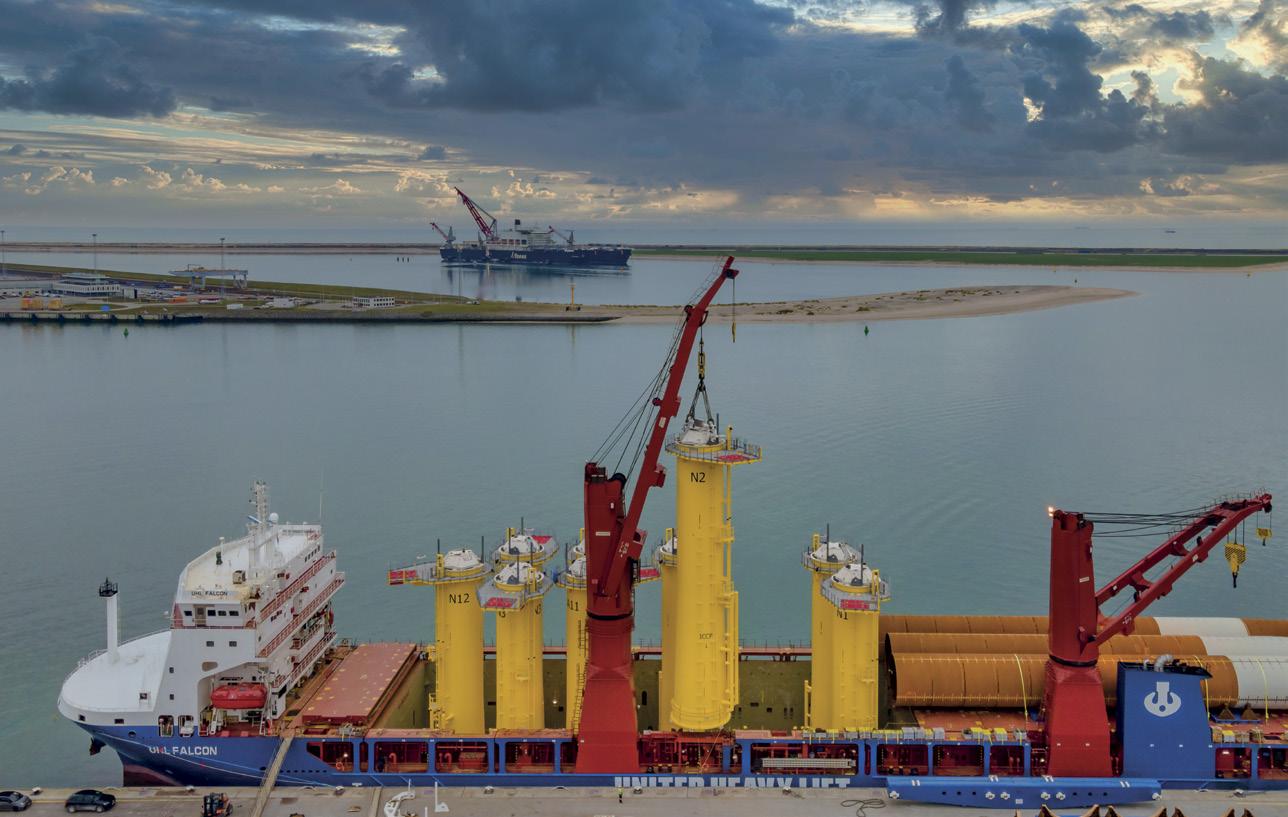
Incoterms Rules and Trade Workshop
Tuesday,
49 Breakbulk Magazine Issue 5 2023 breakbulk.com
Americas
Table 1 Incoterms® Rule Description Mode EXW Ex Works All FCA Free Carrier At CPT Carriage Paid To CIP Carriage and Insurance Paid To DPU Delivered at Place Unloaded DAP Delivered at Place DDP Delivered Duty Paid FAS Free Alongside Ship Sea and FOB Free on Board waterway CFR Cost and Freight CIF Cost, Insurance and Freight Table 2 Article Description A1/B1 General obligations A2/B2 Delivery and Taking Delivery A3/B3 Transfer of risks A4/B4 Carriage of goods A5/B5 Insurance A6/B6 Delivery document and transport document A7/B7 Export / Import clearance A8/B8 Checking, packaging and marking A9/B9 Allocation of costs A10/B10 Notices between parties involved
Sept. 26 9:00am - 4:30pm
By Jeffrey Short
ALL-ELECTRIC HAULAGE REALITIES
Decarbonization Challenges and Opportunities in the Trucking Industry
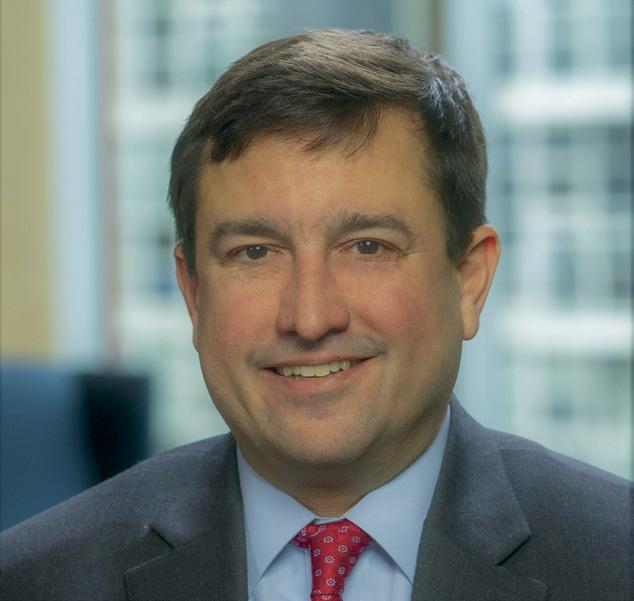
Hauling freight to and from U.S. ports via truck is a critical component of breakbulk operations. While port movements traditionally have been conducted with diesel powered trucks, there is a regulatory trend that would require the phase-in of new and fundamentally different vehicle types that have a lower carbon footprint.
In particular, the deployment of battery electric trucks has been identified by many outside of the trucking industry as a means to decrease carbon emissions.
Last year, the American Transportation Research Institute, or ATRI, published a study on the life-cycle emissions of electric trucks. Through this research it was estimated that battery electric trucks do emit less carbon than their diesel-fueled counterparts. These trucks, however, still have a high carbon footprint, producing 70 percent of the carbon of a diesel truck across their life-cycle. This is due in part to emissions borne through mining and processing minerals for large lithiumion batteries. Additionally, much of the electricity produced in the U.S. today has a carbon footprint.
The study did, however, find significant carbon decreases through the use of other alternative fuels. Renewable diesel, for instance, was
shown to be better equipped at shortterm decarbonization having only 33 percent of the carbon emissions of diesel. Likewise, renewable diesel can be consumed by the heavy-duty trucks that are already on the road today.
Recent ATRI research also assessed the infrastructure challenges related to deploying electric trucks. This research found that powering an all-electric U.S. fleet would require that utilities produce 40 percent more electricity than the country currently produces. Tractortrailers alone would consume 10 percent of today’s U.S. electricity production. Replacing the U.S. fleet with battery electric vehicles is also an automotive manufacturing challenge. Simply put, the study found that the U.S. would need to consume a significant portion of the world’s annual production and known reserves of key raw materials used in lithium-ion batteries.
Full Charge
The trucking industry will need infrastructure to charge its fleet. Charging could take place at trucking company facilities, truck stops and ports, depending on whether or not the electricity required could be supplied to a given location. Electric truck charging times are measured in hours, whereas diesel refueling can take a matter of
minutes; as a result, trucks must be able to park and use chargers for several hours. This will require dedicated charging spaces at charging locations.
The report also included a case study analysis of a single truck stop with 67 available spaces. It was found that this location alone would consume the equivalent electricity of 5,000 average U.S. households. Thus, a substantial amount of electricity will need to be delivered to truck charging locations.
In summary, there are numerous electric infrastructure challenges and realities that must be overcome to employ battery electric truck technology across all industry segments. That said, trucking companies do not produce electricity, or battery electric trucks, or systems for vehicle charging. The industry is a consumer of these products. It is critical that industry partners such as electric utilities, for instance, facilitate and lead the massive infrastructure investments needed to electrify trucking.
ATRI’s body of research on this topic also suggests that there is not a one-size-fits-all solution to carbon emissions. There are myriad approaches to decarbonization, and electrification is one option that may work well in certain applications. Solutions that decrease carbon emissions from today’s levels may also include engines that use less diesel to haul the same amount of freight, and it is important to consider that renewable fuels offer a promising and more easily achievable solution in the near-term. Testing and improving these technologies will require both time and research funding, and the solutions developed will necessarily be numerous for such an operationally diverse industry.
50 Breakbulk Magazine Issue 5 2023 breakbulk.com
Thought Leader The Journey Towards Decarbonization: Progress, Challenges and Opportunities Wednesday, Sept. 27 4:00pm - 4:45pm AT BREAKBULK AMERICAS…
Jeffrey Short is vice president at the American Transportation Research Institute (ATRI). The research discussed in this article can be accessed free of charge at www.TruckingResearch.org.
Jeffrey Short


Delivering what your customers need. Port Houston City Docks www.porthouston.com
CLIMATE WAR ON WATERWAYS
 By Felicity Landon
By Felicity Landon
52 Breakbulk Magazine Issue 5 2023 breakbulk.com
Movement of Heavy-lift Cargo Could Be Curtailed Cargo shipment in Toronto.
Americas
Credit: Balena
What are the implications of climate change? First, the ‘opportunity’ – there is more pressure to seek ‘green’ transport modes, shifting transport away from land to water. But second, there is the ‘challenge’ – climate change is bringing droughts and floods that lead to extreme changes in water levels.
This year, PIANC, the World Association for Waterborne Transport Infrastructure, launched a new technical working group to consider the necessary adaptation of inland waterways infrastructure for climate change impact. The terms of reference note: “The need for adaptation of inland waterways systems is obvious given the climate change that has occurred already, along with the near-term changes that are expected to happen.”
It will be necessary to adapt both structures and operations – and in some cases even the waterways themselves, it said. This includes increasing resiliency to ‘extreme boundary conditions.’
While extreme low and high flow conditions will be a particular focus of the working group, the scope of work is likely also to include issues such as changes in between low and high flow conditions, modification of rainfall regime, flooding, sediment dynamics and salinity.
PIANC strongly believes in working with nature and taking a ‘win-win’ approach, taking into account the industry and economy of countries, but also the environment and the population/social aspect, said Philippe Rigo, chairperson of PIANC’s inland navigation commission (InCom). “It
Region: Americas
Problem: Climate change presents challenges to future moves of project cargo by inland waterways
Solution: Authorities are planning ahead to mitigate risks and ensure continuity of operations for breakbulk transportation
is very important when we launch any project, we should try to get benefit on the three levels.”
Climate change is already having an effect. For example, in the extreme floods in Italy in June 2023 and those in Belgium two years ago, Rigo said. “This means that we have to in some way raise some banks to protect cities and villages; we cannot think only about business or fish and flowers. For inland navigation, that is a big concern – how we should manage that.”
He also stressed the need to think 20 or 30 years in advance because this is likely to require work such as raising banks, fixed dams and locks and installing surge barriers. Wholesale replacement of structures would cost billions. The working group will also consider whether a good response is to raise or adapt existing structures as an interim measure to see if this will be sufficient.
Who pays for what is another question, without any uniform answers. “Very often central governments say ‘this is not our business’ and the local authority doesn’t have the money, so that is definitely a problem. If they don’t have the money, they cannot maintain hundreds of kilometers of banks, so there will have to be a compromise with some money from the private sector to maintain rivers for operations.
The Problem in North America
Taking account of climate change and managing changing river conditions will be an ongoing issue, said Jennifer Carpenter, president and CEO of the American Waterways Operators, or AWO.
“However, whether we are talking water depths of rivers or dealing with hurricanes in the Gulf of Mexico, ours is an industry that is used to operating in a dynamic environment – and we have learned from experience.”
In the autumn of 2022, water levels on the Mississippi river system were their lowest for several decades, she
The Journey Towards Decarbonization: Progress, Challenges And Opportunities
Wednesday, Sept. 27
4:00pm - 4:45pm
said, “but one of the interesting and positive things is that despite very serious and problematic conditions, we were able to keep commerce going.
“Load sizes had to be reduced along with the number of barges [fewer alongside each other], drafts, etc., but we were able to keep things moving. That was because the industry, the U.S. Coast Guard and the Corps of Engineers, who is responsible for dredging, had learned from previous experience, including through river training exercises.”
The Coast Guard was quick to set out buoys to mark reduced navigation channels; the Corps of Engineers quickly deployed dredgers where needed; good passing agreements were in place and operators used fewer barges and loaded them to less depth, Carpenter said. “So, it’s a three-part partnership.”
There are areas on the river that can be more prone to shoaling and buildup, which was much more of an issue with low water. However, another issue was that while the Corps did a good job keeping the navigation channel open, the limiting factor was shoaling in ports and terminals. “So, lesson learned; it was like clearing the road of snow, but you can’t get out of your driveway.” There is shared responsibility when it comes to terminals, she said, “but a definite need for equipment funding.”
The AWO has been working with the Corps and Coast Guard for several years on waterways action plans for different segments of waterways.
53 Breakbulk Magazine Issue 5 2023 breakbulk.com
Americas
AT BREAKBULK AMERICAS…
“They are basically planning guides; when the river gauge gets to X, then we consider or discuss taking these particular actions. It is not meant to relieve anybody of the burden of thinking, but it is meant to be – here’s a plan, when this happens, we should really consider that.”
Inland waterways are well suited to the issues that we are facing and will continue to face in terms of climate change, sustainability, and the desire to move cargo off the roads and railways and away from population centers, Carpenter said. “Will we have challenges to manage this? Absolutely. But I am an optimist as well as a realist. No question, climate change is causing bigger variations in river conditions. But I feel that over the past few years there has been a recognition of the importance of inland waterway transportation, and that has been positive. We need
to make sure we are taking care of and maximizing this resource.”
There is a recognition that waterways don’t maintain themselves, she said. “The dialogue is very good, but we have to continue getting better. There are going to be ongoing needs for dredging, for deployment of aids to navigation and we need to be able to shift and adjust course nimbly.”
A positive step is the Coast Guard’s acquisition program to replace its fleet of old buoy tenders – the first of these ‘waterway commerce cutters’ is expected to arrive in 2025.
Meanwhile, there are safety issues to be addressed, Carpenter said. “There are bridges in some places that are an obstruction to navigation. There are bridges that open but don’t necessarily open when they are supposed to. There have been a couple of near misses when a bridge got lowered and a vessel was damaged. When owners/operators
want to open bridges remotely, that is a whole other level of challenge. We must make sure this is really working that everyone is safe and that we are keeping navigation flowing.”
Importance of Waterways
The Balena Group, based in Calgary, uses inland waterways in Europe and North America. The group also has offices in Maple Ridge (Canada), Houston, Baku and the UAE. Maple Ridge, covering North America, and Baku, covering Central Asia, are the two major operational hubs.
Recent experience has included offloading project cargo from an ocean vessel to a barge in Lake Ontario, to head into downtown Ontario, as well as using inland waterways on the Pacific side to reach destinations around Vancouver Island and nearby areas.
“We have handled a lot of projects via waterway, such as a cement
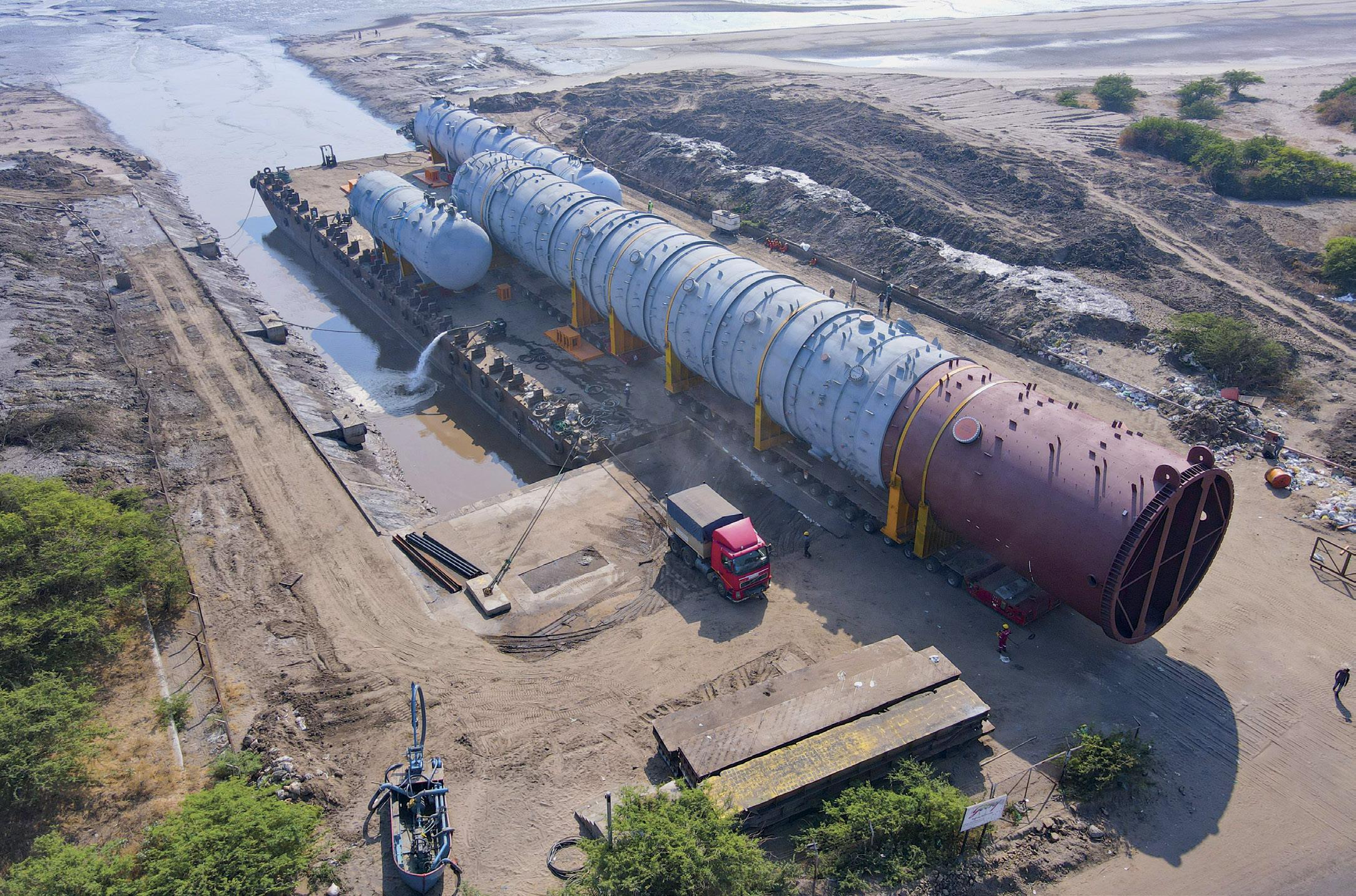
54 Breakbulk Magazine Issue 5 2023 breakbulk.com Americas
Loading of the Chandra Pluto for a refinery project. Credit: deugro
plant operation, paper production and LNG,” said Emin Calil, senior vice president operations at Balena Group. “Our destinations also cover the U.S. – we recently delivered a project for Cleveland, from Cleveland Port in Lake Erie, while in the Gulf, Houston is very important for inland waterway transport.”
Whenever a load is close to 200 tonnes – or more – or has a diameter upwards of 6 meters, the Balena team looks into using barge transport if and where possible, Calil said.
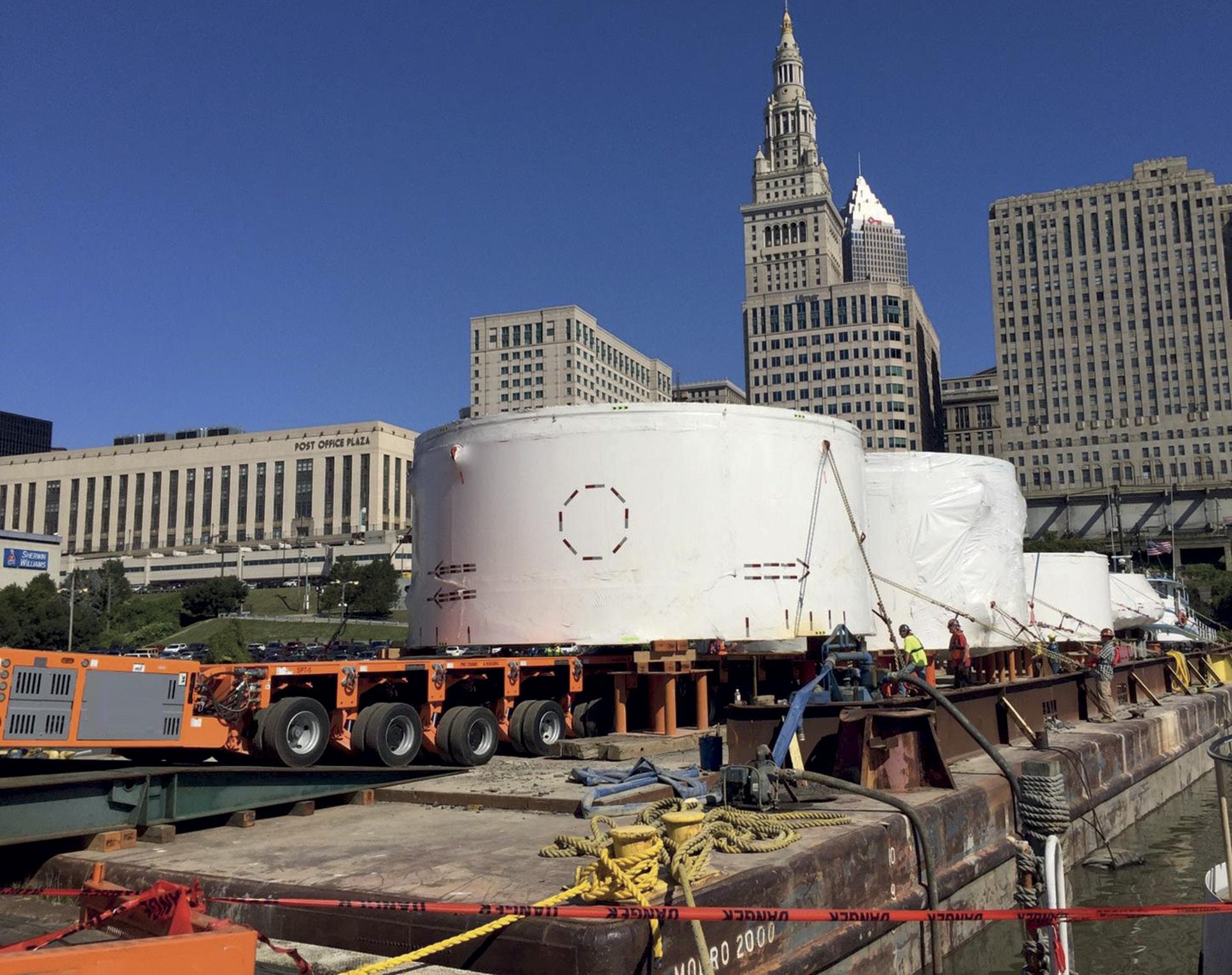
“The reason is simple – the carbon footprint is important for a lot of customers, and we like to support them on that agenda. Also, it is important for lessening the risks of getting stuck somewhere due to Department of Transportation [road] restrictions. If you are using an SPMT for high and super heavy cargo, then your cargo becomes one meter-plus higher and with the risk of getting closer to highvoltage power lines, which are not easy to work around. Current can jump on a rainy day and power companies are not keen to decrease voltage. Also, there are always underground structures, gas pipelines etc., to be considered when crossing them with a heavy weight. So if we can find a solution that is cheaper, faster, less risk-free and produces less emissions, it actually helps our customer. Barging in these kinds of situations would become paramount.”
Balena hires naval architects and other specialists to calculate the parameters around barge size, ballasting, draft and positioning of cargo to pass through channels safely in any region, Calil said. “We are getting into problem situations more often than we used to. The past five or six years, we have needed to consider climate change impacts pretty much with every barge transportation.
“When waters are high, you need to find the right balance between putting the operation under risk and the risk of hitting a bridge and damaging bridge or cargo.”
At the opposite extreme, when handling a project recently in a very dry season, Balena found a workaround by hiring a bigger barge than planned, to spread the weight so that the barge did not hit the riverbed.
“This is where we always want to think about Plan A and Plan B and have those plans ready,” Calil said. “If we know the rainy season is coming soon, we ask the customer to give the soonest pick-up from the terminal, explaining that in very high water levels the cargo would otherwise have to wait. Instead of putting yourself into the situation of counting the days, we suggest they give us longer lead times – we make sure the barge is at our disposal and ready to collect the cargo in advance.”
Responding to these uncertainties also involves talking with vendors, including ocean carriers, truckers, and barge operators, he said. “We need their support with standby hours, detention, demurrage issues, etc. It depends on how you build your relationships with your vendors, and it depends on mutual respect and support.”
The project industry has the benefit of professional people who do support each other, Calil added. “It is a very close circuit in the world where people know each other for years and support each other. The magic words are ‘We are going to work with you’.”
Energy Saved
Statistics show that the quantity of energy consumed in inland waterway transport is less than 30 percent of that used in road transport, according to project specialist deugro. “Compared to other modes of transportation, using inland waterways causes less environmental pollution, including noise and carbon emissions,” said a spokesperson. “The fact that heavy and oversized cargo can be transported with great ease is another important factor for project logistics.”
Inland waterways play a vital role in the local infrastructure in some regions of South America, said the spokesperson. “The north of Brazil is one of them. The Amazon River has sufficient draft to allow multipurpose vessels to sail upstream from Manaus but costs have to be considered. From the view of the carrier, Manaus is a large deviation from their general port calls along the Brazilian coast. The navigation up the Amazon River from Belem to Manaus, plus discharge operations and plus the return to Belem can easily add another 12 days to the voyage plan. Hence, their overall expenses are high and must be considered on top of the high pilotage fees.”
Taking all of this into account, the barging option from Belem is a true alternative for smaller breakbulk
55 Breakbulk Magazine Issue 5 2023 breakbulk.com
Americas
Cleveland inland waterway project where the barge had to be turned three times during offloading operations. Credit: Balena
cargoes, said the spokesperson. “Furthermore, one has to consider the poor road infrastructure in the region. Especially for remote jobs, there is no feasible other way to reach the location than by inland waterway.”
deugro had to adapt plans quickly when transporting two 108-tonne gensets to a thermal power plant 500 kilometers north of Manaus. The original plan was to truck the gensets from Manaus to the job site but due to intense rains in the region, historic flooding significantly damaged the roads heading north. Instead, the cargo was transferred to a deck barge at Belem to head upriver.
“We were forced to change the transport planning to a hybrid solution, barging the cargo on a second leg up to a small local port close to the job site. From there, we managed to transport the cargo by road. This was
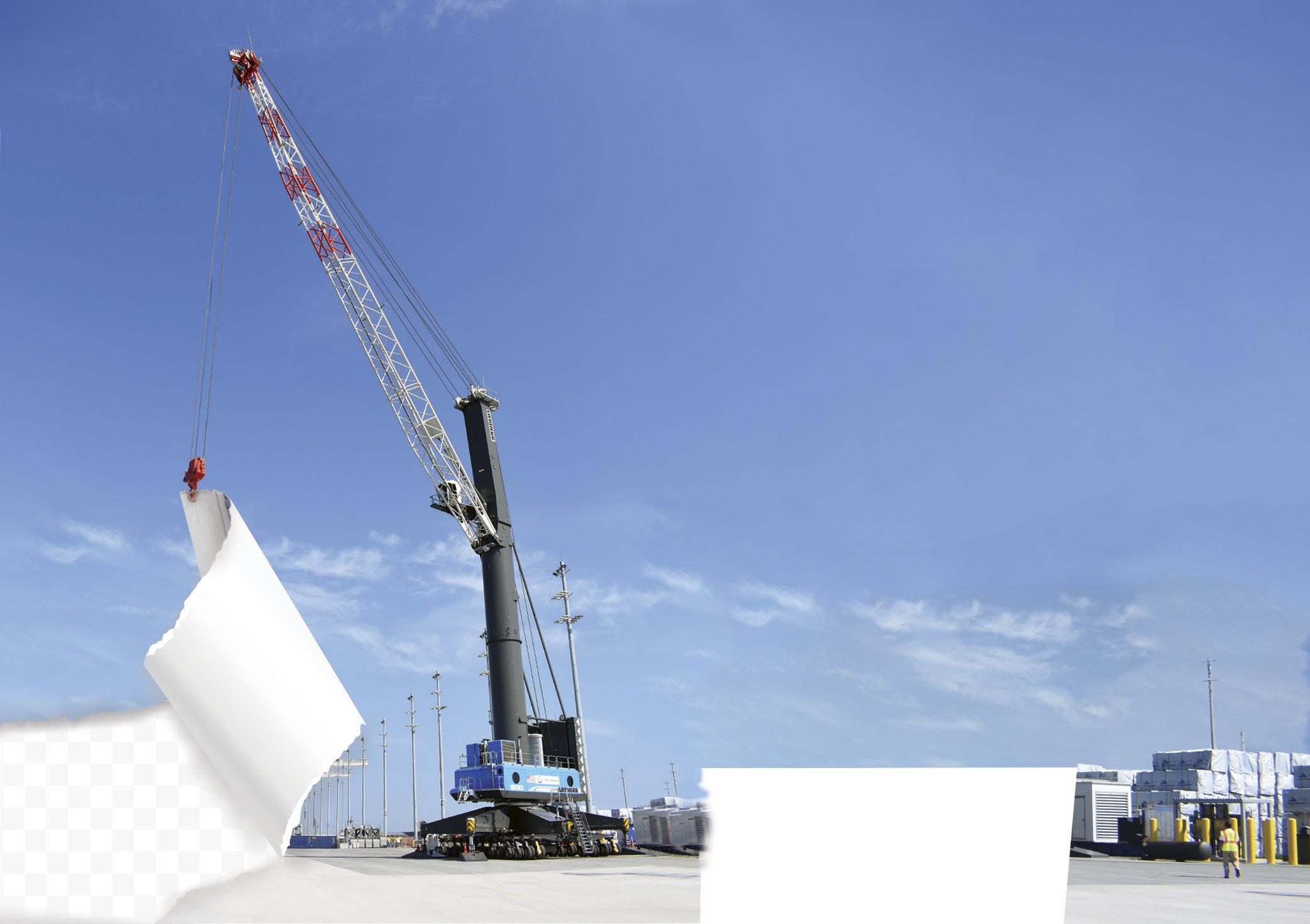
the only solution possible because all the rivers were carrying a lot of water – otherwise there would not have been enough draft.”
Flexibility is Key
Delivering a tunnel boring machine into the Cleveland areas required an unusual degree of flexibility for Balena Projects.
The plan was to deliver the cargo to the final site via the River Cuyahoga from Lake Erie. However, the river narrows at the disembarking location, where the cargo would be rolled off the vessel. The size of the barge required, coupled with the fact that it had to be stationed perpendicular to the bank for roll-off operations, meant that it would occupy up to 70 percent of the width of the river, preventing other barges or vessels from passing through.
“After a long conversation, we got support from the authorities and
neighborhood for an agreement that we could use the disembarking jetty, but we would receive a notice by radio when another vessel was coming up or down the river,” Calil said. “Then we needed to drop everything, stop the offloading process and turn the barge parallel to the riverbank to allow the river vessel past. It’s a good example of people working with each other –and huge respect to the community who allowed that and trusted that we were not going to delay anyone. We had to turn that barge three times during the day but finally we offloaded everything in good order.”
He added: “We are project people. We always think about the solution and always work with people to find those solutions.”


56 Breakbulk Magazine Issue 5 2023 breakbulk.com
Felicity Landon is an award-winning freelance journalist specializing in the ports, shipping, transport and logistics sectors.
Americas
RISE AND RISE OF US GAS
Navigating Opportunities in a Rapidly Evolving Landscape
The energy industry has seen liquefied natural gas, or LNG, emerge in recent years as a key player in the global energy transition as countries around the world look for cleaner alternatives to oil and coal. The U.S. is leading this change, boasting the world’s largest installed LNG capacity of 88.1 million tonnes per annum, or mtpa.
Indeed, the U.S. LNG market offers plenty of opportunities for global energy industry supply chain businesses that are well-prepared to make a difference in an immensely competitive market. These opportunities are likely to continue for decades to come. As one of the world’s largest energy trade associations, we encourage our 900 plus members and the supply chain at large to seize these opportunities, foster collaborations, and pave the way towards a greener future.
According to EICDataStream, our proprietary database that monitors over 13,500 energy projects worldwide worth nearly US$14 trillion, the U.S. has the potential to add a staggering 269 mtpa of LNG capacity through projects currently in various development stages. This vast potential is a true testament to the country’s pivotal role in the global LNG liquefaction market.
EICDataStream tracks approximately US$210 billion in capital
expenditure activity across 33 LNG export projects under development in the U.S., with about US$172 billion earmarked for projects set to begin operations within the next five years. The states of Louisiana and Texas, as natural hotspots for LNG project activity, house the majority of these ambitious developments.
The window of opportunity is open, and the time to act is now. Businesses must be prepared with the right equipment, skills, and financial wherewithal to compete in such projects. Bulk transport companies, for instance, can tap into this expanding market by offering cost-effective and efficient LNG shipping services, opening up new revenue streams and long-term contracts while contributing to the sustainability goals of the energy sector.
The relatively low carbon footprint of LNG compared with other fossil fuels makes it an attractive option for companies aiming to align with the global push towards cleaner energy sources.
Operators and Supply Chain Companies
The future of the U.S. LNG market lies in the hands of key operators and contractors who are pushing the boundaries of liquefaction capacity. Companies such as NextDecade, Sempra Energy, and Venture Global are at the forefront of this charge with significant investments in LNG export terminals.
NextDecade’s Rio Grande LNG terminal in Brownsville and Sempra Energy’s Port Arthur terminal in Texas are notable projects on the cusp of becoming operational. Moreover,
By Pietro Ferreira
Venture Global, having already initiated operations at its 10-mtpa Calcasieu Pass terminal in 2022, has ambitious plans for four additional LNG export projects in Louisiana. These companies are leading the way towards a cleaner energy future, backed by substantial capital commitments.
Major supply chain companies are also playing a crucial role in driving the growth of the U.S. LNG sector. Industry giants like Baker Hughes and Bechtel are making significant contributions. Baker Hughes, with seven contract awards for turbomachinery equipment, showcases its commitment to advancing technology in the LNG sector. Meanwhile, Bechtel’s success in engineering, procurement, and construction awards underlines the need for skilled partners in delivering these complex projects. Other significant players in the U.S. LNG sector, including Worley, McDermott, and Kiewit, have secured numerous major contract awards since 2019, contributing to the industry’s continued growth.
But opportunities in this sector abound for many others, which comes as no surprise to us. Our most recent data, published in our annual Survive & Thrive report, reveals that companies are shifting towards oil and gas rather than renewables. The U.S. LNG industry serves as a prominent example of this trend. Oil and gas projects have a higher rate of Final Investment Decisions (FID) when compared with green energy, and conventional energy remains much more profitable. However, it is important to note that oil and gas companies most likely reinvest these revenues in developing clean technologies and projects, aligning with the global push towards a sustainable energy future.
57 Breakbulk Magazine Issue 5 2023 breakbulk.com Thought Leader
Project Outlook – Are We Ready?
Sept. 27
AT BREAKBULK AMERICAS…
Wednesday,
12:20pm - 1:10pm
Thought Leader
Brimming with Potential
The U.S. LNG market is brimming with potential, with upcoming opportunities that will benefit investors and stakeholders alike. Energy Transfer’s eagerly anticipated FID on the US$12.3 billion Lake Charles LNG terminal and Delfin LNG’s aspirations for an FID on its namesake FLNG terminal in 2023 are set to shape the industry’s trajectory further. Additionally, Tellurian’s ambitious Driftwood project in Louisiana targeting an FID in 2024 adds to the growing list of prospects that will fuel the U.S. LNG market’s expansion. These opportunities present vast possibilities for the transportation industry, particularly in the movement of LNG from terminals to markets worldwide.
As an energy-agnostic global energy supply chain association, we believe in driving innovation and efficiency in the global energy landscape. We work hard to help our members export their products and services, diversify their portfolios and grow their businesses. The U.S. LNG market aligns perfectly with our vision for a sustainable and interconnected energy supply chain. Industry participants must remain agile and forward-thinking, embracing change and venturing into unexplored realms.
The vast opportunities presented by the U.S. LNG market demand an exploratory mindset and the courage to chart new courses in the blue oceans of the energy industry. The U.S. LNG market is not only a key transition fuel but also a pivotal enabler of the global energy transition, balancing energy security, affordability and environmental sustainability. The transportation industry and the wider supply chain stand to benefit immensely from the environmentally responsible alternative that LNG presents, fueling a significant part of our economies and shaping a greener and more prosperous future for all.
Ferreira is senior analyst for the Americas at the Energy Industries Council.
58 Breakbulk Magazine Issue 5 2023 breakbulk.com
New
Source: IGU, EICDataStream Pre 2023 2023 2024 2025 2026 2027 2028 2029 Annual Growth Overall Capacity 150 100 50 0 200 250 300 350 400 88.1 88.25 0.15 31.7 16.54 64 101.75 23.2 31.7 119.95 136.49 200.49 302.24 325.44 357.14 CAPEX (US$bn)
Source: EICDataStream Venture Global LNG Next Decade Cheniere Energy Driftwood LNG ExxonMobil Cameron LNG Alaska Gasline Dev Corp Energy Transfer Partners L.P. Delphin LNG Sempra Energy 20 15 10 5 0 25 30 35 40 45 38.5 22.7 22.4 17.8 15 14.5 12.3 12 10 7.5 FIDs issued/expected on US LNG
Source: EICDataStream 2019 2020 2021 2022 2023 2024 2025 2026 4 2 0 6 8 10 12 14 FID - Received FID - Expected
Pietro
LNG Liquefaction Capacity (MMtpa) in the US by Startup Year
by Operator - Top 10
export projects
Simon West

59 Breakbulk Magazine Issue 5 2023 breakbulk.com
NATURAL
CHALLENGE
Region Needs More Development to Offset Production Declines Americas DHL Global Forwarding handles heavy-lift components at the port of Bahia Blanca in Buenos Aires province. Credit: DHL
LATIN AMERICA’S
GAS
By
Argentina’s surging shale production at Vaca Muerta and the buildout of supporting infrastructure such as pipelines, processing plants, export terminals and fracking equipment continue to provide breakbulk with a steady stream of cargo-carrying opportunities.
DHL Global Forwarding has been transporting cargo to and from Vaca Muerta since output began at the 30,000 square-kilometer oil and gas formation in the prolific Neuquen Basin in western Argentina more than a decade ago.
Earlier this year, the Germanheadquartered forwarder shipped a rig for one of its main customers from the Port of Corpus Christi in Texas to the Argentine port of Bahia Blanca in Buenos Aires province.
According to Pablo Hanacek, head of industrial projects at DHL Global Forwarding Argentina, some 112 pieces weighing a combined 1,515 tons were successfully delivered in a job that took 60 days to complete.
The scope of the project included packing, transport to the port terminal, reception, and the loading and unloading of cargo at Bahia Blanca.
Nabors Argentina then hauled the cargo cross-country to the construction site.
“DHL Global Forwarding was the first to utilize Bahia Blanca as a port of entry for the industry, generating not only cost savings but also shortening the mobilization time for heavy equipment,” Hanacek told Breakbulk
Support for Vaca Muerta
Logistical challenges that have threatened to derail development at Vaca Muerta – home to the second-largest shale gas reserves in the world and the fourth-largest unconventional crude reserves –are being tackled head-on by the government, state energy producer YPF and private sector players.
A first section of the state-funded Nestor Kirchner Gas Pipeline, or GNK –also dubbed the Vaca Muerta Pipeline – was commissioned in June this year. The 580-kilometer duct will eventually ship 22 million cubic feet of gas per day, or mcfd, from Tratayen in Neuquen province to compression facilities at Salliquelo in Buenos Aires province.
A second section of the GNK will extend the pipeline a further 470 kilometers to San Jeronimo in central Santa Fe province, where it will connect to the Northeast Gas Pipeline, or GNEA. YPF has also pledged to invest in more pipelines in the Vaca Muerta region, while a proposed 25 millionton-per-year liquefied natural gas, or LNG export terminal at Bahia Blanca operated by YPF and Malaysia’s Petronas is slated to come online in 2032.
“The sector has always demonstrated its capacity to be very creative and entrepreneurial when it comes to logistics needs,” Hanacek said. “The country’s gas related projects that will take place are not only linked to extraction but also to LNG plants, fertilizers and other developments. Of course, this is very exciting news for the future, and DHL is already working to support those projects.”
Investment meanwhile continues to flow into E&P projects. In June, the Argentine government said Chevron would spend more than US$500 million to develop the 283-square-kilometer Trapial block, one of several fields the U.S. energy company operates in the region.
Other players to have plunged significant resources into the
formation include YPF, Petronas, Shell, ExxonMobil, ConocoPhillips, Wintershall and Mexico-based Vista Oil & Gas.
Argentine state news agency Telam said in July that a combination of higher oil exports – projected to reach US$25 billion over the next five years – and lower natural gas imports due to rising domestic production could reduce Argentina’s energy deficit to zero this year – quite a turnaround following last year’s shortfall of nearly US$5 billion.
Natural Gas Wins
Vaca Muerta though could be one of just a handful of bright spots in the region’s natural gas sector, a surefire source of work for breakbulk and project cargo.
Less-polluting than other fossil fuels, natural gas has been deemed a “bridge fuel” in global energy transition. The Latin American Energy Organization, or Olade, said in a recent white paper that there was a “window of opportunity” to monetize Latin America’s rich natural gas resources and provide “quick wins” consistent with decarbonization objectives.
According to Olade, the region’s largest economies – Brazil, Mexico, Argentina and Colombia – show no sign of ditching the use of natural gas in their energy systems. The share of gas in Latin America and the Caribbean’s total primary energy supply by 2050 is expected to oscillate between 21 percent and 30 percent.
In another recent report, consultancy Wood Mackenzie predicted gas demand in Latin America would increase by 1.4 percent per year over the next decade, stabilizing at about 25 billion cubic feet per day, or bcfd.
Demand would be driven mainly by industrial use and power generation, the report said.
But as new gas developments throughout the region face challenges ranging from infrastructure restrictions and unfavorable exploration incentives, supply is
60 Breakbulk Magazine Issue 5 2023 breakbulk.com Americas
Latin American Spotlight: Outlook, Projects and Opportunities Wednesday, Sept. 27 1:20pm - 2:10pm AT BREAKBULK AMERICAS…
set to decline at a rate of 5.6 percent over the period, driving the need for more imports to cover the shortfall.
According to the consultancy, without more upstream developments, net imports in the region could double to 12 bcfd by 2035.
“Argentina is the only Latin American country expected to add significant supply from undeveloped contingent resources. Through requested bids, the government has addressed the lack of infrastructure to evacuate increasing gas volumes from the Vaca Muerta area, and the Nestor Kirchner pipeline seems to be on track for reaching phase 1 expected capacity,”
Adrian Lara, principal analyst at Wood Mackenzie, said to Breakbulk
Challenges for Some
Other nations covered in the Wood Mackenzie report face tough challenges to either maintain or boost output.
“In the medium term – the next five years – there might be increased activity in Trinidad and Tobago if they manage to jointly develop with Venezuela fields which are nearby or share a maritime border with Venezuela,” Lara said.
“This, however, is all subject to successful negotiations with the Venezuelan government which in turn requires that the U.S. government eases the sanctions imposed. Venezuela itself has the largest undeveloped gas discoveries in the region, but their development is still challenged by infrastructure constraints and above-ground issues.”
Peru, one of Latin America’s two LNG exporters – the other being Trinidad and Tobago – boasts the prolific Camisea field in the country’s Cusco region. Undeveloped resources in Camisea account for about 3.7 trillion cubic feet, or tcf, but development has been postponed due to regulatory hurdles and a lack of additional pipelines to the south of the country.
In Colombia, new developments in offshore areas would depend on the country’s leftist government
led by President Gustavo Petro allowing for additional exploration and reducing the uncertainty of exploiting hydrocarbon resources.
“The new administration had threatened to end all future exploration, although in practice nothing has changed drastically yet,” the analyst said.
Brazil, meanwhile, whose massive pre-salt hydrocarbon boom has also called for significant project logistics support, approved in 2021 a new gas law designed to attract fresh investment into the sector, eliminate barriers to competition and reduce energy prices.
For years, the sector has been dominated by Petrobras, which still accounts for about 70 percent of domestic gas production.
The state energy giant – which found itself at the center of a multi-billiondollar cash-for-contracts scandal last decade that briefly threatened to derail its pre-salt drive – remains the operator of some of Brazil’s most prolific gas fields, such as Mero, Tupi and Buzios in the Santos pre-salt province off the coast of Rio de Janeiro.
“The changes made in 2021 were a great milestone to foster investments from other companies, to create market liquidity and develop infrastructure,” said Rafael Cristelo, the Sao Paulobased general manager of “K” Line Brasil, part of Japanese shipping company Kawasaki Kisen Kaisha, or “K” Line.
“Of course, it will take time until we see a truly competitive market. Incentives, like special tax regimes and lower financing costs, will speed up this process.”
Brazil Pessimism Surfaces
Other project professionals speaking to Breakbulk were not so bullish.
“We still cannot see major progress or impact on the prices as the legislation has not been fully implemented,” said an executive working in Brazil’s oil and gas sector.
“The main issue is the planning in view of the historical uncertainties in Brazil, so most companies are still
waiting to see how things progress to be more on the safe side prior to them taking any actions or making investments,” added the executive, who asked not to be named.
Another key challenge for Brazil is building the infrastructure to support production.
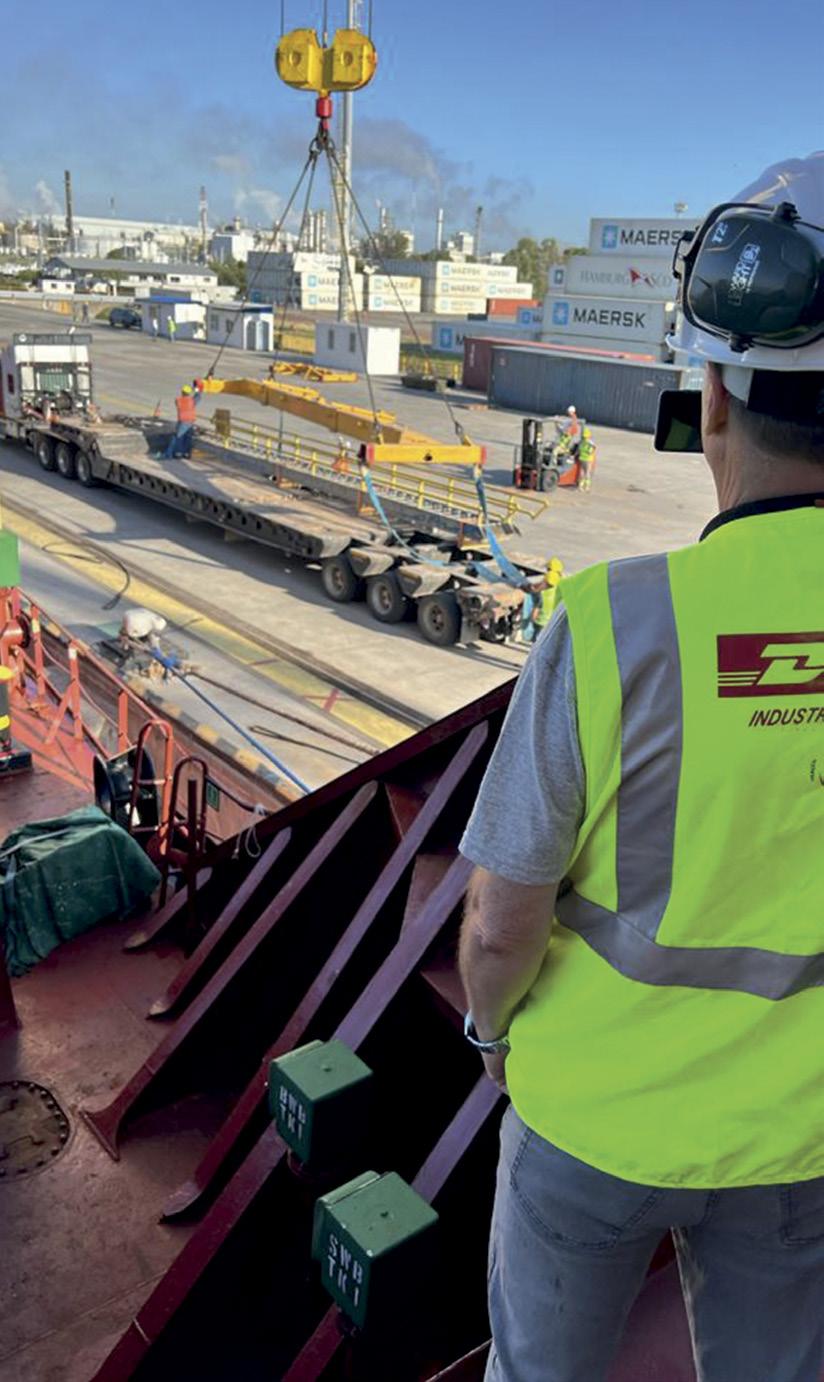
Delays to complete the construction of major projects such as the 355-kilometer Rota 3 pipeline that would transport up to 18 million cubic meters of gas per day from the Santos Basin to Petrobras’ Gaslub natural gas processing plant in Rio de Janeiro have been blamed for lower gas availability.
Originally slated for start-up in 2019, the pipeline, which comprises a 307-kilometer offshore section and a 48-kilometer onshore section, is now expected to begin full operations in 2024.
“Infrastructure in Brazil is always a key issue, and there is still a lot to be done,” the executive said. “This involves high levels of investments and risks which once again depend on a better scenario, regulatory issues and legal certainty. In any case, a better gas network has to be installed and part of the existing one must be refurbished.”
61 Breakbulk Magazine Issue 5 2023 breakbulk.com
DHL Global Forwarding was the first to use Bahia Blanca as a port of entry for shipping heavy equipment to Vaca Muerta.
Credit: DHL
Americas
Bolivia’s Struggles
Bolivia, one of Latin America’s three largest gas-producing countries alongside Argentina and Peru, and the region’s main gas exporter, is struggling to revert production declines that began almost a decade ago.
Furthermore, dwindling reserves and a lack of finances threaten the Andean country’s long-held ambition to build a series of world-scale petrochemical production plants. State-controlled energy company YPFB, alongside its industrial division, EBIH, had unveiled plans to build more than a dozen plants for polyethylene, polystyrene, aromatics, methanol and other petrochemical production.
To date, just one project has been brought online – the Bulo Bulo urea fertilizer plant in central Cochabamba Department. One Bolivia-based project professional told Breakbulk that
power generation and agribusiness had overtaken hydrocarbons as the key sectors for project cargo.
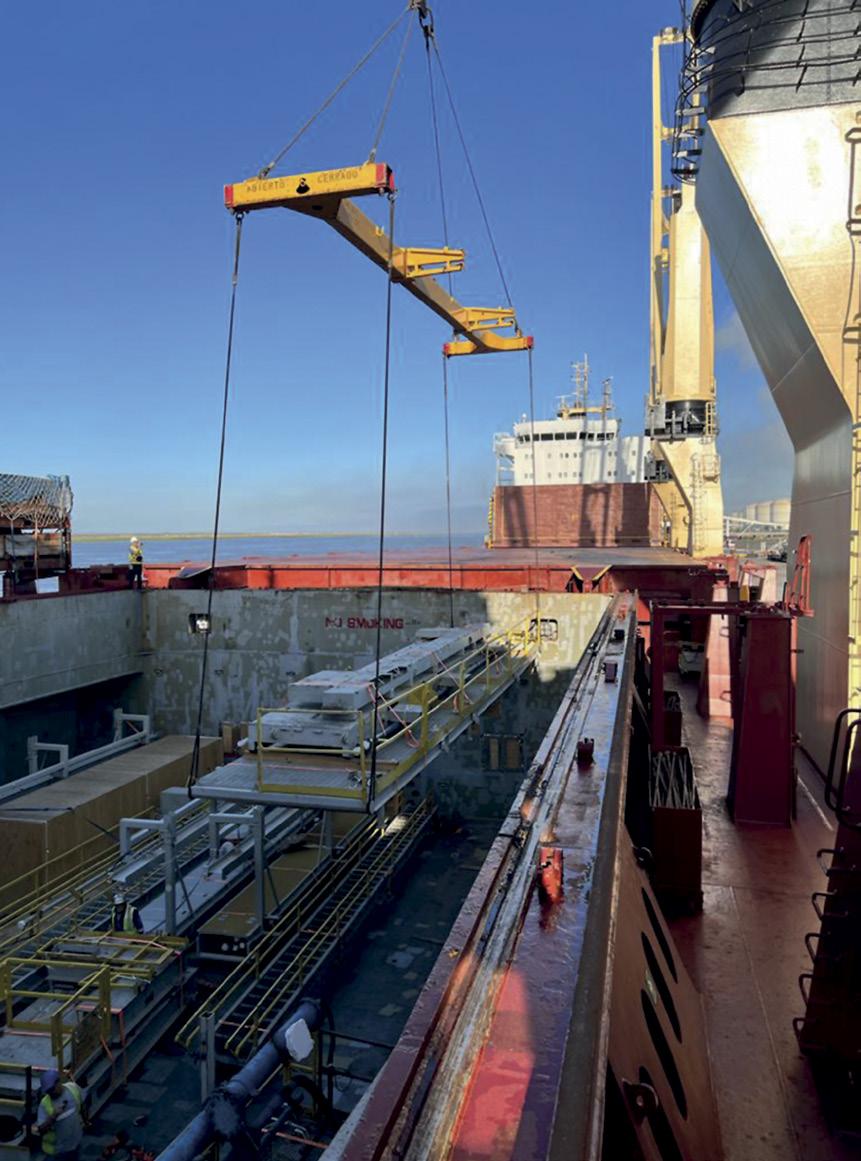

“The decline in Bolivia’s gas production could have a drastic impact on its exports, and without additional discoveries, the decline will not be reversed. It is possible that, by the end of the decade, Bolivia will only be producing enough gas to meet domestic demand,” Wood Mackenzie said.
“The main change in the subregion is the potential role of Argentina in supplying gas to its neighboring countries. It is not without its challenges, however, amid the persistence of above-ground issues such as energy policy changes and macroeconomic instability.
“Still, it has the potential to replace Bolivia as the key regional exporter.”
62 Breakbulk Magazine Issue 5 2023 breakbulk.com
Simon West is senior reporter for Breakbulk
DHL Global Forwarding has been transporting cargo to and from Vaca Muerta in western Argentina for more than a decade.
Credit: DHL
POWERING UP PORT CALLS
Ports are facing growing pressure to manage and reduce the carbon footprint associated with vessels calling at their berths – and that includes multipurpose and heavy-lift ships. While most efforts to tackle emissions are centered on enhancing
ship-based efficiencies – an aspect beyond the control of ports – one effective approach is the integration of shore-based power supply with ports taking on the role of green energy generators and suppliers.
The utilization of ship shore power is already a proven technology that
MPVs Ready to Take the Next Electric Step
By Carly Fields
holds promise. Connecting ships to electricity grids while they are docked at ports can swiftly and significantly reduce local air pollution caused by ships at berth. Moreover, it contributes to the reduction of greenhouse gas emissions through lower fuel consumption.
power connections are coming to breakbulk ports.
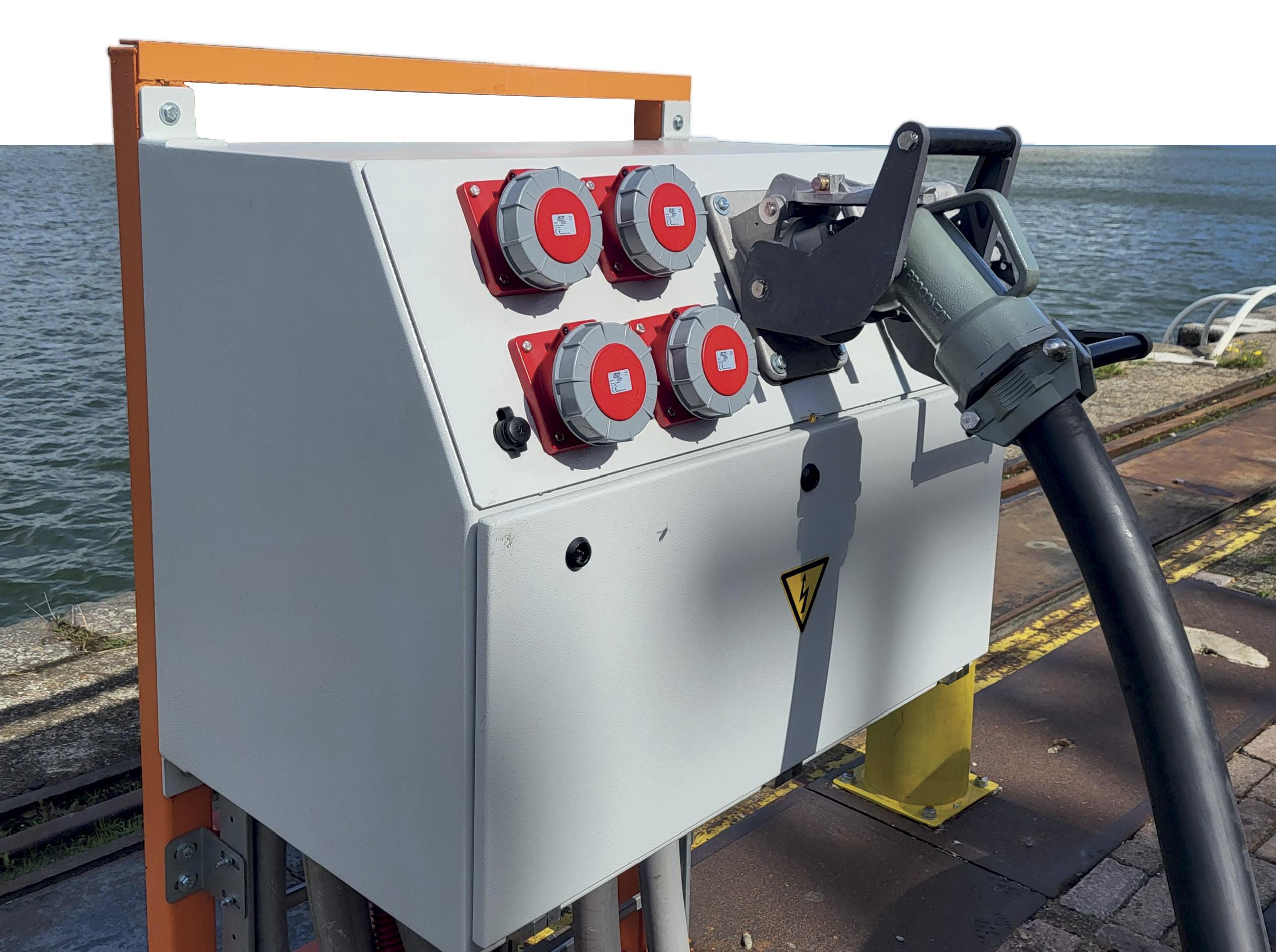
63 Breakbulk Magazine Issue 5 2023 breakbulk.com
Shore
Global
Credit: Royal Roos
Region: Global
Problem: Irregular port calls and a lack of funding have seen MPV operators hold back from committing to shore power connections on board Solution: Climate-conscious operators and secondary ports are showing the sector that it’s time to step up to the shore power plate
Successful shore power implementation can be seen in the ports of California. These ports have long implemented strict regulations aimed at minimizing emissions during vessel berthing and compliance with these regulations has spurred the wider adoption of shore power systems. China has also taken steps to endorse shore power solutions as a strategy to cut emissions within its ports and urban areas. Starting in 2019, new domestic vessels in China are mandated to be equipped for shore power compatibility. It’s anticipated that Europe will follow suit by introducing more stringent regulations related to port emissions, further expediting the global acceptance of shore connection systems.
AT BREAKBULK AMERICAS…
Fleet Update
Wednesday, Sept. 27 11:00am - 11:45am
The Journey Towards Decarbonization: Progress, Challenges
and Opportunities
Wednesday, Sept. 27 4:00pm - 4:45pm
Yet MPVs and heavy-lift ships are behind the curve in installing the necessary infrastructure to allow them to plug in at shore power-ready ports.
SAL’s Shore Power Plunge
Heavy-lift MPV operator SAL Heavy Lift is believed to be the first MPV operator to have committed to shore power infrastructure on its newbuild vessels. Its Orca class are zero emission, methanol ready vessels, with 2 x 800 t fully electric cranes, a ship-to-shore power connection and shore power supply on deck for its client’s equipment. Scheduled for delivery from mid-year 2024, the first two ships will be exclusively involved in the transportation of offshore wind turbine components in a long-term commitment with Siemens Gamesa Renewable Energy. Two additional sister vessels are scheduled to enter the premium heavy-lift shipping market in the first half of 2025.
Jakob Christiansen, head of research and development, retrofit and newbuilding at SAL Heavy Lift, said that including shore power in the newbuilds was an obvious choice. “With an ambitious and environmentally friendly ship concept like the Orca class, there is no question that we will use shore power in the port to reduce emissions and noise in the port. We also strongly believe that shore power infrastructure will develop rapidly in the ports concerned.
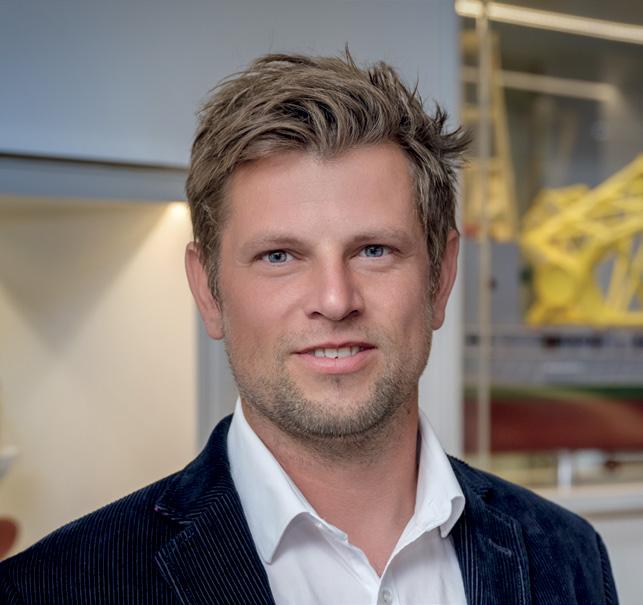
“In our view, there is a high probability that this will become a legal
requirement within the lifetime of the vessel. The commercial and technical effort of a direct implementation of the shore connection is significantly lower compared to a retrofit. Last but not least, the shore connection is a central part of the zero-emission concept of the Orca vessels.”
SAL’s Orca class shore power connection sends a “clear signal” to the market that SAL Heavy Lift, as part of the Harren Group, is committed to zero-emission shipping, Christiansen said. “We know from our customers that they are extremely interested in climate-friendly transport concepts. The Orcas set the bar for future heavy-lift vessels.”
Tramping Troubles
One of the stumbling blocks of shore power for MPVs is that the traditional tramping routes mean that there isn’t the same security of port calls as for, say, container ships. This means that operators cannot be sure that every port they call at will be able to provide shore power, undermining the investment in the infrastructure on the ships. Christiansen acknowledged that the future routing for the Orca class could well be influenced by ports that have shore power connections. “When it comes to choosing one berth or another, this could certainly become a selection criterion in the future. But we rather hope that the chicken-oregg question will be answered soon and that it will now be the turn of the ports and the industry to react and develop infrastructure and standards.”
As heavy-lift and MPV vessels are not the largest electricity consumers in the port, Christiansen added that when it comes to reducing emissions in ports, it is logical that heavy-lift and MPV vessels have not, so far, been a priority and that it is understandable that infrastructure in the cruise, ferry and container segments has been developed first. But “heavy-lift and MPV are now next in line,” he said.
Some smaller ports are taking
64 Breakbulk Magazine Issue 5 2023 breakbulk.com Global
Jakob Christiansen
the first steps towards shore power connections in readiness for calls from niche ships. In May 2023, Royal Roos’ green powered shore power connection for seagoing vessels berthing at Merwehaven in Rotterdam plugged in its first vessel: ALP Maritime Services’ DP II anchor handling salvage tug ALP Winger
Powered via 1,500 m2 of solar panels on the roof of a building and a 1,000 kVA transformer, the Royal Roos shore power installation is purposely built for smaller seagoing vessels and tailored to their operational requirements. The power connection can also be used to load battery containers and e-trucks.
Speaking to Breakbulk, Royal Roos’ Veronica Breed said that location and convenience played a part in the decision to install the shore power infrastructure: “We are situated in the Merwehaven, in a former fruit cold storage renovated into workshops and offices including a quayside. The infrastructure of the old and new building combined with our day-today business - marine engineering, seagoing vessel maintenance - gave Fulko Roos, founder and director of Royal Roos, the idea to use this for a shore power facility for seagoing vessels mooring at the Merwehaven.”
She added that a successful application for a regional funding program, REACT EU - from the ‘Kansen voor West’ partnership program of the European Fund for Regional Development, offered an EU subsidy for the installation. “The REACT EU program funded up to 60 percent of cost and of course this helped a lot in realizing this first installation.”
Sustainability Goals
The installation also supports Royal Roos’ own sustainability ambitions. “As a company operating in the maritime industry, we are very aware of the need to make the sector more sustainable and future proof. Our main goal is to make our clients’ assets fit for 2030/2050 and beyond,” Breed said. “Sustainability and green power are the way forward; there is a major shift happening from fossil to renewable energy, from production from virgin materials to production by smart reusing of materials, etc. and we have and want to be part of this transition, not only to stay relevant in this business, but also because we want to make a difference in the maritime industry.”
Merwehaven east side allows mooring for vessels up to 225 meters long, 30 meters wide and
maximum 40,000 deadweighttons. Harbor depth is -9.65 meters Amsterdam Ordnance Datum.

Typically, anchor handling, towage and offshore supply vessels call at Merwehaven and so Royal Roos has matched its first shore power installation to those type of vessels and their average power demand.
Royal Roos has plans to expand its shore power connections to be able to provide shore power to vessels with a power demand up to 1,000kW as well as being able to provide shipside shore power modifications. “Furthermore, as the current shore power installation is our own design, we market this as a product - we design, produce and deliver shore power installations including ship side modifications for seagoing vessels in any configuration up to 11kV and 2MW, 50/60 Hz,” Breed said.
Whether through legislation or innovation, shore power is coming to the breakbulk market. Partnerships with secondary ports and securing government funding will ensure that the MPV market makes up for lost time in the coming years.
Carly Fields has reported on the shipping industry for the past 23 years, covering bunkers and broking and much in between.
65 Breakbulk Magazine Issue 5 2023 breakbulk.com Global
SAL’s Orca class of newbuilds is thought to be the first to be fitted with shore power connections. Credit: SAL
By Carla Solano, Senior Director of Logistics for
ADAPTING TO CHANGE: THE ROLE OF BREAKBULK IN SUPPLY CHAIN RECOVERY AND GLOBAL SUSTAINABILITY
Following their record levels in 2022, breakbulk shipments are gradually returning to normal. The COVID-19 pandemic threw supply chains into disarray and disrupted containerized transport; but in doing so, highlighted the advantages of breakbulk in maintaining the flow of cargo globally.
While the shipment volumes have diminished, the insights gained persist – the adaptability of breakbulk renders it essential. Managing Ro-Ro and handling oversized, unwieldy, or weighty items like bulk lumber and pulp, heavy machinery, iron and steel girders, rubber, project cargo, and turbines in containers is simply unfeasible, cementing breakbulk’s indispensable role.
Breakbulk will remain a top mode of transportation, though it is not without its challenges. Criticism has been directed at breakbulk shipping, particularly for its environmental repercussions stemming from substantial fuel consumption and emissions. It also presents logistical challenges due to the complexities of increased handling. But as awareness of these issues expands, industry players are increasingly motivated to explore more efficient and sustainable solutions to mitigate these challenges.
Green Technologies and Practices
Sustainability has become a paramount concern in the shipping industry, with a growing emphasis on reducing environmental impacts and promoting responsible stewardship. As companies scramble to adapt, regulators are encouraging or even mandating sustainable practices that extend beyond carbon emissions to encompass aspects like ballast water treatment and waste management.
As a result, shippers are looking to green technologies and practices to help support this sustainability drive. These encompass alternative fuels like LNG, hydrogen, and biofuels that offer a cleaner alternative to traditional fossil fuels, paving the way for more environmentally friendly shipping. Simultaneously, investments in energyefficient technologies and infrastructure, including shore power, are vital in reducing energy consumption.
There is also an urgent need to invest in infrastructure – e.g., cranes, laydown areas and storage – to handle increasingly oversized items efficiently, thus minimizing waste and environmental strain. The integration of renewable energy sources such as wind and solar power can further cut down on fuel usage and emissions. Waste reduction strategies such as effective waste management practices and recycling policies can substantially reduce waste.
Implementing digital technologies –e.g., Big Data, IoT and AI – can optimize operations and cargo handling, reducing the need for unnecessary shipping and thus reducing fuel consumption and emissions.
Challenges
The future of sustainability in breakbulk shipping is promising, but there are
several barriers to entry. Economic considerations remain a top concern, as implementing sustainable practices often comes with increased costs. This can be a significant deterrent for many shipping companies, especially smaller ones, but incentives and support from governments and international organizations can help overcome this barrier.

Technology continues to advance, but the pace might not be fast enough to meet stringent sustainability targets. Continuous investment in research and development is essential to continue to accelerate this process. Lastly, a lack of standardization can hinder the broad adoption of sustainable practices. Coordinated efforts are required to develop universal standards and best practices.
Conclusion
The steps taken now will lay the foundation for a more sustainable breakbulk shipping industry, with benefits that extend beyond environmental considerations to include social and economic advancements. The journey toward sustainability in breakbulk shipping reflects a broader global commitment to responsible stewardship of our planet, and the concerted efforts underway inspire optimism for a greener future.
66 Breakbulk Magazine Issue 5 2023 breakbulk.com Advertorial
Aerial view of the entire Dominicana port.
Credit: DP World
DP World in the Dominican Republic
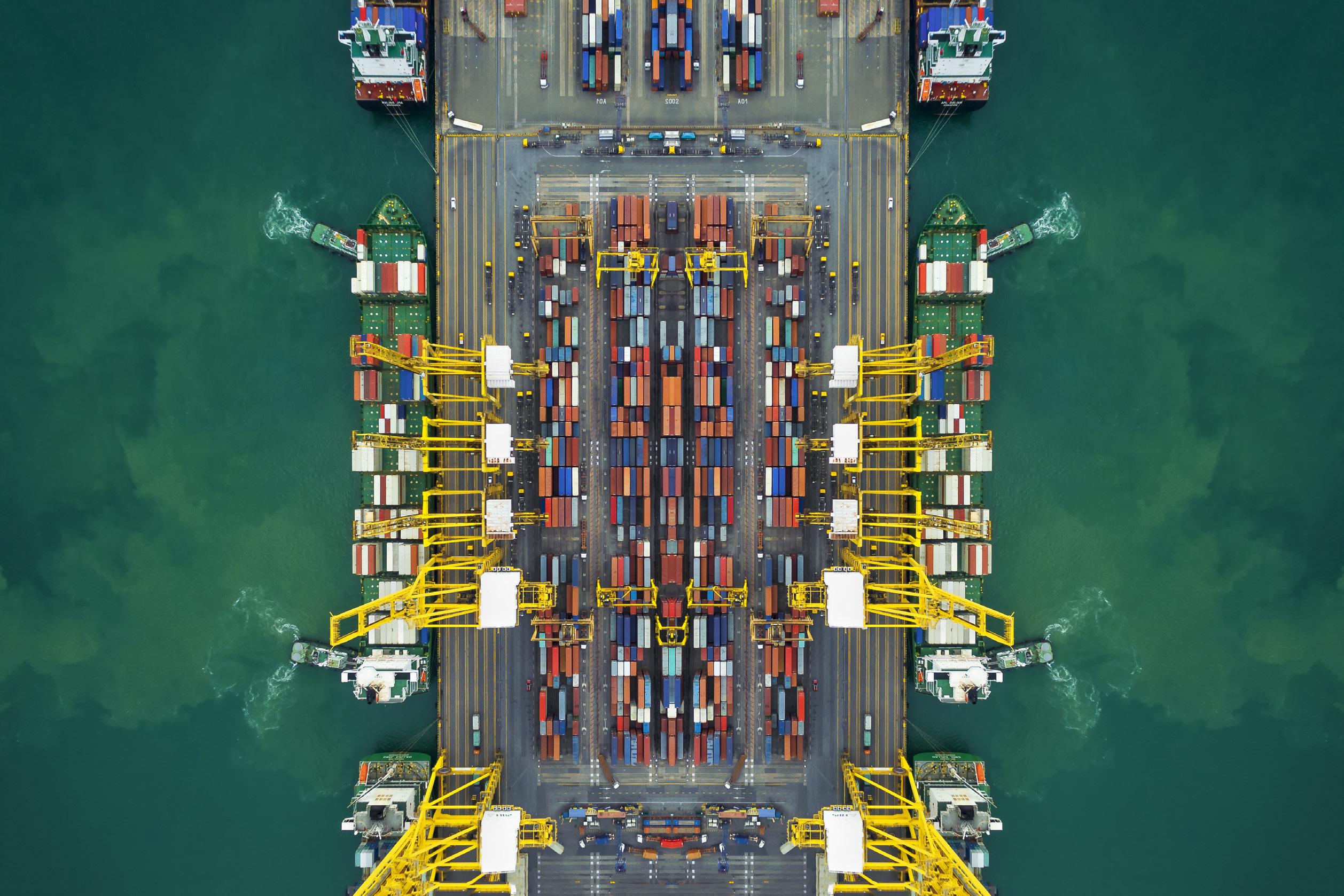 By Jeremy Bowden
By Jeremy Bowden
GREEN CORRIDORS, MPV OPPORTUNITIES
Green Corridors Provide Breakbulk Shipping a Route to Decarbonization

With July 2023 registering as the warmest month ever globally and sea surface temperatures also hitting record highs, attention is increasingly focused on reducing greenhouse gas emissions in all fields of life, including shipping. For breakbulk and heavy-lift shippers, one of the main areas of early decarbonization efforts has been on establishing and using “green corridors” – specific trade routes between major port hubs where zeroemission solutions are supported.
The approach is a gradual process, with corridors initially focusing on container vessels between ports in wealthier countries that can afford to make the investments required and are aware of the urgent need to act. Jesse Fahnestock of the Global Maritime Forum, or GMF, said there was no master plan, just voluntary initiatives from partners including ports,
governments, third sector research groups – such as the GMF – and others. “Each [green corridor] is a bottom-up voluntary initiative taken by stakeholders themselves,” he said to Breakbulk.
GMF provides advice and guidance and some initiatives, setting out objectives. “It’s all voluntary at this stage – there are governing agreements, but even within that it is voluntary – green corridors are all
about coordinating the parts of the value chain that want to get involved, rather than a hard and fast framework.” But he said that this could change – “[the GMF] would welcome national governments taking action – creating incentives, providing regulatory guidance, rather than just setting target dates.”
Most of the announced corridors are container focused – but that doesn’t mean that multipurpose and heavylift ships won’t be impacted or be able to benefit from the green fuel and infrastructure available, as long as they have switched to vessels that can use the green fuels required. Matthias Olafsson of the Methanol Institute said that the deepwater/ocean breakbulk segment would have similar needs to container shipping, “mostly looking at energy dense fuels (liquified natural gas) or liquid energy carriers (methanol) in the near and mid-term and ammonia in the long run.”
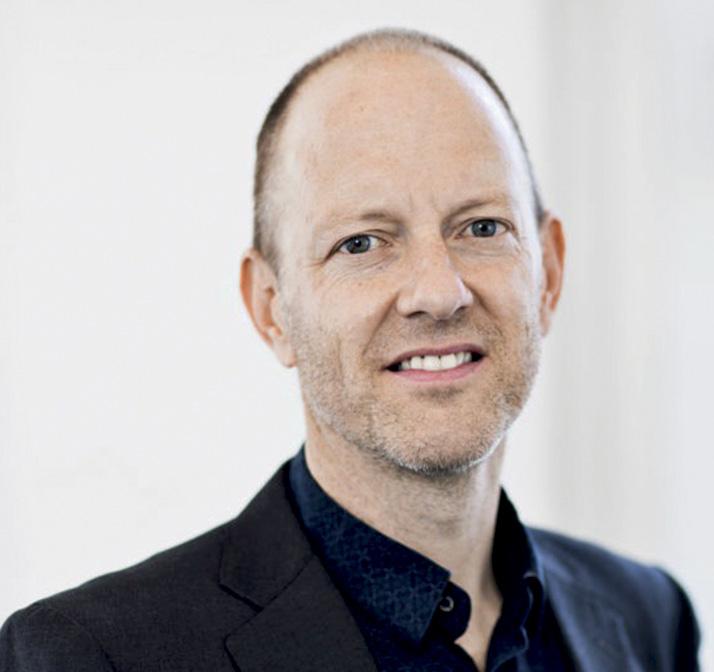
68 Breakbulk Magazine Issue 5 2023 breakbulk.com
Global
Jesse Fahnestock
Credit: Ty Stange
Region: Global Problem: Container lines are dominating green decarbonization corridors, leaving multipurpose vessel operators in the cold Solution: Breakbulk sector told it could enhance its influence by forming demand side coalitions with competitors to ‘green‘ routes
He said that alternative marine fuels such as biofuels, LNG and methanol were already available at major bunkering centers, but further infrastructure deployment was likely to depend on vessel uptake.
Susana Germino, general manager, sustainability and decarbonization at Swire, said breakbulk carriers had the same options when it came to fuel as other segments, “and we are likely to see a multifuel future, where trade patterns and geographical availability will play a very significant role.”
However, Fahnestock noted that green corridors only applied to the use of fuels that require a different engine, and not to drop-in fuels like biofuels, or LNG. “Biofuels and LNG can fit into existing routes, so no need for a green corridor, although for biofuels it’s difficult to get hold of enough supply.” He said that green
corridors involve coordinating vessels with engines specifically adapted to a particular green fuel, alongside the supply of that fuel. This would be mostly ammonia but also some methanol, and hydrogen near shore – all three require new bunkering and new engines.
Getting Onboard
So far, a variety of entities have been involved in setting up green corridors, ranging from ports and shipping lines to major shipping customers. Breakbulk logistics providers have tended to play a less prominent role, but this could be expanded, according to Olafsson. “Breakbulk representatives should engage ports via key routes to establish partnerships on green corridors,” he said. “Breakbulk companies can secure access to green fuels for their vessels by investing in the fuel supply chain and in infrastructure projects.”
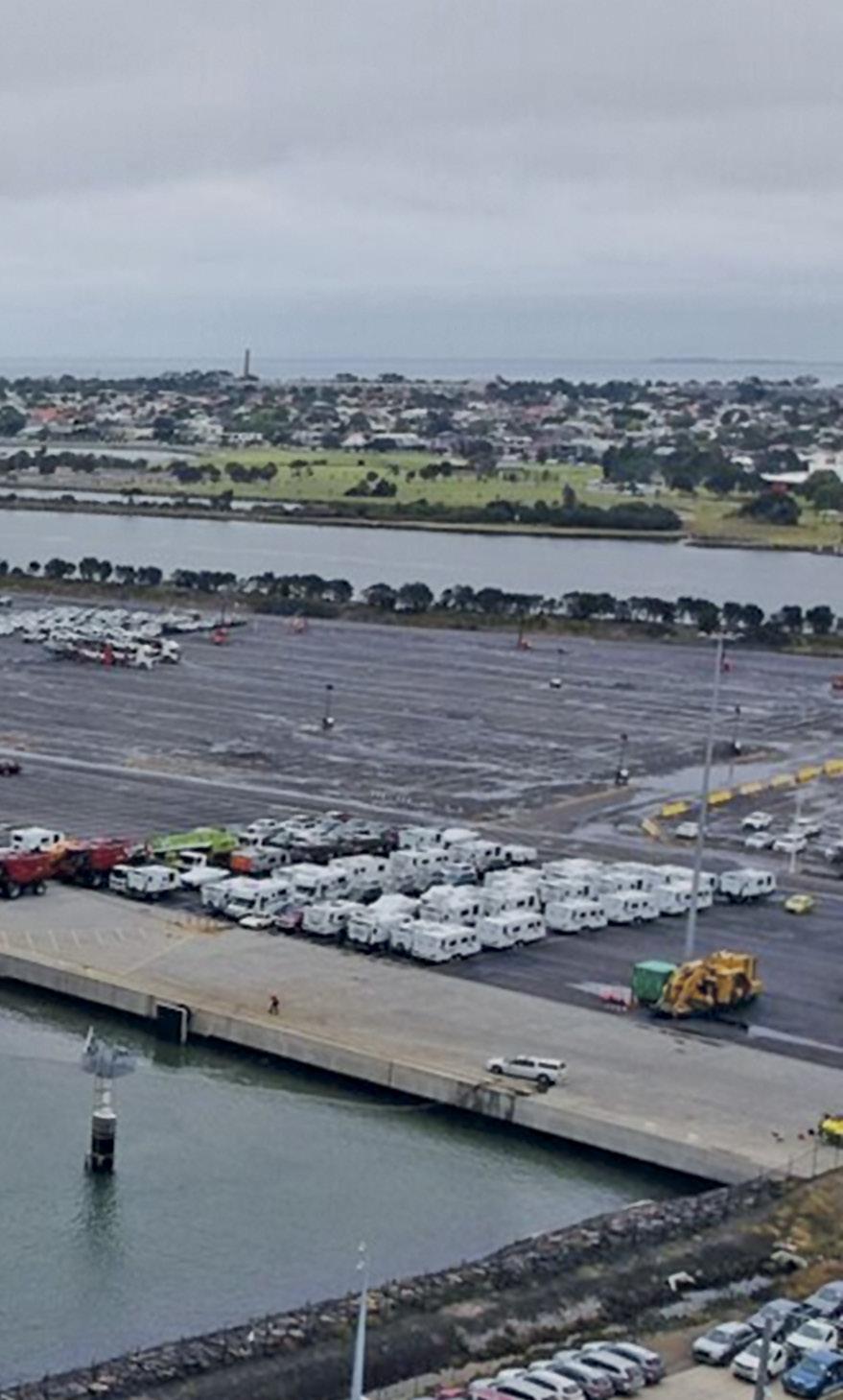
Fahnestock said the breakbulk sector could enhance its influence by forming demand side coalitions with competitors, as long as it’s within competition law. This group can then discuss what’s needed to green a route, and then spread the message to all ports and others involved. “If shippers could get together first and bring in a consolidated demand voice, this would be very constructive.” He noted it made sense to involve the ports early, as they were able to act as facilitators, and often provided a good connection with government that can also be brought into play.
Green corridors work better when journeys are regular – “the more regular the better,” according to Fahnestock. He noted the variety often present in breakbulk and heavy-lift requirements could be a disadvantage, and that regional trade might be the best initial option. He said that, so far, Wallenius and Swire were among the most ambitious breakbulk green corridor developers. Both were contacted for comment, but Wallenius was unable to due to summer absences.
The Journey Towards Decarbonization: Progress, Challenges and Opportunities
Wednesday, Sept. 27 4:00pm - 4:45pm
Swire’s Germino said green corridors were an industry effort: “While much of the focus has been on the container segment, this is due in large part to trade patterns and the certainty of bunkering ports. Developing a green corridor requires the aggregation of all stakeholders in the value chain, from port owners, terminal operators and fuel producers to shipowners and operators, bunkering companies, and cargo interests.” Notably, Swire is working on green corridors as a partner in the Maersk McKinney Moeller Centre for Zero Carbon Shipping.
Regulatory Risk Falling
The risks of moving ahead with green corridors are falling, even if costs may still initially be higher, according to Fahnestock. “Voluntary agreements assume participants have some reason to move quickly – including taking leadership positions, or meeting customer requirements.” In some cases, there will be competition with other companies that are not cutting carbon, but while they may be cheaper short term, this will change as regulations tighten – which could soon happen at both the IMO and EU level.
First movers are relying on wider and deeper regulation being implemented, and until that happens, they are not sure about passing on costs to all charterers, shippers or consumers. “Some are waiting to have some confidence over regulatory signal – there’s a risky period until regulations set in,” he said.
69 Breakbulk Magazine Issue 5 2023 breakbulk.com
Global
Wallenius Wilhelmsen is described as among the most ambitious breakbulk green corridor developers.
Credit: Wallenius Wilhelmsen
AT BREAKBULK AMERICAS…
IMO STEPS UP PRESSURE
The adoption of green corridors has been given extra momentum by the IMO’s decision on July 7 to tighten shipping’s emissions targets, including a new goal of 5-10 percent of bunker supply from low-emission fuels by 2030 and “close to” net zero by 2050 on a life cycle basis (so including embedded emissions and those incurred in disposal/ recycling). For the interim period, the UN agency wants emissions cut by 20-30 percent by 2030 and 70-80 percent by 2040, against 2008 levels.
The IMO also confirmed the development of new fuel standards and that a pricing mechanism would be imposed on maritime greenhouse gas emissions – although the details of that are still being discussed. Penalties of some sort are expected, with more formal economic measures meant to be in place by 2028, according to the strategy.
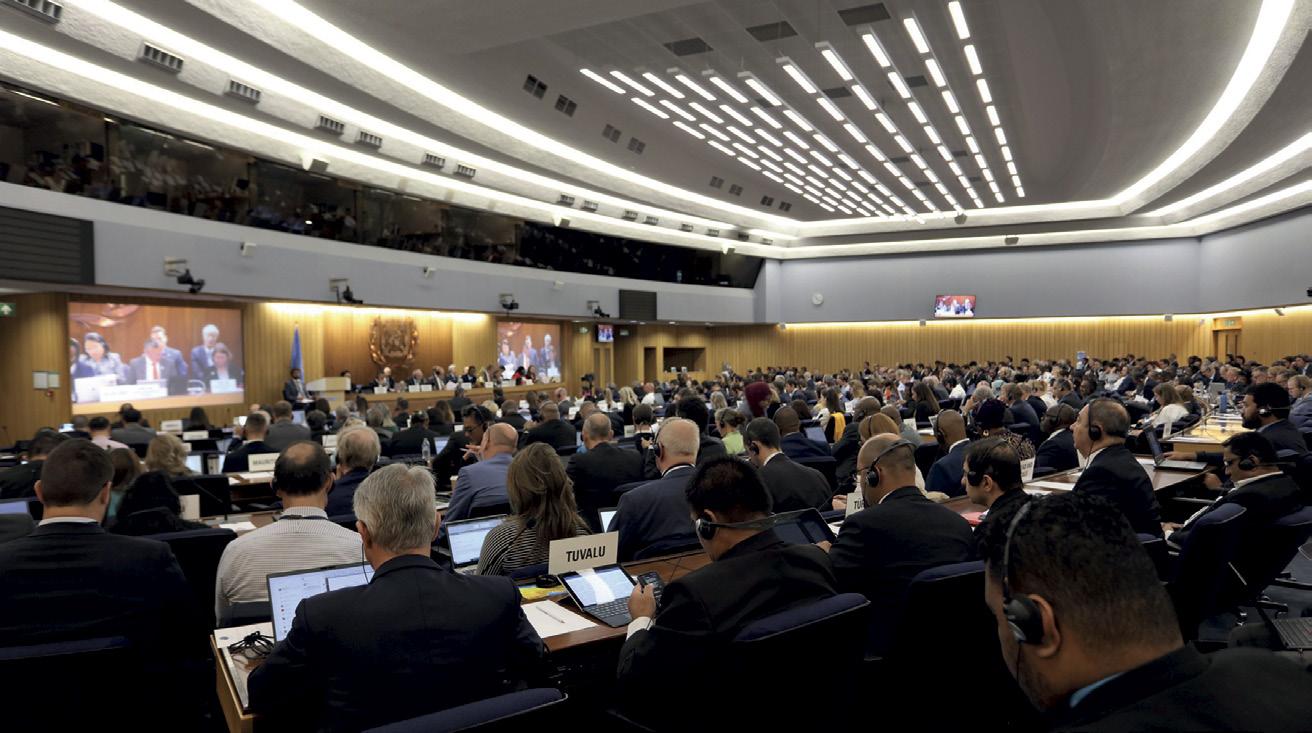
The Global Maritime Forum’s Jesse Fahnestock said this would be positive for green corridors – “but we only really need [green corridors] at the start; once the IMO measures are in place, the corridors are no longer needed… But they are necessary until that legislation begins to bite because the last thing you want is to suddenly have
a US$150 per tonne carbon price and not have the systems, business models, technologies and fuels in place to avoid it. Green corridors will get these elements to maturity by the time the regulations come in.”
Ocean Installer, a Norwegian subsea and offshore wind contractor with a global footprint, told Breakbulk that the recent implemented IMO regulations meant “carriers have already been forced to look into [GHG emission] improvements, a process which hopefully will go beyond expectations.” MPV and heavy-lift owners and operators are seeing an increasing demand for documentation on their vessels’ emissions. Those with lowest, as well as a reasonable commercial approach, will end up as the preferred option.
“The MPV and heavy-lift fleet is starting to push their normal lifespan, and we believe if not for the past few years of chaos, many vessels would under normal circumstances have been ruled out due to age by high profile shippers. Hopefully a global political alignment can create the incentives needed for the carriers to start looking into zeroemission fuels,” a spokesperson for Ocean Installer said.
Customer demand is also moving, according to Fahnestock, although this is more container-focused currently, and early days for breakbulk, but will grow. “Shippers/charterers now have Scope 3 Emission Trading Scheme targets, and this puts pressure on the vessel owners. We’re all preparing for tougher EU regulations, as well as regulations from the IMO, now it has set a net zero target.
“These corridors can be ways for companies that want to get out ahead of regulation before it starts to bite – to have their business models and tech options ready, and secure clean fuel offtake, which is easier to do for specific routes.” Green corridors can also provide an arena for testing various options while regulations are being developed.
“So, there are strategic reasons to take the risk, but the period after 202830 must be covered by IMO and others with penalties, giving early adopters an advantage. Charterers and shippers are now surer about this signal,” he added.
Europe Leads the Field
In Europe there is added pressure to cut emissions from upcoming penalties and incentives under the Emissions Trading Scheme, or ETS, and FuelEU maritime schemes, as well as on shippers through Scope 3 emissions reporting. The aim of the regulations is to encourage owners and charterers to switch to more expensive green fuels and vessels that can run on them. But these incentives and penalties can also offer wide scope for profit for those that understand them fully, according to a report by Lloyd’s Register.
Briefly, from 2024, CO2 emissions from European ships over 5,000 gross tonnes will be included in the regional ETS. Emissions covered will rise from 40 percent up to 100 percent by 2027. In 2026, shippers will also be required to report CH4 (methane) and N2O (nitrous oxide), with EU Allowances to be paid on 100 percent of the CO2 equivalent
70 Breakbulk Magazine Issue 5 2023 breakbulk.com Global
Coke drum hangs on a crane ship. Credit: DHL
The International Maritime Organization agreed to tighten shipping’s emissions targets at its July Marine Environmental Protection Committee meeting.
Credit: IMO, Flickr
Main Green Corridor Routes
1. Shanghai - LA
2. Alaska, British Columbia, Washington
3. Chilean Green Corridor Network

4. Great Lakes - St. Lawrence
5. Antwerp - Montreal
6. Halifax - Hamburg
7. CleanTyne Corridor
of those emissions, in addition to CO2, within the ETS from 2027. The FuelEU Maritime will come into effect in 2025 and sets targets for reducing the yearly average greenhouse gas intensity of the energy used by a ship (or, crucially, by a fleet or pool of ships) from -2 percent in 2025 (compared to a 2020 baseline), reaching -6 percent in 2030 and -14.5 percent in 2035, through to -80 percent by 2050.
Fahnestock noted that while the new EU laws had yet to take effect, “the whole Fitfor55 EU program has had an encouraging effect on decarbonizing shipping – although it doesn’t focus on any particular routes.” He said green corridors target routes that have an advantage, and that the FuelEU specifications on low carbon fuels in fleets would first be realized along these green corridors, “where the industry can meet the requirements in a coordinated and advantageous basis.”
8. Dover - Calais/Dunkirk
9. Gothenburg - North Sea Port
10. H2 powered North Sea Crossing
11. Gothenburg - Rotterdam
12. European Green Corridor Network
13. Nordic Regional Corridors
14. Decatrip
Main Routes
The main green corridors routes, according to the Methanol Institute’s Olafsson, are between the U.S. and Europe, between the port of Rotterdam and the port of Singapore, although these are mostly container-focused, as well as the Japan-Australia route, which includes iron ore and other cargoes.
Fahnestock said that iron ore shipping from Australia to all Asian ports, starting with Japan, was a top candidate for a breakbulk green corridor, especially given the plans to ship green ammonia along the route – which would provide a ready green fuel. “It makes sense to look at a certain cargo type because each has a set business model and can aggregate demand from similar profiles.”
Swire’s Germino said Swire in Singapore was an active participant in the East Australia/New Zealand Green
15. Green Corridors Spain
16. Rotterdam - Singapore
17. SILK Alliance
18. Aus - Asia Iron Ore
19. QUAD Shipping Taskforce
20. Gulf of Mexico
21. Los Angeles - Long Beach - Singapore
Corridor pre-feasibility study, “analyzing which routes within this geographical area have the potential and commercial viability to become green corridors.”
Other possible routes discussed by contributors included a regional breakbulk green corridor in the Mediterranean anchored to green bunkering hubs in Spain, along with routes in northern Europe such as Bergen–Rotterdam, focusing on the offshore oil and gas sector. Fahnestock said the auto partfocused Gothenburg-Ghent route was an early mover in this region. He noted that a small number of customers made it easier to organize.
Ocean Installer’s spokesperson said that “as a shipper with a limited volume being shipped deep sea, we appreciate the main trade lanes will have to be given priority. That being said, if the green corridors are being implemented on busy trades such as Asia-Europe,
71 Breakbulk Magazine Issue 5 2023 breakbulk.com Global
Credit: Annual Progress Report on Green Shipping Corridors 2022, Getting to Zero Coalition, Global Maritime Forum
Asia-U.S. and U.S.-Europe, it will become easier for the carriers to offer low emission sailings within our main trades, such as intra-Europe. Carriers with a low emission propulsion will automatically become more attractive during our evaluation process.”
Spreading the Costs
Olafsson said costs would be spread across all those involved in the sector. “It will be partly authorities, through their support schemes and subsidy programs in the fuel and vessel supply chain. And from shipping companies themselves in the form of smaller profit margins and consumers, in the form of higher fees for transport. But who benefits? The Earth and all its inhabitants,” he said.
From the shipper’s perspective, Ocean Installer said there was a high level of uncertainty from carriers as to how costs for the upcoming Carbon Intensity Index and ETS regulations would be charged on. “As a shipper, we would like to avoid a situation where too many additional charges beyond the vessel’s day rate become the new normal. We have previously seen examples of carriers pushing addons, such as bill of lading fees, various documentation fees, as well as various engineering related fees. Some are easy to justify, others seem creative.”
Shippers and cargo owners are being asked to contribute towards those carriers currently investing in greener propulsion systems. “At the same time, MPV and heavy-lift owners should aim to be in the forefront of the green transition due to the nature of their main transport activities,” Ocean Installer’s
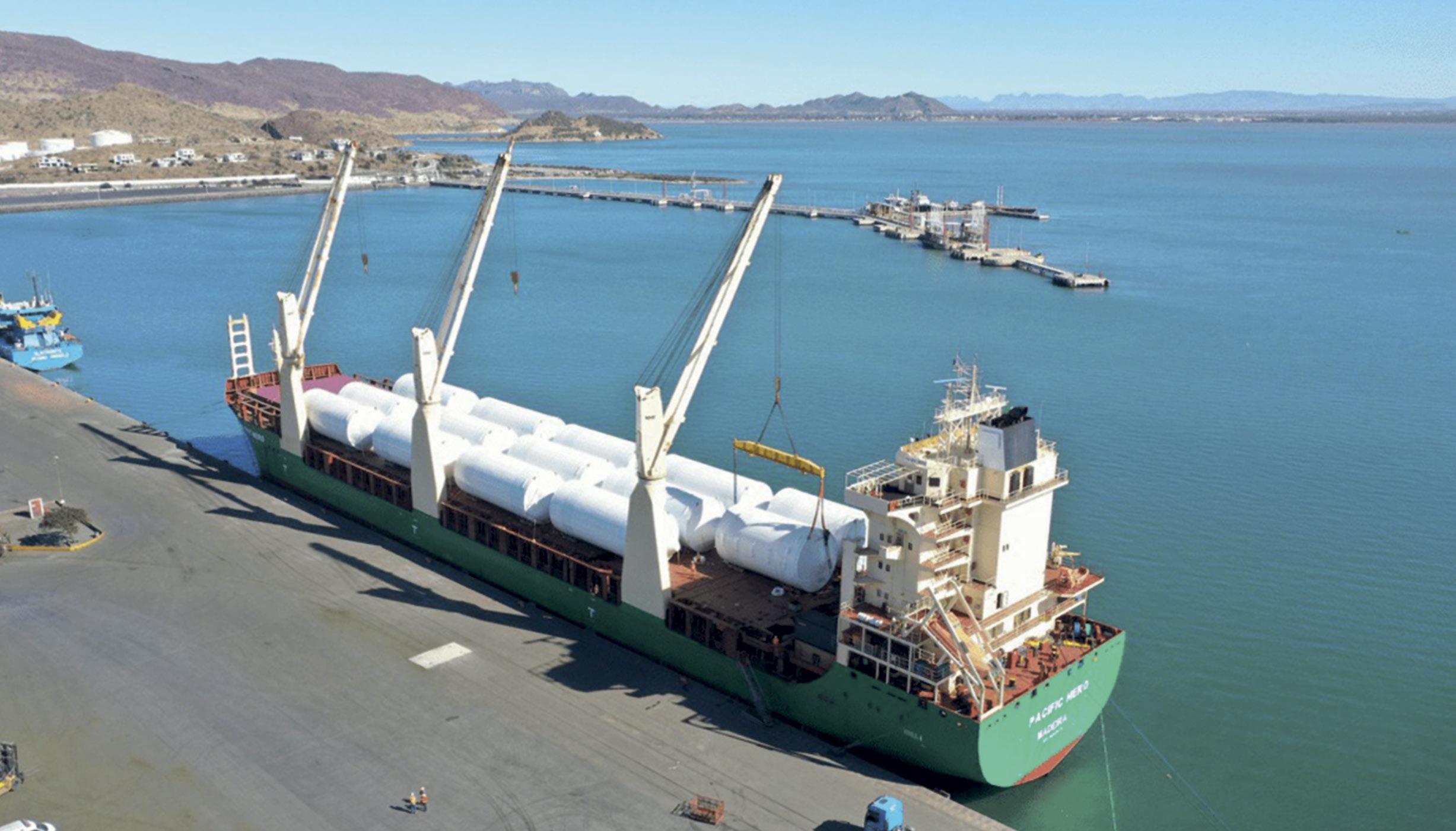
Swire is an active participant in the East Australia/New Zealand Green Corridor pre-feasibility study.
Credit: Swire Projects
spokesperson said. “The requirement for low emission vessels will keep increasing, and at some point, become an inevitable part of the ship-owning business.”
Jeremy Bowden is a freelance journalist, researcher and analyst, specializing in energy matters with a focus on the energy transition.
72 Breakbulk Magazine Issue 5 2023 breakbulk.com
Global
Breakdown of the Stakeholders in the Green Corridor Movement
Port authority 25 Vessel owner / operator 24 Knowledge, research, third sector 23 Government, regulator 15 Others 9 Fuel producer 6 Classification society 5 Customer / cargo owner 5 Financial institution 2
Source: Annual Progress Report on Green Shipping Corridors 2022, Getting to Zero Coalition, Global Maritime Forum
By Yorck Niclas Prehm
DICHOTOMIES OF THE MULTIP URP OSE FLEET
No Fleet Renewal in Sight Despite Solid Earnings
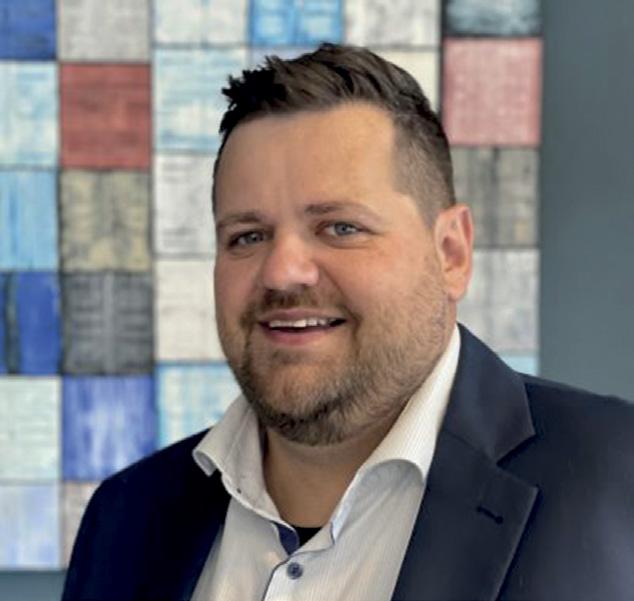
Of late, you might have come across many cheerful and optimistic faces among shipowners and carriers. After a long period of inadequate freight and charter rates that nibbled away at carriers’ balance sheets and directly at ships in terms of less preemptive maintenance, revenues began to soar, increasing in what might be described as leaps and bounds to reach unexpected record levels in mid2022.
The standard ship within the industry, the so-called E/F-type – for which the charter rate, according to the Toepfer Multipurpose Index,
moved within a narrow margin of between US$6,000 per day and US$8,000 per day between 2016
and March 2021 – suddenly attained dizzying, record-setting highs of up to US$23,099 per day in July 2022. Even today, according to the Toepfer Index, the rates stand at US$14,106 per day (as of July 2023), which is still far higher than the 10-year average of US$9,564 per day. So, what’s going on?
At practically the same time as there was a noticeable uptick in demand for MPV capacity, a number of Covid-related distortions took place in the container market. The result of this was that a huge number of MPV vessels were taken off the market by container lines at unprecedented
73 Breakbulk Magazine Issue 5 2023 breakbulk.com Thought Leader
Jul 2023 Sept 2013 Jan 2015 Jan 2018 Jan 2020 Jan 2022 *2007-2015: Compiled from own fixture information; 2016-2022: TM I - Toepfer’s Multipurpose Index Source: Toepfer Transport US$ per day Historical development TMI Index Multipurpose Time Charter Rate Development F-Type 12,500dwt, Geared 2011-2023* 24,000 9,500 15,000 20,000 US$11,921 Daily Time Charter Rate 10 Years TC Average 5 Years TC Average US$9,618 5,000
Yorck Niclas Prehm
rates to marginally alleviate capacity shortages in the container market. Simultaneously, numerous shippers and forwarders that had become frustrated by the issues and delays in the container market began to load containers onto MPVs using breakbulk terminals that were less under pressure or less congested; some of them even de-containerized particular cargoes.
This situation – already a melting pot of different issues – then also had carriers and their employees added to the mix. After years of coping with price pressure from shippers, these groups began to realize they finally
Breakbulk Fleet Update

Wednesday, Sept. 27 11:00am - 11:45am
had an opportunity to levy exactly this same level of pressure themselves by taking advantage of the new, strong market position. When it came to larger projects, this development resulted in massive problems. This was because maritime freight budgets are usually calculated years in advance and during this period, had been based on the stable low rates that had been enjoyed for the years prior. Prices on the spot market, however, had suddenly jumped to prices that were five times higher than had been budgeted for.
New Ships Nowhere to Be Seen
Now it would be reasonable to think that this positive development would result in new ship orders to counteract the aging of the MPV fleet and the linked steady decrease in available tonnage. But sadly, that was not the case.
With an expected commercial life
span of 20–25 years for an MPV, the average age of the fleet sits at more than 16 years. Over 30 percent of the fleet that is in service (according to dwt) will need to be replaced over the next 5–10 years. At the same time, an ever-increasing number of environmental regulations and the desire by many customers to use “green” transport options are piling on the pressure to renew the fleet and replace older ships.
With a timeframe of about 24 months from the point at which the contract is signed to the delivery of a ship, you would think that the orderbooks should be full to bursting, but you just have to take a look at the figures to see that is not the case.
As of July, there were only 34 ships under a binding order or currently under construction, which is the equivalent of 3.43 percent of the sailing capacity. The majority of these vessels were ordered within
74 Breakbulk Magazine Issue 5 2023 breakbulk.com
Over 30 percent of the MPV fleet in service will need to be replaced over the next 5–10 years. Credit: United Heavy Lift
Thought Leader
AT BREAKBULK AMERICAS…
the context of dedicated projects and volume contracts; once they are delivered, they are actually in use for many years and therefore not available on the open market.
So how is it that despite the ebullient revenues, a customer demand for “green” and modern ships, and growing demand - especially from the energy and infrastructure sectors - that we are not seeing any massive new orders for ships?
Lack of Suitable Shipyards
Firstly, there is the matter of shipyards. Building an MPV is much more complicated than building bulk or container ships. High crane capacities and the requirements regarding the cargo hold (length, load-bearing capacity, stability, etc.) mean that steel construction is complex. Equally, shipowners set very high standards when it comes to quality and they also meticulously monitor them on site using their own construction supervision teams.
Order numbers are also small and it is very rare to place an order for a larger series along with the corresponding synergies and economies of scale. There are therefore only a very few shipyards who are willing to take on construction projects that carry that level of risk and with such ‘inconvenient’ clients given that there are other clients for bulk carriers, tankers and containers queuing up to order off-the-shelf and mass-produced standard designs. Similarly, shipyards currently operate on low margins and have to deal with steadily increasing costs for staff, equipment, steel, and construction financing; the more complex a project is, the higher the risk of a miscalculation.
MPVs are traditionally built in China and of the 34 existing vessels on the order books, 32 of them have been ordered there. It is part of the corporate culture in China to renegotiate existing contracts and
price agreements. The low margins on which shipyards operate, as well as increasing interest rates and inflation, mean that appropriate reserves have to be maintained. On top of this, you can also add in the impact of geopolitical uncertainty which, when put simply in terms of the market and future orders, might mean that any potential conflict, such as one between China and Taiwan, could result in the non-delivery of vessels. Furthermore, it is possible that availability could be used as a means of political pressure.
As for the banks, who often finance installment-plus payments during the construction phase for the shipowner, a situation such as this brings high risks with a question mark increasingly hanging over standard repayment guarantees from Chinese state banks.
Fuel Infrastructure Demands
Additionally, shipping that is green requires the use of green propulsion systems; some of these have now moved on from being pipe dreams and are actually available, but there does have to be sufficient infrastructure in place to supply green propulsion fuels. This is quite a simple prospect for a ferry company that only ever sails from A to B. However, when it comes to a market whose strength lies in very flexible schedules and the ability to call at niche ports that lie close to the cargo’s final destination, the challenge is far greater. If a shipowner orders a vessel today, they alone will have to bear the risk that there will be a reliable supply of required fuel in sufficient quantities wherever it may be needed and for the whole lifetime of the vessel, which is likely to be 20-25 years or more. No charterer or shipper would reward this risk by offering higher freight rates without a guarantee.
So, we end up with a chicken-andegg problem. Without the demand or sufficient order numbers for vessels that use green fuels (methanol, ammonia, hydrogen), nobody will take
the risk of investing in the supply infrastructure; without a secure fuel infrastructure, no shipowner will place an order for a specific propulsion system to be used on a ship. Furthermore, the risk that additional costs might result from green propulsion systems – bearing in mind that there is still only very limited experience of using them to date – lies solely with the party placing the order.
These developments in the market are increasingly turning into a stumbling block for the energy transition. The MPV fleet, which will continue to steadily shrink in the future, is supposed to draw on its capacity to form the backbone for the development of renewable energy sources since it is exactly these vessels that usually transport the main components required for the necessary systems. At the same time, we are facing the fact that we are becoming increasingly dependent on just one major country to supply us with new vessels, which further exposes us to a geopolitical cluster risk. Likewise, this has an impact upon the fleet that is in use. For example, 50 percent of the MPV fleet in use between 25,000 deadweight-tonnes and 40,000 deadweight-tonnes is now 100 percent under the control of China.
For a number of years now, we have been experiencing the loss of shipyards, staff and the knowledge we need for at least minimum fleet supply to be supplied from safe local sources. We are now facing an urgent need to create a political framework and sufficient incentives to both maintain and further develop this capacity. Maritime transportation guarantees the construction and operation of critical infrastructure. Without the continued existence of independent and reliable transport chains, it will be near impossible to meet current and future climate targets.
75 Breakbulk Magazine Issue 5 2023 breakbulk.com Thought Leader
Yorck Niclas Prehm is head of research at Toepfer Transport.
CALLING ON THE CARGO CONNECTORS
Forwarders Back in Favor After Pandemic Blip
Logistics is in some respects a thankless task, according to projects specialist Andy Tite. “When it’s done well, it looks so easy. Stuff just arrives. If it goes badly, there is a tremendous amount of focus and everything becomes highly reactive. That’s the case with any cargo, but especially significant when it comes to out-of-gauge or sensitive cargoes; if you are moving something weighing 3,000 tonnes and a vessel breaks down or there’s a problem with handling equipment, there is no
simple alternative waiting at the end of the road or in a depot nearby.”
That is where human interaction and strong relationships come in, said
Region: Global
Problem: Low freight rates prompted shipping lines to go direct to EPCs, cutting out forwarders from the supply chain
Solution: Intermediaries are re-proving their worth as value providers, cost cutters and problem solvers
By Felicity Landon
Tite, vice president, global business development and commercial director at DHL Industrial Projects. “You have to have the ability to be close to the cargo – because when there are challenges, you need to have already appreciated what the issues could be, mitigated the risks and established that in different situations, you can do X, Y or Z as an alternative.”
With that in mind, Breakbulk asked the question: does advancing technology threaten to cut out the middleman? Tite pushed back on the terminology.

76 Breakbulk Magazine Issue 5 2023 breakbulk.com
Credit: DHL Global
Workers loading in snowfall.
“We are only a middleman if we do our job poorly,” he said. “If we provide value and direct cost savings to clients, then we are an integral part of the supply chain. If we receive a request, put the phone down and give the request to our supplier, then we are a lazy freight forwarder. If we can’t provide value in relation to schedule, operational efficiency, consolidation and environmental considerations – and ideally direct cost savings –then there is no place for us.”
Inevitably, technology is advancing. DHL has innovation centers in Germany, Dubai, Chicago and Singapore – with the focus across the DHL group, including express/parcel, containers, ocean freight, airfreight, overland trucking and global forwarding, of which industrial projects is a part.
“The innovation centers are really useful because they look at the best technologies almost irrespective of the application – what’s good in the industry, what’s good in terms of applications, hardware or ideas that we can pick up because they are directly transferable and can be adopted in parts of the business.”
At a recent DHL global conference, a speaker from the innovation centers presented a detailed ‘heat map’ of social and business trends in one half, technology trends in the other. AI, blockchains, drones, digital twins, APIs, wearable sensors and big data analytics were just some of the techs being considered. Some are more applicable than others, of course.
Tite said: “Obviously there is known technology that is readily adaptable, such as the use of drones. These can be combined with geofencing, RFID or other types of equipment tagging, which enables effective human-free inventory management. In projects, you could be looking at external or remote storage areas; you could set up a laydown or storage facility near to the job site and rather than having people stationed there on a consistent basis, you can lock the gates and manage the inventory with a drone that completes a patrol, picks up tags, logs the information and on landing provides a report on what is in that location and where it is situated. That is the sort of technology we are looking to adopt.”
Solving Problems with AI
Hamburg-based Lang.Tec is a small company focusing on natural language processing (NLP), AI, computational linguistics (CL), machine learning (ML) and software development –seeking to “solve real-world problems with artificial intelligence.”
There are many opportunities to apply Lang.Tec’s solutions to the shipping world, said team leader Dr Kilian Foth. “We are a crossindustry company – we are 12 years old and have been working with shipping for four years now.”
He is aware of the way that shipping, particularly the project cargo sector, views itself as “different”, but said: “Most of the customers we do projects with are people doing this for the first time. Usually, they are aware that they don’t understand about NLP and they assume in turn that we don’t understand their industry. That’s basically fair – we don’t. We do projects that combine IT and linguistics. There has to be a common understanding that we have to pool resources and understand what we are doing here.”
Lang.Tec has organized various types of information extraction solutions for harbor masters (for example, loading operations) and ship
Progress in Digitalization in the Breakbulk Sector: Expectation vs Reality
Wednesday, Sept. 27
3:10 pm - 3:50 pm
owners (vessel position/availability), and designed systems that extract the details of project and breakbulk cargoes from charterers seeking ships.
However, Foth expressed his frustration that the shipping industry is still, in his view, characterized by ‘the overflowing email inbox’, spreadsheets and semi-formal tables typed up.
“Brokers receive 800 emails a day but say they don’t need assistance in processing them because ‘I know what’s in them and anyway the project doesn’t start until next month’.”
He believes that by using NLP, forwarders or others could respond to enquiries about potential project business faster and even consolidate back-to-back project movements. “Ideally, they would not have to read the email – it would convert automatically with opportunities going into a funnel, turning opportunities into a contract faster by processing.”

Brokers or forwarders can probably get the books filled with business with their current working practices “but they may want to reply faster to the really juicy projects,” Foth said. “What’s missing is sophisticated AI to allow you to do the same things more efficiently or maybe pick up the really lucrative contracts earlier. If they really want to compete, they should be trying to explore every opportunity they can get.”
If someone received 400 emails a day, it could take 27 hours a day to read them all, he suggested. “Our NLP has 95% accuracy of extracting information
77 Breakbulk Magazine Issue 5 2023 breakbulk.com
Global
Andy Tite
AT BREAKBULK AMERICAS…
from these emails. It provides more time to choose the right contracts.”
Working Ahead
However, Tite said: “If you are waiting for the email in order to find out about the contract, you are already too late. We often work on projects two or three years in advance, ahead of the RFQ, prior even to the finalization of funding and design of the equipment to be moved, because fundamentally, it’s back to value creation. Advising clients on how big, wide or heavy they can build will make a difference to their project. We can even advise on procurement strategies.
“I think it is wrong to say that our industry is depicted by overflowing inboxes and trying to retain all the information. I think it is just the same for anybody – people won’t use technology or systems if they don’t find them useful. That’s why Excel exists. Everyone moans about it, but no one has found anything fundamentally better for certain basic tasks.”
Among the solutions provided to clients, DHL Industrial Projects has its own materials handling platform, MMS 360. This provides end-to-end tracking and visibility, with a live dashboard reporting internally and externally and clients given varying levels of user access. “Clients can track the general progress of a project or go down to PO level, or the progress of each line item. They can see how far along the transport is and when they
can expect to receive their items at the job site. We have also linked MMS 360 with our CargoWise platform.”
Tite was not keen to ‘put the project industry on a pedestal’ or say it is inherently different (“although we really like to be considered different”) but said: “The point is, some things are not transferable. AI certainly has a place – within the DHL Group it’s become even more of a focus. In the supply chain environment, with predictability of volumes and the manner in which actions need to take place, AI can obviously work very well. But it will take time and adaptability in both the technology and our approach when looking at projects.”
Customers are looking out for a new tech approach, he said. A major international energy company recently approached him with early proposals for a greenfield project in a remote location. “There were two main things they said would be advantageous to the project: environmental focus and solutions in relation to carbon neutral transport, and digitalization and the use of AI. It’s becoming more and more prevalent.
“Within projects, there are elements we can take from the wider industry relating to AI and so on. The challenge is whether we can set the boundaries within the project industry to establish at least a level of predictability so that we could apply AI. Perhaps a repeat operation such as wind turbine components being transported on
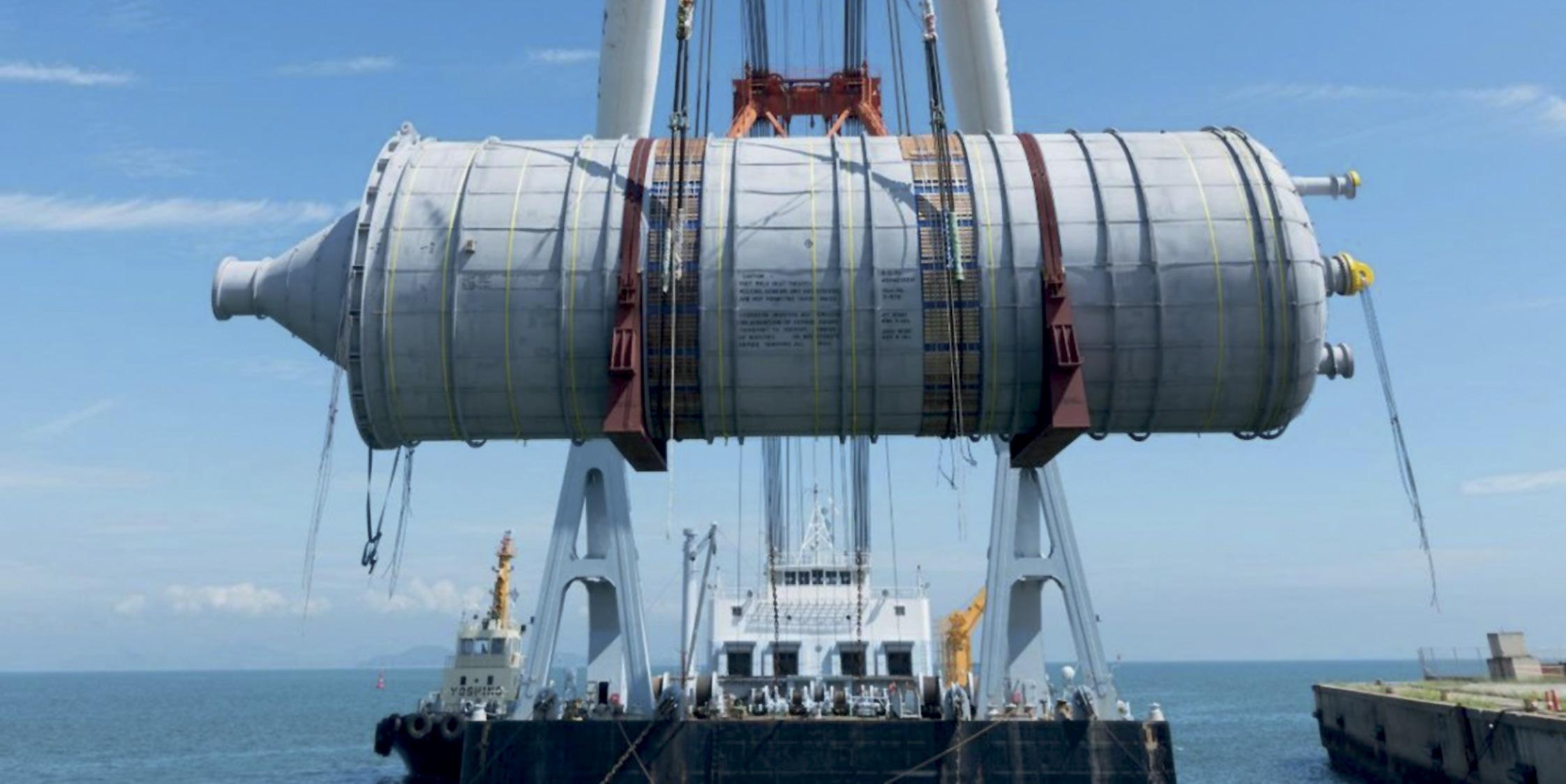
the same route or from a consistent OEM could be learned from.”
Meanwhile, clients are always providing the DHL team with new challenges – in a good way, Tite said. “They are challenging us to do things better or differently. They are asking the question – why are you doing it that way? Clients for the same projects can have very different prioritizations. Such is the diversity in some clients’ portfolio that their traditional business is handled in an almost completely opposite way to their new diversified business. The reason is a different market, and fundamentally the margins are different.”
From DHL’s point of view, there is an important new opportunity for forwarders to flourish. “In high-volume, low profitability, low return markets, where the project is not that complex and does not require a high level of engineering or technology, EPCs may not be engaged by the project owner as they would traditionally have been because it is almost commoditized,” Tite said. “So the role of the forwarder is lifted at least one tier in the supply chain. This gives us more responsibility and also more visibility, because we are then dealing with the priorities of the project owner and project as a whole, as opposed to the priorities of the other parties in the project. This provides a much greater level of clarity.”
78 Breakbulk Magazine Issue 5 2023 breakbulk.com Global
Felicity Landon is an award-winning freelance journalist specializing in the ports, shipping, transport and logistics sectors.
A coke drum hangs on a crane ship. Credit: DHL
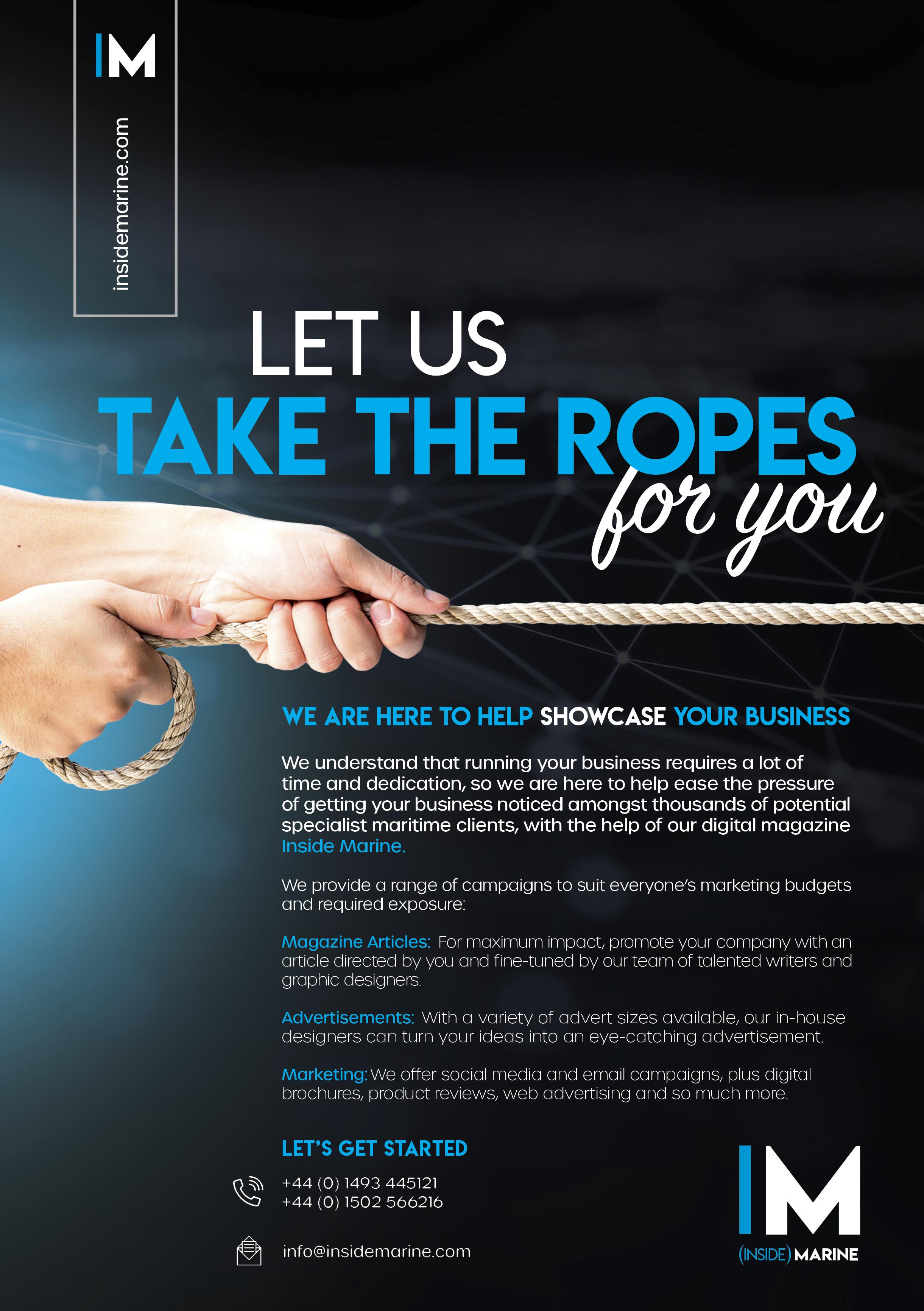
Project Cargo Not Immune to Bribery,
This may be the 21st century, but brown envelopes do still change hands – and, of course, many more sophisticated corruption techniques are also available. However, the risks of being exposed for any corrupt practices cannot be overstated. ‘Turning the other way’ is no longer an option. How does all this translate into the project and breakbulk cargo sector?
“You have to look at corruption as an evolving issue, but also as a neverending issue,” said Cecilia Müller Torbrand, CEO of the Maritime AntiCorruption Network, or MACN. “Since MACN came into existence ten years ago, corruption has become much more of a risk management issue when
Exploitation
it comes to how companies should act. There are more expectations for companies to act in an ethical way – from investors, regulators and society.
“But the impact of corruption goes far beyond regulators and the board room. Corruption has severe

Region: Global
Problem: Fraud and extortion are deep-rooted in all sectors, and project cargo is no exception
Solution: Companies need to set the tone from the top and be realistic about mitigating the risks of corruption throughout supply chains
By Felicity Landon
implications for frontline staff, who have to deal with the threat of delays to vessels and personal safety situations. We have seafarers out there working 24/7 in remote areas –and it is often these locations where corruption is an ever-present threat for them. A lot of preparation needs to be done at a company level to truly support seafarers in their work.”
Enormous amounts of money are still going through corrupt channels, Müller Torbrand said. “Corruption remains a huge problem globally, not just in the shipping industry. However, it is very much on the radar of governments – for example, the U.S. strategy sees corruption as a
80 Breakbulk Magazine Issue 5 2023 breakbulk.com
Global Credit: Shutterstock
key element in international security and, increasingly, foreign policy. At the same time, corruption risk is very much on the agenda for companies as well because there are huge risks and penalties involved for those exposed for or engaged in any corrupt practices.”
It is not just what you do in your own backyard, she emphasized, but also how you act with others. “Ten years ago, a company might have paid a third party to conduct business in a certain way in a high-risk market. By using a third party, it could consider itself off the hook. Those days are over. For example, you can’t be ‘compliant’ with sanctions and then bribe someone at the other end. You can’t turn the other way.”
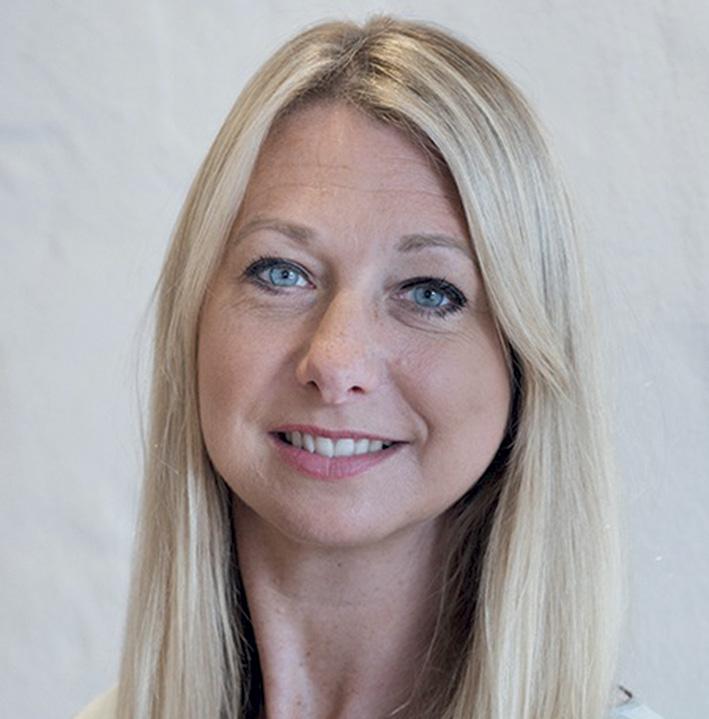
Exposure to Corruption
Müller Torbrand said the business model of the shipping industry exposes companies to corruption risks. “This is an industry that is dealing very heavily with government interaction 24/7, is operating in different jurisdictions, often in very remote areas, is very regulated and is very dependent on third party representatives – in this case port agents, who are guiding you and know the local laws.
“In project and breakbulk shipping, seafarers or operators might not be familiar with the port they are calling and they might not even know the port agents, who are often appointed by the charterer. So this exposes the industry to corruption risks.”
Freight forwarders and/or project cargo specialists should make sure
that the port agents and other business partners they employ share the same standards as the company, she said.
“A port agent or anyone who works in the intermodal supply chain can be a fantastic resource. There are many agents who understand the standards required, share the same ethical values and provide good communication. The more the industry works as a team to counter corruption risk, the easier it is for crew, companies and the authorities. We call this Collective Action, when the industry works together. It is not just about a transaction or process; it is looking at each other as a resource for getting a vessel in and out in an ethical way.
“Of course, there are markets where people offer a ‘quick fix’. You must always ask for a receipt. There is no way around that. You can’t say ‘it was this country, that is the way they do things’ – it doesn’t work that way anymore.”
Discussing the growing problem of crime in the supply chain recently, the British International Freight Association, or BIFA, said that many of its members were conducting informal risk assessments based on client, commodity and route. “This helps disrupt illicit trade to some extent but there is always a less diligent party who will accept the business,” it said in an article. While the freight forwarder’s ability to disrupt illegal trades such as cocaine in containers of fruit or narcotics in reefer containers full of melons is limited, BIFA said there were two areas where members should consider tightening up. First, they should have a clearly defined and internally publicized incident reporting process, led by a senior manager, and procedures implemented to report suspicious movements. Second, all freight forwarders should consider their recruitment policies, particularly when it comes to taking up references, “to ensure that new employees are actually who they say they are and to identify any unexplained gaps in their employment history. Having an operator on the inside is a great asset to criminal gangs.”
Increasing Awareness
Peregrine Storrs-Fox, risk management director at the TT Club (which recently joined MACN), said that increasing awareness of corruption is hugely important. “It is at all levels – brown envelopes to make things happen, but also where warlords and syndicates are very active and very successfully corrupting people in the supply chain. Where we can be aware of it and call it out and promote better procedures, we will absolutely call it out.”
At the ‘low level’, TT has been focusing on insecure parking. “The truck driver has every incentive not to go into secure parking – maybe they have been given cash to pay for it, but they don’t go there and they keep that cash, so there’s a moral hazard at that level. All the way through the industry there are opportunities for money to be misappropriated. As an insurer, we wouldn’t generally be hearing about this sort of thing because it wouldn’t be an insured risk; we hear about it through ad hoc conversations. Being a mutual insurer, we try to be supportive of an operator, even if there isn’t a claim that can be paid under cover. On narcotics, wildlife trafficking, general theft, etc., we try to raise awareness and emphasize the things that can be put in place to improve the situation.”
Müller Torbrand said that in the project cargo and breakbulk sector, there is added risk because vessels are not calling frequently at the same ports. “They may not know where the next port

81 Breakbulk Magazine Issue 5 2023 breakbulk.com
Global
Cecilia Müller Torbrand
Peregrine Storrs-Fox
of call is, and that has implications around their ability to prepare for threats and illicit demands. Do they know what the situation is in the next port? Can they prepare? There is less opportunity to prepare in these trades compared with containers on regular schedules. Many ports are remote, but when handling project cargo, vessels are often calling at ports that are even more isolated –further away from immediate help.”
Robust Policies
Freight forwarder and project logistics specialist deugro said it has robust policies and procedures in place to prevent corruption, outlined in a ‘Code of Ethics and Compliance and Anti-Corruption Standard Operating Procedures’. There is a strong focus on training, risk assessments and due diligence, and reporting.
“Our employees are regularly trained on anti-bribery and anticorruption through our compulsory e-learning training initiatives and various face-to-face training workshops,” said a spokesperson.
deugro said its ISO 37001 certification “symbolizes our commitment to protect our shareholders, our customers and
our business partners from the hazards and risks related to bribery.” Measures implemented to comply with ISO 37001 have included carrying out regular bribery risk assessments and due diligence on deugro’s projects and business associates. “Our risk assessments help us to manage and mitigate any potential risks by identifying our risks and putting relevant processes in place,” said the spokesperson. “Our due diligence processes help us to assess and know our business partners and identify any potential or actual conflicts of interests.”
deugro group has its own whistleblowing hotline SpeakUp! – accessed online, it is open to all employees and stakeholders, including clients and subcontractors. “We depend greatly on our stakeholders to ‘SpeakUp!’ and report any near-misses, incidents or other concerns they might have, whether related to bribery and corruption or otherwise. Our stakeholders have the option to report their concerns anonymously. Our comprehensive investigations and disciplinary actions procedure explain how we handle and investigate reports received.”
Importance of Collective Action
MACN was set up to focus on collective action in the maritime value chain, Müller Torbrand said. “Each party has a role to play – flag, insurance, crewing agencies, ship management, charterers, agents, class, and so on. No one has the full responsibility. They all need to work together to reduce the risk, so that when challenged they are all standing according to the same standards, behind the captain of the vessel.”
In some business transactions it may feel easier to point fingers at others rather than think ‘I am accountable’, she said. “It is about thinking – how do I make sure my business partner acts to the same standards as I want my company to operate? That is a more complex approach but definitely the right one.”
As part of this process, MACN works ‘in collaboration’ with governments. “We
don’t want to point the finger because this is sensitive. We want governments as well as the private sector to come to the table and work on solutions with us. The reason why we have been able to work in some of the high-risk jurisdictions is because we can talk to governments about the risks of corruption, the consequences for trade and why developing solutions is so important. Corruption has negative consequences, but what is the incentive for that government to do something about it?”
She would like to see more effective enforcement of anti-corruption legislation across industries – “seeing companies being prosecuted would scare others into action” – and also said there should be more focus on the (unintended) implications and potential loopholes of new legislation.
The impact on companies that find themselves in the middle of a case of corruption can be considerable – trade disruption and delays, financial loss and huge reputational risk. And of course, corruption is an illegal activity that can provide a pathway to other types of crime.
Finally, she emphasized, everyone must recognize that there is corruption in the maritime trade. “It’s everywhere, so why shouldn’t it be in shipping? When looking at trading into high-risk areas, companies should ask themselves: are we strong enough, do we have enough resources to handle this, can we support the people who are facing these demands, is there a strong policy from the CEO? If yes, we can go there.
“We have a long way to eliminate corruption, but we can make sure our people are trained, make sure they can escalate concerns internally if faced with issues, ensure they know what they can do, and try to lift the responsibility from the individual. There is a lot you can do internally to be better prepared by building that anti-corruption program and then working together in collective actions – we become stronger.”
82 Breakbulk Magazine Issue 5 2023 breakbulk.com Global
Felicity Landon is an award-winning freelance journalist specializing in the ports, shipping, transport and logistics sectors.
Credit: Shutterstock





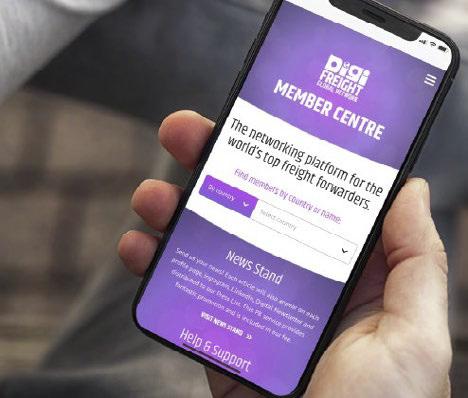


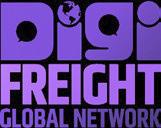









www.ufofreight.com ONE OF THE ONLY EXCLUSIVE FREIGHT FORWARDER NETWORKS IN THE WORLD ESTABLISHED IN 2000 ISO 9001 & ISO 14001 CERTIFIED UNIVERSAL FREIGHT ORGANISATION Cargo Connections provides independent forwarders access to a global network of agents who can handle their shipments, whilst working professionally under strict Membership Rules. The ISO 9001 and ISO 14001 certified organisation offers a Restricted Representation policy, which means membership will only be offered to a limited number of agents per country. www.cargoconnections.net NEED RELIABLE PARTNERS TO HANDLE YOUR FREIGHT FORWARDING NEEDS? Then join the international network with 100+ of the world’s top independent freight forwarders, located in 100+ countries, to increase your business. www.digifreight.live DigiFreight YouTube Our unique platform with built in time zones enables forwarders to connect with one another directly through their mobile device across several communication platforms (Skype, Zoom, Google Meet and WhatsApp). A project has come up and you don’t have time for a long back and forth email trail. Our powerful interface enables you to quickly schedule a meeting with your DigiFreight partner at a mutually convenient time with time zones automatically considered. Plus Face-to-Face Meeting in Croatia from 2 Oct 2023 - 04 Oct 2023 THE NEW ERA IN NETWORKING FOR THE FREIGHT FORWARDING INDUSTRY 12-14 November 2023 We are delighted to announce that our 12th Annual Summit will be held from 12-14 November 2023 at The Royal Cliff Hotel in Pattaya, Thailand. THAILAND 12th Annual Summit VIRTUAL MEETING HUB projectcargonetwork.com UK Based Head Office Established 12 Years Professional Online Training ISO 9001 & ISO 14001 330+ Specialist Members 120+ Countries New Virtual Meeting Hub Smartphone Service A project has come up and you don’t have time for a long back and forth email trail? Our powerful interface enables you to quickly schedule a virtual meeting with your PCN partners at a mutually convenient time (with time-zones automatically considered) via WhatsApp, Zoom, Google Meet or Skype. NETWORKING PLATFORM FOR THE WORLD’S TOP PROJECT CARGO SPECIALISTS MORE BUSINESS MORE CONNECTIONS MORE EVENTS pcntraining.com
MOZAMBIQUE RETURNS TO WORLD STAGE
Resilient Investment Powerhouse Worth Over $100 billion
Mozambique is a meteoric rise in the project sector that no one can afford to ignore. The combined planned investment for phases 1 and 2 of the country’s three major liquefied
Region: Middle East & Africa
Problem: A long-standing force majeure stalled development of one of the world’s biggest gas infrastructure projects in Mozambique
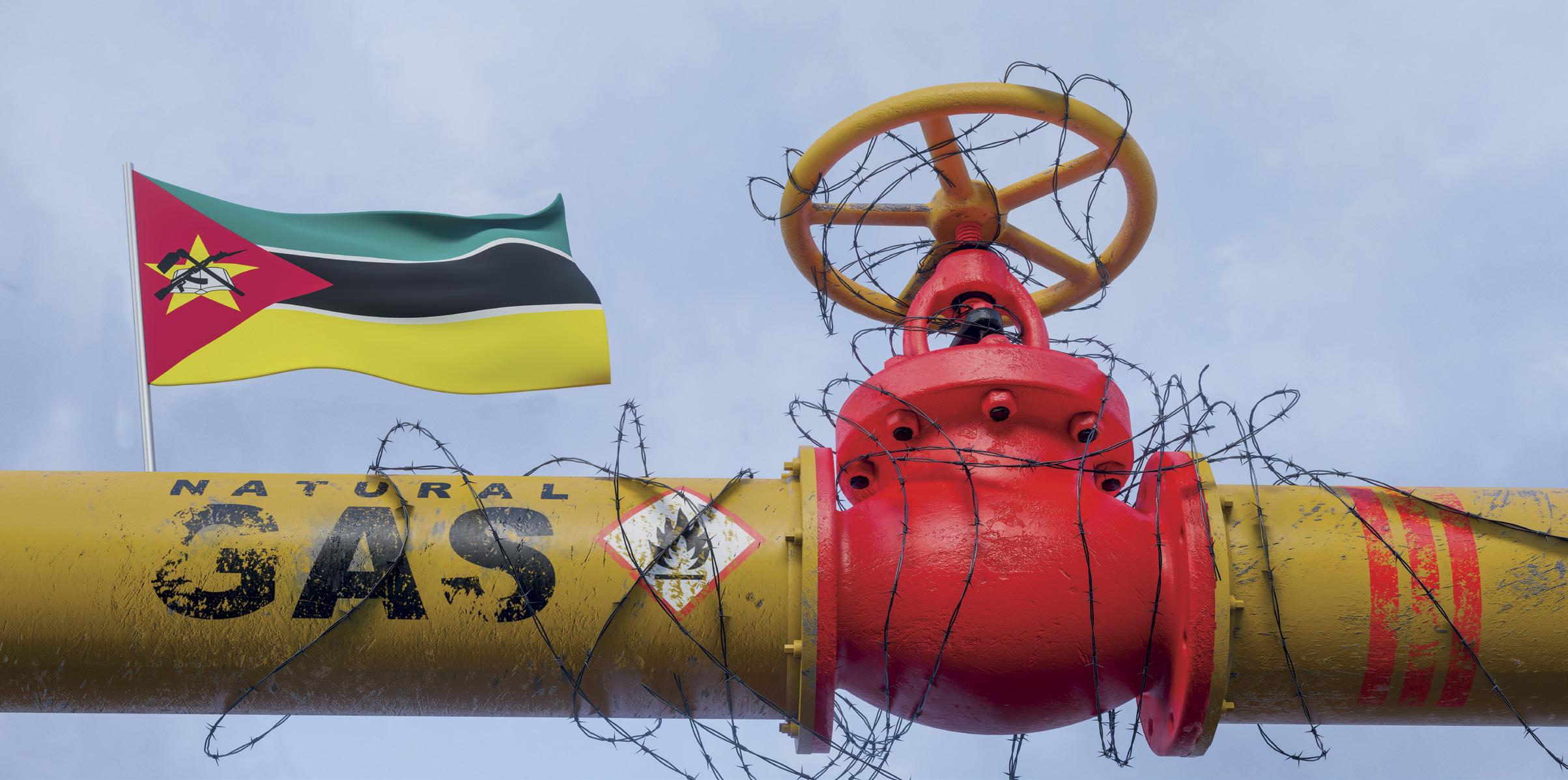
Solution: Signs are that the developer is kickstarting the project again, opening up opportunities for project cargo movers
natural gas projects alone exceeds a staggering US$100 billion, potentially making it the most significant investment in the world, second only to the international space station.
However, no one could be blamed for not taking this seriously. Many consider Mozambique’s developments a distant possibility, as the country faces significant challenges. Nevertheless, the unwavering interest and continuous investment endure unabated. Neither cyclones, corruption, sovereign debt, nor even ISIS have been able to impede the nation’s progress.
“Mozambique is the Terminator,” said Paul Eardley-Taylor, head of oil
 By Liesl Venter
By Liesl Venter
and gas, Southern Africa at Standard Bank. “It just cannot be killed.”
This comes while Total Energies still maintains its force majeure declaration
Paul Eardley-Taylor
84 Breakbulk Magazine Issue 5 2023 breakbulk.com
Middle East & Africa
Shutterstock
Credit:
at its most significant project in Mozambique, the Mozambique LNG Project, where an insurgency two years ago brought activity to a complete stop. Dozens of civilians were killed in Islamic State-linked attacks in the coastal Mozambique town of Palma in 2021, near the gas projects valued at more than US$60 billion. Despite its massive gas reserves and potential, talk of transforming this African economy seemed to be precisely that as companies evacuated staff.
After decades of civil war, the first glimmer of hope was fading fast as insurgents held the upper hand.
But then Southern Africa Development Community and Rwandan troops were brought into Cabo Delgado, the country’s northernmost province and home to its precious gas reserves, and over the past two years, the insurgents have steadily been moved back.
The soldiers have not come cheap though. The Rwandees alone cost around US$20 million a month if the rumors are to be believed. True or not, it gives insight into Mozambique’s importance to the oil and gas industry.
“Nothing is going to stop the gas development in Mozambique,” EardleyTaylor said. “The question is, does the world need Mozambique’s gas, and the answer is yes. More so, Mozambique is in the perfect location. It is only nine days sailing to India, with a population of 1.4 billion. Then there is China, just as close and with a population of more than a billion. Both these countries
have committed to net zero goals by 2060. Furthermore, Mozambique gas comes with a shallow CO2 footprint.”
At only 48 years old, Mozambique is comparatively young. It has governance issues, problems with debt, remoteness and poverty. That’s in addition to the problems with terrorists. But, despite it all, “Mozambique’s interest has not waned,” Eardley-Taylor said. “Just the opposite. It won’t happen overnight, but Mozambique will be one of the top five LNG-producing nations in the world within the next few years. No matter how one looks at Mozambique, nothing can stop it.”
Calm After the Storm
In Pemba and Palma, Mozambique’s two gas towns, life has returned to some form of normality after the drama of the past two years. While Total has not formally committed to when it will lift the force majeure, its commitment to Mozambique continues.
“Billions of dollars have been spent on Mozambique to date,” Eardley-Taylor said. “There is simply too much at stake in terms of investment already made and earnings to come just to walk away.”
Roelof van Tonder, director of market insight and development at Africa House, said that while fundamentally nothing has changed around the project and the developers are still saddled with the declared force majeure, a visit to Palma tells a different story. “Construction activity is definitely taking place on-site, and there are a number of developments going on,” he told Breakbulk
Stakeholders close to the project have also confirmed that Total and its partners are in close discussion with companies awarded tenders for TotalEnergy’s Mozambique LNG. “A lot has happened since those contracts were signed,” Van Tonder said. “The world has had a pandemic, Russia has gone to war with Ukraine, and inflation is at an all-time high. Pricing will be a sore point at this stage, and it seems that the developers are trying to get a grip on costs before they lift the force majeure.”
This in itself is going to be a long and difficult process. Word on the ground is that all companies awarded contracts for the project have been asked to resubmit pricing schedules. “If nothing else, the insurgency will have to be considered, and no company is going to operate in Mozambique without taking into account added security measures,” Van Tonder said. “While the immediate threat has been removed, there are still major risks to operating in this region. It is not an
AT BREAKBULK AMERICAS…
Industry Sector Review: Mining, Oil and Gas, Renewables and Manufacturing
Wednesday, Sept. 27 12:00pm - 12:20pm
85 Breakbulk Magazine Issue 5 2023 breakbulk.com
Middle East & Africa
“IT WON’T HAPPEN OVERNIGHT, BUT MOZAMBIQUE WILL BE ONE OF THE TOP FIVE LNG-PRODUCING NATIONS IN THE WORLD WITHIN THE NEXT FEW YEARS.”
- PAUL EARDLEY-TAYLOR
easy environment to operate in, and the risk must be factored into costs.”
Van Tonder believes that interest in Mozambique will only increase going forward. “We have yet to fully grasp both the scale of the gas resources and the size of the business and energy opportunities these discoveries present.”
Project Potential
Mozambique LNG was initially expected to deliver its first LNG cargo in 2024, with plans to produce up to 43 million tonnes of gas annually. The force majeure delayed the timeline of this project extensively. Indications now are that workers will return towards the end of this year with the project back up and running by early 2024. Plans for the approximately 65 trillion cubic feet of recoverable natural gas onshore plant could be commissioned as early as 2027.
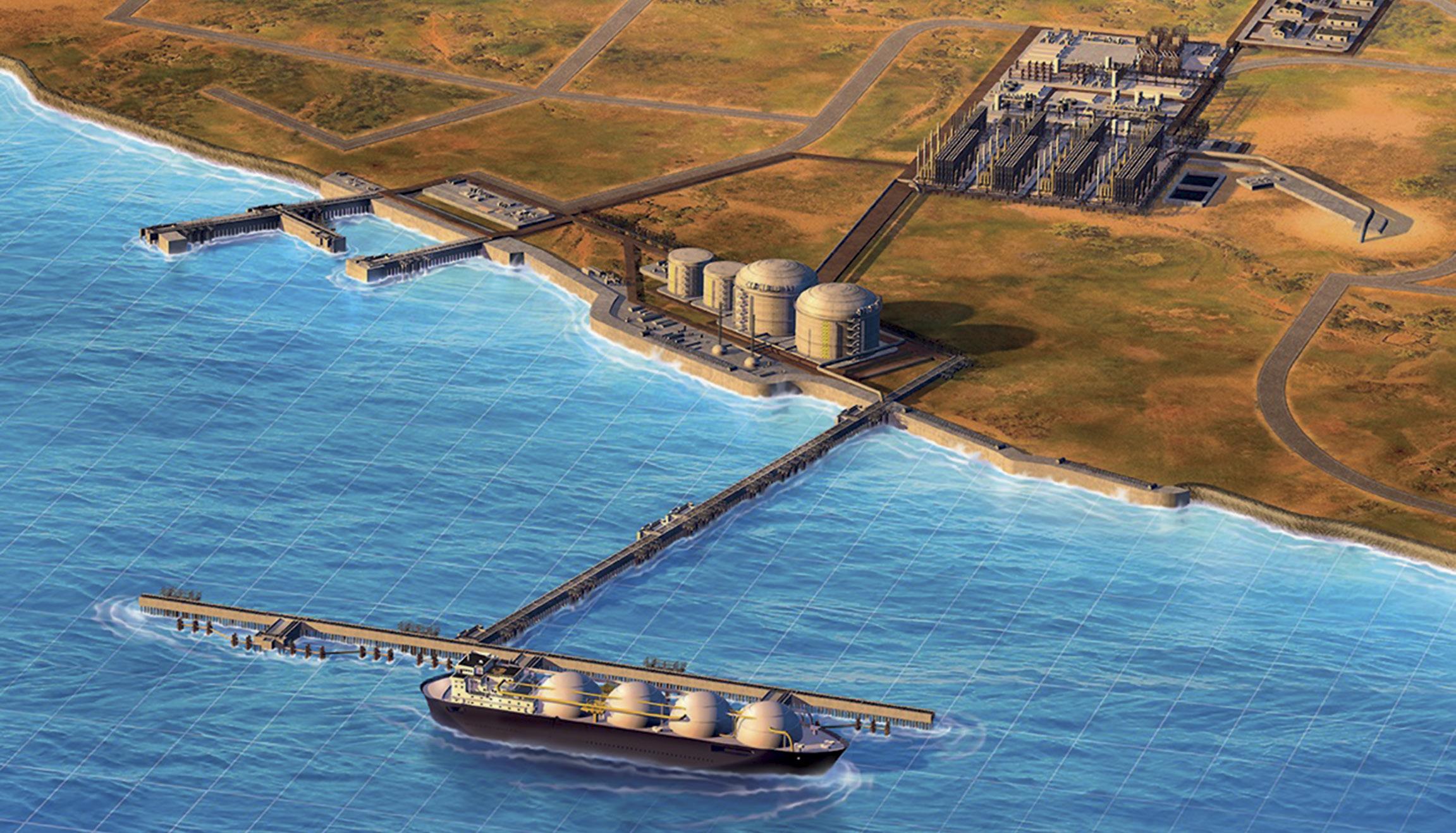
The country’s second project, Rovuma LNG, introduces a whole new ball game – and project opportunity of its own. According to Eardley-Taylor,
this project is expected to reach final investment decision by the end of 2024, possibly early 2025. “The entire project has been redesigned to deliver even bigger output. So instead of two big trains being built, the project will now see 12 smaller trains developed. We are talking electric vehicles, blue hydrogen and space-age technology for a project that is being future-proofed.”
A study by Standard Bank on the Rovuma project indicates that once developed, the 15.2 million tonnes per annum project, expected to attract between US$27 billion and US$32 billion in investment, will monetize 2.6 billion cubic feet per day of Mozambique’s offshore LNG resources, and add US$15 billion to US$18 billion per annum to Mozambique’s gross domestic product.
These two projects alone will catapult Mozambique into a substantial gas producer domestically, regionally and internationally. But this is just the beginning.
“We expect to see in Mozambique at least five onshore projects reach FID between September this year
and 2029,” Eardley-Taylor said. The opportunity for project cargo operators is simply enormous, he added. Over and above what is happening, there is also Tanzania, whose gas is some 220 kilometers away. “Here are plans for a 15 million tons per annum modular plant with liquefaction. The FID target for this project is 2025. It brings massive financial and economic benefits to Tanzania.”
Philipp Buechler, managing director, Mozambique, Air and Sea at DSV, said that despite the difficulties experienced in Mozambique around the LNG gas projects over the past two years, project cargo volumes are already on the up.
“The project cargo potential is massive,” he said. “Not only around the two planned LNG projects but just the overall infrastructure development that is taking place in the country.”
Buechler said over the past two years, several renewable energy projects had taken off, and volumes had spiked for the solar plants. “There is talk of a wind project in the pipeline, while the extension
86 Breakbulk Magazine Issue 5 2023 breakbulk.com Middle East & Africa
The joint venture developing the Area 4 offshore Mozambique awarded the EPC contract for Phase I of the Rovuma LNG onshore liquefied natural gas facilities to JFT in 2019, a consortium of JGC, Fluor and TechnipFMC. Credit: Galp.
and upgrade of the Cahora Bassa power station is also on the cards.”
In the Pemba area investors are also seeing increased potential in graphite mining and projects in this sector are on the up – so much so that some analysts predict that the country could also become one of the biggest graphite producers in the world.
Moving forward, Eardley-Taylor said, serious infrastructure projects would have to be part of the discussion to turn it all into a reality. “A bridge connecting Mozambique and Tanzania, for example, will be necessary to develop the gas potential of these two countries.”
Not to mention undertaking the necessary large-scale and ongoing investment in road infrastructure and ports if there is any chance of meeting project timelines.
Tackling the Challenges Head-On
Buechler said moving cargo in Mozambique is not impossible, but like most of Africa, it is not an easy operating environment. In Palma and Pemba, trucks are again moving, all with military convoys. “Activity is slowly but surely returning to the area. We are seeing more and more cargo movements, workers are back on the various sites, and quite a bit of construction is taking place.”
Operations in this part of the country are still highly dependent on security. Guards are still required, Buechler said, although the area has been declared safe to travel. “We keep in close contact with security companies that give us daily updates on the region. For the most part, safety and security have been restored, but there is still risk.”
He added that looking at the project development in the pipeline, project operators have some significant hurdles to jump if they are to deliver cargo to site in time. “Road infrastructure in Mozambique is a big concern. Not only is it underdeveloped, but bridges have not been maintained, and moving any heavy cargo requires either bypasses
or the propping of every bridge. This takes time, and it comes at a cost. Planning will be crucial in light of the number of projects we see taking off.”
Another concern is the availability of assets on the ground. “Admittedly, this is a good problem to have,” Buechler said, indicating that as the projects start to take off, concerns are growing that there will not be enough assets and equipment to cater to it all.
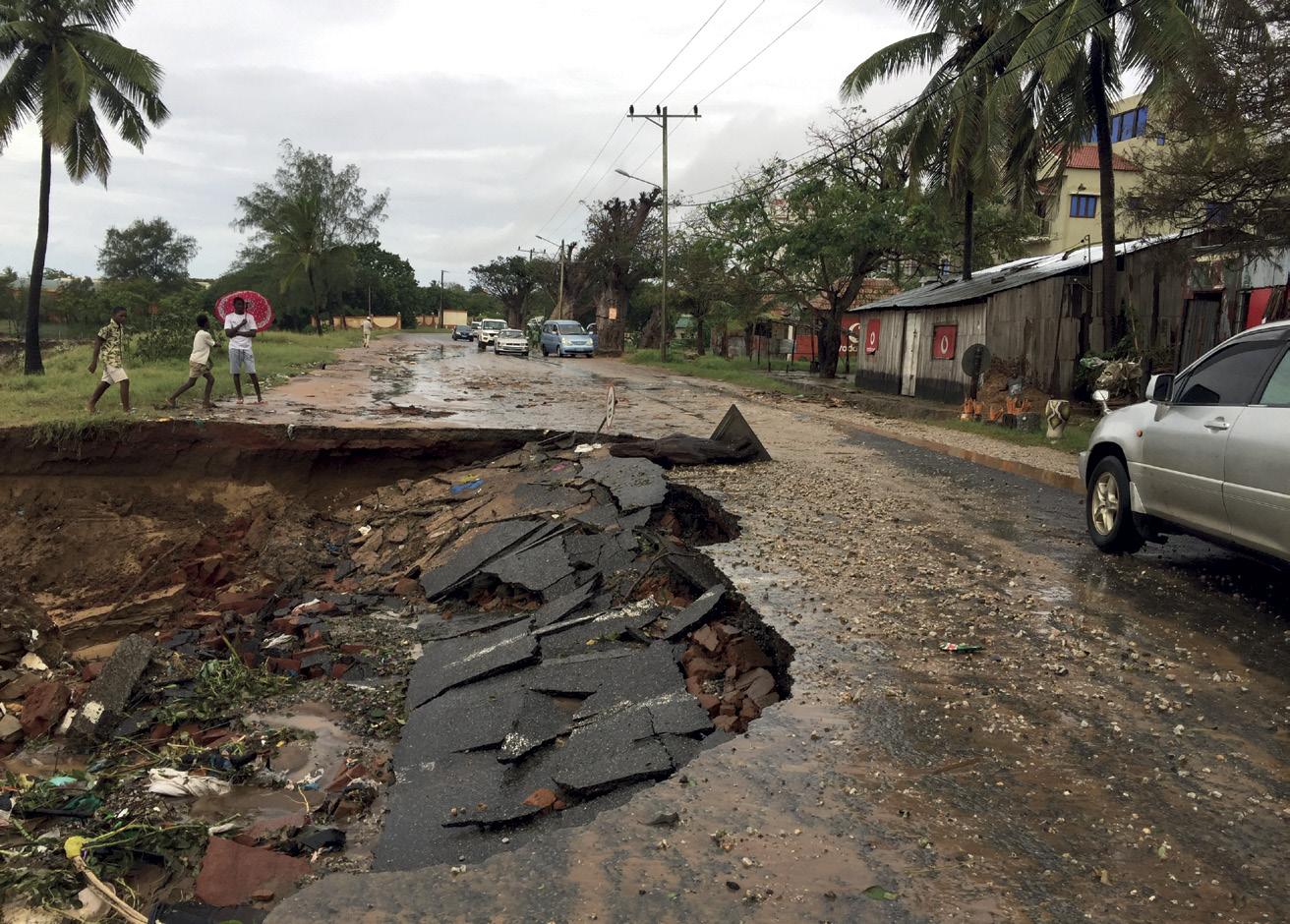
He said it is critical for logistics companies to involve themselves in discussions with stakeholders before any of these projects develop further. “We will see every form of transport known to man used in Mozambique in the next few years to get all the cargo where it needs to be. There will be beach landings for cargo where there are no ports and we are going to have to find ways to move heavy equipment up and down treacherous landscapes, but at this stage, it is essential that a total needs assessment is done to coordinate all of this, or we are going to find ourselves in trouble delivering it all.”
He said the long-term potential for the logistics sector must be considered despite all the challenges. “At this stage, I think most operators in the country are reassigning their abilities to ensure they have the necessary skill and experience
to service the project sector that will be booming within the next two years.”
Moving project cargo in Mozambique requires a local network, unlike in many other African countries. “You need to have a footprint in all the regions you are operational in,” Buechler advised. “It is impossible to work in the North from the country’s South. Nacala, for example, one of the main ports to service the gas projects, is an extremely complex port to operate in. Local presence is critical.”
In this part of the world, a lack of knowledge and experience equates to downtime, which is expensive.
However, “in the face of real adversity, Mozambique is probably one of the world’s most exciting project cargo spaces,” Buechler concluded.
And according to Africa House’s Van Tonder, it is difficult not to get excited when visiting Mozambique. “The potential is tangible. After everything that has happened the past two years, it is clear that people are gearing to go and that abandoning projects was never a consideration. Companies willing to take on the challenge are going to find benefit in the Mozambican project sector for years to come.”
87 Breakbulk Magazine Issue 5 2023 breakbulk.com
Liesl Venter is a transportation journalist based in South Africa.
Middle East & Africa
Road infrastructure in Mozambique is a big concern. Credit: Shutterstock
By Jeremy Bowden
Qatar has embarked on the world’s largest liquefied natural gas, or LNG, export capacity expansion, with demand for the fuel expected to keep rising for the next twenty years at least, despite growing evidence of man-made global warming. The extensive infrastructure required will mostly be shipped into the region, providing steady business for project cargo movers in the Middle East and beyond.
The State of Qatar is a small country that sits in the Middle East Gulf astride the world’s biggest gas field, known as North Field in Qatar, and South Pars in Iran, into whose waters it stretches. The field is about ten times the size of the next biggest conventional gas fields (located in northern Russia), and
GAS TAKES GOLD IN QATAR
LNG Expansion to Provide Steady Flow of Work
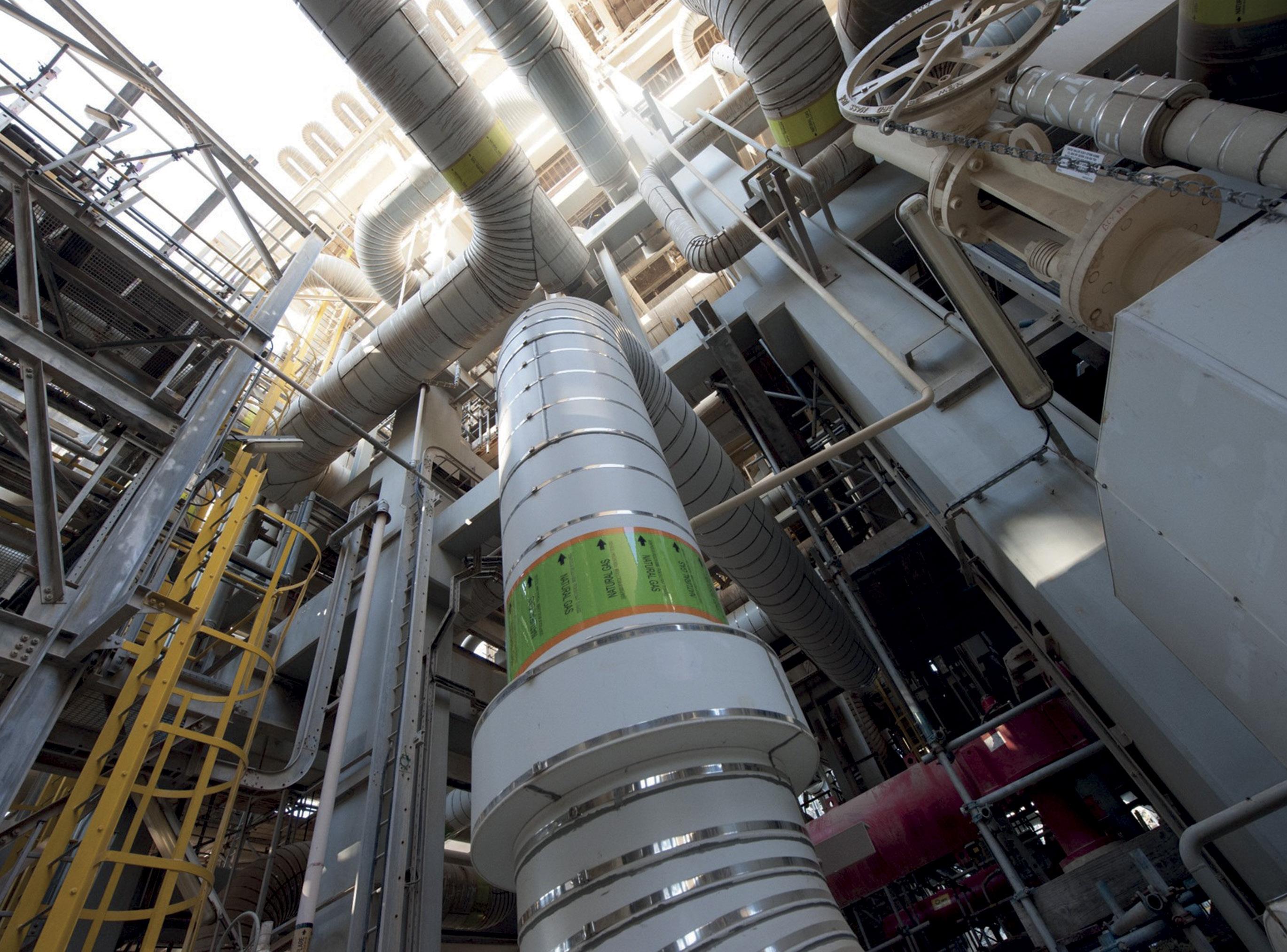
exports of LNG and associated liquids from North Field have already made Qataris among the richest people in the world on a per capita basis.
Up to 2012, Qatar built 77 million tons per year (mt/yr) of export capacity - among the largest in the world, alongside Australia and more recently the U.S. After a moratorium in 2005 on new capacity for several years, imposed to evaluate the impact of growing output on the field structure, state-owned Qatar Energy announced the North Field East, or NFE, expansion project in April 2017. When completed, the NFE Project will increase the State of Qatar’s LNG production capacity by 33mt/yr or 43 percent to 110mt/ yr. First LNG production from the US$28.75bn NFE expansion, which involves four giant new LNG trains, is expected to start in 2025.
The second phase of the LNG expansion, known as the North Field South, or NFS Project, will further increase Qatar’s LNG production capacity from 110mt/yr to 126mt/yr by 2027 – 63 percent above current levels. This is expected to make Qatar (with a population of just 2.7mn, of which only 15 percent are Arab nationals), the world’s biggest LNG exporter once again, depending on developments in the U.S.
Region: Middle East
Problem: A moratorium on new gas-related capacity in Qatar had put the brakes on the Middle East state’s heavy-lift ambitions
Solution: With the ban lifted, Qatar is calling for logistics support for a massive twophase LNG expansion project
88 Breakbulk Magazine Issue 5 2023 breakbulk.com
Middle East
Credit: Qatar Gas
The huge two-phase project is the world’s largest ever LNG expansion and is being done in a region that imports most of its equipment needs over long distances by sea. This means there are massive opportunities for breakbulk providers to move the heavy equipment and infrastructure into place from suppliers around the world. Only a relatively small proportion originates in Qatar, and most comes from outside the Middle East, from east Asia, Europe and the Americas.
“Most of the general cargo originates from various global locations, including China, Japan, South Korea, Indonesia, the UK, Brazil and Argentina, arriving via vessels by sea. Also, some timecritical spare parts arrive by air,” Suren Motha, business manager for shipping services at GAC Qatar, told Breakbulk. “These international origins underscore the breadth of the logistical endeavor, involving coordination with multiple stakeholders, suppliers, and partners from around the world,” she said, making seamless coordination with the port, vessel and receivers, essential.
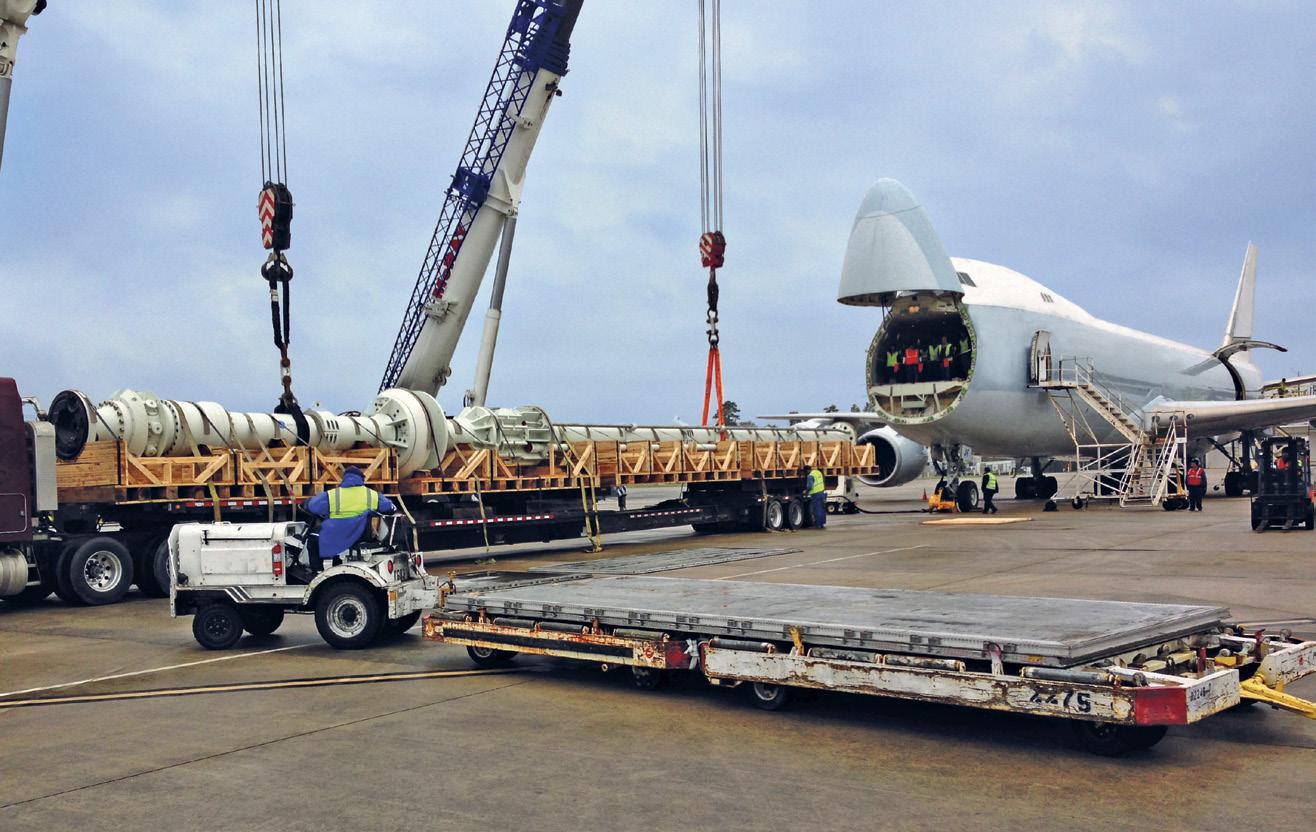
Oil Company and EPC Partners
State-owned Qatar Gas and Qatar Energy, which are running the show, have a range of major western oil company partners. In June 2022, TotalEnergies agreed to a US$2 billion joint venture deal to take part in the project - encouraged by its need to find replacements for substantial lost LNG assets in Russia. Qatar Energy also formed JVs last year with Eni, ExxonMobil, Shell and ConocoPhillips. Qatar Energy holds 75 percent interest in each JV, while TotalEnergies, ExxonMobil, and Shell own 25 percent interest in their respective JVs, and Eni and ConocoPhillips hold 12.5 percent interest each.
These companies, along with the Qatari state giants, are involved in lining up contractors for the projects, including breakbulk and heavy-lift logistics providers. Also key are the
main engineering procurement and construction, or EPC, contractors.
The first major EPC contract, for the NFE project, was awarded in February 2021 by Qatar Petroleum to a ChiyodaTechnip joint venture, and covered the bulk of works associated with the construction of the project’s four LNG mega-trains and associated facilities. Qatar Petroleum also awarded a second major NFE project EPC to Samsung C&T Corporation for the expansion of the LNG storage and loading facilities located within Ras Laffan Industrial City in Qatar. This second contract, valued at more than US$2 billion, was awarded on a lump sum basis. Both contracts represent the culmination of front-end engineering and design work that began in early 2018.
On the liquids side (mostly natural gas liquids and condensate produced alongside gas from the North Field), Qatar Petroleum awarded Spain’s Técnicas Reunidas the EPC contract for the North Field LNG expansion in late 2021, valued at more than US$500m. This makes Técnicas
Reunidas responsible for the expansion of existing liquid products storage and loading facilities, including processed propane and butane. The contract also includes expansion of import facilities for mono-ethylene glycol within Ras Laffan Industrial City and other ancillary facilities and pipelines associated with the expansion project.
Then in mid-May this year, Qatar Energy awarded the main US$10 billion EPC contract for work on the phase 2 NFS expansion project to a grouping of Technip Energies and Middle East-based Consolidated Contractors Company. This deal covers work on the NFS project’s two 8mt/yr LNG mega trains, “with associated facilities for gas treatment, natural gas liquids recovery, as well as helium extraction and refining within Ras Laffan Industrial City,” according to Qatar Energy.
The U.S. Trade Administration in Qatar said online that Qatar Energy’s focus on major contracts for the North Field Expansion, “together with the upcoming development of the petrochemical complex and ethane cracker facility, are likely to be key drivers of business activities in the region’s energy sector.”
550-plus Kilometers of Pipes
One major area of work associated with the projects is gas pipeline transportation and installation. GAC Qatar’s Motha said that those involved were “actively importing pipes and project cargo” for the expansion projects. She said one major gas company was anticipating the need for 4-5 vessels per month over the next year to fulfil the requirement of over 550 kilometers of underwater pipe laying.
89 Breakbulk Magazine Issue 5 2023 breakbulk.com Middle East
Some time-critical spare parts for Qatar’s gas fields will arrive by air.
Credit: GAC
“These projects entail substantial breakbulk and heavy-lift demands to ensure the successful transportation and installation of crucial components… GAC plays a pivotal role as the vessel agents, offering comprehensive services such as customs clearance, land transportation, open yard storage, management, and loadout onto barges. Our involvement extends across various aspects of the logistical process, ensuring a seamless flow of operations for the Qatari LNG projects.”
GAC said the heaviest cargo it handled associated with the LNG expansion projects weighed up to 230 tons. “Additionally, the range of pipe sizes, spanning from 6 to 28 and 32 feet, further adds to the challenge of the logistical process. These unique dimensions and weights indeed pose challenges for breakbulk providers, necessitating specialized equipment, careful planning, execution, and expertise in handling unconventional movements.”
The LNG project expansions and sheer size of the Qatari LNG and energy sector generally has supported growth of the logistics market in
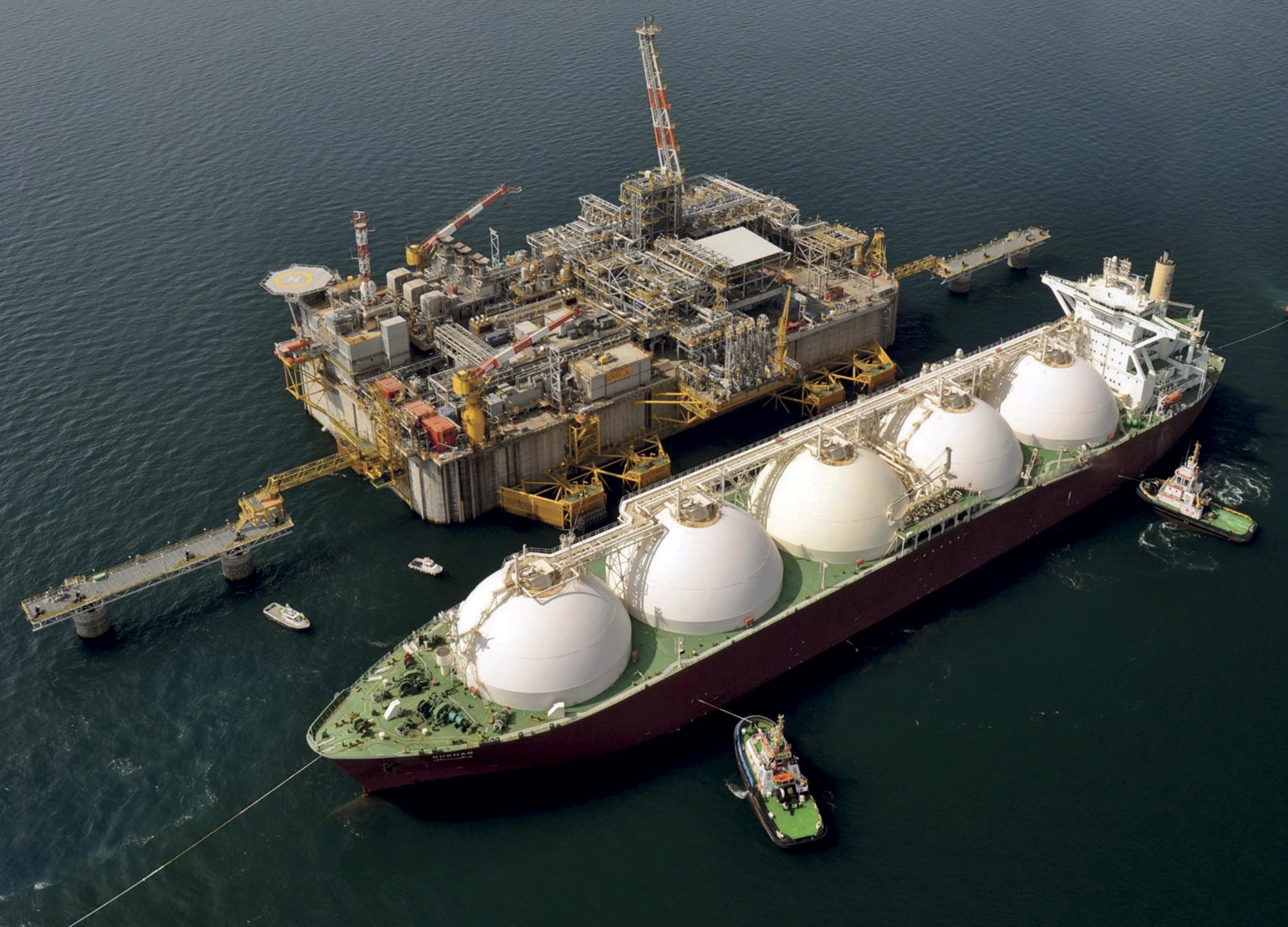
Qatar. Only last December, GAC Qatar opened a new 27,000 m2 multi-user contract logistics facility and office building in Ras Bufontas Free Zone, designed to help boost customer options (built in partnership with Qatar Free Zones Authority (QFZA)).
Growth of 3PLs
Looking ahead, Mordor Intelligence said the LNG expansion plans, alongside growth in the eCommerce sector, were expected to expand the thirdparty logistics, or 3PL, market further over the next five years. “Qatar tops all GCC countries for domestic logistics and is the 7th most competitive of the world’s leading emerging markets, a performance driven by its strong business conditions and digital readiness,” Mordor said.
It added that the 3PL market in Qatar was “fairly fragmented with very few local and many international players active. Some of the major players include BDP International Qatar WLL, Aramex, Falcon Express (FedEx), Links Shipping, and Cargo World.”
Qatar is attractive to logistics providers due to its strategic location,
world-class infrastructure, government backing and experienced workforce, according to Mordor. “Therefore, many businesses are partnering with transport and logistics companies in Qatar.” One example is between GWC of Qatar and Ponticelli Frères Group, where GWC will handle the freight forwarding, customs brokerage, and transport for Ponticelli in Qatar for three years. The deal should smooth and speed deliveries within the State of Qatar for Ponticelli, which is focused on the oil and gas, energy, chemical, pharmaceutical, and steelworks sectors.
Altogether, the expansion projects should provide a steady flow of opportunities for 3PLs, shippers and others involved in the global and regional breakbulk and heavy-lift sector for several years to come. But once complete at the end of 2027, activity is likely to quickly subside, with little further development of the field expected, as the wealthy country attempts to focus on diversifying away from hydrocarbons.
90 Breakbulk Magazine Issue 5 2023 breakbulk.com Middle East
Jeremy Bowden is a freelance journalist, researcher and analyst, specializing in energy matters with a focus on the energy transition.
Up to five vessels per month over the next year will be needed to fulfill the requirement of over 550 kilometers of underwater pipe laying for the expansions.
Credit: Qatar Gas
NAVIGATING THE PROJECT LOGISTICS LANDSCAPE
GEODIS’ Luke Mace Talks Talent and Sustainability
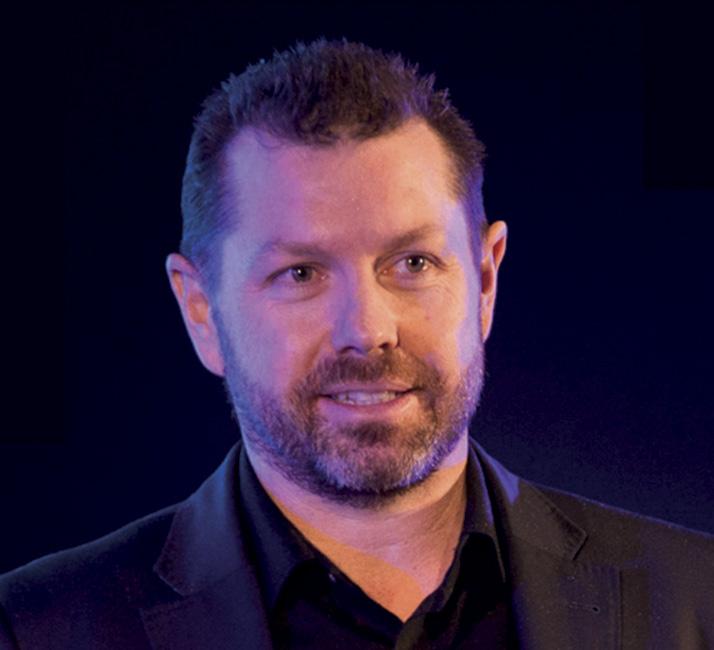
In a rapidly evolving world, where global project supply chains are constantly shifting and adapting, the role of project cargo forwarders has become more vital than ever. In conversation with Breakbulk, Luke Mace, a seasoned professional in the industry and the global head of project logistics at GEODIS, shared his insights on the challenges, opportunities, and strategies that are shaping the project logistics landscape today.
Mace began by emphasizing a fundamental shift in perspective within the industry: “The focus for us is not so much on ship availability anymore, it is on people. People have become a key challenge.” He highlighted the pandemic-induced paradox of logistics companies outperforming numerous industries amid increased demand yet struggling due to difficulties in remote work and paperwork processing. As he put it, “You needed more staff for the same amount of work.”
The pandemic also exacerbated another longstanding concern— talent retention. Mace explained: “People were just poaching, so you were losing good people between companies and industries.” He acknowledged that attracting fresh talent to the logistics sector is a global issue and emphasized the need to understand the motivations of the new generation. “The motivations are very different today,” he said, noting that traditional incentives like regular salary and international experience might not be enough.
Reflecting on his own journey, Mace said “old school forwarding and regular salary” motivated him. However, the dynamics have changed, and today’s workforce seeks more than financial stability. “They have much more power in saying what they’ll do as a career versus what I had when I grew up.”
To address the talent shortage and nurture internal growth, Mace is involved in an initiative at GEODIS to train existing employees to become project professionals and leverage their expertise to elevate the company’s capacities. He emphasized the importance of patience and hard work in project logistics, explaining that the exciting aspects of the job come after putting in effort.
Mace was candid about the perception of the logistics industry compared with other sectors. “Is it exciting compared to other sectors? No. Should it be? Absolutely,” he said.
Sustainability Action Needed
Discussing sustainability, Mace noted an increasing focus on environmental concerns in the supply chain industry, particularly in the project logistics sector. Yet, he said, while discussions on sustainability have surged, concrete actions have yet to keep pace. “As long as there’s no consistency on reporting, then you’re going to have room for creativity,” he said, adding that reporting accurate emissions data is a complex process that requires standardization within the industry. He pointed out that a lack of a unified approach leads to inconsistencies in measurement and reporting.
Mace said that to achieve sustainability goals, companies
By Carly Fields
need to find innovative ways to optimize cargo utilization. “There are smarter ways you can also go about this via cargo utilization,” he said, advocating for more efficient loading practices to reduce wastage.
Addressing the challenge of emissions reporting for breakbulk cargo, Mace highlighted the need for dialogue and collaboration. “Talk to the carriers to understand what the problem is,” he said, acknowledging that achieving consensus is crucial, even if perfection is unattainable. Amid the evolving landscape, Mace underscored a diversification strategy adopted by GEODIS. He said that the company’s focus has shifted to capital projects, which have experienced a recent rebound. He highlighted the benefits of diversification, allowing the company to weather market fluctuations more effectively. This approach has ensured stability by focusing on dayto-day business and industries such as resupply, oil and gas, and power, which require regular shipping volumes.
Meanwhile, Mace remained confident in the human element of project logistics, emphasizing that automation cannot replace the human touch. “You just can’t completely automate what we do,” he said, adding that robots cannot entirely replace the execution and problem-solving skills of humans in the project cargo field. “Our business is built on human interaction – for example the ability to deal with challenges real time out in the field, often with complex operations in environments lacking quality infrastructure. We will continue to invest in practical automation where we can add value, without jeopardizing the quality of operations and the safety of our people.”
Carly Fields has reported on the shipping industry for the past 23 years, covering bunkers and broking and much in between.
91 Breakbulk Magazine Issue 5 2023 breakbulk.com
Europe
Luke Mace
WHEN BASIC LOGISTICS DISCOVERED BRILLIANCE
The Da Vinci Crane Case Study
It all started when I was invited to a kick-off meeting with an Italian vessel fabrication company based in Treviso, a town north of Venice. They were supplying a reactor column for a project in the Middle East on which I was the logistics manager for a major engineering, procurement and construction company.
The weight would be 450 tonnes, dimensions were 37 meters long and a diameter of 7 meters. The delivery terms were FAS Venice. In discussing delivery FAS, I discovered they intended to place the column into a river next to their plant north of Venice, then use two small tugs to push and tow the reactor down the river and into Venice Lagoon to cross to the port. So far, so good.
Devil in the Details
However, more detailed conversation took place to get clarity on their methodology, and this created a series of significant concerns and potential problems. The tow tug would secure a chain to the main nozzle on the head of the column. When I asked if they had calculated potential loads and stress, the answer was no.
We then looked at the general arrangement (GA) drawing. I pointed out that the column had a 12-meter-long skirt so it would fill with water and the head of the column was bulbous so would be full of air, and therefore it could not float level—they stated it would.
I asked had they done this before with something this big and heavy? And
had they obtained authority/permits to use the river and to cross the lagoon to Porto Maghera? Their response was, “This will not be a problem.”
In response to questions about details of the river, its depth, breadth and the route across the lagoon, and availability of a map showing the whole route, the answer no.
When I asked how they would lift the reactor and place it in the river, they said: “We have a dock and will use our special crane.” When I asked for details, they could not provide them.
Time to Meet Face-to-Face
After the meeting finished, I advised the team of the problems I had identified related to the reactor delivery FAS Venice. It was agreed that I would fly to Venice to conduct a logistics survey of the river, transit across the lagoon and meet the port authorities to discuss this. Then I would visit the fabricator’s facility and review their plan in more detail.
The port authority advised they would need details of how the tow would take place, including the route through the lagoon to Porto Maghera. As I anticipated, permits would be required. They would also need the assumptions and calculations from the heavy-lift lift-on, lift-off ship owner related to the lift from the water. They provided me with a simple map of the river Sile which flowed through Treviso, then into the Adriatic.
At the weekend prior to meeting at the fabricator’s, I began the logistics
By Breakbulk Veteran Peter Jessup
survey to be more informed on the feasibility of their transportation plan. The fabricator’s facility was situated alongside the river, which was not a major river; its primary use was for pleasure boating. The facility and river were visible from the road, there was a small inlet creek between the fabricator and a vineyard. There was no dock, quayside, or crane.
At one point as the river meandered south, a pedestrian pontoon bridge made of boats strapped together with wood planks on top crossed the river. South of this, the map identified an entry into the lagoon at Portegrandi that had lock gates. I checked them and they were only 6.6 meters wide, not enough space for the 7-meter diameter column to pass through. My search to find access to the lagoon continued.
Following the river, I passed through the town of Jesolo, a major summer holiday location with beaches on the Adriatic. There was a swing bridge over the river which bisected the town. Due to the diameter of the column, it would have to be opened to allow transit on the river through Jesolo—this would need a permit.
I found a tributary branching off the river that entered the lagoon. The ability to use the tributary was essential, otherwise the reactor would have to be towed from the river mouth into the Adriatic, down the coast and then into the lagoon. Unfortunately, the tugs identified for the river tow would be inadequate for sea transportation and the alternative of
92 Breakbulk Magazine Issue 5 2023 breakbulk.com Europe
using ocean tugs up-river or to transfer to these downstream was unlikely. Details of the tributary depth and breadth were not available. And to further complicate the logistics, tides from the Adriatic Sea affected both the tributary and the lagoon. Towing the column through the tributary required a high tide to ensure it did not ground on the riverbed. This information was critical.
A Simply Extraordinary Invention
I then met with the fabricator at his facility and asked him to show me the dock and crane he had mentioned during our original meeting. He took me to the inlet creek I had seen and said the dock and crane would be constructed there in time for the shipment. I pointed out that this would require a civil construction activity to ensure the dock could cope with the stress loads relating to the combined weight of the crane and column.
I was curious about this crane. He led me to a room, opened the door and presented the crane. I saw a scale model that looked like something from Leonardo da Vinci’s sketch book! It would be a vertical cylindrical column with a cross beam on top. At each end, an orb. They would pump water from the river up into the larger orb to lift
the column and then transfer the water into the smaller orb to lower the column into the creek. Always the voice of reason, I pointed out we would require the crane proof load test results.
My report was passed to our engineers who then visited the fabricator to calculate the load on the nozzle and how the column would float. Their findings were passed to our marine surveyors along with a GA drawing. The surveyors said the calculations were wrong and the column would not float level. If it did not float level, or near to level, it could be damaged and get stuck.
To Every Problem, a Solution
Solutions to all of these risks and potential problems were as follows: Place a member of our team at the fabricator to liaise and validate progress on the column and crane fabrication, construction of the dock and quayside, witness testing of the proof load tests. This person would also ensure all permits were obtained.
Engineering checked the loads on the nozzle being used as the tow connection and confirmed these were acceptable. They agreed with the marine surveyor’s recommendation to have the fabricator tack weld a plate on the base of the skirt to help it float semi-level.
Charter the heavy-lift ship for an extra day to allow for lifting and washing the column quayside. Details of the column were provided to the owner and they undertook calculations on the lift from the sea onto the quayside and subsequent reloading onto the ship. These were reviewed by the port authorities and marine surveyor and were deemed acceptable.
The ‘Da Vinci Crane’ worked perfectly and the delivery went smoothly as you can see from the photo. This simple invention was used for many years by the fabricator. The two lifts by the heavy-lift ship in the port also went smoothly.
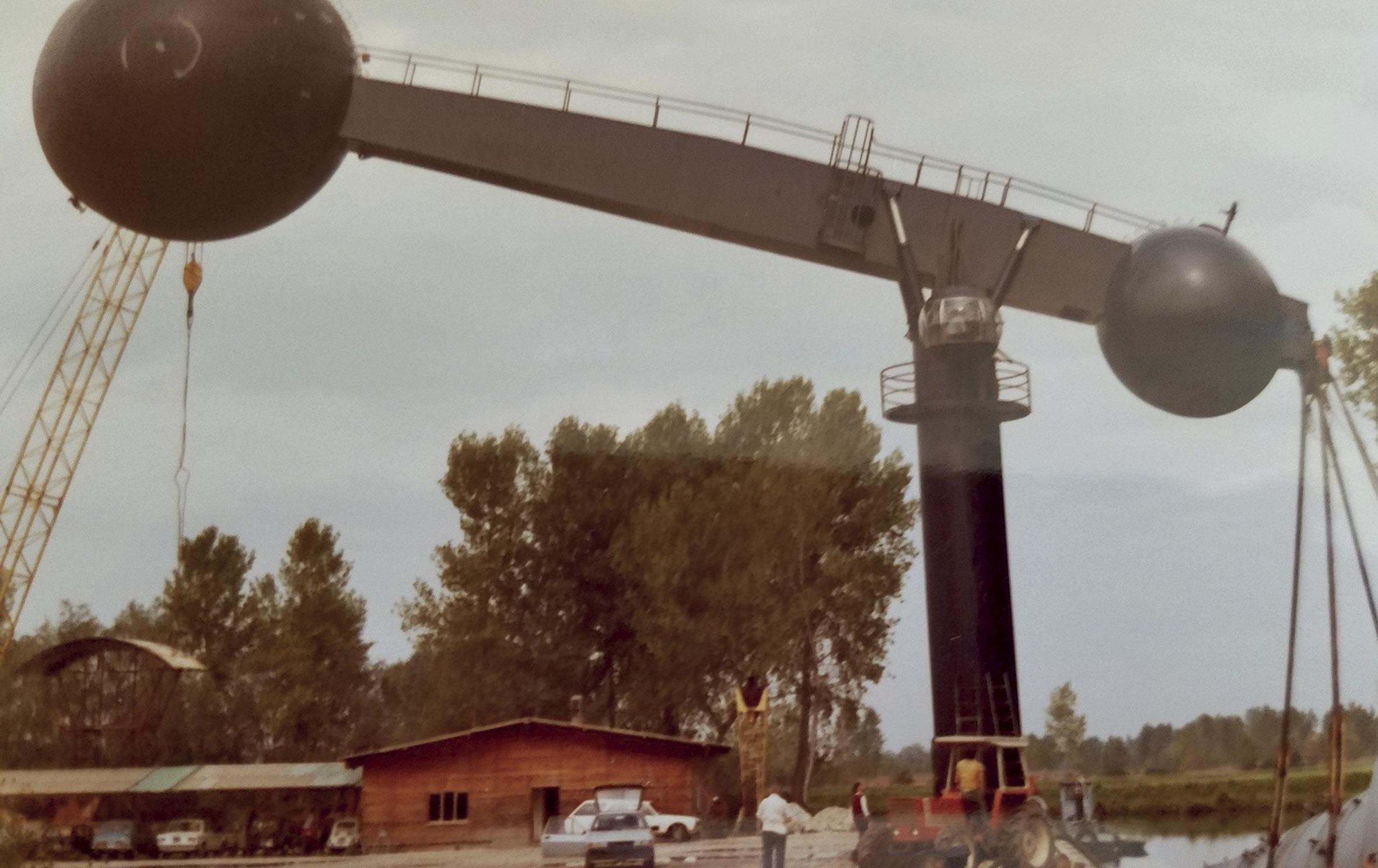
Whenever a heavy-lift cargo of abnormal size is going to be procured by your client, the EPC’s logistics team should be involved in the bid evaluation to validate the feasibility of the supplier’s proposed method of delivery. And of course, there’s no substitute for seeing it all for yourself.
Peter Jessup started his career as a freight forwarder and logistics specialist progressing into procurement, project procurement and project management executing complex projects. He has held vice president global procurement/SCM roles in major EPC companies. He is a consultancy specialist in the field of procurement, logistics and project execution, based on his 35 years of experience. You can reach Peter by email at peter@proactivechanges.com
93 Breakbulk Magazine Issue 5 2023 breakbulk.com
Europe
“A MULTITUDE OF OPPORTUNITIES AHEAD”
Daan Koornneef, CEO Of Jumbo Maritime, on the Future for Jumbo and the Heavy-Lift Sector
 By John Bensalhia
By John Bensalhia
94 Breakbulk Magazine Issue 5 2023 breakbulk.com
Profile
Daan Koornneef’s 30-plus years’ experience in the maritime industry is standing him in good stead as the current CEO of Jumbo Maritime. His CV lists executive level posts with the likes of Wijsmuller (to become Svitzer), Smit Lamnalco, IQIP and Resolve Marine.

On the announcement of his new appointment as Jumbo Maritime’s CEO back in December 2022, Koornneef commented: “Jumbo is a market leader through its pioneering technology and skilled and experienced teams and for being a reliable partner to all stakeholders. I am delighted and proud to join the Jumbo team and confident that we can take the company to a great future together!”
Koornneef’s maritime life began in 1986 when he started as a midshipman in the Netherlands Navy. After sailing as a deck officer on various types of navy vessels, Koornneef then became a diving and explosive ordinance disposal officer.
“Since then, I have always liked the combination of working with vessels in projects,” Koornneef said. “In 1998, I joined Wijsmuller – which later became Svitzer after its takeover by APM – a towage and salvage company as general manager. And later, I became managing director of the salvage division. From 2005, I headed their oil and gas terminal operations division from Dubai.”
In 2008, Koornneef became CEO of Lamnalco, a company that specializes in worldwide oil & gas terminal and single point mooring operations, as well as services to floating production storage and offloaders, floating liquid natural gas units and floating storage regasification units. Later on, Lamnalco added Smit Terminals and PB Towage to the company.
The last position that Koornneef held before joining Jumbo was with an American salvage and special marine services company. “Here, we did some spectacular lifts and salvage projects. Very important to me, we also executed large cleanup projects as well as prevention of large quantities of waste getting in the oceans and beaches.”
He has also held various advisory and non-executive directorships – in particular, in the renewables service and manufacturing industry. He gives the example of IQIP, a specialist in offshore foundation technology.
Offering A Solution
When asked what attracted him to the role of Jumbo CEO, Koornneef explained that he likes sophisticated work vessels, with Jumbo in the top segment of heavy-lift, offering up to 3,000-tonne crane capacity, along with dynamic positioning 2 capabilities.
“Jumbo doesn’t sell transport – we offer a solution. We have experienced captains, project managers, crews and teams. We are not just a shipping company that sails vessels – we are much more than that. Jumbo is active in heavy-lift shipping, but also in transport of extraordinary cargoes and complex offshore installation projects. This makes for a nice combination of two normally different disciplines.”
In fact, Koornneef has known Jumbo for many years: “I was actually with my boys on board of a new build vessel which had just been outfitted with Huisman cranes about 20 years ago and I have always kept an eye on the company.”
AT BREAKBULK AMERICAS…
Breakbulk Fleet Update
Wednesday, Sept. 27 11:00am - 11:45am
With Koornneef quickly settled into the role of CEO, he said that he is “unchanged in respect of seeing Jumbo as a fantastic company. Great vessels and an even better team.
“When I joined Jumbo, I had just left a very challenging period and the shipping market was at an all-time high. At the moment, the markets that we operate in are normalizing. We see cost control related downward trends in the renewables energy sector and threats of oversupply in shipping. Overall, I think both markets we operate in are sustainable.”
With the Jumbo-SAL-Alliance (JSA) and affiliate/partner companies such as Intermarine, Koornneef added that Jumbo can offer a wider and even more reliable service to its clients. “The JSA has also become a sizeable player that can offer competitive transport solutions for all cargoes. All in all, we are fully set to build for the future.”
In June 2023, it was announced that Koornneef had been appointed to the Board of the Royal Association of Netherlands Shipowners, Koninklijke Vereniging van Nederlandse Reders, or KVNR.
Koornneef’s role as board member will include tasks such as helping to shape policies at the association, bringing together Dutch shipowners to present a united front and promoting their interests at a national, European and also global level. The mission of the KVNR is to make sure that Dutch shipowners can operate on a global basis while safely navigating with clean ships run by skilled teams.
95 Breakbulk Magazine Issue 5 2023 breakbulk.com
Profile
Journeying Ahead
Turning to trends in the heavylift shipping industry, Koornneef explained that most companies are looking to build replacement tonnage for ageing vessels, but not so much to grow their fleet overall. The only growth wave expected is in Chinese-built deck carriers.
“Rates are normalizing but are still good and they will remain good if supply and demand is carefully managed by all players,” he added. “We see more clients – in particular in the renewables sector – that are looking for project-based contracts with multiple journeys, vessels and type of cargoes. This way, more sustainable cost projections and reliability are offered, and the attention is more focused on the long-term partnership, compared to single voyage contracts.”
However, Koornneef acknowledged that there are challenges that need to be faced in the heavy-lift shipping industry – the biggest one of those being sustainability.
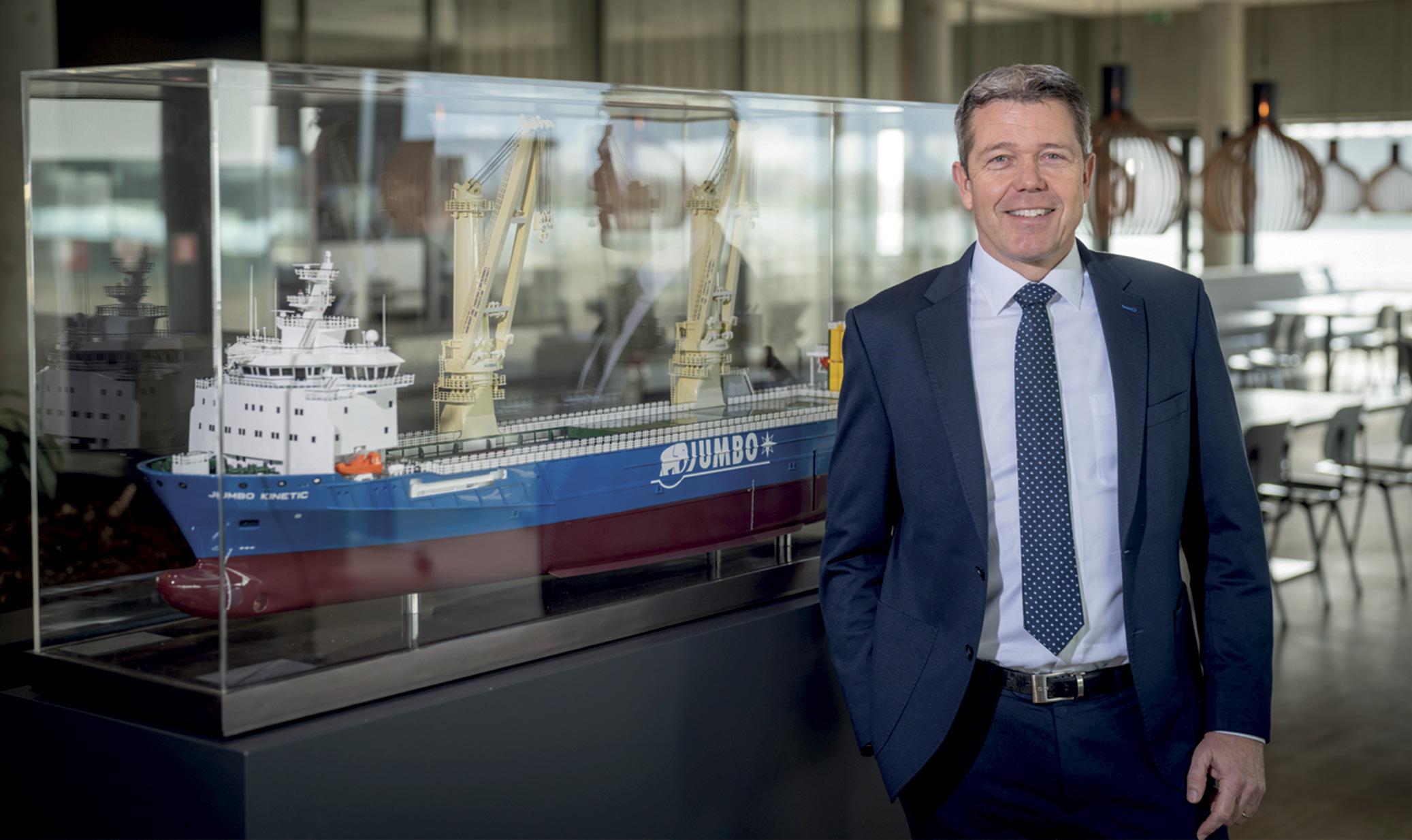
“How do we deal with legislation and targets set by politicians that have never seen a vessel from nearby or understand how the market works?” asked Koornneef rhetorically. “How do we invest in newbuilds when we
have to use alternative fuels and technologies that are not even available right now? Which fuel, which engines do you use in your newbuild vessel that is going to last for 30 years?
“The segment is not comparable to container lines that sail fixed routes, and go to more developed ports with their own alternative fuel bunker stations. We can’t write off a vessel or propulsion investment within 10 years. Our cargoes are not containers where you can charge a uniform CO2 tax surplus per unit, it is much more complicated.”
Continuing Investment and Development
Koornneef added that since there are no viable solutions now or even possibly within 10 years, the outcome will be a higher level of tax, which in turn, will drive up costs and reduce profit margins.
“Next to that, these same container lines have a large number of newbuilds on order, interest is high, and so is inflation – which all adds up to more of a challenge to keep costs manageable. Contrary to what is needed, efficiencyrelated technological improvements will hence be less in the sector.”
With the challenges in mind, Koornneef cited the JSA initiative
to launch the Orca newbuild as “a bold initiative against the odds.”
The four-strong Orca newbuilding series officially marked its first steel cutting on February 22, 2023. With the first newbuild project (entitled W2231) under way, the due date for the first vessel is July 2024.
“We believe in the initiative, and we will continue to develop,” Koornneef said.
Continuing to secure its rightful place in the heavy-lift sector, Jumbo Maritime’s future looks healthy. “We will continue to invest in people, knowledge and specialized, modernized vessels,” Koornneef said. “We expect that due to geopolitical reasons, we will see not only an energy transition but also a relocation of industrial activities, and new areas to harvest raw and processed materials. In other words, a continued need for heavy-lift transport and installation services. We will continue to be there for our clients.
“Jumbo has been a pioneer in heavy-lift transport and is still a market leader; I am proud to contribute to that heritage.”
96 Breakbulk Magazine Issue 5 2023 breakbulk.com Profile
John Bensalhia is a freelance writer and author with 25 years’ experience of writing for a wide range of publications and websites.
Koornneef sees ocean freight rates normalizing. Credit: Jumbo Shipping
PATH TO SUSTAINABLE PROJECT LOGISTICS
Insights from deugro Leaders on Balanced
In a world increasingly aware of its ecological footprint, the term “sustainability” has become a ubiquitous buzzword. However, its interpretation varies widely among industries and businesses. Within project logistics, where the movement of goods is a crucial economic activity, deugro, a global logistics company, is taking strides to define and implement sustainability in a comprehensive manner.
“Sustainability is the buzzword. But what does it actually mean? Everyone’s using it slightly differently,” said Daniel Arndt, head of global shared service center/quality/marketing and communication at deugro. He breaks down what sustainability means to deugro into distinct dimensions. “We look at it from an environmental sustainability perspective, breaking it down into different areas,” he explained. “The environmental part covers office setups, emissions, energy consumption, etc. Then we recently
Sustainability
By Carly Fields
also established a CSR function within the business. That covers the human factor in sustainability, as well as the financial parts too.”
This holistic approach reflects deugro’s understanding that sustainability encompasses not only environmental concerns but also the well-being of people and the fiscal health of the organization.
Sustainability as a Business Imperative
Christian Schulz, regional sales director – Europe at deugro, highlighted that sustainability is not an option but a necessity for their business. “Sustainability for us is without alternative. It’s vital for our success because we contribute to our clients’ success in meeting climate targets.”

Schulz added that sustainability is not just a theoretical concept for deugro – it’s ingrained in their operations.

“We have a lot of initiatives happening,” Schulz noted. “For instance,
CO2 reporting and calculation tools, which we offer by default as part of our supply chain offerings. We also have a lot of initiatives with offsetting.” Partnering with EcoTransIT, deugro has set what Schulz described as an industry benchmark, enabling automated emissions calculations for sea and air freight at a shipment level.
“It’s much more mature than it used to be a year or two years ago, so we’re really setting industry standards on how to calculate the CO2
97 Breakbulk Magazine Issue 5 2023 breakbulk.com
Europe
Daniel Arndt
Rotra Vente delivering the first wind turbine parts for the Hollandse Kust Noord offshore wind farms. Credit: deugro
emissions,” he said. The proactive approach gives customers visibility into emissions and empowers them to make informed choices.
Asserting deugro’s role as an industry front-runner, Schulz said: “In deugro we are used to being in the spotlight. Many companies compare themselves to us because we are usually one of the front-runners.” This status comes with a responsibility to influence positive change. Schulz underscored the company’s ability to provide alternative solutions that align with clients’ supply chain needs, ultimately reducing their carbon footprint.
“The bottom line is without meeting sustainability requirements, we won’t be considered going forward,” Schulz said. As the demand for sustainable solutions rises, deugro’s commitment becomes even more critical to secure its position as a preferred logistics partner.
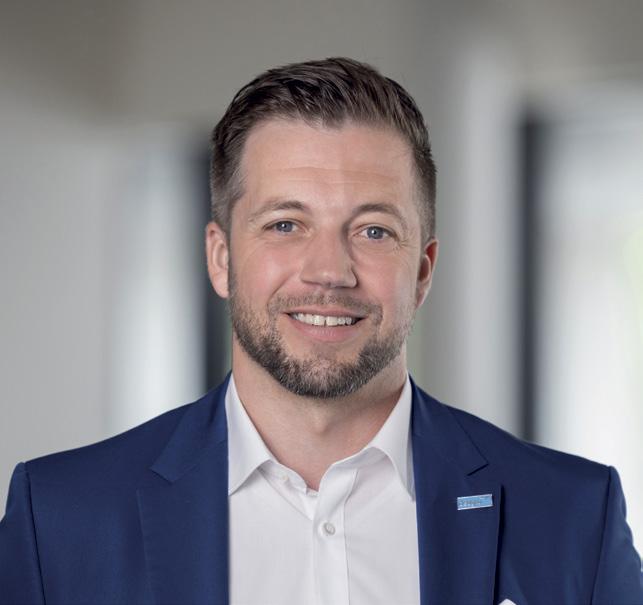
Designing the Future of Logistics

The company’s innovative spirit is highlighted by an initiative designing customized offshore wind supply vessels in partnership with Amasus and Siemens Gamesa. “This will set the scene for the new normal going forward,” Schulz said. “Our clients in particular expect innovative solutions which will contribute to reaching the COP26 goals.” This will, deugro said, set the benchmark for sustainable heavy-lift logistics, showcasing deugro’s commitment to shaping a greener future.
While deugro is driving sustainability, both Arndt and Schulz emphasized that the journey isn’t one traveled alone. “It’s all our duty in the end to make our contribution, but in the end, it needs to be also driven by governments and international institutions,” Schulz said.
The pair stressed the importance of collective effort and setting industry standards that align with a sustainable future, acknowledging that it is “our duty” to find solutions and to offer different options to deugro’s clients.
Carly Fields has reported on the shipping industry for the past 23 years, covering bunkers and broking and much in between.
ELME was founded in 1974. As the leading independent manufacturer of spreaders, we always aim to be at the forefront of development.
818 INNOVATION WTP is one of several examples that we are true to our roots.

Visit us at Breakbulk, September 26-28, at stand M21.


98 Breakbulk Magazine Issue 5 2023 breakbulk.com Europe
Christian Schulz
2023
.. OUR HERITAGE IS DILIGENCE AND THOROUGHNESS
1873
FROM OUR DEEPEST ROOTS OF SMÅLAND...
2073
WE ARE IN TUNE WITH WHAT THE FUTURE WILL PRESENT
www.elme.com
Breakbulk Events & Media’s biweekly BreakbulkONE newsletter keeps the industry connected between Breakbulk events in Dubai, Rotterdam and Houston. Here’s a selection of recent subscriber favorites. Subscribe at https://breakbulk.com/page/one
DEUGRO MOVES 263,300 FRT FOR URUGUAY PULP PROJECT
deugro has delivered 263,300 freight tons of cargo for a greenfield eucalyptus pulp mill in Central Uruguay, a move that smashed records for the highest, widest and heaviest components ever transported on Uruguayan roads.
The “mega-project” Taurus carried out for client UPM included the shipment of 8,000 containers and 174 oversized heavy-lift, or OSHL, components, and involved one of the most complex overland transportation concepts ever planned by deugro Group.
The heaviest piece transported to the Paso de los Toros mill – which
was brought online in April – was a steam drum weighing 279 tons.
The overall project including planning and execution took threeand-a-half years, and was handled by deugro China, Finland, Germany and Uruguay with support from sister company, dteq Transport Engineering Solutions.
“The combination of deugro Finland’s industry knowledge, the local experience of deugro in South America and the technical excellence from dteq led to the successful project execution,” said Mark Hollenstein, president of deugro South and Central America. “The involvement from deugro
offices in China and Germany, which locally coordinated the cargo shipped via Hamburg and various Chinese ports, ensured smooth execution.”
The pulp mill’s equipment was shipped from various global locations to capital city Montevideo, while the OSHL units were unloaded at Fray Bentos, the site of UPM’s existing pulp mill.
The oversized cargo was transported 230 kilometers by road to the Paso de los Toros site. This section of the move called for the construction of 28 bypasses and new high-tension cable line masts, the removal or adjustment of 1,106 traffic signs and poles and 59 overhead obstacles, and the strengthening of 23 culverts.
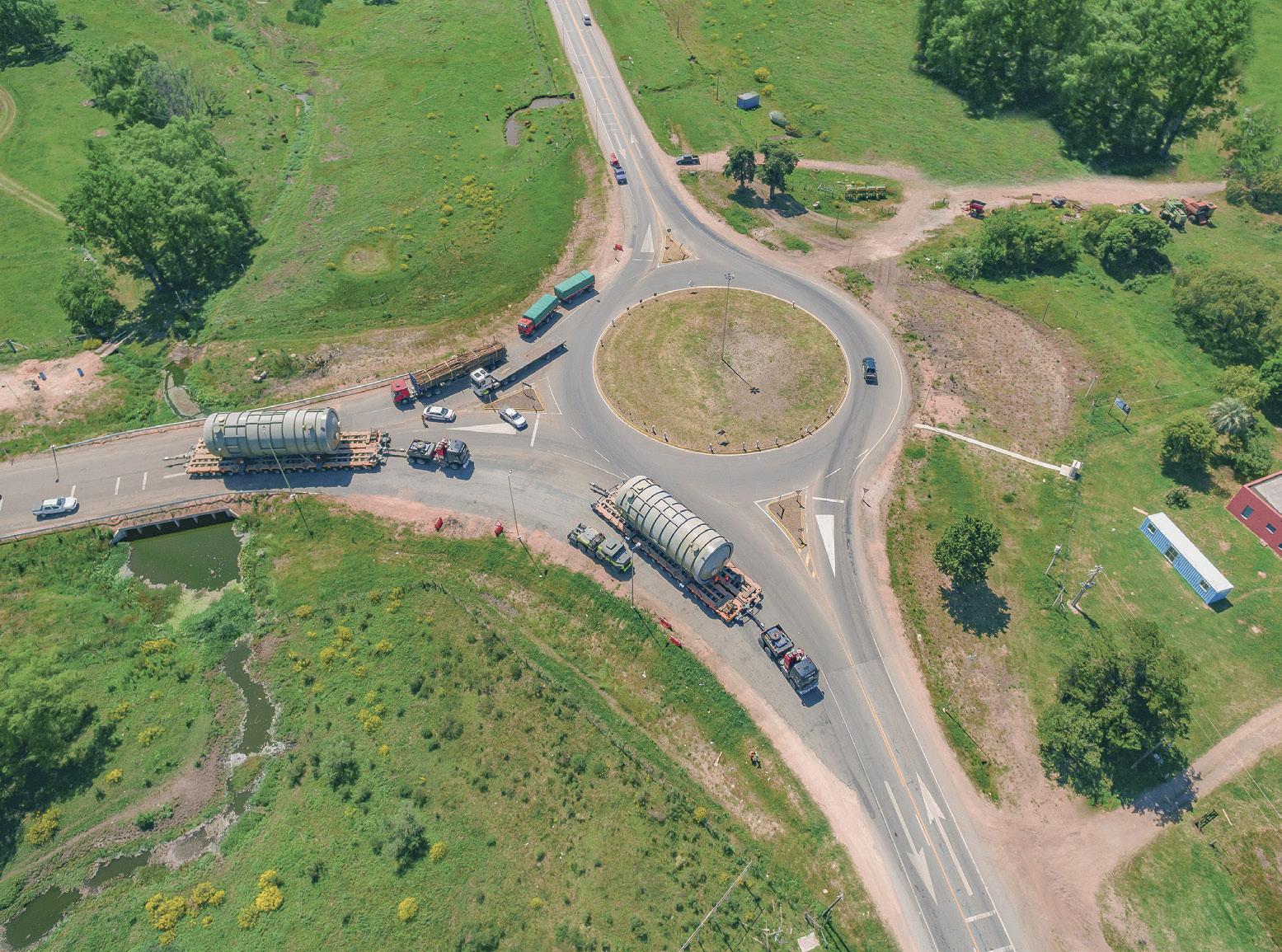
The main challenge, deugro said, was bypassing a dam, which was done by developing a customized heavy-lift ferry concept with a modular barge. The barge was deployed some 700 times to ship all the project cargo from one side of the dam to the other.
“Our tailor-made barge design was the solution that finally led to obtaining the go-ahead for the whole project, as the dam at Baygorria built the critical link of the entire transportation,” said Franklin Alvarez, regional director transport engineering Americas at dteq. “We designed a modular self-propelled barge fitting the specific needs of the project. It is capable of performing roll-on and roll-off operations and is constructed of interlocking pontoons.” deugro is a regular exhibitor at Breakbulk Europe.
99 Breakbulk Magazine Issue 5 2023 breakbulk.com
deugro transports OSHL units 230 kilometers by road to Paso de los Toros.
Credit: deugro Group
BERTLING, CLEMENGER FORM JOINT VENTURE IN AUSTRALIA
Bertling Logistics has joined forces with Clemenger International Freight to form a new joint venture in Australia.

The Perth-headquartered company, Clemenger Bertling Projects, will focus on new and existing business opportunities in Australia’s flourishing energy, mining and construction sectors, and will be headed by General Manager Chris Nicholson.
The JV, which began operations on July 1, will also boast offices in Melbourne, Sydney and Brisbane, as well as a network of partners and suppliers throughout Australia.
“Australia has always been an important market for Bertling Logistics, and our global team is passionate about all the new business opportunities arising in the country,” said Colin MacIsaac, CEO of Bertling Logistics.
“Clemenger’s skilled team, high-
quality services and wide-spread local network are well-known within Australia. We are convinced that our new JV will obtain a leading position in the Australian logistics market and that we will be ideally positioned to adequately respond to and serve the logistics need arising from the ongoing energy transition.”
Bertling and Clemenger have worked together in Australia for several years and as agency partners since 2015. Clemenger, which focuses on general freight forwarding and in-house customs clearance services in Australia, will contribute its varied local logistics expertise, partner network, and access to modern transport vehicles and equipment.
Bertling meanwhile will bring its global office and supplier network, a modern IT infrastructure, and varied project expertise in Australia and
neighboring countries, such as Singapore, China, Malaysia, and Indonesia.
According to Bertling, of special value will be the JV’s in-house customs consultancy and clearance services, which will enable the company to offer door-to-door service, advice, and documentation services to their local and global client base.
“We are proud to have in Bertling Logistics a loyal partner to add value and broaden our local service offering in Australia and to diversify our portfolio,” said Michael Clemenger, managing director of Clemenger.
“We know their dedication, goanywhere approach and high-quality transport engineering know-how very well from our long-term collaboration and look forward to consolidating both companies’ competencies under one roof from now on.”
BBOne 100 Breakbulk Magazine Issue 5 2023 breakbulk.com
Credit: Bertling Logistics
PAULSBORO TERMINAL HANDLES GIANT MONOPILES
the 1.1-GW Ocean-1 Offshore Wind Project off the U.S. East Coast.
Paulsboro on the Delaware River is part of the South Jersey Port Corporation, or SJPC.
The monopiles, the most common type of foundation used for offshore wind turbines, will be manufactured by Germany’s EEW Group and shipped to the Paulsboro facility from Rostock in Germany.
The units will be welded and coated at Paulsboro before deployment to Ocean-1.
A stevedoring agreement is in place between EEW and Paulsboro Waterfront Development, a division of
terminal operator Holt Logistics.
“98 monopiles will be installed for Ocean Wind-1. Each fully assembled monopile weighs approximately 1,500 tons and is almost 500 feet long,” Brendan Dugan, assistant executive director and CCO at SJPC, told Breakbulk

SJPC is building a US$250 million monopile construction facility at Paulsboro that will supply projects all along the U.S. eastern seaboard.
EEW will eventually be able to manufacture the monopiles at the terminal.
According to Dugan, the Paulsboro facility is the only location in the U.S. where monopiles will be manufactured, giving it “first mover” advantage as a key hub for manufacturing and
supplying monopiles to the offshore wind industry in North America.
The project’s first phase is up and running, which includes a welding building where shipped monopile segments are welded together and a coating facility where protective coating is applied.
“Site preparation for the second phase has begun, which will enable EEW to fully manufacture the monopiles in Paulsboro without requiring the import of segments from Germany for assembly,” Dugan said.
South Jersey Port’s international seaport facilities – which also include the breakbulk-handling terminals of Balzano and Broadway – are a gateway for more than four million tons of cargo every year.
BBOne 101 Breakbulk Magazine Issue 5 2023 breakbulk.com
The Paulsboro Marine Terminal in the U.S. state of New Jersey is to handle 98 monopiles destined for
Monopiles arrive at Paulsboro Marine Terminal, April 2023
Opportunities
PROJECTS IN THIS ISSUE
Project: Lightsource bp Solar PV (pages 36-38)
Country: Trinidad & Tobago
Sector: Renewables
Developer(s): Shell, bp, Lightsource bp
Project: Manatee gas development (pages 36-38)
Country: Trinidad & Tobago
Sector: Natural Gas
Developer(s): Shell
Project: Whiptail offshore oil and gas field (pages 36-38)
Country: Guyana
Sector: Oil & Gas
Developer(s): ExxonMobil and partners
Project: Rio Grande LNG (pages 57-58)
Country: U.S.
Sector: LNG
Developer(s): NextDecade
Project: Port Arthur LNG (pages 57-58)
Country: U.S.
Sector: LNG
Developer(s): Sempra
Project: Lake Charles LNG (pages 57-58)
Country: U.S.
Sector: LNG
Developer(s): Energy Transfer
Project: Delfin LNG (pages 57-58)
Country: U.S.
Sector: LNG
Developer(s): Delfin LNG
Project: Driftwood LNG (pages 57-58)
Country: U.S.
Sector: LNG
Developer(s): Tellurian
Project: Bahia Blanca LNG terminal (pages 59-62)
Country: Argentina
Sector: LNG
Developer(s): YPF, Petronas
Project: Trapial shale block (pages 59-62)
Country: Argentina
Sector: Oil & Gas
Developer(s): Chevron
Project: Rota 3 Pipeline (pages 59-62)
Country: Brazil
Sector: Oil & Gas (midstream)
Developer(s): Petrobras
Project: Bulo Bulo ammonia and urea plant (pages 59-62)
Country: Bolivia
Sector: Fertilizers
Developer(s): YPFB
Project: Mozambique LNG project (pages 84-87)
Country: Mozambique
Sector: LNG
Developer(s): TotalEnergies
Project: Rovuma LNG project (pages 84-87)
Country: Mozambique
Sector: LNG
Developer: Eni, ExxonMobil, partners
Project: North Field East / South LNG expansion project (pages 88-90)
Country: Qatar
Sector: LNG
Developer(s): Qatar Energy
Project: Paso de los Toros greenfield eucalyptus pulp mill (page 99)
Country: Uruguay
Sector: Pulp & Paper
Developer(s): UPM
Project: Ocean-1 Offshore Wind Farm (page 101)
Country: U.S.
Sector: Renewables
Developer(s): Ørsted
102 Breakbulk Magazine Issue 5 2023 breakbulk.com

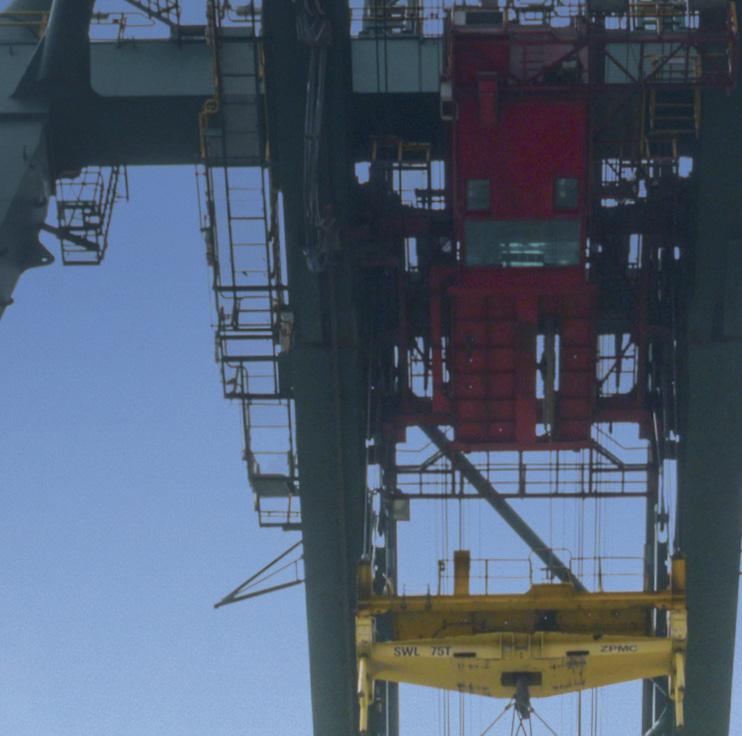
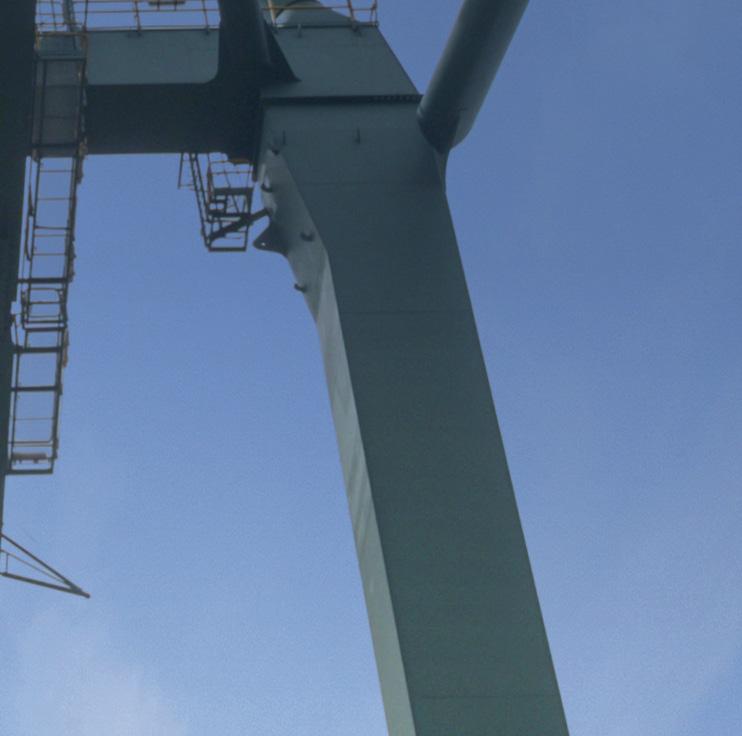


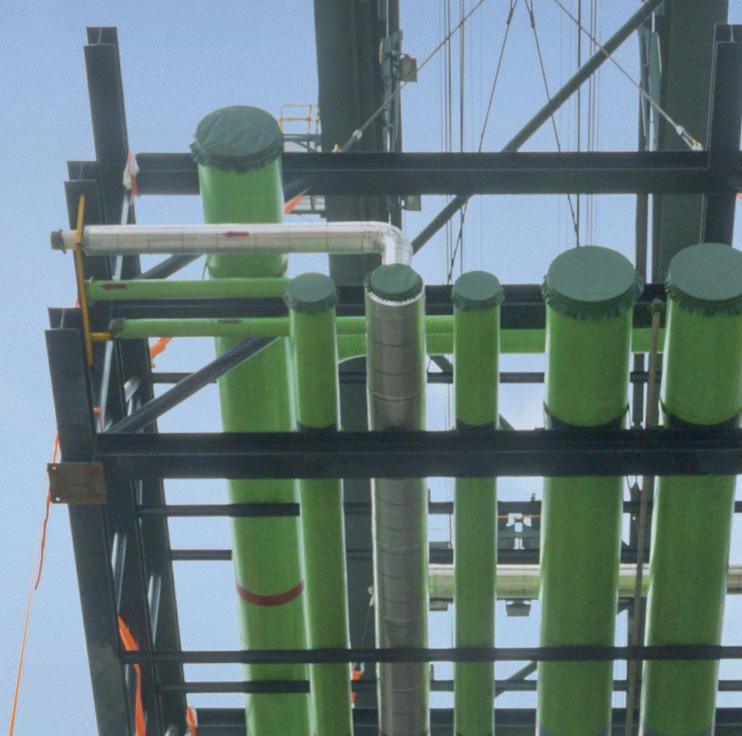



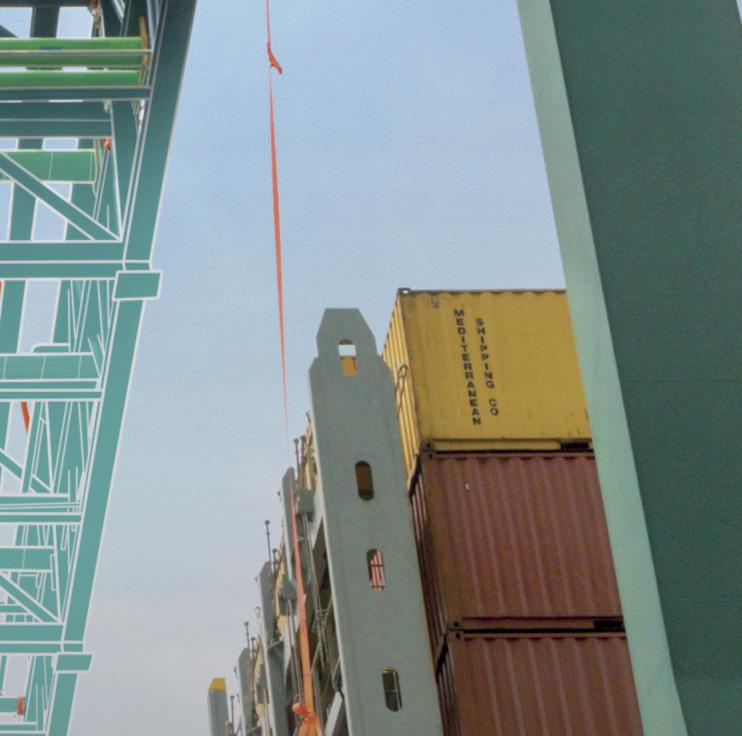

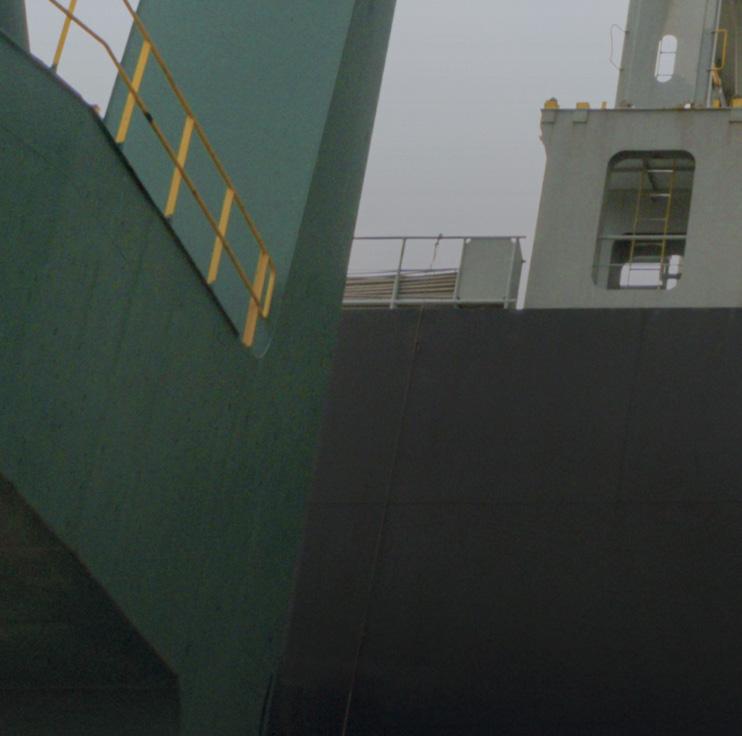
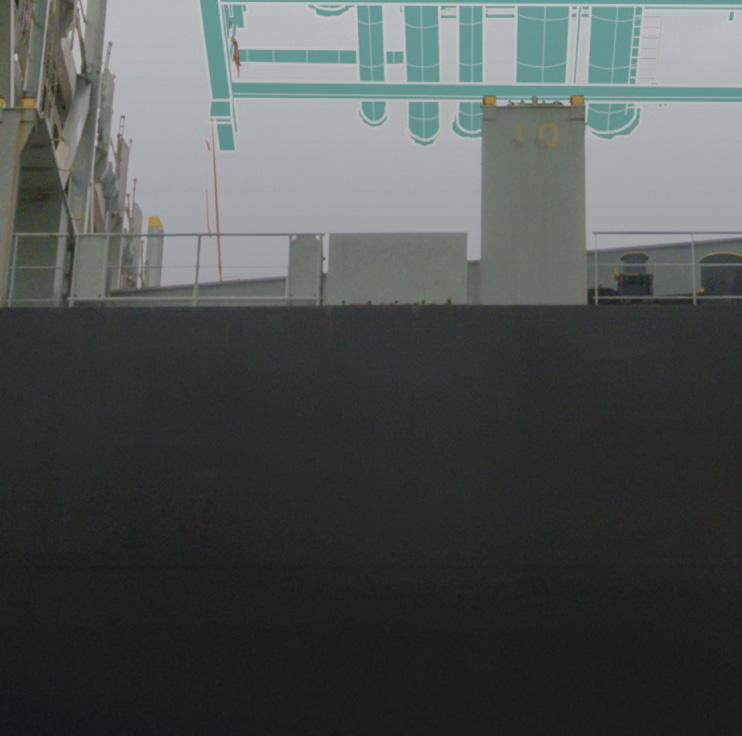
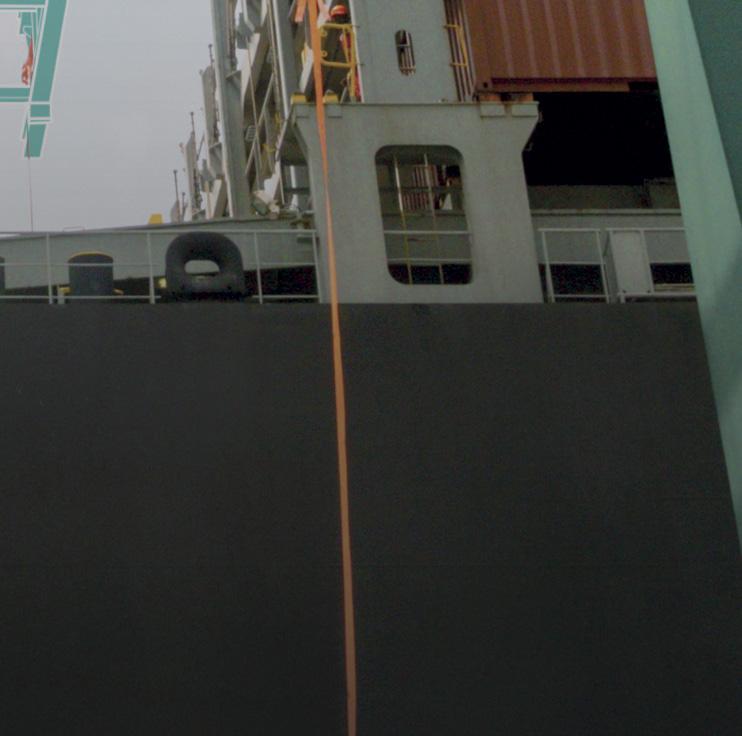
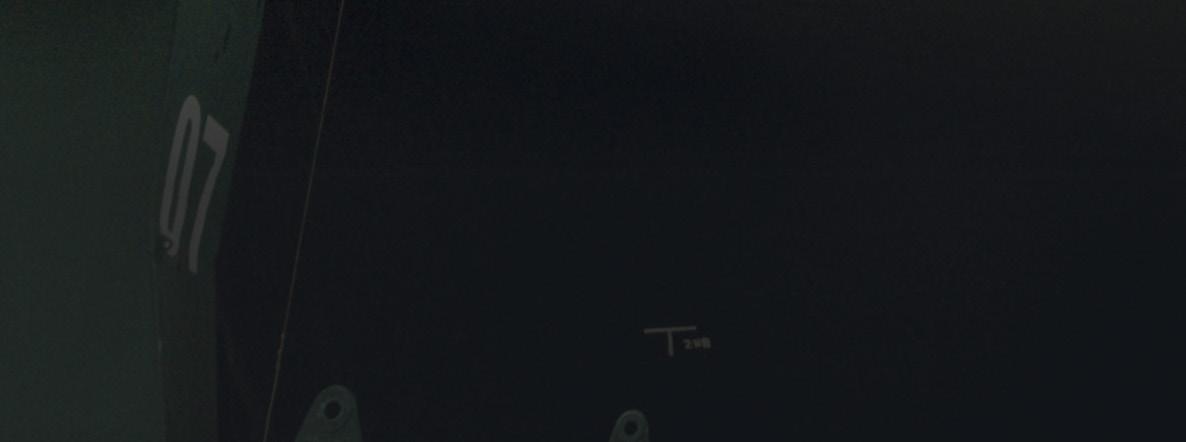
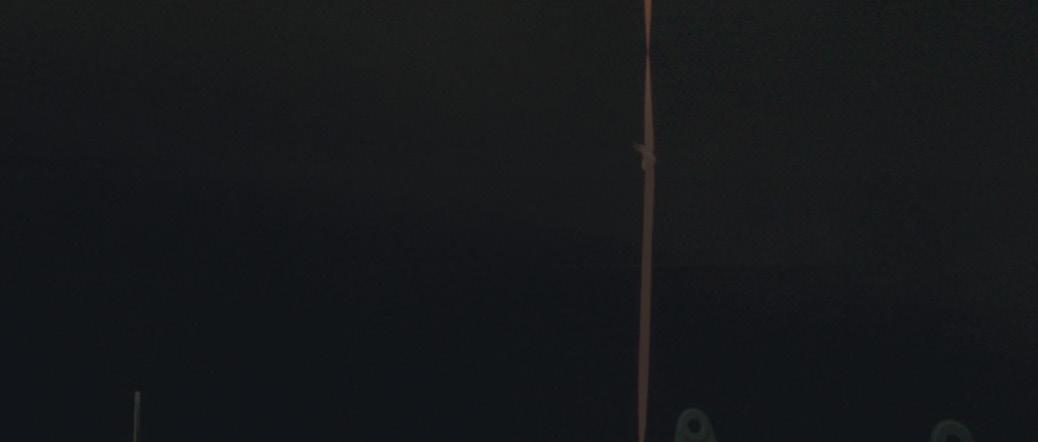
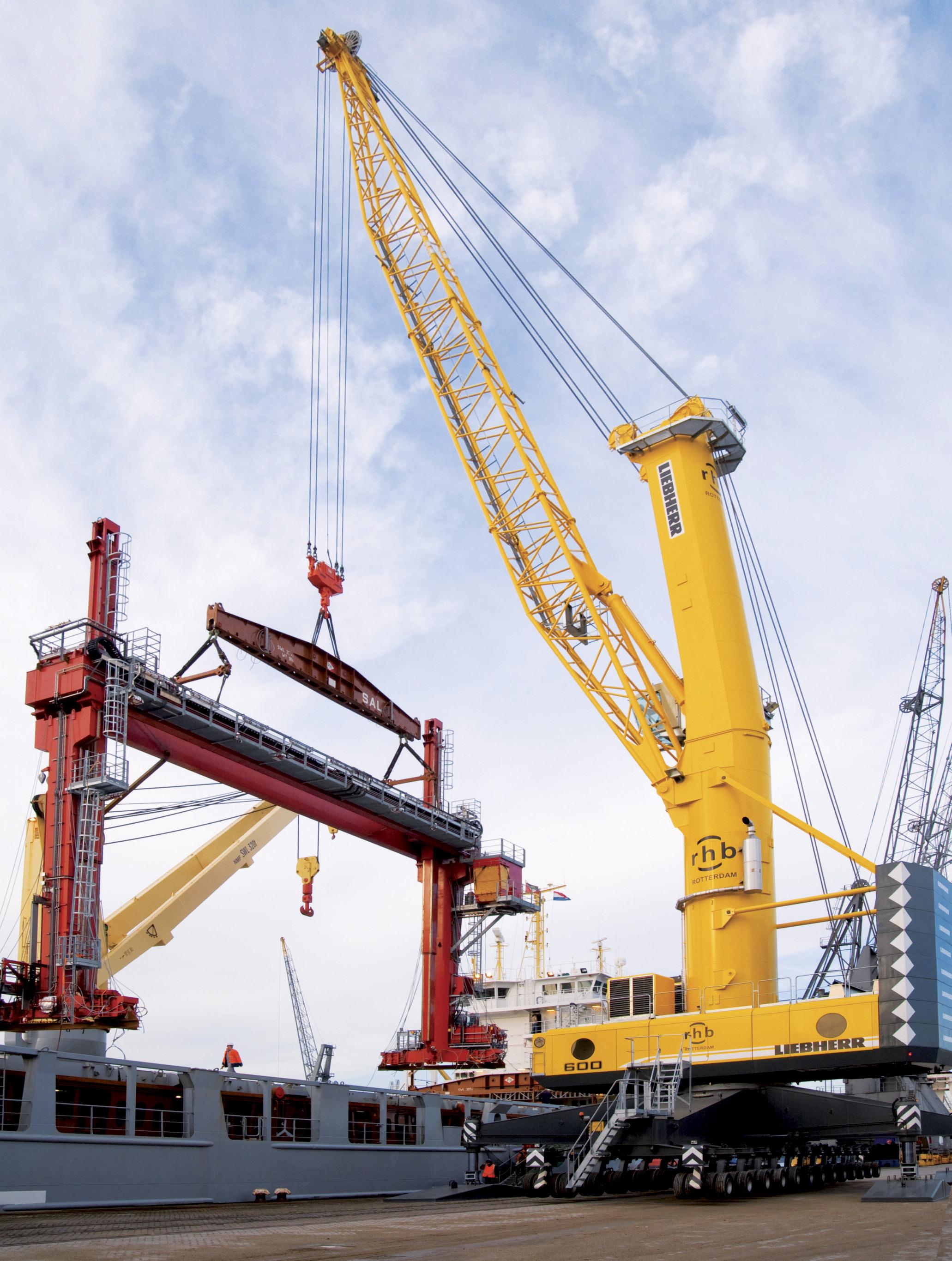



































 Breakbulk Americas
Event Director
Breakbulk Americas
Event Director





 Departures
Chris Nicholson
Stefanie SchöttleChristiansen
Max Sauberschwarz
Departures
Chris Nicholson
Stefanie SchöttleChristiansen
Max Sauberschwarz



















 Photo Contest WINNER Contractors Cargo Company (CCC)
Photo Contest WINNER Contractors Cargo Company (CCC)





















 The State of New Jersey is building a Wind Port near to Paulsboro Marine Terminal.
Credit: South Jersey Ports
The State of New Jersey is building a Wind Port near to Paulsboro Marine Terminal.
Credit: South Jersey Ports








 By Iain MacIntyre
By Iain MacIntyre
















 By Felicity Landon
By Felicity Landon













 By Jeremy Bowden
By Jeremy Bowden
































 By Liesl Venter
By Liesl Venter







 By John Bensalhia
By John Bensalhia




























